.webp)

Gaumukh Tapovan Trek
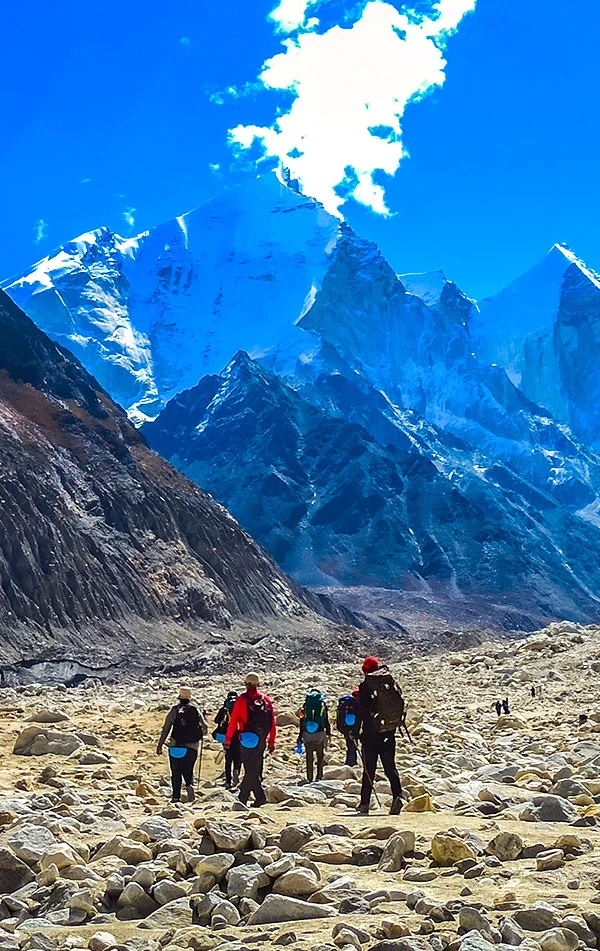
Uttarakhand |
Trek Update: Our Gaumukh Tapovan batch is all set to embark on an incredible journey! We've completed the site recce, and everything is perfectly organized. If you've already booked with us, get ready for a lifetime experience. For those who haven't booked yet, spots are still available. Secure yours now! click here to know more.

Uttarakhand | India
Max Altitude
Trekking Km
Moderate to Difficult
Get in Touch with Our Trek Expert
16400 /person $ /person.
- September-2024
- October-2024
- +5% GST (goods and services tax)
- Services Gangotri to Gangotri.
- Meeting Point ( Pickup/ Drop Point ): Prince Chowk , Dehradun (If transportation opted from TTH)
- Reporting Time : 6:00 am
- Drop Time : 6:30 pm to 7:30 pm (Timings are subject to change based on weather and road conditions).
- Please reach Dehradun a day before to avoid any delays.
Insurance 280
- Insurance is mandatory.
- Non-Indian rates are slightly higher. The trek coordinator will provide a balance payment link post-booking.
- Get insurance through us or elsewhere. If not through us, email for a refund after booking.
- Cancellation 4 or more days before the start of the trip results in a 100% cash refund.
- Cancellation less than 4 days from the start of the trip results in no refund.
Transport 2500
- Transportation Dehradun to Gangotri & return is optional.
- Choose add-ons during booking. If missed, log in and add them later.
- Book transportation at least 10 days before the trek.
- Cancellation less than 4 days from the start of the trip results in a 50% cash refund.
- Cancellation after the trip date does not qualify for a refund.
Offload 2100
- Backpack offload is optional.
- Book off-load at least 10 days before the trek.
- For offline bookings at the base camp, a convenience fee of Rs. 2900 applies.
- Cancellations made before the trip date will receive a full refund.
5% GST will be applicable on Add-ons
For more information. Please complete this form.
Trek Name: Gaumukh Tapovan Trek
Adventure Type: Trekking
Base Camp: Gangotri
Season: Summer | Autumn |
Month: May | June | September | October |
Country: India
Altitude: 14600 Ft.
Grade: Moderate to Difficult
Rail Head: Dehradun
Stay: Camping (Twin sharing) & Hotel/Guesthouse : triple, quad, dormitory (separate for male and female)
Food: Meals while on trek & at Hotel/Guesthouse (Veg)
Location: Uttarakhand
Distance: 46 Km.
Trail Type: Point to point trail | Camping at the same location upon returning.
AirPort: Jolly Grant Airport, which is 28 km away from Dehradun
Why Gaumukh Tapovan Is a Must-Do Trek ?
- Experience the spiritual charm of Gangotri, where the sacred Ganges River begins amidst breathtaking mountains.
- Visit Gaumukh, the source of the Ganges River, where the Bhagirathi River flows out of an impressive ice cave. An unforgettable and spiritual sight.
- Pass through the Blue Pine, Bhojpatra trees area, line on one side, and witness the rugged rocky path and mountain on the other.
- Throughout the trek, enjoy the graceful flow of the river Bhagirathi.
- Explore the vast high-altitude meadows of Tapovan, known for grasslands, grazing mountain goats, and a serene environment perfect for meditation and reflection.
- Marvel at the sight of Mt. Shivling, often considered one of the most beautiful mountains in the world.
- Navigate through rocky paths, boulder fields, and glacier sections and enjoy a varied and engaging hiking experience.
- Take in breathtaking views of the famous Himalayan peaks, including the Bhagirathi - I, II, III, Mt. Meru, and the grand Mt. Shivling, all surrounding you in the grand landscape.
- Spot blue sheep, mountain goats, various rare Himalayan birds, and vibrant alpine flowers along the way.
- Experience the thrill of crossing glacial streams and rivers, and feel the essence of truly being in the Himalayas.
Gaumukh Tapovan: A Trek of Sacred Myths and Majestic Beauty
There’s a certain magic in the Himalayas that draws you in, a pull that goes beyond the towering peaks and deep valleys. One such journey that encapsulates this is the Gaumukh Tapovan Trek . The trek is that siren call that promises not just adventure, but a deeper connection with nature and self. Located in the Garhwal region of Uttarakhand, Gaumukh , the snout of the Gangotri Glacier, serves as the origin of the Bhagirathi River, which eventually merges to form the sacred Ganges. Surrounded by the towering peaks of Shivling, Bhagirathi, and Meru, this region is not just a revered pilgrimage site but also a trekker’s paradise.
What Sets the Gaumukh Tapovan Trek Apart?
The Gaumukh Tapovan trek is that captivating adventure that takes you deep into the Indian Himalayas. Blending the spiritual significance, natural beauty, and thrilling high-altitude trekking. The trek stands out for its remarkable combination of stunning landscapes and profound spiritual aura. It’s a journey that begins in the sacred town of Gangotri, where the river Bhagirathi flows, and leads to the majestic Gaumukh Glacier and Tapovan, where every rock, every whisper of the wind, and every sight of the snow-capped peaks carries the weight of ancient legends and spiritual significance.
The trail quickly pulls you into a world of Blue Pine trees that gives Chirbasa its name. Walking under the green canopy, there is a sense of calm wash over. On one side, the pines stretch endlessly, while on the other side, the landscape shifts to barren, rugged mountains that feel stark in contrast. But what truly catches the eye is the Bhagirathi River flowing gracefully between these contrasting worlds. Its clear waters sparkle in the sunlight, weaving through the valley and creating a scene that feels straight out of a beautifully illustrated book. You may find yourself pausing often, just to take it all in. The lush pines, the raw mountains, and the ever-present river, all come together in a perfect, serene harmony that feels almost magical.
The journey leads to Bhojwasa, the place where you will see many Bhojpatra trees and hence this place is called Bhojawasa. There is a gradual ascend in the trek. On this trail, you might witness some landslides and beautiful Blue sheep. The sheep are only found in the native region. As you make your way to Gomukh, the source of the Ganges, the immense ice and rock looms before you. This is the birthplace of a river that has sustained millions for centuries, a sacred flow that carries with it the stories and prayers of countless souls. Standing there, you can’t help but feel a profound connection to the ancient and the eternal. Continuing towards Tapovan, the landscape begins rocky, rugged paths that give way to vast, grassy meadows. Tapovan, with its sweeping views of the Shivling, Bhagirathi, and Meru peaks, is like a hidden paradise. The beauty is almost overwhelming. It is here, surrounded by the strength of the mountains, that you find a deep peace unlike any you have experienced before.
Major Attractions and Stopovers
- Gangotri: The starting point of the trek, Gangotri is a bustling pilgrimage town home to the famous Gangotri Temple dedicated to Goddess Ganga. It’s a place where you can soak in the spiritual atmosphere and explore the ancient traditions tied to the river Ganges.
- Chirbasa: Named for its abundant Blue Pine trees, Chirbasa is the first major stop along the trek. It covers the stunning views of the Bhagirathi River and surrounding pine forests, creating a serene backdrop for trekkers.
- Bhojwasa: The next stop is Bhojwasa, a barren but beautiful area named after the Bhojpatra trees that flourish here. With its open skies and the Bhagirathi River flowing nearby, is a peaceful spot to rest and acclimatize before heading towards Gaumukh.
- Gaumukh: Reaching the Gaumukh Glacier is a profound moment on the trek. Standing at the snout of the glacier, you’ll witness the Bhagirathi River emerging from the ice, marking the sacred beginning of the Ganges. Truly the essence of the moment.
- Tapovan: Tapovan, a high-altitude meadow at the base of Mount Shivling, is renowned for its serene beauty and stunning views of the surrounding peaks. This peaceful spot serves as a meditative retreat for many. It’s a place where you can feel the spiritual energy that has drawn sages and seekers for centuries.
- Shivling Peak: One of the most iconic and visually striking peaks in the Himalayas, Shivling stands tall with its pyramid-like shape piercing the sky. Mt. Shivling is often described as one of the most beautiful mountains in the world. Its presence dominates the landscape at Tapovan and is a favourite among trekkers and photographers alike.
Mythology and Stories Behind Gaumukh Tapovan
Beyond the stunning beauty and formidable heights, the Himalayas are steeped in layers of mysticism, spirituality, and tales that have been passed down through generations. The Gaumukh Tapovan trek is not just about stunning landscapes and trails; it’s also a journey into the rich Hindu mythology. The glacier at Gaumukh, shaped like a cow's mouth, marks the sacred source of the Ganges River, known as the Bhagirathi at this point.
According to ancient legends, King Bhagirath performed intense penance to bring the river Ganga down to earth to purify the ashes of his ancestors. Moved by his devotion, Goddess Ganga agreed to descend but warned that her powerful flow could devastate the earth. To mitigate her force, Lord Shiva caught Ganga in his matted locks, allowing her to flow gently from the heavens, thus beginning her journey at Gaumukh.
This divine descent of Ganga symbolises purification, redemption, and the unending flow of life. Pilgrims believe that the waters of Gaumukh carry a powerful spiritual energy which makes this trek not just a physical journey, but a spiritual pilgrimage to the very origins of the holy Ganges.
The trek invites you to pause, reflect, and connect with something far greater than yourself. It is a reminder that the Himalayas are not just mountains. They’re keepers of ancient stories, spiritual sanctuaries, and timeless beauty waiting to be explored.
- Who can Participate
- Important Links
- How to Reach
- Trek Essential
Who Can Participate
- Age; 14 years +.
- First timers can apply; previous trekking experience is more appreciated.
- The climber must be fit and have sufficient stamina to cover 5 km of distance in 30 minutes without stress.
- The climber should be able to carry a 10-15 kg backpack.
Special Offer
- Make a single payment and trek the number of times you want.
- If you book a trek with Trek The Himalayas and cannot complete it, or if you've successfully completed the trek and wish to do it again, you can repeat it multiple times at no additional cost.
Terms and conditions
- This offer is non-transferable.
- This offer is valid for Trek The Himalayas limited fixed departures.
- This offer is valid for 5 years from the date of booking.
- This offer is not valid if the participant has received a cash refund or voucher at the time of cancellation.
- Participants don’t have to pay for the trek cost but have to pay for transportation and trek permit costs.
To reserve a spot for a trek or adventure program, you can either utilize our online booking form or call us at the provided number. For your confirmation, a deposit must be wired, including the initial payment.
Dehradun To Gangotri
- Altitude: 3,100 m/ 10,200 ft.
- Pick-up time: Prince Chowk, Dehradun | 6 am. (If transportation opted from TTH)
- Drive distance: 250 km (8-9 hrs).
- The local market and network are available.
- Stay in guesthouse.
- Route: Dehradun - Mussorie - Dhanulti - Chamba - Uttarkashi - Harshil - Gangotri.
Note: We will pick you up at 6 am from the Prince Chowk.(If transportation opted from TTH)
Get all set to begin the journey from Dehradun in the morning at 6 am. The day will be longer as you will cover 250 km to Gangotri. It will be a wonderful 8-9 hour ride along the mighty mountains. We start early in the morning so that we can reach Gangotri by evening.
Located at only 35 km from Dehradun, the first major attraction will be Mussorie, the famous hill station. The Hill station offers majestic sights of the Shivalik Ranges. After breakfast and a bit of sightseeing through Dhanulti, Chamba, you will arrive at the land of Gods, Uttarkashi.
Uttarkashi, the ‘Kashi of the north’ lies on the banks of river Bhagirathi and is home to the renowned Kashi Vishwanath temple. It is a picturesque town where you will see all the temples and religious people around, making you believe that you truly are in the land of Gods. The river Bhagirathi takes you to the scenic Harshil village. Harshil is known for apple orchards everywhere giving a retreat to your eyes. Harshil is the best place to enjoy the serene evening amidst the mountains.
Even after a long ride to Gangotri, you would wish it wouldn’t end. Gangotri is on the banks of river Bhagirathi, pervaded by pilgrims. You can roam in the local market, interact with local people, and share amazing pictures with your friends, because of the good network availability. During the night have a great homemade dinner and rest in the guest house.
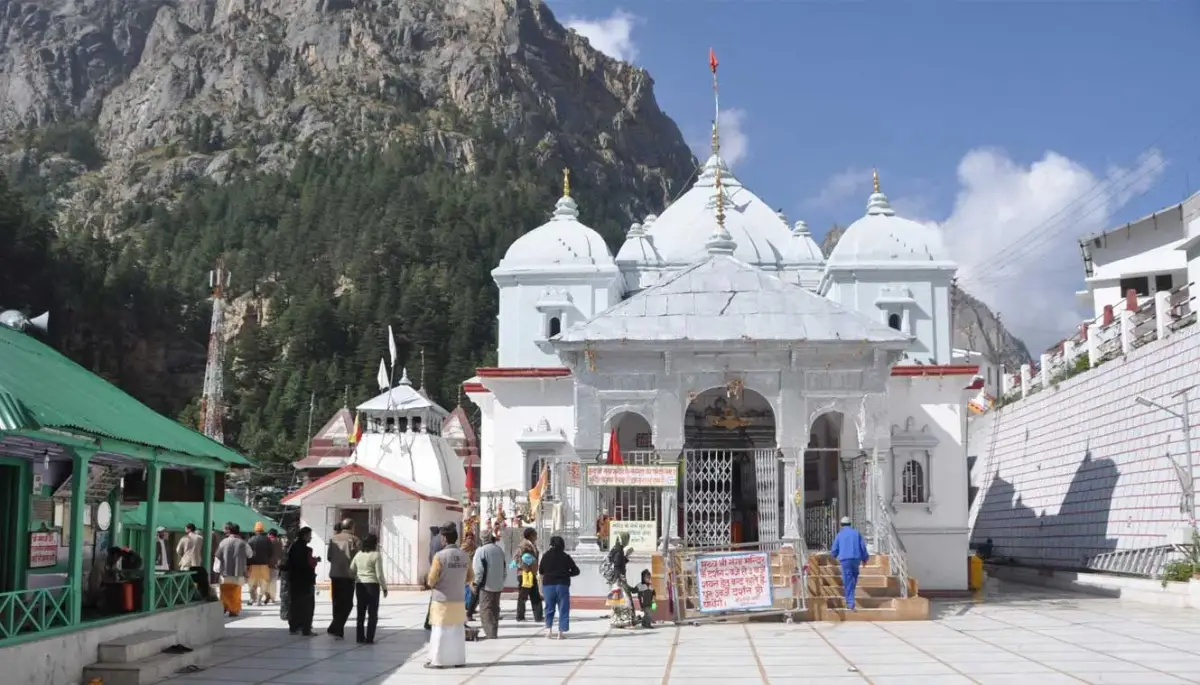
Acclimatization Day At Gangotri
Gangotri Temple - Gangotri is one of the Char Dhams of Uttarakhand.
- After breakfast visit Pandav Gufa, Bhagirath Shila, Surya, and Gauri Kund.
- Post lunch can visit Gangotri Temple or go shopping.
Acclimatization walk around Gangotri town.
Stay in the guesthouse.
Good morning in the holy land of Gangotri!
Have breakfast and enjoy the entire day just being alive in the religious vibes. The entire region brims with spiritual fervour and Gangotri is a heaven not just for spiritual seekers but also for adventure enthusiasts as well.
Now that you are at 10200 ft height, today is the day for acclimatization. Acclimatization is like a health supplement for your body to get used to the environment and low temperature. At TTH, we take acclimatization very seriously as it is one of the key contributors to the success of a trek. Take acclimatization walks around Gangotri in the evening. The Gangotri temple is the biggest temple that was built in the 18th century. Apart from that, you can visit the Bhagirath Shila, a holy rock where King Bhagirath worshipped Lord Shiva, and Pandava Gufa where Pandavas rested. Surya Kund and Gaurikund are two hot water springs that you can visit as well, Surya and Gauri Kund are both located on either side of an iron bridge near the temple.
You will see many foreigners meditating and roaming around. Spend the night in the guest house and get ready for the upcoming trek.
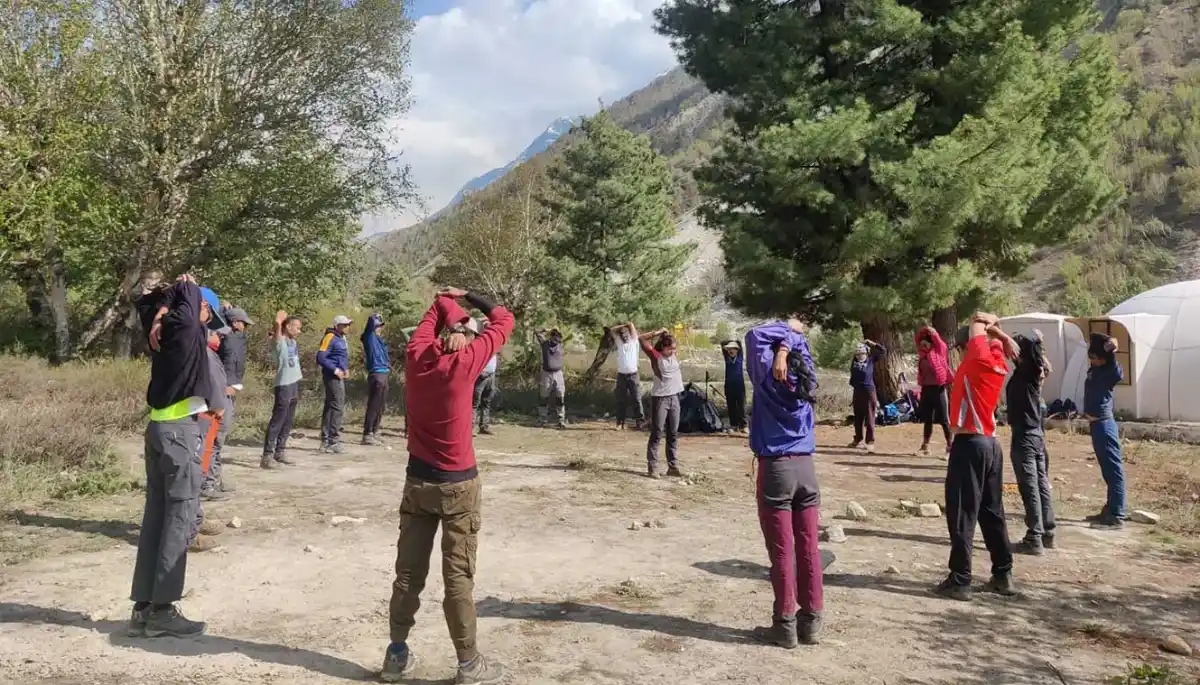
Gangotri To Chirbasa
- Altitude: 3,550 m/ 11,700 ft.
- Trek Distance: 9 km | 5 to 6 hrs.
Altitude Gain: 450 m/ 1,500 ft.
Entire trek in Gangotri National Park.
Accommodation in tent.
Hot lunch is served at the campsite.
Campsite under the pine forest.
Moderate level of gradual ascent.
Spring and manmade water points are available.
Evening acclimatization walk.
Have a full breakfast and take steps ahead to embark on the trek through the mountains. We start early from Gangotri and head towards the Chirbasa campsite. The trek starts from a forest check post and after getting your permits checked proceed on the trekking trail on the left side of the mountain. You will be walking through the pine forests alongside the gurgling Bhagirathi river. There will be gradual ascents but it will be an easy 4-5 hours trek. You will come across many waterfalls and natural streams where you can refill your bottles. Throughout the route, beautiful Sudarshan Parbat (21,345ft) will accompany you. The entire walk will be in the Gangotri National Park. Once you cross the third ridge on your trek, you will be greeted with a mesmerizing view of the valley. The fragrance of the blue pine and fir trees is enough to soothe your senses.
This will be the most scenic campsite, with the Bhagirathi river gushing on the right, lying in between the mountains under the pine trees. The campsite offers the first views of the Bhagirathi Sister peaks, Bhagirathi I, II, and III ( 6856 m, 6512 m, & 6454 m respectively) sharing space with Manda Peak, Bhrigu Parbat, etc. Far away you can also make out the Gaumukh Glacier.
Revive yourself by having lunch. Enjoy the blissful evening by the side of the Bhagirathi river, you can also take an acclimatization walk to explore the area. To make the day more adventurous you will be spending the night in tents. Of course, besides the flowing river, between the mountain peaks, under the pine trees…!!!
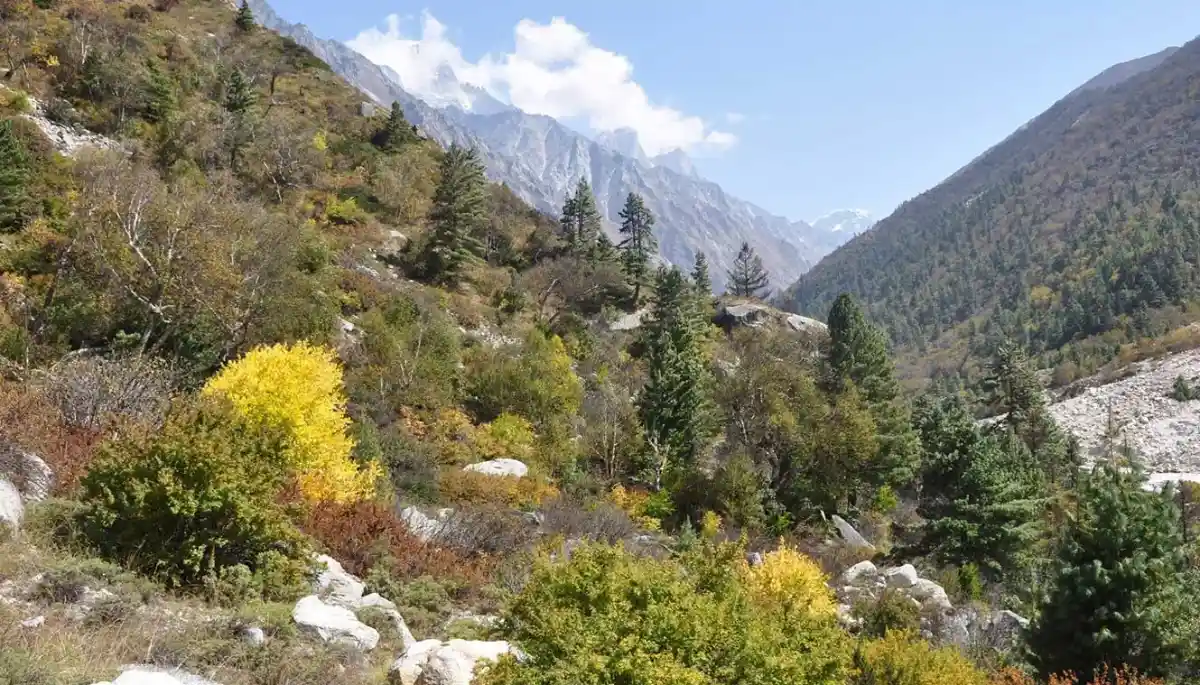
Chirbasa To Bhojwasa
- Altitude: 3,800 m/ 12,500 ft.
- Trek Distance: 5 km | Duration: 2 to 3 hrs.
Altitude Gain: 250 m/ 800 ft.
Accommodation in a tent.
Reach campsite for lunch.
Easiest day of the trek.
Moderate level gradual ascent.
Birch (Bhojpatra) forests in the area.
Ashram, police post (SRDF), and rest house available.
Mt. Bhagirathi massif view from the camp area.
After lunch, acclimatization walk in the surrounding areas.
Wake up with the stunning fluorescent views of sun rays on the mountain peaks, and get refreshed to trudge again. This will be the easiest 2-3 hours trek having a gradual ascent. The trail widens now with closer views of the Bhagirathi peaks. You will cross some landslide sections easier to walk upon. About 45 minutes into the walk you will reach the first ridge section and as you keep walking, the Bhagirathi group of peaks comes closer and closer. Soon you will reach a landslide-prone area filled with boulders and a stream running across your path. There will be another ridge after this point with about 8 to 9 landslide-prone bends, be mindful of falling rocks in this area. After the trek, you will see a bridge over a stream and a plain terrain where tents will be laid for you, this is Bhojwassa.
The name Bhojwasa came from Bhojpatra trees or the Birch trees, which are in abundance there. This is the widest part of the valley serving you the first view of Mount Shivling. You will find an ashram, police post, and a rest house, as well as some igloo-like houses. You can opt to stay in those houses but that requires permission.
Chill around in the noon after having lunch at the campsite. You can capture the splendid camping area, or you can walk 300 m above the Bhojwasa campsite from where you can get a striking view of the valley. Spend the cozy cold night in the tents.
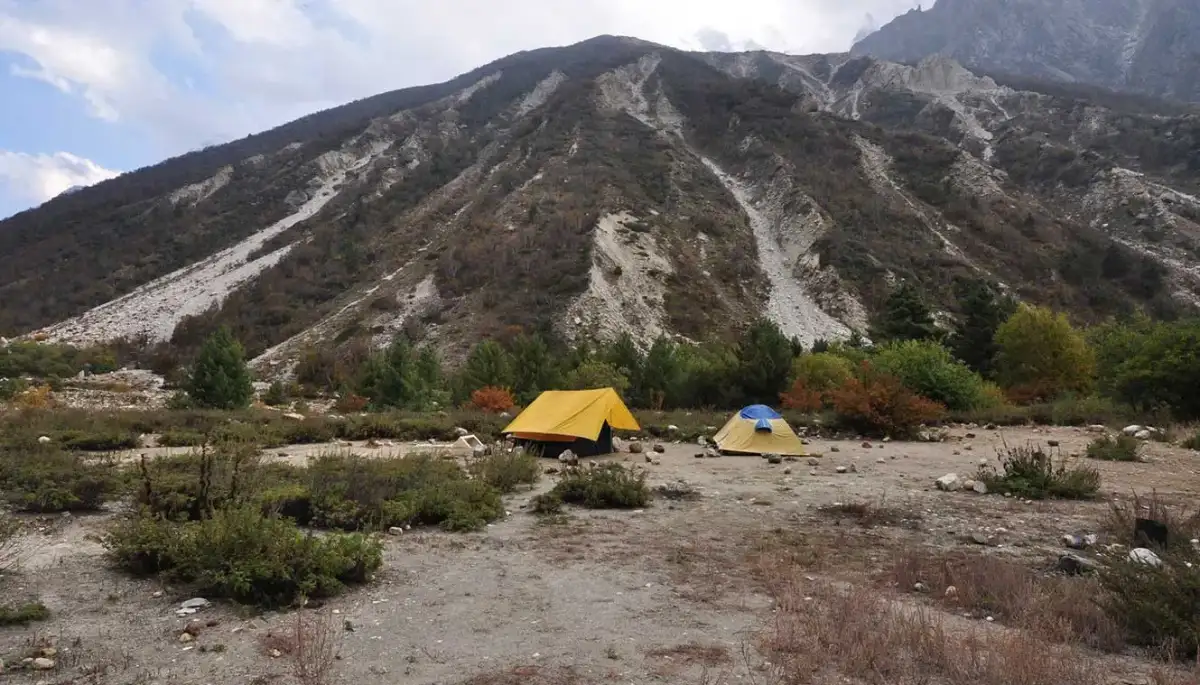
Bhojwasa To Tapovan
- Altitude: Tapovan - 4,450 m/ 14,600 ft.
- Trek Distance: 6 km| Duration: 7-8 hrs.
Altitude Gain: 650 m/ 2,100 ft.
Hot lunch/ packed lunch.
No water points, it is advisable to carry at least 2 litres of water.
A challenging day on the trek.
Carry energy bars, ors, and water.
Trek begins over rocky boulders and becomes noticeably steep gradually over the rocky terrain.
Cross the river by means of a trolley.
You might see mountain goat/ Ibex near your campsite.
Tapovan camp is surrounded by giants - Mt. Shivling, Meru, Manda, the Bhagirathi group, Kedar Dome, Kharchakund, and many more.
Today we will trek from Bhojwasa to Tapovan. It is a 6 km-long trek so eat full, get packed lunch, fill water bottles (there are no water sources on the route), carry energy bars, and lots of excitement.
To reach the Tapovan, we need to cross the river using a manually pulled trolley over the bridge. It is a unique experience and this method is often used as a method of river crossing in the mountains where there are no bridges in place. It takes about an hour for the entire batch to cross the river via a trolley so don’t be impatient.
After crossing the river, you will walk for about 2 km with rocks and stones on either side, this is also a potential rockfall-prone zone, so we will try to cross the area before lunchtime to avoid any potential rockfalls. After crossing this zone, you have to cross the Akash Ganga River. Look for spots from where you can cross the river and if the water flow is high then you will have to take your shoes off to cross the stream.
We will have lunch after crossing the river. Tapovan is a steep climb from here. After lunch, we will set out for the Tapovan campsite. It takes about 1.5 hr to reach Tapovan from this point. Once we reach the Tapovan meadows, we will find a suitable spot to pitch our camp for an overnight stay.
Tapovan is famous for the Sadhus who come here for meditation. It is also the base camp for the expeditions going to Mt. Shivling. It offers the direct, bigger sight of Mt. Shivling which is considered one of the most sacred and beautiful mountains. Do not miss the sight of Mt. Meru and Bhagirathi peaks. Pilgrims are not allowed to camp in Tapovan unless they have a permit.
After a gruelling trek, Tapovan serves as the perfect place for solitude. Here you will find mountain goats roaming around, just as you are, and a great view of the Gaumukh Glacier. End your strained yet memorable day by resting peacefully in tents.
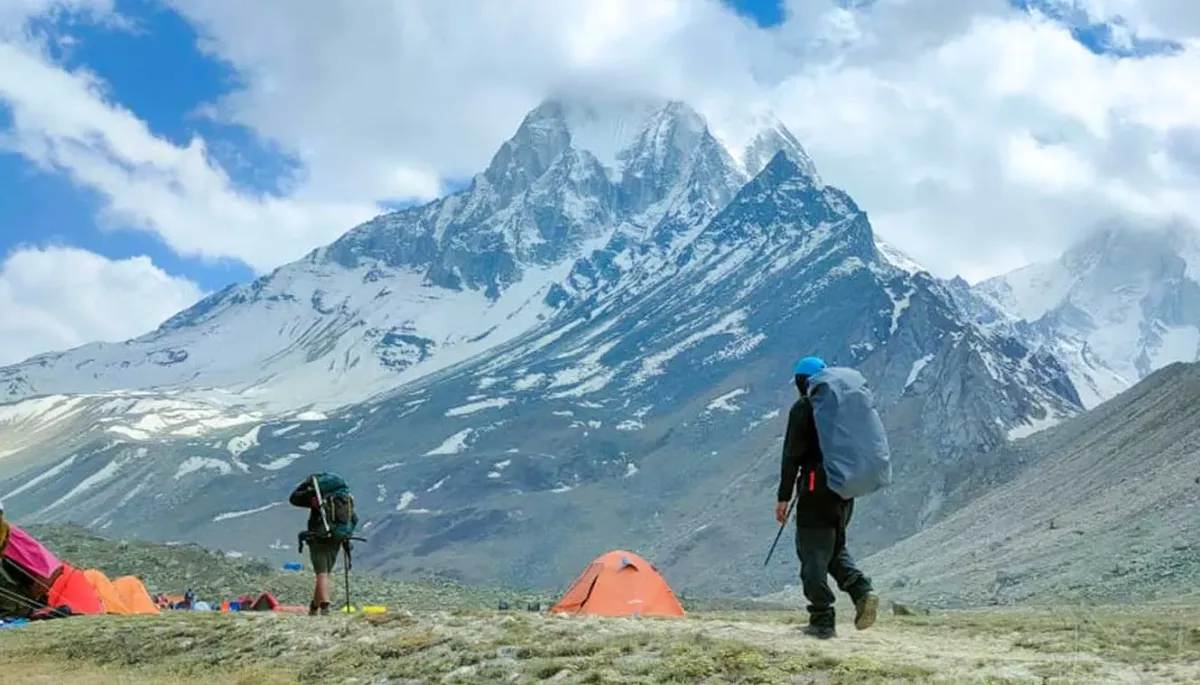
Tapovan To Bhojwasa via Gaumukh
- Altitude: Bhojwasa - 3,800 m/ 12, 500 ft.
Trek Distance: 10 km | Duration: 5-6 hrs.
Descend through moraine and glacier till Gaumukh.
Packed lunch.
Rise early to cherish the few last moments in front of legendary mountains that are shining in the bright sun's rays and get ready to visit the Gaumukh Glacier. Mt. Shivling looks prettier than ever before, passing its beauty to the adjacent peaks. Together they all make a spectacular sight. It is time to take these memories back after having breakfast. Carry a packed lunch and enough water as you did earlier because there are no water sources.
Yes, again you have to cross the rocky terrain and moraines of the glacier. Descending is more difficult than ascending they say, you will realize this now as you make your way around the boulders. Watch your steps and move gradually. Try to relive the moments while you retrace the steps. Enjoy the forested sections of Bhojwasa once again with its flora and fauna.
It is quite a steep descent to Gaumkuh and today you will get to see the behemoth glacier from up close. Gaumukh is the end of the Gangotri glacier and hence the source of the divine Ganges river. Gaumukh means cow’s mouth, it is believed the snout looked like a cow's mouth in past. Most religious people consider it a blessing to visit the Ganges. Even if you are not religious you will be astonished to see how huge the snout is and how small you are in front of it.
The legend has it that once there was a powerful king named Sagar, who wished to perform the Ashwamedh Yajna with a ceremonial sacrifice horse. Fearing that Sagar will complete the Yajna, Lord Indra took the horse and tied it to the ashram of Lord Kapila where he used to meditate. Sagar sent out 60,000 of his sons to bring back the horse and when they were creating chaos in Kapila Muni’s ashram, his meditation got disrupted and he turned all of the 60000 sons to ashes and cursed that they would attain Moksha only if their ashes are washed in the water of the holy River Ganga, who then resided in heaven. All of Sagar's ancestors failed to please Brahma to bring Ganga to Earth, however, King Bhagirath was able to please Brahma and he ordered Ganga to flow down Earth. Goddess Ganga was not pleased with this and flowed with such intensity that she was about to drown the entire world. Bhagirath then prayed to Lord Shiva and Shiva agreed to capture Ganga in his locks to control the force and this is how Ganga arrived on Earth. To date, it is believed that a dip in the Ganga is enough to resolve all sins of an individual.
After a steep descent to Gaumukh, walk down the terrain alongside the Bhagirathi river. It will be a 5 to 6 hrs trek to Bhojwasa. Tonight we will camp here again before returning to Gangotri the following day.
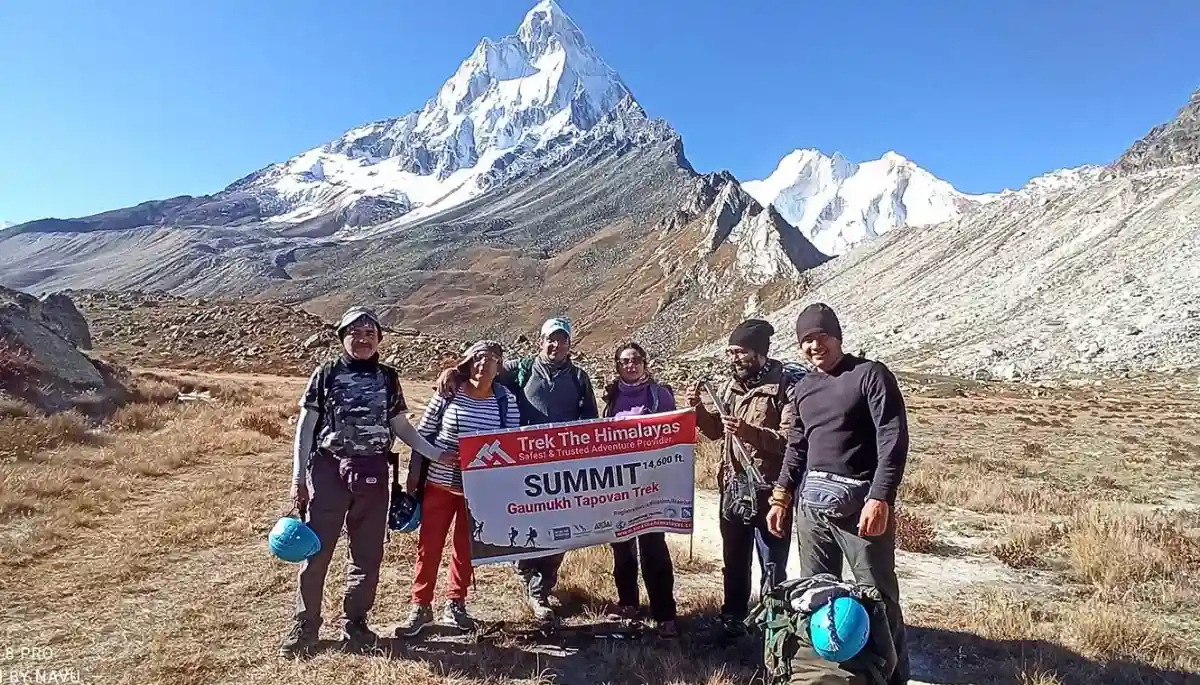
Bhojwasa To Gangotri
- Altitude: 3,200 m/ 10,200 ft.
Trek Distance: 14 km | Duration: 6-7 hrs
Altitude Loss: 600 m/ 1,968 ft.
Accommodation in the guest house.
Moderate level of gradual descent.
Wake up to realize that this will be the last day of the trek. Trek for around 6 to 7 hours covering 14 km to reach Gangotri. You will enter again in the Gangotri National Park, with the valley slowly closing behind you. Watch out for the rockfall section once again and you can catch upstreams and waterfalls to refill your water bottle. Say goodbye to the Bhagirathi and other mountain peaks as their sight now disappears.
Have a dinner in the guest house. Pack to return to Dehradun and thereby to your lovely homes.
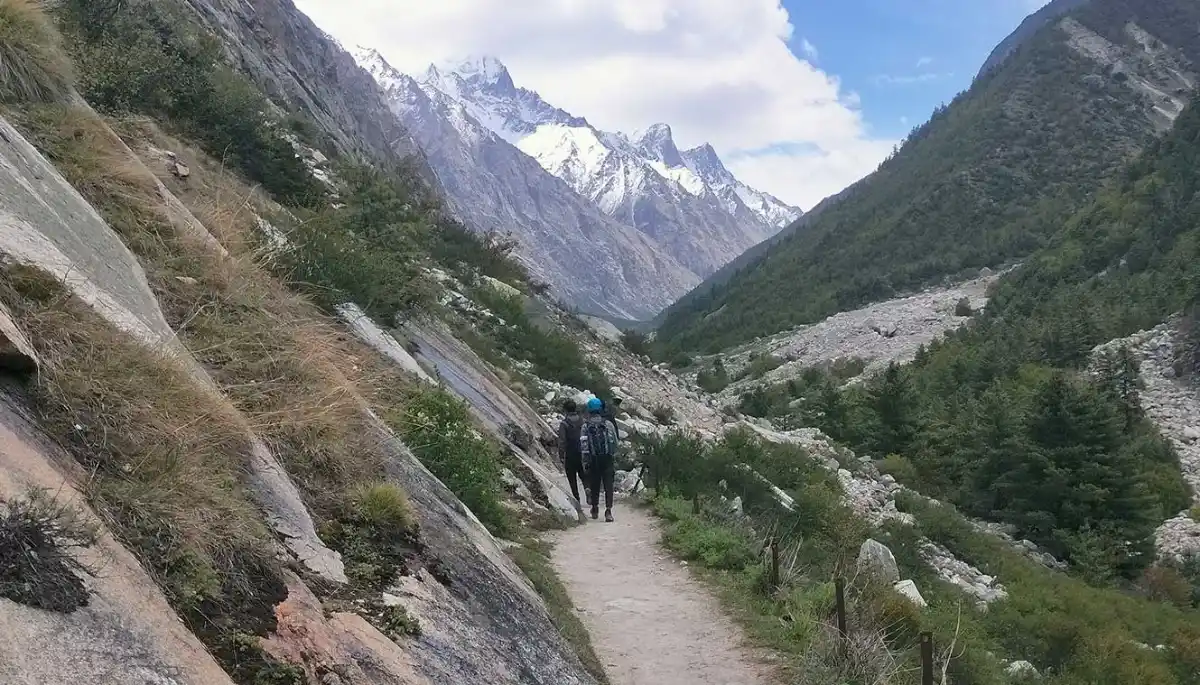
Depart For Dehradun
Have a final cup of morning tea in the mighty land of Gangotri. Say a final goodbye to your fellow trekkers and take back lots of memories. Take a wonderful group picture and get into the cab that will ride you back to Dehradun. This will be an 8-9 hours ride, between the mountains, valleys, and Bhagirathi river. The river guided us throughout the trek.
You will reach Dehradun by 5 PM, and from here you can lead your return journey as you have planned. We hope you take back loads of adventure-filled memories and take a pledge to come back to the mountains.
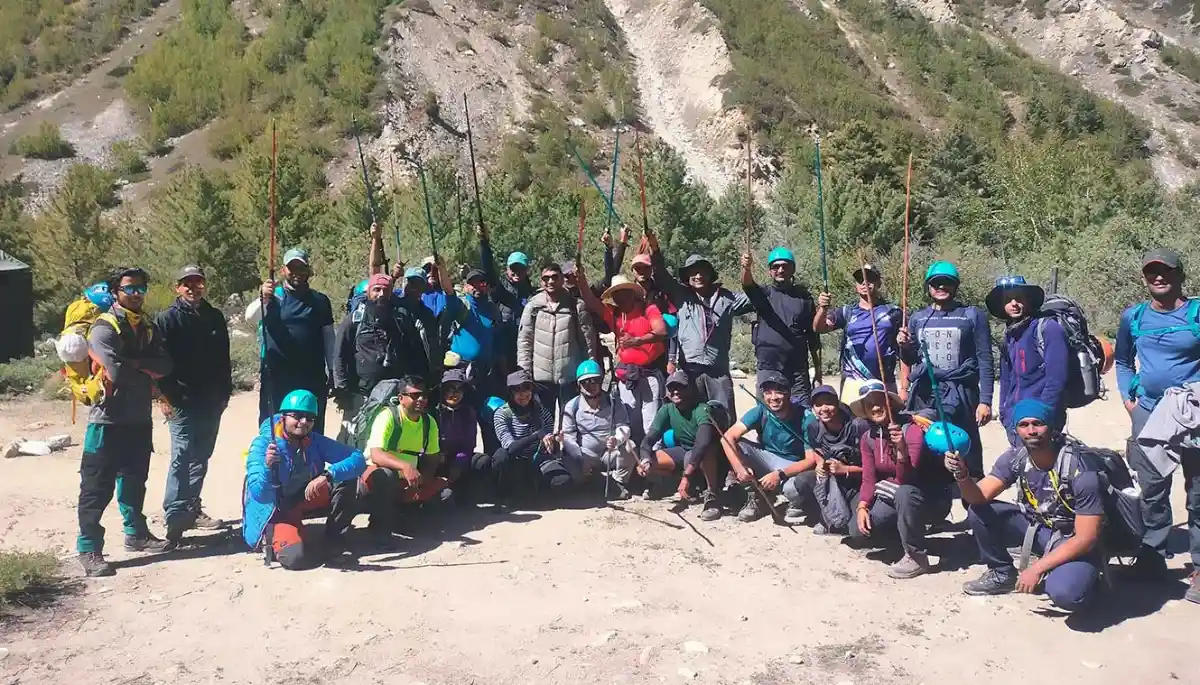
Day-1: Dehradun To Gangotri
- Pick-up time: Prince Chowk, Dehradun | 6 am. (If transportation opted from TTH)
Day-2: Acclimatization Day At Gangotri
- Altitude : 3,100 m/ 10,200 ft.
Day-3: Gangotri To Chirbasa
Day-4: chirbasa to bhojwasa, day-5: bhojwasa to tapovan, day-6: tapovan to bhojwasa via gaumukh.
- Trek Distance: 6 km | Duration: 5-6 hrs.
Day-7: Bhojwasa To Gangotri
- Trek Distance: 14 km | Duration: 6-7 hrs.
Day-8: Depart For Dehradun
- Gangotri to Dehradun Drive distance: 250 km (8-9 hrs)
- After morning tea towards Dehradun.
- Reach Dehradun by 5 to 6 Pm.
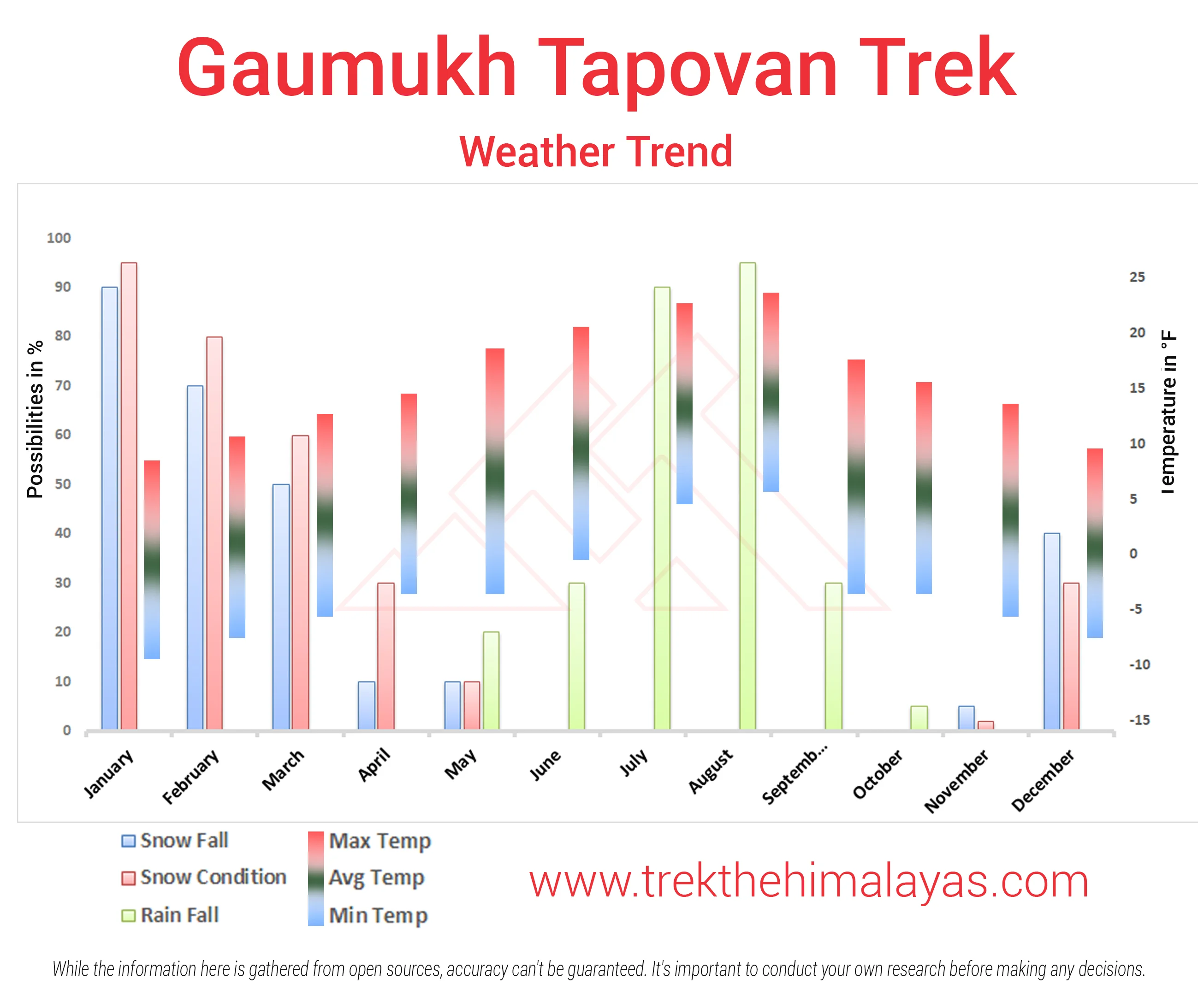
Pulse rate at rest must be in between (60 to 90 beats per minute).
Blood Pressure Reading must be in between (DIASTOLIC 70 – 90, SYSTOLIC 100 - 140 mm Hg).
Respiratory rate at rest must be in between (12 to 20 breaths per minute).
Should not have Liver and kidney issues.
Should not have Diabetes Mellitus, Bronchial Asthma, Heart problems, Hypertension, etc.
No pacemaker implant.
People with Sinus issues, Epilepsy please contact to trek coordinator before booking the trek.
If your BMI is not normal, Please contact our Trek coordinator before Trek booking.
Medical & Disclaimer Form (Mandatory Documents) Click here to download Medical & Disclaimer Form
- Government Employees can avail the benefit of Special Casual Leave (SCL) when they join us for a trekking expedition. As per the rules of the Pay Commission, Special Casual Leave can be availed for up to 30 days in a calendar year for trekking/mountaineering expeditions through a registered organization. Trek The Himalayas is a registered adventure tour operator by the Indian Mountaineering Foundation (IMF) and the Ministry Of Tourism (MOT).
- Trekkers have to apply for leave at least 20 days before the trek departure date.
- This service is exclusive to Indian government employees and is applicable only for treks within India.
- Do mail at info@trekthehimalayas to apply and mention your booked trek date and trek name.
- Junior trekkers (below 15 years) should have a company of parents/guardians.
- Trekkers between 15 to 18 years can come solo with the disclaimer form signed by parent/guardian.
- Medical & Disclaimer Form (Mandatory Documents) Click here to download Medical & Disclaimer Form
Exercise For Moderate to Difficult
Fitness Regime For:
Calculate Your Bmi
Your BMI value is
Congratulations, your body is in good conditions!
Medical & Disclaimer Form (Mandatory Documents) Click Here.
How To Reach
Pick-up information.
- It is essential for everyone to arrive at Prince Chowk, Dehradun (06:00 am).
- Once you have reached Dehradun, TTH will manage the rest of your travel arrangements, if you have opted for TTH's pick-up service, you can select this option during the booking process by adding it as an add-on.
Options to Reach Dehradun
First, you can arrive at Delhi, Dehradun Airport or Chandigarh. The journey from these locations to Dehradun is explained below.
1. Take an overnight train from Delhi to Dehradun.
2. Take a bus to Dehradun ISBT from Delhi Kashmiri gate ISBT or Chandigarh Sector 17 Bus stand, and then take local transport to the pickup point (Prince Chowk).
Delhi to Dehradun - 250km | 6hr.
Chandigarh to Dehradun - 220km | 5hr
The distance from the Dehradun Bus Stand (ISBT) to the Railway Station is 6 km, without traffic, it will take 15 minutes.
( We always recommend to go for the govt. Buses over the private ones outside the bus station as based on the experience we have found that there are very high chances of delay involved with private buses. Also, govt. Buses are always more reliable. Whichever bus you choose, just make sure to reach Dehradun at least by 05:30 am positively. )
3. Take a flight to Dehradun airport (Jolly Grant Airport), then from the Airport to Prince Chowk, Dehradun Distance is 30km and it will take around 1 hr( if coming by flight then reach one day early).
Drop-Off Information
- The designated drop-off point is Prince Chowk, Dehradun.
- Arrive in Prince Chowk by 6:00 to 8:00 pm.
- Please consider planning your subsequent travel arrangements after 9:00 pm.
- The distance from the Railway Station to Dehradun Bus Stand (ISBT) is 6 km, it will take approx 25 minutes.
- The distance from Railway Station to Dehradun Airport is 30km, it will take approx 1hr.
- It's highly advisable to keep a buffer day in your travel plan. If the buffer day is not needed, it can be used to explore Dehradun/Mussoorie/Rishikesh.
( If you prefer to travel independently to Base camp and don't want to take TTH's pick-up service, you can either take a government bus or book a private cab from Rishikesh. Your trek coordinator will provide guidance on how to arrange for the bus or cab booking. )
TTH offers comfortable transportation through Tempo Traveler, Bolero, or equivalent vehicles. If you wish to upgrade your mode of transportation, please contact your trek coordinator for further assistance.
.webp)
1. Insurance.
2. Accommodation (as per the itinerary):
- Guest house stay, Type: triple, quad, dormitory (separate for male and female) on Day 1, Day 2 and Day 7.
- Camping: Twin sharing basis.
3. Meals (Veg + Egg):
- All meals starting from Day 1 Dinner to Day 7 Dinner as per the itinerary.
4. Support:
- 1 Versatile base camp manager: handles communication and deploys extra manpower in emergencies.
- 1 Mountaineering & First aid qualified professional trek Leader.
- 1 Experienced high-altitude chef.
- Local experienced guides (Number of guides depending on the group size).
- Enough support staff.
5. Trek equipment:
- Sleeping bag, Sleeping liners (if required), Mattress, Utensils.
- 3 men all season trekker tent (twin sharing), Kitchen & Dining tent, Toilet tent.
- Camping stool, Walkie talkie.
- Ropes, Helmet, Ice axe, Harness, Gaiters & Crampon (if required).
6. First aid:
- Medical kit, Stretcher, Oxygen cylinder, Blood pressure monitor, Oximeter, Stethoscope.
7. Mules/porters to carry the central luggage. 8. Clock room facility available at the base camp for additional luggage. 9. All necessary permits and entry fees, up to the amount charged for Indian. 10. Services from Gangotri to Gangotri.
11. Trek Completion Certificate.
1. Food during the transit. 2. Any kind of personal expenses. 3. Mule or porter to carry personal luggage. 4. Emergency evacuation, hospitalization charge, etc. 5. Anything not specifically mentioned under the head Inclusion. 6. Transport cost.
Things can be provided on demand and availability (participant has to pay extra for these things).
1- Satellite phone/set phone - is a type of mobile phone that connects via radio links via satellites orbiting the Earth instead of terrestrial cell sites like cellphones. Therefore, they can operate in most geographic locations on the Earth's surface.
2- Gamow/PAC HAPO Bag (Portable Hyperbaric Bag) - is a unique, portable hyperbaric chamber for the treatment of acute mountain sickness (AMS), also known as altitude sickness.
3- AEDs (Automated External Defibrillators) - are portable life-saving devices designed to treat people experiencing sudden cardiac arrest, a medical condition in which the heart stops beating suddenly and unexpectedly.
Cancellation terms:
Cancellations prior to 25 days from the start of the Trip
Refund options
- 5% deduction of trek fee
- 100% cash voucher for any trip till one year
- Transfer your trek (any trek, any date) to your friend
Cancellation between 24 days and 15 days to the start of the Trip
- 30% deduction of trek fee
- 100% cash voucher for same trip till one year
- 85% cash voucher for any trip till one year
- Transfer your trek (same trek, any date) to your friend
Cancellation between 14 days and 10 days to the start of the Trip
- 50% deduction of trek fee
- 80% cash voucher for same trip till one year
- 70% cash voucher for any trip till one year
- Book the same trek, in the same season, with any other batch
Cancellation less than 9 days to the start of the trek
- No cash refund
- 20% cash voucher for the same trip till one year
- 10% cash voucher for any trip till one year
- Transfer your trek (same trek, same date) to your friend
Note- If a booking is made using a voucher or discount code, the policies related to vouchers and discounts cannot be modified.
In the unlikely event that TTH cancels a trek prior to the scheduled departure date:
While it is extremely rare for TTH to cancel a trek, we understand that unforeseen circumstances or natural disasters may occasionally require us to do so before the scheduled departure. These circumstances could include continuous rain or snow, thunderstorms, snowstorms, landslides, floods, earthquakes, or any other natural calamity that poses a risk to the safety of our trekkers. Additionally, unforeseeable events such as local riots, curfews, pandemics, lockdowns, government orders, or any similar situations that compromise the safety of the trekking experience may also necessitate a cancellation.
In the event of such a cancellation, TTH will provide you with a voucher equivalent to the amount you paid for the trek. This voucher can be redeemed for any of our treks within the next year, allowing you to still enjoy an adventure with us at a later date.
The issuance of a voucher is not applicable in situations where you are required to descend from the trek for any reason. The trek leader may make the decision to send you down from the trek due to factors such as insufficient fitness level, symptoms of Acute Mountain Sickness (AMS), high blood pressure, exceeding the designated turn-around-time, health concerns, or if you are found smoking, drinking, or violating the rules set for the trek. In such cases, the provision of a voucher does not apply.
In the rare event that TTH shifts a trek:
We would like to emphasize that weather conditions in high-altitude areas are highly unpredictable and can undergo sudden changes at any time, irrespective of the day. Additionally, circumstances beyond our control, such as natural disasters, political unrest, pandemics, and lockdowns, may impact the feasibility of conducting a trek. In cases where we are unable to proceed with an event due to such circumstances that are beyond our direct control, we will make every effort to provide you with an alternative trek that is safer and more suitable.
In such situations, we will issue a voucher to offset the cost difference between the originally scheduled trek and the alternative trek. This voucher can be redeemed at any time within one year from the date of issue. Please note that a refund fee or reimbursement of the cost difference is not applicable in these cases.
- Change of trek batch is dependent on the availability of seats in the batch
- In case of transferring a trek to a friend, he/she should satisfy all the mandatory requirements put forward by TTH
- TTH holds the right to change/cancel the policies, without prior notice
- Cash refund is applicable only in case of bookings made without using any promotional offer code or vouchers
Cash Voucher Terms:
- This is a non-transferable voucher
- The voucher cannot be merged with any other offer of Trek The Himalayas
- The voucher is valid for Trek booked directly with Trek The Himalayas in India
- To avail the voucher please use your register phone number or e-mail id
- All the other Terms of booking a trek with Trek The Himalayas are applicable to the voucher
- Trek The Himalayas holds rights to add/remove any of the Terms and Conditions without prior notice
Itineraries are based on information available at the time of planning and are subject to change. "Trek The Himalayas" reserves the right to change expedition dates, people or itineraries as conditions warrant. If a trip must be delayed or the itinerary changed due to bad weather, road conditions, transportation delays, government intervention, airline schedules, sickness, or other contingency for which TTH or its agents cannot make provision, the cost of delays and/or other changes are the responsibility of the participant. TTH reserves the right to decline, or accept, any individual as a trip member for any reason whatsoever.
Trek Essentials
PDF Of Trek Essential Download
Frequently Asked Questions(FAQ)
How to register/create an account with tth.
To register with TTH, visit our website - www.trekthehimalayas.com and create your account. To create your account you will need to use your email address and fill in all the details, set your unique password and your account is ready to use.
How to book a trek?
- To book a trek with TTH, you first need to register with us and create an account.
- Choose the trek that you want to do and click on available dates.
- You will land at the login page, fill in the required details.
- Add Participants, choose add-on services click on the Pay now button, choose your preferred payment method, and make the payment. TTH accepts multiple payment options, including credit/debit cards, net banking, and UPI.
- You will receive a confirmation email from TTH with all the necessary details about the trek, including the meeting point, transportation, accommodation, and other important instructions.
- Click Here to watch Video
Made a payment but did not receive any confirmation.
please send an email to us at [email protected] or reach out to the numbers provided in the Help and Support section of your Trek Page. We will ensure that your issue is promptly resolved.
How to book off-load luggage and transportation?
To book services such as off-load luggage and transportation, you can find them listed as add-ons. These additional services can be booked at the time of your initial booking. If you miss booking add-ons during the initial reservation, you can log in anytime and easily book 4 days before the departure date add-ons through the platform.
If I have booked the wrong trek or date, how can I make changes?
In such a situation, please log in to your account and transfer your trek or date to the desired one within 12 hours or drop us an email at [email protected] 10 days before the departure date of the trek. After the initial 12-hour period, any changes will be processed according to the cancellation policy.
I am a beginner and confused which trek to book.
We recommend visiting our "Suggest Me a Trek" page. By filling out the form, our experts will contact you with the best possible trek options based on your preferences and experience level. Alternatively, you can reach out to us via email at [email protected] or give us a call using the numbers provided on our website for personalized assistance and recommendations.
How is family trek different from regular trek?
Family treks differ from regular treks by focusing on ease of difficulty, offering shorter durations for younger participants, Kid-friendly and easily digestible foods, child-friendly activities, maintaining a higher guide ratio for diverse age groups, and implementing additional safety measures for families.
Ideal treks for children.
Family Trek with Kids recommendation Only Dayara Bugyal and Chopta Chandrashila Trek.
Minimum age for children to trek with TTH.
Minimum age for TTH treks is typically 7 years, though this may vary depending on the specific trek.
Can we take children to high altitudes with their guardian?
Yes, you can take a kids to a high-altitude trek with a parent. Discuss with a trek expert before booking a trek.
Can we send kids without Parents/guardian?
- Medical & Disclaimer Form (Mandatory Documents) Click here to download medical and disclaimer form
How to prepare a child for a high altitude trek?
Physical Fitness: Ensure your child is physically fit. Engage them in regular exercise, outdoor activities, and hikes to build stamina and endurance. Hydration: Emphasize the importance of staying hydrated at high altitudes. Encourage your child to drink water regularly, even if they don't feel thirsty. Proper Nutrition: Provide a well-balanced diet with sufficient carbohydrates for energy and foods rich in iron to prevent altitude sickness. Adequate Sleep: Ensure your child gets enough sleep in the days leading up to the trek. Quality rest is crucial for altitude adaptation. Educate on Altitude Sickness: Teach your child about the symptoms of altitude sickness, such as headache, nausea, and dizziness. Encourage them to communicate any discomfort immediately. Appropriate Clothing and Gear: Dress your child in layers to adjust to changing temperatures. Ensure they have appropriate trekking gear, including sturdy footwear. Positive Mindset: Foster a positive mindset. Encourage your child, and let them know it's okay to take breaks when needed. Medical Check-Up: Schedule a medical check-up before the trek to ensure your child is fit for high-altitude activities. Consult with a healthcare professional about any potential health concerns.
Kind of food will be served during the trek for children.
TTH takes special care to provide wholesome and nutritious food for children on treks. Here are some of the foods that are typically served for children: Breakfast: For breakfast, TTH serves a variety of options like porridge, cornflakes, bread, butter, jam, honey, boiled eggs, omelettes, and pancakes. Children can choose from these options to fuel themselves for the day's trek. Lunch: For lunch, TTH serves lunch which includes rotis, vegetables, rice, dal, and salad. The rotis are usually made fresh on the trek and are a good source of carbohydrates. The dal and vegetables provide protein and other essential nutrients. Snacks: TTH provides healthy snacks like fresh fruits, dry fruits, energy bars, cookies, and biscuits to keep the children energized throughout the day. Dinner: For dinner, TTH serves a hot and wholesome meal which includes soup, rice, dal, vegetables, and a non-vegetarian dish (if requested in advance). Children can also choose from a variety of desserts like custard, jelly, and fruit salad. Dietary requirements: If a child has any special dietary requirements, TTH can cater to those needs as well. For example, if a child is lactose intolerant or allergic to nuts, the kitchen staff can make arrangements to accommodate those requirements.
How to choose the right trek?
Choosing the right trek for a beginner can be a bit overwhelming as there are many factors to consider such as distance, elevation gain, terrain difficulty, weather, and time of year. Here are some tips that can help you choose the right trek for a beginner:
1. Determine fitness level: Assess the fitness level of the beginner to understand their physical capabilities. This will help you select a trek that is challenging but not too difficult.
2. Choose a well-traveled trail: A well-traveled trail will have more amenities such as signposts, water stations, and shelter. It is also safer as there will be other hikers on the trail.
3. Consider the length of the trek: For beginners, it is recommended to start with a shorter trek that can be completed in a day or two. This will help them get acclimatized to trekking and build their confidence.
4. Look for gradual elevation gain: Choose a trek with a gradual elevation gain rather than steep ascents. This will make the trek easier and more enjoyable.
5. Check the weather: Check the weather forecast before selecting a trek. Avoid treks during the monsoon season or winter when the trails can be slippery or dangerous.
6. Research the trail: Read about the trail to get an idea of the terrain, altitude, and difficulty level. This will help you select a trek that is suitable for the beginner.
7. Consult with an expert: If you are unsure about which trek to choose, consult our trek expert Mr. Nitin (+91 70600 59773) between 10 AM to 6 PM (Tuesday - Friday). Mr. Nitin will provide you valuable advice and guidance.
Overall, it is important to choose a trek that is enjoyable, challenging but not too difficult, and suitable for the beginner's fitness level and experience.
Can a beginner choose a tough trek?
It is not recommended for a beginner to choose a difficult Himalayan trek. Trekking in the Himalayas can be physically and mentally challenging, especially if you are not used to the high altitude, steep slopes, and rugged terrain. Choosing a difficult trek without the proper experience, fitness level, and preparation can be dangerous and put you at risk of altitude sickness, injury, and other hazards.
If you are a beginner, it is recommended to start with an easier trek and gradually build up your skills and experience. This will help you understand the challenges of trekking in the Himalayas, and also prepare you physically and mentally for a more difficult trek in the future. It is also important to choose a trek that matches your fitness level, experience, and interest.
What is the age limit for a beginner trekker?
There is no specific age limit for a beginner trekker. However, it is important to consider your physical fitness, health condition, and personal interests before embarking on a trek. Trekking in the Himalayas can be physically and mentally demanding, and requires a certain level of physical fitness and endurance.
If you have any pre-existing medical conditions or are above a certain age, it is recommended to consult with a doctor before embarking on a trek. It is also important to listen to your body and take breaks as needed during the trek to prevent exhaustion or injury.
If I am solo, can I join the trek in a group?
Yes, you can join the trek. We have fixed departure groups where you can simply book your trek and we will take care of curating a group.
How does my family get updated about my Trek?
Before you start the trek, it is recommended that you make all the necessary phone calls as during the trek you may or may not receive network coverage, once you come back to the Base Camp, you can reconnect with your family via phone once again. You can share your trek coordinator contact detail with your family members to get the latest updates about your trek batch.
What food can I expect?
At TTH, we provide wholesome and nutritious meals during the trek. The food is vegetarian and includes a variety of dishes such as rice, dal, vegetables, chapati, paratha, pasta, noodles, and soup. We also offer snacks such as biscuits, and salty, and dry fruits during the trek. Special dietary requirements such as vegan, gluten-free, or Jain food can also be arranged if informed in advance.
I am allergic to some foods.
If you are allergic to some foods, you need to let us know in advance so that we can make arrangements accordingly.
How safe is trekking with TTH?
TTH is a trekking company that prioritizes the safety of all its participants, including women trekkers. They have a comprehensive safety system in place, which includes a dedicated team of experienced and trained trek leaders and support staff who are equipped to handle emergency situations and provide first aid.
TTH also takes specific measures to ensure the safety and comfort of women trekkers. They have a separate tent accommodation for women trekkers, female trek leaders, and support staff. They also provide separate toilet facilities for women and encourage a safe and respectful environment for all trekkers.
Moreover, TTH has a strict policy against any kind of harassment and has a zero-tolerance policy towards such incidents. They have a designated Internal Complaints Committee (ICC) to investigate and address any complaints related to harassment or misconduct. Overall, TTH has a good reputation for safety and responsible trekking practices, and women can feel comfortable and safe while trekking with them.
How TTH will manage if I am the only woman in the group?
In case you are the only women in the group, we provide a single sleeping arrangement. Also, during the trek, the trek leader will always remain by your side to provide optimum safety and reassurance.
How can I know that other women are in the batch?
You can reach out to the trek coordinator to inquire about the number of female trekkers and their respective states who have booked the trek. Please note that the trek coordinator cannot disclose personal details of any trekker. Once you've confirmed your booking, a WhatsApp Group will be created for all the trekkers in your batch. This allows you to connect with fellow trekkers before the trek begins.
Can I know in advance, which trek is led by a women Trek Leader?
While many of our treks are led by female trek leaders, however, it is not possible to know which trek leader is assigned to which group. But nonetheless, whether the trek leader is male or female you can be completely assured of your safety and security with us.
Can I trek with periods? If yes, then where can I dispose of the sanitary pad?
Yes, it is possible to trek with periods. However, it is important to take some extra precautions and preparations to ensure a comfortable and safe trekking experience. Here are some tips that can help you trek during your period:
1. Use menstrual hygiene products that you are comfortable with, such as tampons, pads, or menstrual cups. It is recommended to carry enough supplies for the entire duration of the trek.
2. Pack wet wipes, hand sanitizer, and plastic bags to dispose of used hygiene products.
3. Wear comfortable and breathable clothing that allows for easy movement and reduces friction. Avoid wearing tight or restrictive clothing that can cause discomfort.
4. Carry pain relief medication, such as ibuprofen or acetaminophen, in case of menstrual cramps.
5. Stay hydrated and maintain a balanced diet to support your energy levels and overall health.
6. Take breaks as needed and listen to your body. If you feel uncomfortable or experience any unusual symptoms, seek medical attention immediately. It is also recommended to consult with a doctor before going on a trek during your period, especially if you have a pre-existing medical condition or are taking medication.
By taking necessary precautions and being prepared, you can have a safe and comfortable trekking experience even during your period. We provide proper disposal facilities for sanitary pad disposal during the trek.
How will the accommodation be during the trek?
We offer three person tents with twin-sharing for optimum comfort. A woman trekker will share a tent with another woman trekker and if you are the only woman in the group, you will be given a single accommodation for your comfort and privacy.
Are trek poles, Jackets and other equipment available for rent from Trek The Himalayas?
Yes, we do provide gears on rent. You can book it using you TTH account directly.
Who will be with us on the trek from Trek The Himalayas?
Mountaineering qualified Experienced and first aid certified Trek Leader, First Aid Certify local guide, Cook, helpers and supporting staff.
Who can not join the trek?
People suffering from Bronchitis, Asthma, High blood pressure, Epilepsy (got faints), TB , Heart problem or on higher BMI side are strictly not allowed to go on any Himalayan trek. Apart from this if you had any medical history, please let us know.
When it gets really cold can I consume alcohol?
No. Alcohol and smoking isn’t allowed while on trek. It is totally misconception that it will keep you warm. Your body need to acclimatize properly and for that eat properly and drink enough water; these things will keep you warm.
What type of toilet facility is TTH providing at the trek?
Toilet tents provide a convenient solution for answering nature's call in the great outdoors. Dry toilets, in particular, offer a highly sanitary approach. By digging a pit and utilizing mud and a shovel, you can easily cover up your waste. This method ensures cleanliness and hygiene while camping or exploring in the forest.
Remember to pack essential toiletries to complete your outdoor bathroom kit and maintain proper personal hygiene during your adventures. With these practices in place, you can enjoy nature while also respecting it.
How do I manage the negative temperatures on the trek at higher camps? Do I need special jackets?
Layer Up From Head To Toe Eat Full Meals, never sleep empty stomach You can keep warmee (if you’re more susceptible to cold). Use sleeping bag in right way and don’t leave free space in sleeping bag.
For upper body – Thermal layer – T-shirt (full-sleeves) – Fleece T-shirt (for extreme colds) – Fleece layer – Thick Jacket/Down Jacket – Waterproof or Windproof layer (outermost layer, when it is snowing or raining) - For Lower Body – Thermal layer – Hiking pants (normal) or Winter hiking pants
Based on how warm you feel you can skip any of the above layers. Your outer later should be windproof since it is windy at high altitude. The idea behind layering is that the more insulation you have the less cold you feel, and instead of wearing a very thick jacket if you wear multiple layers, your body will be better insulated against the cold.
Do you provide crampon/micro spikes and gaiters?
Yes, we provide micro spikes and gaiters, if required.
What documents need to carry on trek?
Mandatory documents: 2 xerox of ID having address (addhar card/driving license), 2 Passport size photographs, hard copy Medical form signed & sealed by doctor, disclaimer form sign by trekker and high altitude insurance.
If we come prior the trek date, Do you provide accommodation?
No. We don’t but we can suggest you good hotel/Stay nearby pick up location.
Do we get enough water for drinking?
Yes, trekker must carry 2 water bottles 1 litre each so they can refill it at campsite for drinking and keep themselves hydrate.
What kind of shoes we should buy for the trek?
You should buy shoes which has these three features –Good grip, Ankle Support and additional water resistant layers. Generally, we advise Quechua Trek 100, MH 500 and MH 100.
What happens if some members of the team need to turn back before the summit?
No one is forced to go on. There is always enough staff to split the party according to need and regroup later at the camp. Most people have no trouble reaching the highest campsite. If some members decide not to climb the final distance they can wait for the climbers to come back down the same way or take a lateral path to the descent route.
What makes Trek The Himalayas Best Trekking Company in India?
Trek The Himalayas is the safest and most trusted trekking organization in India. Our deep expertise and commitment ensure that each trekker can fully immerse in the Himalayan beauty while experiencing a well-organized and memorable journey. We are proud to be recognized among the best trekking companies in India and have been awarded the PHD Samman Award two years consecutively for Best Adventure Tour Operator . Our founders, themselves are proficient mountaineers and belong to the hilly states of India. At TTH we follow all the safety protocols. Our Trek Leaders are expertly trained in First Aid and Acute Mountain Sickness (AMS) management. The extensive experience is a key factor in establishing us as the best trekking company in India .
What makes Gaumukh Tapovan Trek Special?
Gaumukh Tapovan Trek takes you to the Gaumukh Glacier, believed to be the origin of the river Ganges.
Begin your journey with a visit to Gangotri Dham, one of the Char Dham pilgrimage sites in Uttarakhand .
Experience the beauty of Chirbasa, a picturesque campsite nestled amidst mountains, with the Bhagirathi River flowing beside it.
Reach the Bhojwasa campsite, adorned with ancient Bhoj trees.
Encounter the crevasses on the glacier near Gaumukh, offering an adventurous experience as you traverse from one glacier to another.
Trek to the enchanting Tapovan meadows, a place where sages and ascetics seek solace and enhance their spiritual practices.
Marvel at the breathtaking views of the Bhagirathi Peaks and the iconic Mt. Shivling.
The beautiful sunrises and sunsets over the Bhaghirathi Peaks are something that cannot be missed.
Gain insights into the traditional Himalayan way of life as you pass through the remote villages.
How long does it take to do the Gaumukh Tapovan Trek?
It takes 8-days to complete the Gaumukh Tapovan Trek .
How long is the Gangotri to Gaumukh Trek?
The approximate Gaumukh trek distance is 46 km.
How difficult is the Gaumukh Tapovan Trek?
The Gaumukh Tapovan trek is graded as Moderate to Difficult level of trek.
What is the best time to do the Gaumukh Trek?
Best time for Gaumukh Tapovan trek is during the summer months from May to June and the post-monsoon months from September to October . During these times, the weather is relatively stable, and the trekking conditions are ideal.
Which peaks are visible from Gaumukh Tapovan Trek?
From Gaumukh, prominent peaks such as Mount Shivling, Bhagirathi Twin Peaks, and Mount Meru are visible.
Is previous trekking experience necessary for Gaumukh Tapovan Trek?
Previous trekking experience is not mandatory for Gaumukh Tapovan Trek although a good level of physical fitness is necessary to enjoy the trekking experience.
What level of physical fitness is required for the Gaumukh Tapovan Trek?
A high level of physical fitness is required for the Gaumukh Tapovan trek. Participants should be in good health and prepared for strenuous physical activity over several days.
What is the Highest altitude of Gaumukh Tapovan Trek?
The highest point on the Gaumukh Tapovan Trek is the Tapovan Meadows. Tapovan height is 14,600 ft.
What is the accommodation like on the Gaumukh Tapovan Trek?
Accommodation on the Gaumukh Tapovan trek typically consists of tents. Campgrounds are set up at various points along the route, providing basic shelter and amenities.
Can I do the Gomukh Tapovan Trek solo?
If you are a solo trekker, you can join our fixed departures to Gaumukh Tapovan and we will pair you with like-minded trekkers ensuring a rich trekking experience.
Is there risk of AMS on Gaumukh Tapovan Trek?
Yes, there is a chance of Acute Mountain Sickness (AMS) on the Gaumukh Tapovan trek due to the high altitude. We make sure to acclimatize properly and follow a gradual altitude gain to reduce the chances of AMS. As a responsible trekker, you can educate yourself about the signs and symptoms of AMS and immediately report to your Trek Leader if you notice any such signs.
Will there be snow on the trek?
Yes, there is a possibility of encountering snow on the Gaumukh Tapovan trek, especially at higher altitudes during late autumn season.
Explore Most Informative Articles on Gaumukh Tapovan Trek
40 best himalayan treks in india for 2024.
Discover the 40 Best Himalayan Treks in India for 2024 with Trek The Himalayas! The Himalayas, stretching across India’s northern frontier, offer a diverse range of trekking adventures for all skill levels. From the iconic Everest Base Camp to the serene Valley of Flowers, each trek reveals unique landscapes, diverse flora, and vibrant local cultures. Whether you're seeking challenging climbs, scenic hikes, or rich cultural experiences, the Indian Himalayas provide something for every adventurer. Explore these top treks to embrace breathtaking views, traverse ancient trails, and embark on unforgettable journeys in one of the world's most majestic mountain ranges. Prepare for an extraordinary trekking experience that will leave you in awe of the Himalayas’ natural beauty and cultural richness.
.webp)
Har ki Dun & Gaumukh Tapovan Trek - Adventure, Cultural & Heritage Trek
Har Ki Dun and Gaumukh Tapovan Treks offer a unique blend of adventure, culture, and heritage in the heart of the Himalayas. Trek The Himalayas invites you to explore these iconic trails, where ancient traditions seamlessly intertwine with breathtaking natural beauty. Har Ki Dun Trek, one of the oldest routes, provides a journey through lush valleys and remote villages, offering a glimpse into local customs and spiritual practices. Gaumukh Tapovan Trek leads you to the sacred source of the Ganges and the stunning Tapovan meadows, enriching your experience with its spiritual significance and dramatic landscapes. Both treks immerse you in the rich cultural tapestry and spiritual essence of the Himalayas, combining challenging adventure with profound cultural insights. Join us on these extraordinary journeys to experience the Himalayas in its most authentic and awe-inspiring form.
.webp)
Tapovan - A Paradise where Gods reside
Tapovan is truly a paradise where gods reside, and Trek The Himalayas invites you to explore this breathtaking destination. Located near the majestic Gaumukh Glacier, Tapovan is the nearest trek from Dehradun in the stunning state of Uttarakhand. As you embark on this remarkable journey, you’ll be captivated by the awe-inspiring landscapes, lush meadows, and towering peaks that surround you. The trek offers a unique opportunity to witness the grandeur of the Himalayas while immersing yourself in the tranquility of nature. Our experienced guides ensure your safety and provide valuable insights into the region’s culture and history, making your adventure even more enriching. Don’t miss out on this incredible trek to Tapovan! Call now to book your trip with Trek The Himalayas, the safest adventure trekking company, and experience the divine beauty of the mountains like never before!
 (1).webp)
Top 10 Summer treks you must do!
Discover the top 10 summer treks with Trek The Himalayas for an unforgettable adventure. Start with the Kedarkantha Trek, ideal for beginners and offering stunning winter landscapes. Immerse in the vibrant meadows of the Valley of Flowers, famous for its colorful alpine blooms. Explore the contrasting valleys of the Hampta Pass or enjoy panoramic views on the Brahmatal Trek. Challenge yourself on the Goechala Trek with incredible views of Kanchenjunga from 16,200 feet. Traverse the unique terrain of the Rupin Pass and admire the Pangarchulla Trek’s views of Dronagiri and Parvat peaks. Experience the beauty of the Tarsar Marsar Trek with its alpine lakes, or tackle the diverse landscapes of the Pin Parvati Pass. Finally, the Kashmir Great Lakes trek offers seven sparkling alpine lakes in stunning scenery. Join us and make the most of your summer trekking adventure!
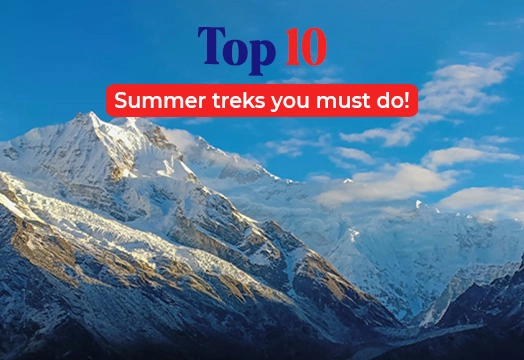
Best Summer Treks in India - Trek The Himalayas
Experience the thrill of summer with Trek The Himalayas’ exclusive offer on the best summer treks in India! Our curated summer treks provide a unique opportunity to uncover hidden gems in the mountains, offering stunning natural landscapes and exhilarating adventures. Whether you’re drawn to serene meadows, lush forests, or breathtaking mountain views, our treks are designed to fully immerse you in the beauty of the Himalayas. With our affordable trekking packages, you can embark on a memorable adventure without straining your budget. Take advantage of our special savings to explore some of the most picturesque trails and experience the joy of summer exploration. From tranquil alpine meadows to spectacular vistas, our treks promise to leave you with lasting memories and a deep appreciation for India’s majestic landscapes. Book now with Trek The Himalayas and enjoy an adventure that combines natural beauty, thrill, and affordability.

Best Summer Trekking Trails
Discover the beauty of summer trekking with Trek The Himalayas on two of the best trails: Roopkund and Kuari Pass. These treks offer stunning views and thrilling adventures ideal for the summer season. The Roopkund Trek takes you to a mysterious high-altitude lake surrounded by snow-capped peaks, guiding you through enchanting forests, alpine meadows, and rugged terrain. Witness ancient artifacts and breathtaking panoramas that highlight the uniqueness of this trek. The Kuari Pass Trek presents a spectacular journey through lush oak and rhododendron forests, with panoramic vistas of the Nanda Devi and other towering peaks. Experience diverse landscapes, from rolling meadows to challenging ascents, and immerse yourself in the grandeur of the Himalayas. Join us at Trek The Himalayas to explore the adventure and unmatched beauty of these top summer trekking trails.
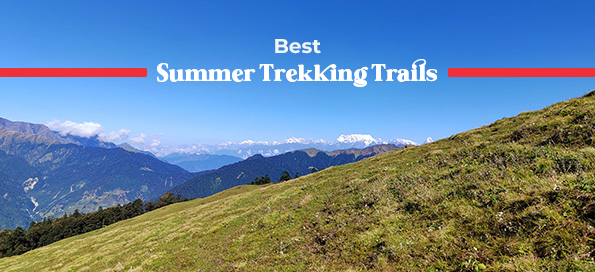
A Summer of Epic Treks and a Grateful Salute to Our Team & The Trekkers
As summer unfolds, embark on epic treks with Trek The Himalayas and experience the thrill of adventure. This season, we celebrate the remarkable journeys we’ve shared and extend a heartfelt salute to our dedicated team and fellow trekkers. Our expert guides have worked tirelessly to ensure every trek is safe and memorable, and we are grateful for their unwavering commitment. To all our trekkers, thank you for your enthusiasm and spirit. Together, we’ve explored stunning landscapes, conquered challenging trails, and made lasting memories. Adventure awaits this summer with exciting new treks and experiences. Join us in embracing the beauty of the mountains and continue to create unforgettable moments. Trek The Himalayas is excited to share this summer of epic adventures with you and express our gratitude for the incredible support and camaraderie that defines our trekking community.
.webp)
Embark on transformative summer treks with Trek The Himalayas, where each journey mirrors the essence of life. Our carefully curated treks offer a rich tapestry of experiences that reflect the challenges, triumphs, serenity, and discoveries inherent in life's journey. Navigate rugged trails, conquer peaks, and experience the profound sense of achievement as you overcome obstacles. Revel in moments of tranquility amidst breathtaking landscapes and find inspiration in nature’s beauty. Each trek is a reflection of life's diverse facets, providing opportunities for personal growth and deep connection with the natural world. With expert guidance ensuring safety and enriching experiences, you'll traverse paths that challenge and inspire, revealing the true essence of adventure. Join us this summer to experience treks that symbolize the multifaceted nature of life and create lasting memories along the way.
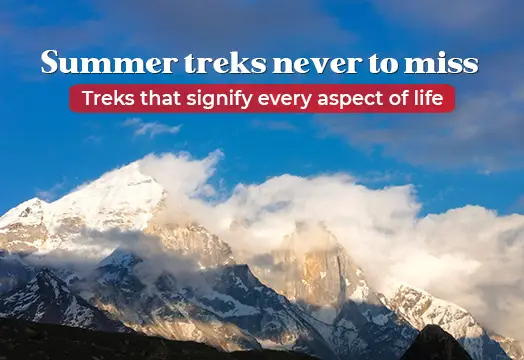
11 Best Himalayan Trek in Autumn 2024 – TTH
Discover the top 11 Himalayan treks with Trek The Himalayas this Autumn 2024, and explore India’s premier trekking destinations. Experience the lush meadows of the Dayara Bugyal Trek, the vibrant forests of the Deoriatal-Chopta-Chandrashila Trek, and the stunning summit views of Kedarkantha. Challenge yourself on the rugged trails of the Bali Pass Trek, immerse in the serene valleys of Har Ki Doon, and enjoy the majestic Kanchenjunga vistas on the Goechala Trek. Traverse the colorful forests of the Sandakphu Trek, walk the spiritual paths of the Gaumukh Tapovan Trek, and marvel at the alpine beauty of the Buran Ghati Pass Trek. The Rupin Pass Trek offers diverse scenery, while the Everest Base Camp Trek provides a legendary journey with breathtaking views of the world's highest peak. Autumn, with its clear skies, mild weather, and stunning landscapes, is the ideal time for these treks. Create unforgettable memories and embark on awe-inspiring adventures in the Himalayas with TTH.
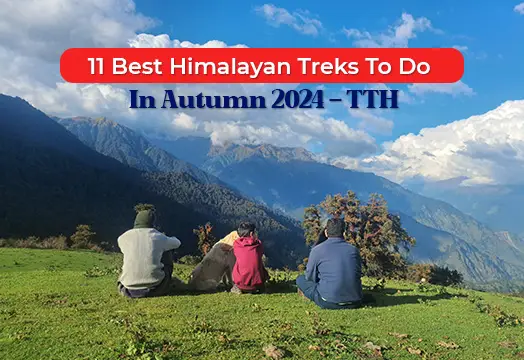
Gaumukh Tapovan Trek – Source Of Holy Ganga
Embark on the Gaumukh Tapovan Trek with Trek The Himalayas, a transformative journey through the Himalayas that leads to the sacred source of the Ganges. This trek combines spiritual exploration with breathtaking vistas, offering a unique experience for both nature lovers and spiritual seekers. As you traverse rugged trails, you'll pass through serene meadows, ancient forests, and glacial landscapes, culminating at Gaumukh, where the holy Ganges emerges from the glacier. The trek also takes you to Tapovan, a high-altitude plateau offering stunning views of the surrounding peaks and a sense of profound tranquility. Our expert guides will provide support and insights, ensuring a safe and enriching adventure. Join us to connect with nature, experience spiritual growth, and marvel at the awe-inspiring beauty of the Himalayas on this unforgettable trek.
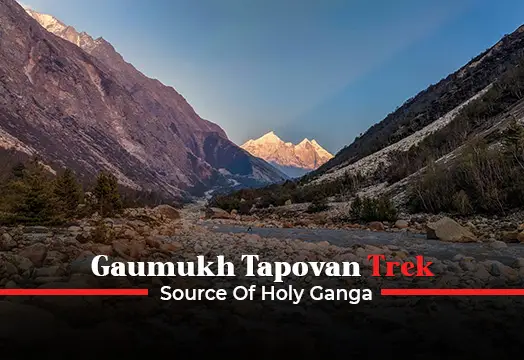
Best Summer Treks - Snow Covered Treks in Summer
This summer, explore hidden treasures beneath snow-covered landscapes with Trek The Himalayas. Venture into pristine, untouched beauty as you traverse through serene, snow-clad regions that reveal nature’s secrets. Our expertly crafted treks guide you through breathtaking, snow-draped vistas, where every step uncovers new wonders. From glittering frozen lakes to rugged snow-covered peaks, each moment offers a glimpse into a winter wonderland transformed by the summer sun. Discover the unique beauty of high-altitude trails and unspoiled natural wonders that remain concealed under snow until the warmer months arrive. Join us to experience the thrill of uncovering nature's hidden gems and create unforgettable memories amidst the enchanting beauty of snow-kissed landscapes. Let us lead you on a journey of exploration and awe-inspiring adventure this summer.
.webp)
Gaumukh Tapovan Trek Guide - Facts, Source, Adventure
Experience the mystique of the Gaumukh Tapovan trek with Trek The Himalayas, where spirituality meets natural beauty in the heart of the Himalayas. This extraordinary trek takes you to the sacred source of the Ganges at Gaumukh, offering a profound spiritual journey amidst stunning natural landscapes. As you traverse rugged trails and serene meadows, you'll witness the majestic beauty of snow-clad peaks and pristine glacial terrain. The trek also leads you to Tapovan, a high-altitude plateau that provides breathtaking views of the surrounding mountain ranges and a tranquil environment for reflection. Our experienced guides ensure a safe and enriching experience, sharing their knowledge of the region's spiritual significance and natural wonders. Join us to explore this sacred path, connect with the natural world, and find serenity in the breathtaking splendor of the Himalayas. The Gaumukh Tapovan trek promises an unforgettable adventure where spirituality and nature intertwine.
.webp)
Gangotri Gaumukh Tapovan Trek - Hidden adventures at the most religious place on Earth
Uncover hidden adventures on the sacred Gangotri Gaumukh Tapovan Trek with Trek The Himalayas. This extraordinary journey takes you to one of the most religious places on Earth, offering a profound blend of spirituality and natural splendor. Starting from Gangotri, a revered pilgrimage site, you'll embark on a trek that leads to Gaumukh, the sacred source of the Ganges. As you traverse through rugged terrain and lush meadows, the majestic Himalayas provide a stunning backdrop. The trek culminates at Tapovan, a serene high-altitude plateau, where you can reflect amidst breathtaking views of snow-capped peaks and pristine glaciers. Our expert guides ensure a safe and enlightening experience, offering insights into the spiritual and natural significance of this sacred route. Join us to explore hidden adventures and connect deeply with the spiritual essence of the Himalayas, creating memories that will last a lifetime.
.jpg)
Best Post Monsoon Treks 2024 - Autumns Treks | Trek The Himalayas
Experience the best post-monsoon treks of 2024 with Trek The Himalayas and embrace the autumn beauty of the Himalayas. As the monsoon rains recede, the landscapes transform into a lush paradise, offering crystal-clear skies and vibrant colors. Our top picks for autumn treks include the Valley of Flowers Trek, where you'll wander through meadows adorned with a dazzling array of wildflowers. The Hampta Pass Trek provides stunning contrasts between lush valleys and stark alpine scenery, while the Kedarkantha Trek offers panoramic mountain views and a serene, snow-dusted landscape. These treks are perfectly timed for optimal weather, ensuring an unforgettable adventure amidst the refreshed, pristine beauty of the Himalayas. Join us for an exceptional post-monsoon journey and discover the Himalayas in their most captivating autumn splendor!
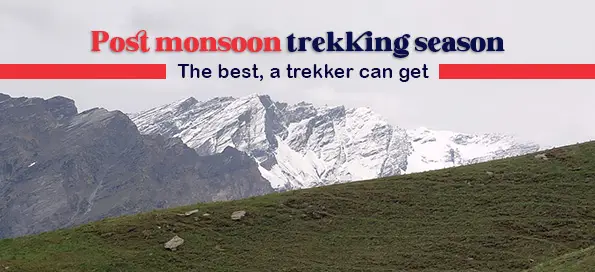
Chasing Autumn's Beauty with Gaumukh, Sandakphu & Dayara Bugyal
Experience the magic of autumn in the Himalayas with Trek The Himalayas. Embark on a journey through the breathtaking landscapes of Gaumukh, Sandakphu, and Dayara Bugyal. Witness vibrant foliage, explore majestic glaciers, and conquer towering peaks. Trek to the source of the Ganges River at Gaumukh, where the mighty river begins its sacred journey. Conquer the highest peak in West Bengal, Sandakphu, and be rewarded with panoramic views of Mount Everest, Kangchenjunga, and Lhotse. Wander through the picturesque meadows of Dayara Bugyal, surrounded by towering oak and pine forests. Our expertly guided treks offer the perfect blend of adventure and tranquility, making it an unforgettable experience for nature lovers and trekkers alike. Discover the mesmerizing beauty of autumn in the Himalayas with Trek The Himalayas.
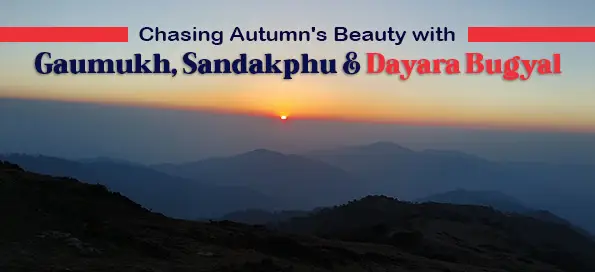
Two Best Treks in The Gangotri National Park
Explore two of the best treks in Gangotri National Park with Trek The Himalayas: Gaumukh Tapovan and Kedartal. These treks offer an unforgettable journey through the heart of the Himalayas, where you can immerse yourself in the beauty of sacred glaciers and pristine lakes. The Gaumukh Tapovan Trek leads you to the source of the holy Ganges River, combining spiritual significance with the thrill of trekking in breathtaking terrain. The Kedartal Trek, known for its stunning high-altitude lake, takes you closer to the majestic peaks of Thalay Sagar and Meru. Both treks provide a perfect blend of adventure and serenity, allowing you to experience the untouched beauty of Gangotri National Park. Whether you're a seasoned trekker or seeking your next adventure, these treks promise an enriching experience in the very essence of the Himalayas. Start your trekking journey with Trek The Himalayas!
.webp)
Top summer Himalayan treks never to Miss
Discover the top summer Himalayan treks with Trek The Himalayas—an adventure seeker’s dream list you won't want to miss. Our selection features the most breathtaking treks, each offering unique experiences and stunning landscapes. Conquer the challenging Rupin Pass, enjoy panoramic views from Goechala, or immerse yourself in the lush beauty of Har ki Doon. Experience the dramatic terrains of Buran Ghati and explore the serene alpine meadows of Gaumukh Tapovan. Trek to the pristine Kedartal, scale the thrilling Pangarchulla, and revel in the picturesque vistas of the Kashmir Great Lakes. Wander through the vibrant Markha Valley, witness the majestic Pindari Glacier, and tackle the demanding Bali Pass. Finally, enjoy the accessible yet spectacular Chopta Chandrashila. Each trek provides a distinctive journey through the Himalayan grandeur, promising unforgettable adventures and spectacular views. Join us to experience these top summer treks and make your Himalayan dreams a reality.
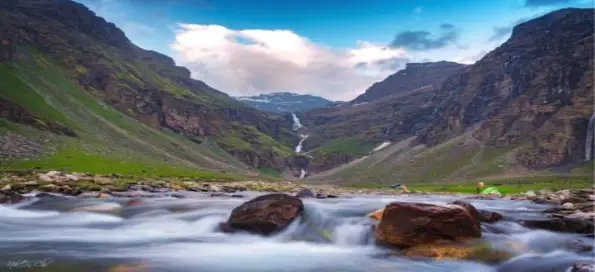
Countdown of the top autumn treks, Kashmir season commences and much more
Countdown to India's top autumn treks as the Kashmir season commences and more! This season offers a spectacular array of trekking experiences across varying difficulty levels, showcasing some of the most stunning landscapes in the Himalayas. From leisurely hikes to challenging trails, each trek provides a unique opportunity to immerse yourself in the vibrant fall colors and serene mountain vistas. Whether you're seeking an easy trek to enjoy the crisp autumn air or a more strenuous adventure to test your limits, our curated list of treks has something for everyone. Join Trek The Himalayas for an unforgettable autumn adventure, where breathtaking views and thrilling trails await. Experience the beauty of the Himalayas in its autumn splendor and create lasting memories on these extraordinary journeys.
.webp)
Our Top Picks Of Summer Treks in Indian Himalayas
Discover our top summer trek picks in the Indian Himalayas for an unforgettable adventure. Journey to Uttarakhand for the legendary Roopkund Trek, boasting challenging terrain and breathtaking Himalayan vistas amidst vibrant wildflowers. Alternatively, explore the UNESCO World Heritage Site, Valley of Flowers Trek, a floral paradise embraced by snow-capped peaks and glistening streams. These treks promise unparalleled experiences, blending nature's beauty and the thrill of adventure in the majestic Indian Himalayas.
With the winter first all around, do you find yourself eagerly anticipating the warmth of summer? Are you yearning to witness the transformation of everything that stood still, thawing under the gentle caress of the summer sun? In the Himalayan slopes, summer heralds a spectacle of melting snow, vibrant valleys adorned with an array of wildflowers, melodious tunes of exotic birds, and a night sky painted with a celestial wonder.
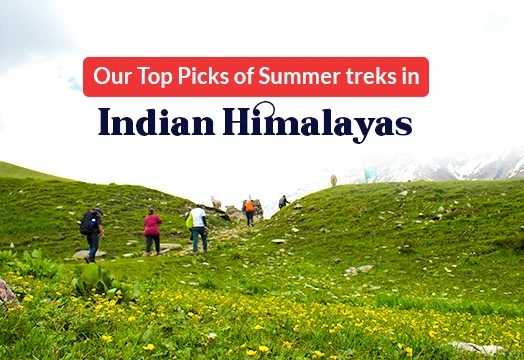
Our Top Favourite Summer Escapes
As winter fades, the Himalayan slopes come alive with blooming wildflowers, melting snow, and starry skies, making summer the peak season for trekking. Among the top treks is Pangarchulla Peak, offering breathtaking views of Nanda Devi and Chaukhamba. The Gaumukh Tapovan Trek follows the Ganges' origin with stunning vistas of Mt. Shivling. Bhrigu Lake offers a serene glacial lake amidst lush meadows, while Har Ki Doon blends adventure with mysticism through ancient villages. The challenging Bali Pass trek connects the Har Ki Doon and Ruinsara Valleys. Buran Ghati reveals a frozen lake in Himachal Pradesh, and Sar Pass features diverse terrains with a chance to encounter snow even in summer. Rupin Pass captivates with expansive panoramas and cultural experiences. Kedartal enchants with its glacial lake surrounded by towering peaks. Phulara Ridge provides extended Himalayan vistas, and Goechala Trek showcases stunning views of Mt. Kanchenjunga and vibrant Rhododendron blooms. Explore these vibrant treks for an unforgettable Himalayan summer adventure.
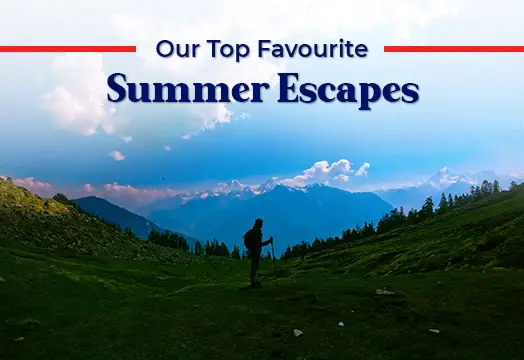
- Date and Price
Rent A Gear
Trek Articles
Quick Links
Trekking & Hiking
Mountaineering
Multi Sports
Himalayan Pilgrimage
Website Privacy
Terms & Condition
Contact Info
Get in touch with us. E-mail us Monday-Saturday (10 AM to 6 PM)
Address: Trek The Himalayas 7/2/1, Convent road, Near SBI Main Branch Dehradun-248001,Uttarakhand
Phone: 8191004846
Email: [email protected]
2024 Trek The Himalayas. All rights reserved

Gaumukh Trek from Gangotri – A Complete Travel Guide
In this post, I will provide a detailed description of Gaumukh Trek which is one of the biggest tourist attractions of Gangotri. In fact, it is this 18 kilometers long trail to Gaumukh that attracts 90% of the tourists here. There are majorly two kinds of people that visit Gangotri; either the devotees or the adventure enthusiasts. For both of them, walking to Gaumukh and tracing River Ganges back to its origin is one of the biggest parts of a trip to Gangotri.
Also Read: How to Plan a Trip to Gangotri – A Complete Travel Guide
For a brief introduction, Gaumukh, also known as “Gomukh” or “Gomukhi” is the source of the Bhagirathi River. It is the point where Bhagirathi originates out of the Gangotri glacier (picture below) and then flows downhill to be later called River Ganga. It is situated about 18 kilometers from Gangotri and at an altitude of 13,200 ft (4,023 meters).
The motorable road ends at Gangotri and the final distance to Gaumukh can only be covered by foot. Due to its religious importance, it is a popular Hindu pilgrimage site; and due to the trek being neither too difficult nor too easy, it is also a much sought-after trekking destination. The word “Gomukh/Gaumukh” literally means “Mouth of a Cow.”
It is said that the snout of the Gangotri glacier where Bhagirathi comes out from looked exactly like the “Mouth of a Cow” in old times and hence the name.
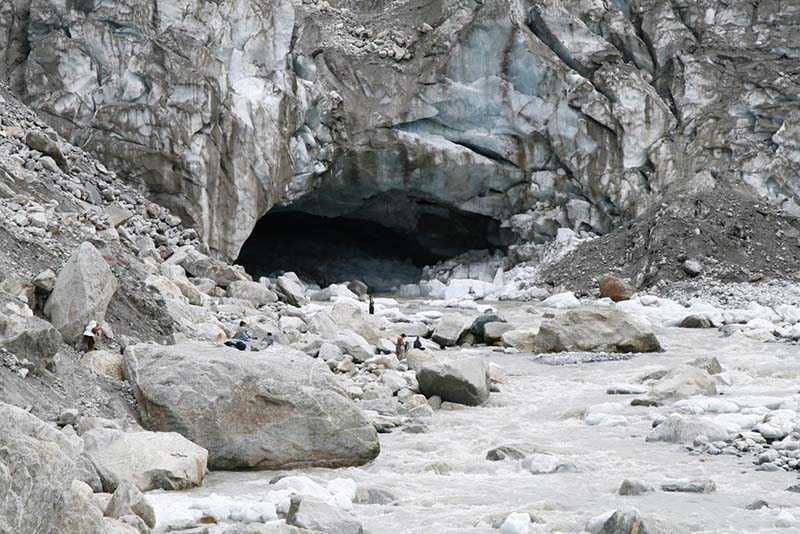
Quick Navigation
Gaumukh Trek
Please note that this article only covers the part about trekking to Gaumukh after you have arrived in Gangotri. The information below will tell you how you can plan your trek, what permits are needed and, some of the things you should keep in mind. If you, however, would also like to know the details on how to reach Gangotri then please read the previous part of this post, Gangotri Travel Guide .
Best time to visit Gaumukh
The best time to trek Gaumukh would be from Mid April to June and then again from September to early November. Gangotri remains closed from late November to March so a visit in these months is not possible at all.
The risk of rain would make the trek and journey tough to execute in July and August. This is also the time when it gets a little crowded in Gangotri with the ongoing Kanwar Yatra. Hence it only leaves the months of spring (April), summer (May and June), and autumn (October) to trek to Gaumukh.
Gaumukh Trek Permit
A permit is required for a person to be able to trek to Gaumukh. This permit can be obtained from either District Forest Officer in Uttarkashi or at the forest office in Gangotri. There is a daily limit of 150 permits per day and it is issued on a first-come-first-served basis.
Also Read: When is the Best time to visit Gangotri
How to get Gaumukh Trek Permit
The first place to get the permit would be at the DM office Uttarkashi. You will anyways cross Uttarkashi while going towards Gangotri so you can actually get the permit while on the way. The DFO office is located at the northern end of the road just ahead of the bus stand. It is a government office open on all working days during normal working hours.
Getting a permit from here is quite simple really. You just fill out your name and address on a form; attached your government-issued Identity proofs like Aadhar Card, PAN Card, or Voter’s ID; and pay a fee of Rs. 150 per person.
If you did not get the permit at Uttarkashi for some reason, you can obtain it in Gangotri as well. It is issued at the forest office which is located just as you enter Gangotri to your left. Charges and procedures will remain the same but the problem is that this office is only open from 8.00 am to 10.00 am, and then 5 pm to 7 pm.
On the brighter side, this office remains open on all days including Sundays as well which the office in Uttarkashi is not.
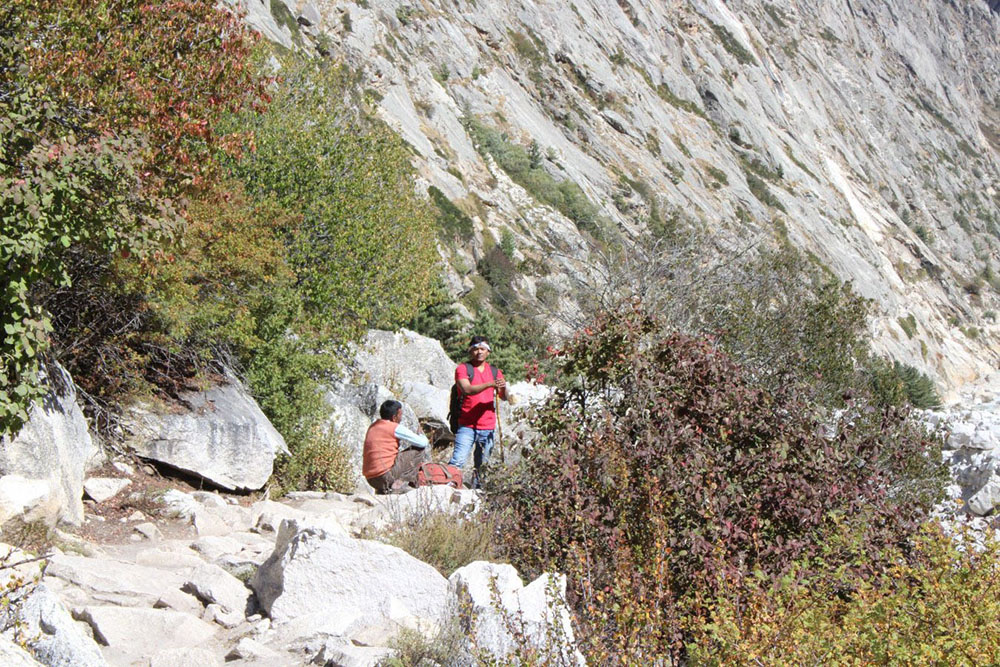
Gaumukh Trek Permit Cost
The cost of the permit is Rs. 150 per person for Indian citizens and Rs. 600 per person for foreign nationals.
Gaumukh Permit Duration
The permit for Gaumukh is valid only for 2 days. So, for example, if you started from Gangotri on Monday, you must return by Tuesday evening. The duration is extended if you plan to trek to Tapovan as well.
Gaumukh Trek Permit Online
Thankfully, permits for the Gaumukh trek can be obtained online. You will need to visit the official page for the Online application for Gangotri National Park permission and fill in your details. You will also be asked to upload required Identity proofs on this page. After you submit the application, you will receive an email confirming that your permit was approved, provided that you are able to produce original documents at the office.
Take a printout of this email and show it at either the DFO office in Uttarkashi or at the forest office in Gangotri along with your original documents to collect your permit. Payment for the permits can either be made while you were submitting the online application, or you can pay in cash when you show the permit later at either in Uttarkashi or Gangotri.
The DFO office in Uttarkashi remains closed on Saturday and Sunday so please plan your journey accordingly. On the online application form, it will ask you to select a Tour Operator towards the bottom of the page but that is not a mandatory field. If you are visiting between May to November, then you can leave this field blank.
If you were, however, visiting in April before the temple doors were open, then you would have to select a local tour operator on this page.
Also Read: What to See in Gangotri and Things to Do
Gaumukh Trek Details
Now that you have obtained the permit, let me provide a brief summary of how your trek is going to look like. There are four major points on the route; Gangotri, Chirbasa, Bhojbasa, and Gaumukh. The route will look something like this.
Gangotri – (9 kms) – Chirbasa – (5 kms) – Bhojbasa – (4 kms) – Gaumukh = 18 Kms
The difficulty level of the trek can be called moderate but it does get a bit challenging and steep at some points. The stretch between Gangotri to Chirbasa is a little easy but the challenging nature of the trek starts to come more into the picture as you proceed further.
Gangotri really is a small town and finding the starting point of the Gaumukh trek won’t be a difficult task. Ask any of the locals and anyone can point you in the right direction. But as a reference, the trek begins from around 100 meters behind the Gangotri temple. One has to climb a steep stairway in order to reach the starting point of the trek.
The first couple of kilometers is really an easy walk and you will arrive at the check post. Entry to trekkers and visitors is only allowed after 6 AM so my advice would be to start as early as possible from Gangotri. If you started by 5 in the morning, you will be at the check post by 6 and can be on your way to Gaumukh as soon as the entry opens.
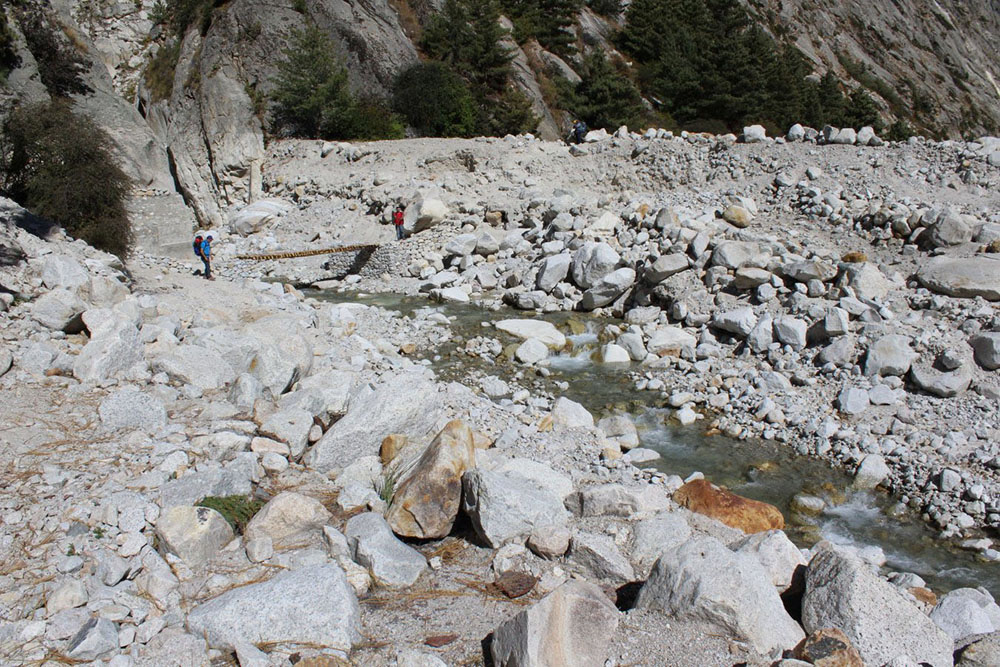
Plastic Covers Fee
At the check post before the start of the trek, you will be asked to show your permits as well as all the plastic bags that you were carrying. All your chips packets, chocolate covers, Biscuit packets, polythene bags will be counted and you will be asked to deposit a certain amount.
When you return, this fee will be refunded only if the count of plastic covers that you are carrying matched the one from the morning; meaning that you brought all the plastic covers back and did not leave anything behind. If the count did not match, this amount will be forfeited.
Also Read: Uttarakhand Roadways Bus Time Table
Gangotri to Chirbasa
You will be required to produce your permits at the checkpoint, as well as the original Identity proofs. You will make the payment if you did not already do so while procuring the permits online or at Uttarkashi. Your bags will then be checked for how many plastic items you were carrying and all of them will be counted. You will then make a deposit against your plastic items and will then be allowed to enter.
The entire trail is to Gaumukh is well marked and you will have no trouble navigating your way. It will continue to gradually increase its gradient but will not be too challenging to handle.
The name Chirbasa literally means “the abode of Pine trees” and it is named such because there are a lot of pine trees around here. In fact, you will be able to recognize the place by the huge cluster of pine trees. It is located at a distance of 9 kilometers from Gangotri and for this entire length; you will pretty much be on your own.
There will not be any Dhabas, shops, tea stalls, or anything of that sort in between. Hence it is extremely important that you bring something to munch on along the trek. Also, ensure that you are carrying a water bottle that you can fill in from any of the water streams en route.
Trekking from Gangotri to Chirbasa will take you about 4 to 5 hours. If you were at the check post by 6 and started as soon as the entry was allowed, you should be able to reach Chirbasa before 10 AM. There is a small Dhaba here where you can take a short break and restock your energy levels.
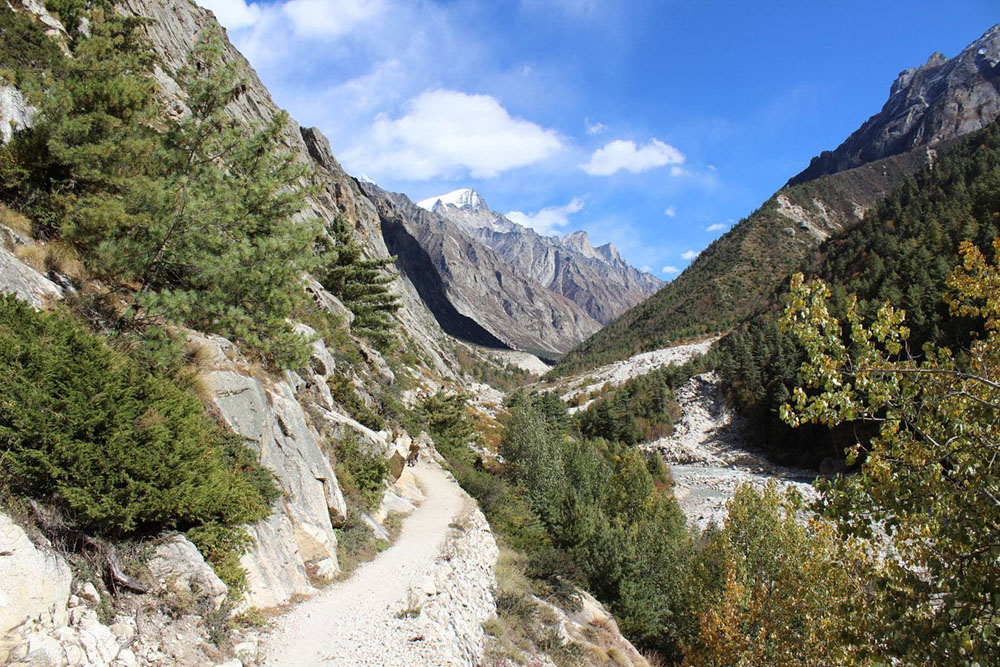
Chirbasa to Bhojbasa
Chirbasa is known to be the last place where you will see some vegetation on the trek. After this point, trees mostly just vanish and the landscape seems to look like a barren wasteland. The next stop on the trail will be Bhojbasa and until then, you will again be on your own. There will not be any dhabas or tea stalls anymore so do not forget to fill your water bottle and get something to eat on the way if you weren’t carrying anything.
Bhojbasa is located at a distance of about 5 kilometers from Chirbasa and it will easily take you 2 to 3 hours to complete. The ascent in the trail will be quite the same as between Gangotri and Chirbasa and it will be an easy to moderate walk. The vegetation too will continue to get lesser with each passing kilometer as you get closer to Gangotri Glacier.
Also Read: How to Plan a Trek to Tungnath and Chandrashila
Located at an altitude of 3800meters (12,450 feet), Bhojbasa serves as a stopover for people trekking to Gangotri or even further to Tapovan. It is really not much except for a huge ground-like area in the middle of nowhere and a couple of buildings in it.
By now, you would already have walked 14 kilometers since you started from Gangotri in the morning. Accommodation at Bhojbasa is available in form of Ashrams and a GMVN guest house , and both are very basic dormitory type accommodation.
Below is a picture of Bhojbasa.
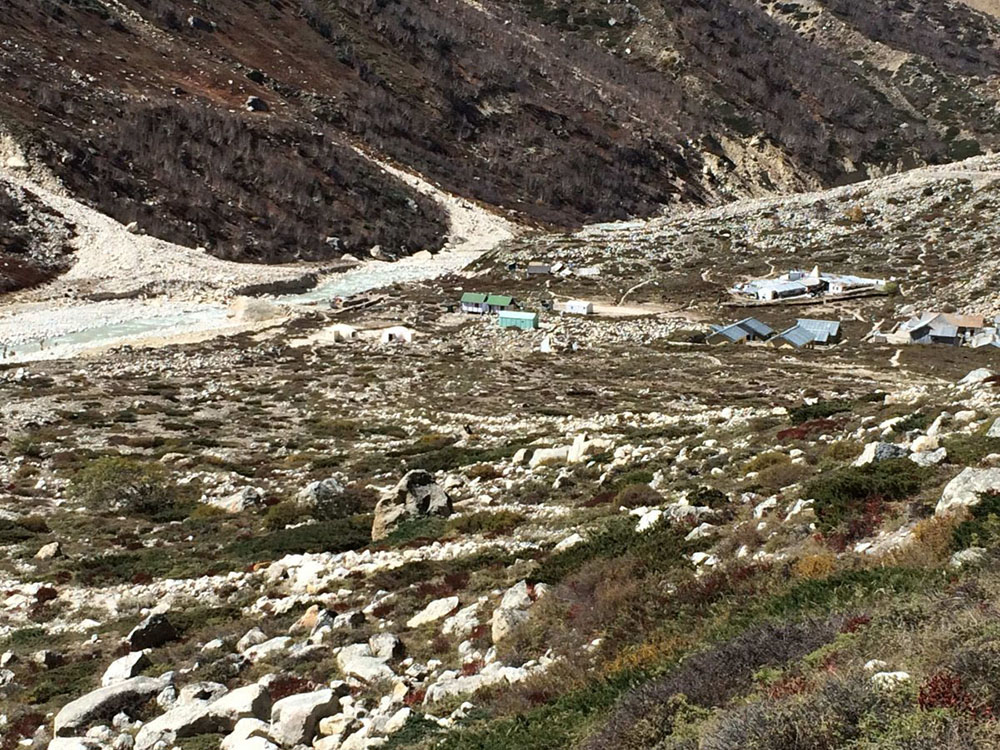
After you reach Bhojbasa, you have two options. You can either break the journey for the day and trek to Gaumukh the next morning. Or you can continue all the way to Gaumukh, come back and stay at Bhojbasa for the night and return to Gangotri the next day. Since the duration of the Gaumukh permit is only two days, you will have to return to Gangotri the next day anyway.
My recommendation is that you do not go to Gaumukh on the very first day and do it the next morning. The reason behind this is that Gaumukh is another 4 kilometers from Bhojbasa and this is where the trek becomes challenging as well. If you continue to Gaumukh, you will be in a hurry to reach and come back to Bhojbasa before dark. This will also not give you any time to spend at the glacier. Hence it would be better to stay at Bhojbasa for the night and start trekking to the glacier the next morning.
If you were carrying your own camping gear, then Bhojbasa is the place where you will pitch your tent for the night. Camping is not allowed by law anywhere after Bhojbasa.
Bhojbasa to Gaumukh
The trek will get a bit challenging after Bhojbasa. It will be steep and there will be boulders as well on the way that you will have to jump over. The trail starts from behind the GMVN rest house but you can ask anyone here if you weren’t able to spot it.
The path however will still remain well marked; and easy to spot and navigate. Make sure that you are filling your water bottle in the morning before you start and also are bringing in items to munch on. Finding drinkable water after Bhojbasa will be a tough task so bringing water along will be of utmost importance.
Up until now, Bhagirathi would have stayed on your right all along the trek. About a kilometer after Bhojbasa, you will get your clear view of Shivling peak, Bhagirathi group of peaks, and Gangotri Glacier. Take a moment, relax, and savor the view while relaxing.
The trek after this point will continue to get even more challenging with numerous boulders on the trek so please walk very carefully. One wrong step here can leave you with a twisted ankle or even tumbling down into the river.
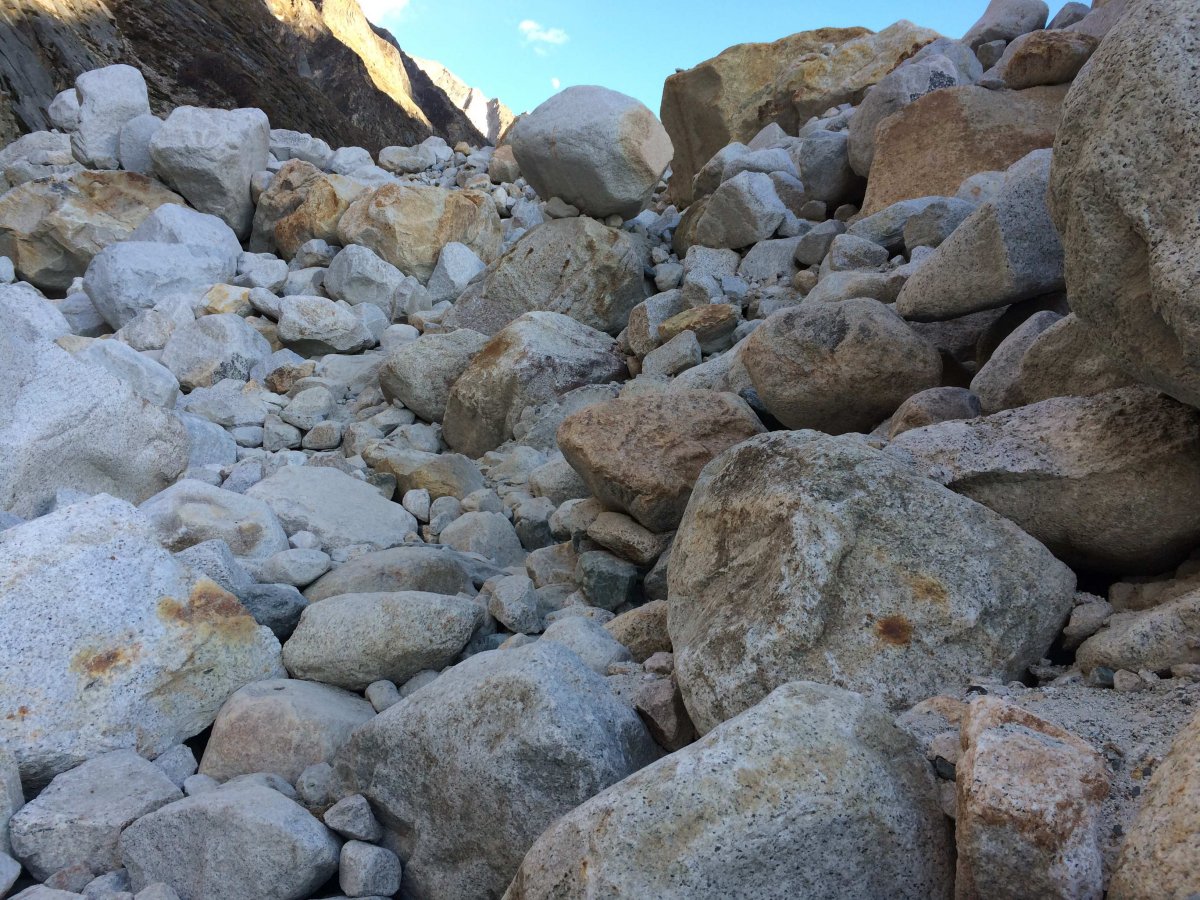
The trail on the other side of the river however is much easier but it would mean that you would have to cross the water stream. If you find a spot where you can, jump on the other side of the river (the river would then be on your left after crossing).
Make sure you do not get your shoes wet in the process because that will become a huge problem. Trekking in such cold weather with wet shoes will not be a pleasant experience.
Gangotri Glacier and Gaumukh
After a grueling final 4 kilometers of a trek, you will finally arrive at Gangotri Glacier and Gaumukh. From Bhojbasa, it will easily take about 3 hours to get here.
Spend some time, take pictures, and then head back to Bhojbasa for the night if you trekked all the way to the glacier on Day 1 itself. If you came here on Day 2 after a night’s stay at Bhojbasa, then it is time for you to head back to Gangotri.
Also Read: Easy Treks in Uttarakhand: The Top 5
Mobile Connectivity at Gaumukh
There is no mobile connectivity at all at Gaumukh. Airtel and BSNL will work fine in Gangotri but the signals will be all gone about a kilometer into the trek.
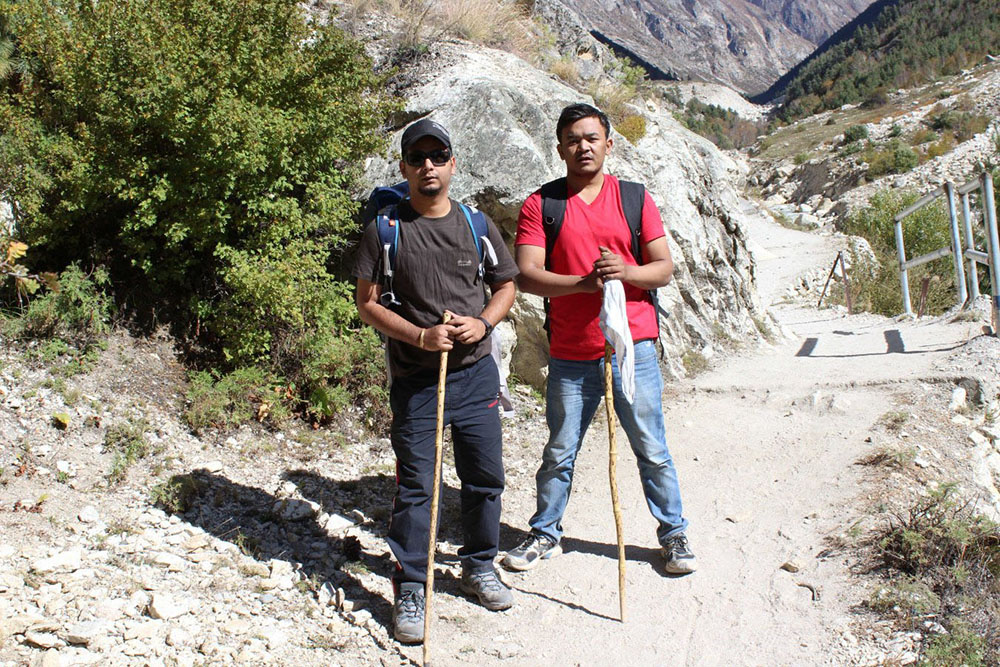
Accommodation on Gangotri Gaumukh Trek
The only accommodation on the trail is available at Bhojbasa and nowhere else. Depending on your own preference, you can either stay at the Ashram or GMVN rest house. These are both dormitory-type accommodations. Hot water will be provided and only vegetarian food is served here.
If you want to, you can even book the GMVN Guesthouse by calling 0135-2740896, 2749308, 2748478; or by emailing at [email protected] or [email protected] . You can also book it online at the GMVN Website . Just create a user ID on this site and book your stay. The two Ashrams at Bhojbasa are known as Ram Baba Ashram and Lal Baba Ashram.
Accommodation Cost at Bhojbasa
The Ashram here will charge you Rs. 300 per person and the GMVN Guest House will charge Rs. 350 per person.
Also Read: List of Necessary Items to Carry for Trekking
Acute Mountain Sickness
If you start to feel symptoms of altitude sickness anywhere on the trek, please do not climb up and further and return to Gangotri immediately. For example, if you start to feel feverish, have headaches, nausea, chest pain, having difficulty breathing, then it means you are suffering from AMS and any further gain in altitude will only make things worse. Stop and climb down immediately.
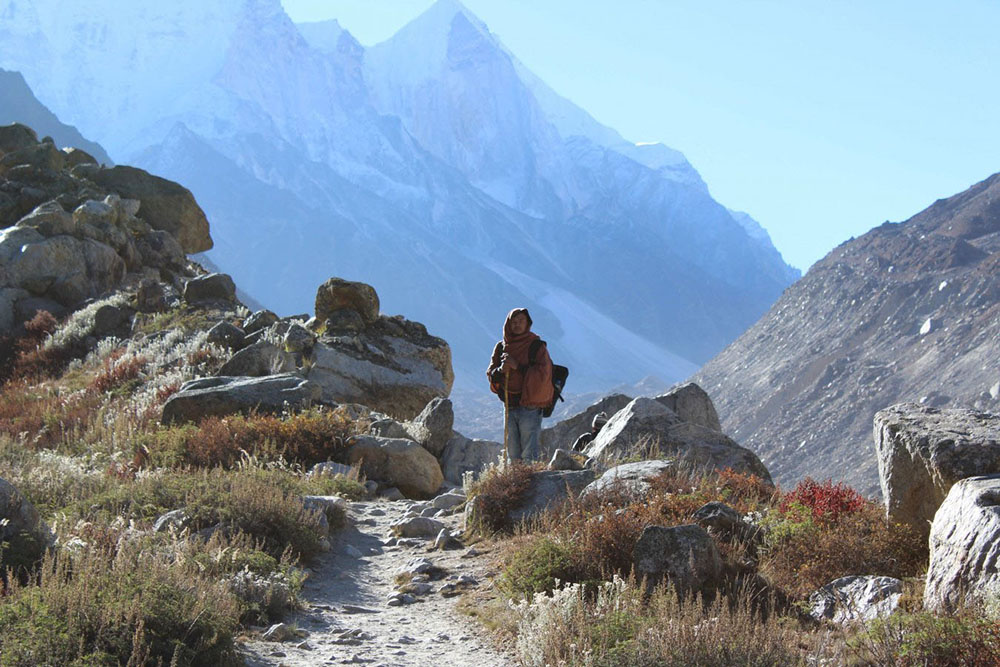
Mentioned below are a few other tips that can be of help while trekking to Gangotri.
- Any sports shoe will be fine for completing this trek but if possible, do bring a pair of trekking shoes with good grip and ankle length.
- You must bring a light jacket even if you were trekking in the months of May and June. The wind out here is a bit cold and the weather can change unpredictably.
- Permits for Gomukh can be procured via Fax as well.
- After 3 kilometers from Chirbasa, you will come across “Gila Pahar”, a place well known to be dangerous because of landslides.
- You will also come across Bharals, a type of mountain antelope while trekking to Gangotri.
- The route after Bhojbasa can be a little difficult for some people, and even more so after the 2013 floods.
- You should avoid trekking in the monsoon season. Rains can make the route slippery and this region is prone to landslides, cloudbursts, and roadblocks.
- Please do not attempt the trek alone. Be in a group of at least two people. Also inform, your folks before you start on the trek.
- Please carry ample dry fruits, chocolates, snacks, and drinking water.
- Do not consume alcohol or any other intoxicants during the trek.
- Do not attempt trekking at night.
- Before undertaking the trek, it would be better to consult your doctor.
- You should carry basic medications (for fever, headache, upset stomach, body-ache) and a first-aid kit during the trek.
- Please be a sensible tourist and do not litter. If you brought polythene bags along, please ensure that you are bringing those back and not throwing them carelessly.
Also Read: 7 Short & Easy Winter Treks in Uttarakhand
Things To Carry for the Trek
- Comfortable clothes. You do not want to go trekking in tight-fitting jeans.
- Good quality trekking shoes
- Sunscreen lotion of highest SPF that you can find
- Skin moisturizers
- Water bottles
- Energy bars/snacks/Dry Fruits
- Pair of sunglasses
- Personal toiletries and basic medication (if any)
- Flashlight (with spare batteries)
- Insect repellent and emergency medical kit
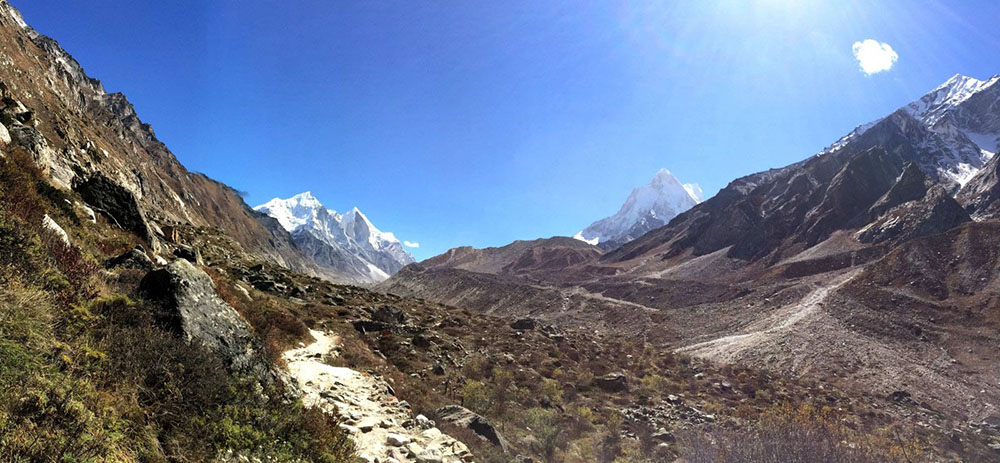
Gaumukh Temperature
The average temperature at Gomukh and on the trek remains around 15°C to 16°C during summer; and around 5°C to 6°C during the months of September, October, and November. It snows heavily in December, January, and March here with temperatures way below zero degrees making the area inaccessible.
Gaumukh Height
Gaumukh is located at an altitude of 13,200 ft.
Gangotri to Gaumukh Distance
The total distance between Gangotri to Gaumukh is 18 kilometers.
Gangotri to Gaumukh by Pony
Horses and ponies are not allowed on the Gaumukh trail and you must complete the journey on foot only
Also Read: 12 Scenic and Offbeat Places in Uttarakhand
Gaumukh Trek Difficulty
The difficulty level of the Gaumukh trek is moderate to difficult.
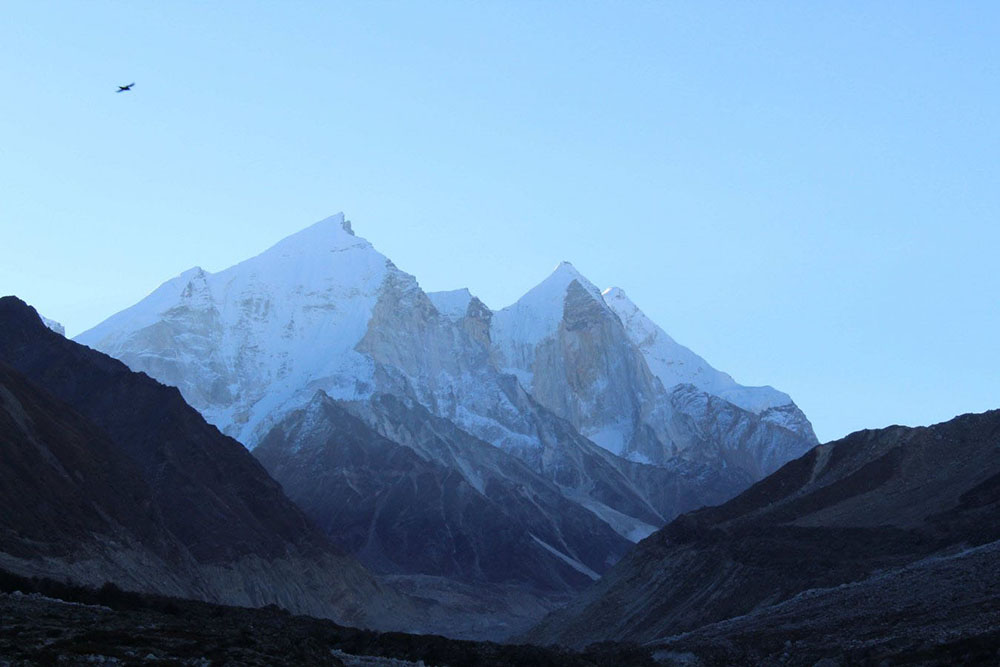
Gaumukh Trek Itinerary
Starting from Delhi, you can follow the following itinerary for a trip to Gangotri and Gaumukh. I am assuming Delhi as the starting point here but even if you were coming from a different city, only the journey to and from Delhi will be different. The trek details from Gangotri will still remain applicable.
- Delhi to Rishikesh / Chamba – Day 1
- Rishikesh Chamba to Gangotri – Day 2
- Gangotri to Chirbasa to Bhojbasa – Day 3
- Bhojbasa to Gomukh to Bhojbasa to Chirbasa to Gangotri – Day 4
- Gangotri to Rishikesh = Day 5
- Rishikesh to Delhi – Day 6
Gaumukh Tapovan Trek
If you had some more time in hand, then you can extend your trek further to Tapovan. Please note though that for Tapovan, you will need to hire a local guide and arrange for your permits accordingly. Tapovan trek cannot and must not be attempted on your own without proper guidance.
- Delhi to Rishikesh – Day 1
- Rishikesh to Gangotri – Day 2
- Gangotri to Bhojbasa – Day 3
- Bhojbasa to Gomukh to Tapovan – Day 4
- Tapovan to Bhojbasa – Day 5
- Bhojwassa to Gangotri – Day 6
- Gangotri to Rishikesh – Day 7
- Rishikesh to Delhi – Day 8
That pretty much is all that you need to know about trekking making a trip to Gangotri and then trekking to Gaumukh. I hope the information above was of help. If you have any questions; or need any other details; please feel free to ask in the comments section below, or at our Community Forum , and I will be glad to answer.
Vargis.Khan
Not much to write about me really except for that I love to travel around whenever I can and to wherever I can. This blog is just a small attempt to share my travel experiences with the world. Hope you like it !!!
Related Articles
Alpather lake trek – a complete travel guide, thajiwas glacier – sonamarg to thajiwas glacier trek..., sonamarg to thajiwas glacier – a beautiful trek, 66 comments.
Hi Vargis Bhai, thank you so much for this great info. I’m thinking about doing this trek at mid July (2023) – do you think it’s reasonable (regarding weather)? Thanks
It is not advised to attempt the trek in July due to the monsoon season bhai … May, June are better
Thanks Vargis for your reply. Do you have any other 5-7 day trek in India recommended for July? my starting point is Delhi (finishing a business trip there). Thanks!
Sorry Amichai … I am not intro trekking that much, have only done a handful
Hi I am AMAL, Planning to track in this month on 31st August, 2023 to Goumukh to Tapovan. How can I get a Guide. Please suggest me.
I want go Gomukh 24th to 28 th May . I am solo travelling. Please let me know is there any package for me.
I didn’t get permission without any travel agent to go Gomukh. How to get permission to go Gomukh? Please guide me
Hi Vargis Bhai,
If i hire a guide to go to tapovan, what do you think should be his charges per day. I plan to go solo with the guide. I am fit enough to reach bhojbasa on the first day and stay at tapovan the 2nd day and on third day back to gangotri. May be a day can be added if i go to nandanvan depending on weather.
Hi, we are planning to trek to gomukh in mid May 2023 with our 2 kids, aged 8 and 5 year olds. Are kids of this age permitted? Is it advisable to travel with kids of this age?
I will not advise bringing a 5 year old on the trek
I am 72 with no medical issues. Can I go for Gaumukh treking . Already have trek experience
Are horses available on this route for elderly or Palkis?
Hello Vargis,
First of all really appreciated for such a nice description. It’s really very much informative and helpful. I wish to go Gaumukh trek as a beginner. So for a beginner what would be your advise and how to prepare for this trek . Your valuable advise would be appreciable.
First of all really appreciated for such a nice description. It’s really very much informative and helpful. I wish to go Gaumukh trek as a beginner. I never trek before but would like t go in October 1st week. Your valuable advise would be appreciable.
Hi, we are planning for mid May 2023 with our 2 kids, aged 8 and 5 year olds. Are kids of this age permitted? Is it advisable to travel with kids of this age?
Hello Vargis bhai just loved your blog. I am planning for this trip and I want some guides contact number. Can you please provide me the contact number of the guides
Thank you Dibyendu Bhai. Sorry, I do not really have any contacts anymore.
Dear vargis really thanks for the detail writeup. It gives full information. Absolutely no quiry if you are a trekker.
Thank you Prasanna Bhai
Hi Varghis Bhai…Do you have any Idea if Solo trekkers are allowed this year in may?
Sunil Bhai too early to tell. It all depends on how the COVID story will unfold this year because of the recent increase in the cases
we are a group of 4.Is it okay to visit Gaumukh in 2 or 3rd week of November.Anything I should be aware of,other than that in your great blog
Hi Abhiram. I’m planning to visit Gaumukh as well around the 7th of Nov. I had some questions regarding the online permits. Apparently Gaumukh is categorised as a “Moderate Trek” although while registering I keep getting an error “Hiring an Agency is Mandatory for Moderate Treks”. Would it be possible if I could connect with you on this?
Hello Varghis, it is really an informative as well as wonderful write up. The links are really helpful. Could you just provide me one information? Will I be allowed to pitch tent at Tapovan? With best wishes, Krishnapriya [email protected]
Vargis Sir, First of all a huge thanks for such awesome, resourceful blog. I am planning to do a solo trek till Gomukh. Now my question is if I extend my plan till Tapovan, where I would get local guide?
Hi Subhadip Bhai – You can get guides for it from Uttarkashi.
Very friendly informative….sir…
Thanks Bhai
Highly informative blog. I am planning to trek un the month of May 2021. Do you know any local guide and his contact details who can guide us on the route? Please share the details at Shridhar Vaidya – Cell 9422048509 Thanks.
Dear Mr Varghis , I want to go gaumukh track may second week along with my wife and two other couple…but unfortunately website not open for gate permit….how can I do……when will this website open and how many days permit will given(maximum)
Dear vargis I read your blog nice information share…..thanks for it…
Hi Vargis, Thanks for the details. Could you please share that if I take Tapoban permit and take the route of right side of the river from Bhojbasa, is it possible to cover Bhojbasa-Gomukh-Bhojbasa-Gangotri on the same day? We are regular trekkers, want to go close to the Gomukh, but are time-bound. Adv thanks.
Bhai Gangotri to Gaumukh and back in a day will be extremely difficult. I really do not think it is doable. The second time I did this trek, we started at 6 AM from Gangotri and reached Gaumukh at around 3 after rushing through most of the way since we had already done it once before.
Very nicely described trail information. Almost all questions get answered while reading the blog on Gaumukh trek. Thanks a lot.
Wow.. really very informative and so well explained.i was finding information about this trek from many hours and finally came out to this. Your blog is awesome..i am planning this trip for next year. Recently i went to kedarnath trek and it was amazing. please give me your contact number or add me as if i need any help later (7053563370). Thank you so much
Hello vargis, If i visit rishikesh to gangotri then trekk gomaukh, then how i get permit from uttarkashi?
Dear Mr Varghis This is the first time I visited your blog. Excellent compilation of information, which will be very handy for any traveller. Thank you for putting this together which will help many travellers plan their journey. Regards Tagade
Thank you for taking the time to drop a note Mr. Tagade
What happens if one doesn’t not come back in 2 days as permit duration ? Also if one has applied for only upto gaumukh , can later at dfo office it may be extended upto tapovan .? Is it mandatory to take only tour operation whose list is available at permit website. Is night stay at tapovan allowed . Is tapovan worth visiting.
Great job of detailed info. Thanks and God bless you!
I want to go Gomukh ,Tapoban and nandanban next may 2020. Thanks for that information
You are welcome !!!
i am planning to start from delhi on 4th april 2020 and start gomukh trek on 6th april. Is this time right to trek to gomukh, if yes can i also add tapovan along with gomukh.
You can no but it is not the right time. If possible, delay it by a couple of weeks.
Hi Vargis, Is it possible to do this trek with wife and kids (8 and 10) with a stopover at Bhojbasa in Apr end? Kids are very active, wife is moderately active. My only worry is how is the route (boulders, narrow, etc).
Hi Vivek – To be very honest, I will not recommend it with kids that young.
Your blog had been very helpful during my several ladakh tours. And the high standard is maintained here too. It really comes handy in planning my trek to Tapoban.
Just a typo to mention in “Gaumukh Trek Details” section.
It reads, “…. The route will look something like this. Gangotri – (9 kms) – Chirbasa – (5 kms) – Bhojbasa – (4 kms) – Gangotri ( This should be GAUMUKH) = 18 Kms
Thank you for your kind words Bhai and for catching that error. I have corrected it now.
I want to go to gongotri,gomukh and tapovan solo in may 2020
Yes you can
We are a group of 5 people, we have planned in the month of May 2020
You can go, it will be open at that time
Sir, we are planing in this year May, i want to know the Guide charges for the entire Gomukh trek to complete ?
The Online Single Window website for Gaumukh Trek Pass isn’t working. Is the site closed?
The trek must be closed now for winter season
Sir I want to go gomukh October 19.10.19.I am alone please tell me about this trek route and how can I get a permit for gangotri national park.
Thanks for nice and detailed blog.
Thanks for taking the time to drop a note.
Thank you Vargis, very nice information
Thanks Abhimanyudu
Hi, Mr Khan,
I am SC Minocha, 66. I along with my nephew who is 24, are going to Gaumukh on 02 Oct. I have got the permit online. I have booked GMVN accn at Uttarkashi for 30 Sep and at Gangotri for 01 Oct and 04 Oct. Also at Bhojwasa for 02 Oct and 03 Oct.
I have planned in such a way that, if I don’t get Pony, I can manage. I have done Kailash Mansarovar Yatra, Kedarnath and Amarnath Yatra, partially on foot and partially on Pony.
Your valuable comments please.
Hi Mr. Minocha, may i know through which website did you manage to get the online permit. The following link doesnt seem to be working.
http://www.swsuttarkashi.com/Permission/GangotriNationalPark
thanks for the help.
Hi Vargis, is it possible to do Gangotri to Gaumukh and back in 1 day. We are experienced trekkers. Is the total trek 18 km one way or round trip ?
God bless you Sir. Wonderful description. I will ever remain grateful to you sir. Thanks.
Thank you for taking the time to drop a note Mr. Banerjee. I am glad that the information was of help.
I am planning for this trip I need some details could you please give me your contact no. so that it will be good for me my no. is 7503226176
And your blog is very awesome !!
Leave a Comment Cancel Reply
Save my name, email, and website in this browser for the next time I comment.
You will be redirected to your dashboard shortly. We will also call you back in 24 hrs .
- Gangotri Glacier Trek Is A Challenging Journey In The Mystic Himalayan Land
Men die but travelers live, forever! They live in the beaten trails, crushed snow, whistling woods and ruffled leaves that just got swept off by the autumn wind. Gangotri Glacier Trek is one such exciting trail in the Garhwal Himalayas that makes for a memorable trip to the source feeding river Ganga river. Walking in the shadow of guardian mountains at an altitude ranging from 4000 meters to 6500 meters is the ultimate thrill for the adventure seekers.
Gangotri is a challenging trek in the heart of the Himalayas spanning from Gangotri to Gaumukh. You can pick from a range of trails in the Himalayan land. The 17 km trek to the holy land of Hindus is located by the banks of Bhagirathi and endowed with exceptional escapades making for truly an unforgettable experience.
Table Of Content
1. Gangotri Glacier – A Mountaineer’s Muse 2. Gangotri Glacier Trek – Popular Routes 3. The Gangotri Gaumukh Tapovan Trek 4. Best Time To Plan A Trek To Gangotri Glacier 5. How To Reach Gangotri Glacier 6. Things To Pack For Gangotri Glacier Trek 7. Popular Attractions Near Gangotri Glacier 8. How Are The Treks For Gangotri Glacier And Yamunotri? 9. What Are The Top 10 Places To Trek In India?
Gangotri Glacier – A Mountaineer’s Muse

Image Source
Located in the extreme terrain of Uttarkashi region, Gangotri Glacier is a 28 km long and almost 4 km wide. Originating from right below the Chaukhamba Peak the glacier flows northwest and the course of water takes a turn creating the shape of a cow’s mouth thus the name Gaumukh . The Gangotri Glacier borders China and is the primary source of water for Ganga and Bhagirathi – one of the major tributaries of Ganga.
Gangotri being the largest Himalayan Glacier is enveloped by Bhagirathi III, Meru, Shivling and Thalay Sagar Peaks. The lush meadows and majestic nature around make for an exciting prospect for adventurers and trekkers. Gangotri Glacier is a group of 18 tributary glaciers among which 7 Rakt Varn Glacier, 8 Chaturangi Glacier and 3 Kirti Glacier. Swachand, Miandi, Sumeru, and Ghanohim are a few other tributary glaciers that form the Gangotri. Maitri, Meru, Bhrigupanth, and Manda Glaciers feed the river Bhagirathi.
Gangotri Glacier Trek – Popular Routes
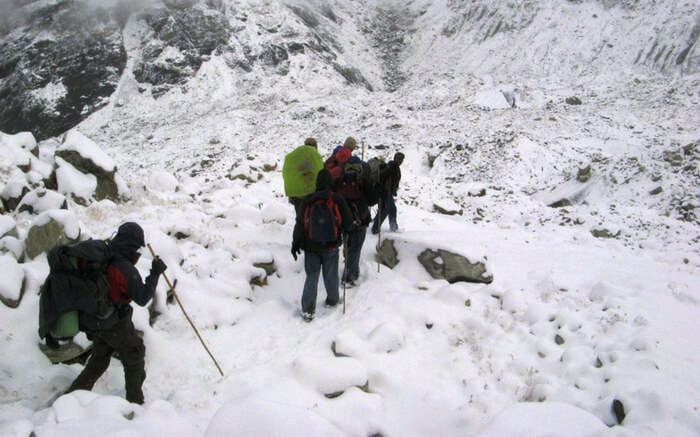
There are a few popular routes around Gangotri Glacier, which itself is a culmination of multiple glaciers. Pick from the range of trek circuits that include Gangotri Gaumukh Trek, Gangotri Gomukh Tapovan Trek, Gangotri Tapovan Trek and Gangotri trek difficulty varies with routes. From a couple of days to 4-5 days, these treks are absolutely thrilling and a trail to watch out in the Himalayan land.
Given the popularity based on the difficulty of treks, and awe-inspiring views around, I propose the Gangotri Gaumukh Tapovan Trek .
Must Read: 19 Most Beautiful Places To Visit In Uttarakhand In Winter
The Gangotri Gaumukh Tapovan Trek
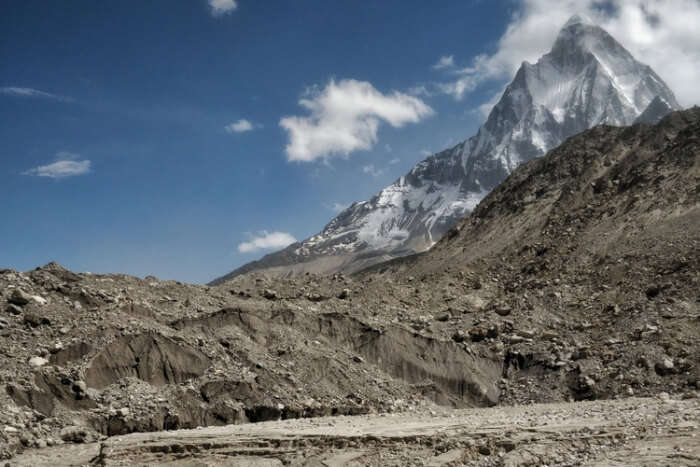
The popular trek cuts through the lush meadows and absolute greenery, encircles glacier and rivulets before making a complete turn.
Ideal duration: 5 days Difficulty level: Medium
Route: Gangotri – Chirbasa – Bhojbasa – Gaumukh – Tapovan – Chirbasa – Gangotri
Arrival in Gangotri, rest, and acclimatise

Altitude: 10,055 feet
A 12-hour drive from Rishikesh leads you to Gangotri. Lofty mountain peaks, glaciers, deodars, and stunning vistas decorate your temporary habitat in the heart of the Garhwal Himalayas. Thin air and holy river flowing around cleanse your soul as you prepare to head for the glorious trek in days to come. Gangotri is a religious sojourn thronged by spiritual seekers. Bhagirathi, a tributary of Ganga, originates from here.
Day 1 – Gangotri to Chirbasa
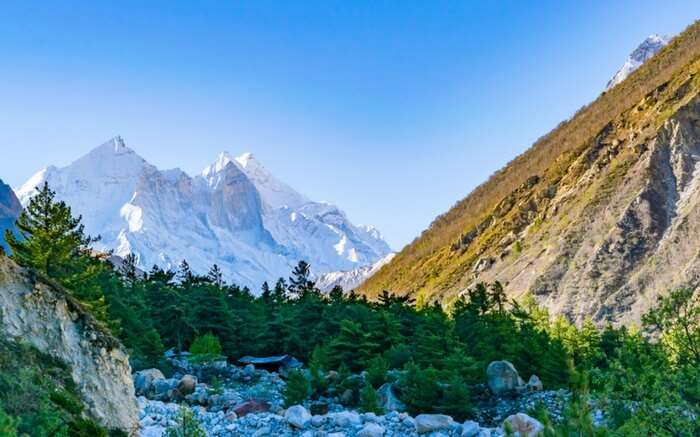
Altitude: 11,761 feet Distance: 9 km, Time taken: 6 hours
Sudarshan Parbat at 21, 345 feet looms large over the forest checkpoint making for an exceptional spectacle on the first day of the trek. Boulders, deserted glaciers, and cluster of peaks are the prominent sight enroute that you would find here. After a long day of trek, arrive in Chirbasa. GMVN huts and campsites are the only option of stay here. Bhagirathi river flowing in the close proximity makes the campsite a scenic hideout.
Day 2 – Chirbasa to Bhojbasa

Altitude: 12,450 feet Distance: 5 km, Time taken: 3 hours
A comparatively short but certainly a challenging day of the trek. Some steep climb in the beginning followed by gradual upslope makes this climb easier for trekkers. Carry sufficient water with you because you won’t find too many options. Upon reaching Bhojbasa, take an acclimatisation walk to Gaumukh and head back to the campsite. Stay cautious, there are 8-9 landslide prone bends during the stretch.
Move quickly, resting is not recommended here. Bhojbasa happens to be the widest point in the valley and you are absolutely going to love the beauty of the campsite here. There are a few igloo-like structures here. Staying in these places require the permission of forest officials. A few trek operators allow you an extra day to explore and get acclimatised to conditions in Tapovan.
Suggested Read: Nanda Devi National Park: A Sanctuary In The Garhwal Himalayas
Day 3 – Bhojbasa to Tapovan via Gaumukh

Altitude: 14,200 feet Distance: 9 km, Time taken : 7 hours
Long day, gradual ascents, flat descents and jagged pathways, this trail here will test you on many levels. Campsite lies tucked in the meadows below Mount Shivling. With imposing vistas all around, this place will fascinate the shutterbug in you.
Suggested Read: 30 Places To Visit In India In April 2022: Beat The Heat This Summer Like A Pro!
Day 4 – Tapovan to Chirbasa
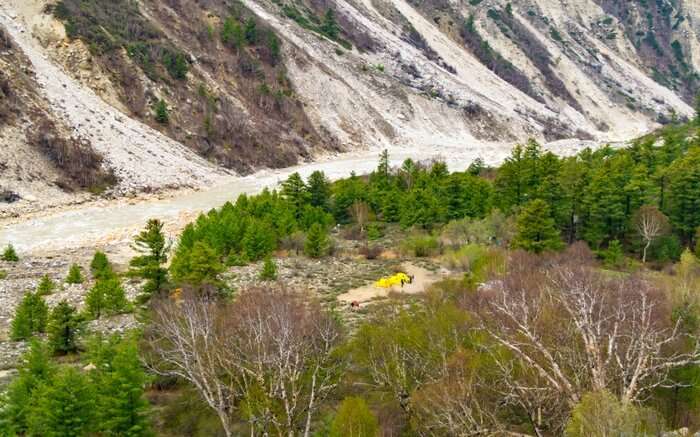
Altitude: 11,750 feet Distance: 14 km, Time taken: 8.5 hours
Another day of daunting trek when you negotiate turns, bends, and climbs to walk almost 14 km spanning the entire day. Difficult descent followed by a few ascents make this patch an exciting one. If you have time in the evening, you can explore Tapovan, actually there’s a lot to explore there.
Tapovan is 2 km in length and makes for a beautiful campsite. However, not the entire area is suitable for camping. Neelatal is the place to watch out for the place from where Mt. Meru looks the closest and most stunning.
Suggested Read: Hampi Ranked Second In New York Times ‘Places To See In 2019, Making India Proud
Day 5 – Chirbasa to Gangotri
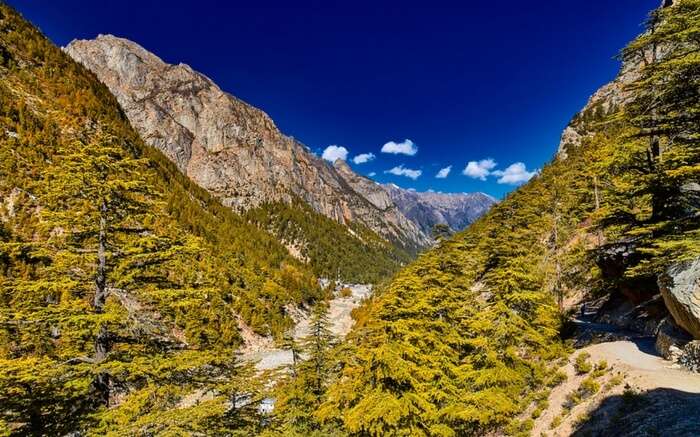
Altitude: 10,050 feet Distance: 9 km, Time taken: 5 hours
You have already walked this trail. The continuous descent can take a toll on your toes. Take it slow, enjoy the vistas, the moderate descent is steady and gradual. There are a few streams en route, so you have options to splash your face with some glacial water sourced from the Himalayas. The wonderful trek spanning over the 5 days would turn out to be the most memorable journey you ever took.
Suggested Read: Chandrashila Trek With Chopta And Tungnath Is An Epic 5-Day Quest
Best Time To Plan A Trek To Gangotri Glacier
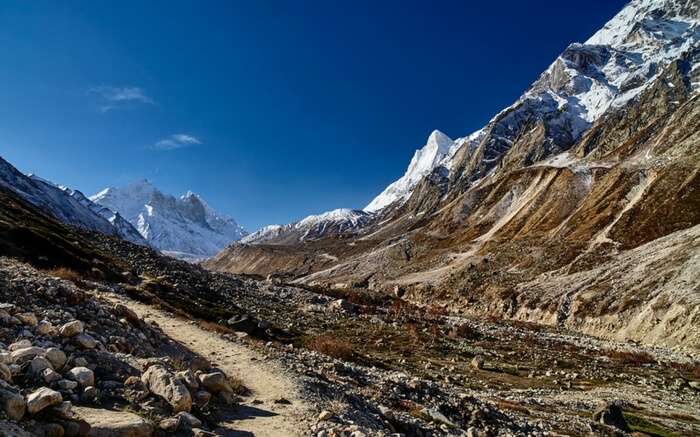
Mid-April to June and September to November is the best time to go for the Gangotri Glacier Trek. The weather is neither too cold nor too much of rainfall. Hence, not dangerous to trek. Summer months are the most suitable for the Gangotri Glacier Trek. Skies are clear, and sun shines the brightest. Spring is the another most preferred time to visit Gangotri apart from summer. Greenery everywhere and pleasant climate makes trekking so much of fun during spring.
Monsoon and Winter are not at all appropriate seasons to take the Gangotri Glacier Trek. While monsoon makes the conditions difficult with sloppy trails, the road to Chardham is closed during winter because of excessive snowfall. From November – March the road remain closed.
Suggested Read: Trekking In Darjeeling: Top 9 Trekking Routes For An Thrilling Holiday In The Tea Hills
How To Reach Gangotri Glacier
Gangotri Glacier is easily accessible by road. The trek commences from Gangotri Temple and continues up to Gaumukh.
By air: Jolly Grant Airport in Dehradun is the nearest arirstrip to Gangotri Temple, which is 257Km from Gangotri temple. The airport is well connected with most of the airports across India. Travel the rest of the distance from Airport to Gangotri by a bus or in a private vehicle.
By rail: Rishikesh railway station is the nearest railhead 243 km from Gangotri glacier. Cabs and buses ply from Rishikesh to Gangotri frequently.
By road: Gangotri Glacier can be easily accessed from Rishikesh or Dehradun by road. Both of these destinations are overnight journey from Delhi.
Things To Pack For Gangotri Glacier Trek
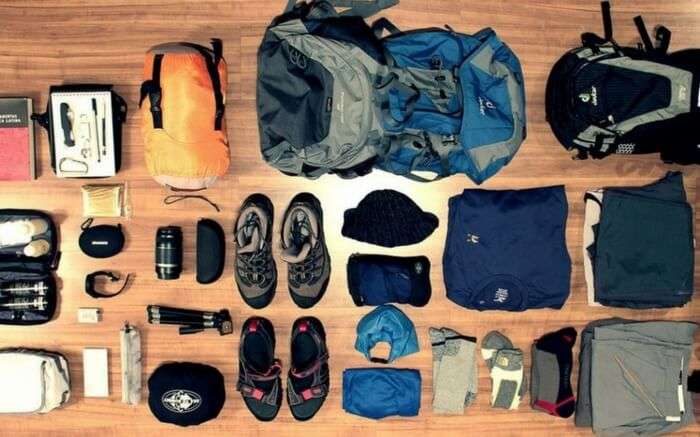
- Two pairs of synthetic track pants
- Full sleeves tees with collar
- Fleece jacket
- Full sleeves thick jacket
- Enough undergarments
- Thermal innerwear
- Woolen monkey cap/balaclava
- Woolen hand gloves/ Synthetic glove/ Surgical Glove
- Woolen head-scarf/ muffler
- Light towel
ii) Shoes & socks
- Proper trekking shoes
- Sports socks
- Woollen socks
iii) Skin care essentials
- Sunglasses with 100% UV protection
- Sunscreen lotion
iv) Medicines
Crocin, Avomine, Avil, Combiflam, Disprin, Norflox, Crepe bandage, Band aid, Digene, Gauze cloth, Leukoplast, Cotton, ORS, Betadine or any antiseptic cream, Volini or Moov spray
v) Other accessories
- Hot water bottle/bag
- Backpack (55 – 65 L), sturdy & rugged
- Trekking pole is mandatory
- LED Torch/ headlamps are preferable
Popular Attractions Near Gangotri Glacier

Gangotri Glacier is an adventurer’s paradise as well as a pilgrim’s destination for obvious reason. But the fact that this place is one of the extreme locations in the Himalayas makes it not too friendly of a tourist destination. Of all the popular places in Uttarkashi, there are a few places that everyone must visit when planning a trip to Gangotri Glacier. Here are a few places!
- Bandarpunch Glacier
How Are The Treks For Gangotri Glacier And Yamunotri?
Gangotri and Yamunotri Glaciers are considered as one of the toughest treks in the Himalayan region. These treks are mostly taken during summer and range from moderate to tough in difficulty rating.
What Are The Top 10 Places To Trek In India?
The most popular treks in India are Chadar Trek, Hampa Pass Trek, Roopkund Trek, Chandrashila Trek, Valley of Flowers Trek, Kheerganga Trek, The Markha Valley Trek, Kuwari Pass Trek, Kedarnath Trek, and Kedar Kanth Trek
Further Read: Top 44 Places To Visit In Uttarakhand
Every log and stone lying along the beautiful pathways treasure with them numerous timelapses and as many stories of bravery and grit. After walking the Gangotri Glacier Trek you would know that you have tasted the holy grail. plan a trip without wasting a moment and make the best memories of your life.
Frequently Asked Questions About Gangotri Glacier Trek
How do I get to the Gangotri Glacier trekking route?
Gomukh and Tapovan near Gangotri Glacier are not only popular pilgrim spots but also attracts trekkers from all across the world. The trek commences at Gangotri town itself but the verification of permit is done at the forest check post which is nearly 2 kilometers from the town.
What are the best treks in India?
If you are looking for the best Himalayan trek then Chanderkhani Pass Trek, Bagini Glacier Trek, Kuari Pass Trek, Har ki Dun Trek, Kedarkantha trek, Prashar Lake trek, and Brahmatal trek are the most popular ones!
What is the height of Gangotri?
The height of Gangotri is 3,415 meters.
What is the approximate length of Gangotri Glacier?
Currently, the approximate length of the Gangotri Glacier is 30.2 kilometers. It is between 0.5 to 2.5 kilometers broad. If you are planning a trip to Gangotri Glacier then you must know that it is amongst the largest glacier in the Himalayas.
How do I get to Tapovan?
Tapovan is located at a trekking distance of 20 kilometers from Gangotri. You can catch any local or private bus or even hire a taxi from the major cities of Uttarakhand such as Dehradun, Haridwar, and Rishikesh.
What is the best time to visit Gangotri?
The best time to visit Gangotri is from April to June and from September to October. Though cold, the weather is awesome during this time making it perfect for sightseeing and adventurous expeditions.
Can we go to Gangotri by car?
Yes, you can surely go to Gangotri by car. If you are heading from Rishikesh then it will take nearly 12 hours to reach Gangotri. If you are planning to go here by car then you also visit other interesting places on your visit to Gangotri such as Uttarkashi, Gaumukh, etc.
Which God is Gangotri?
Gangotri temple is dedicated to Goddess Ganga which is located on the bank of River Bhagirathi.
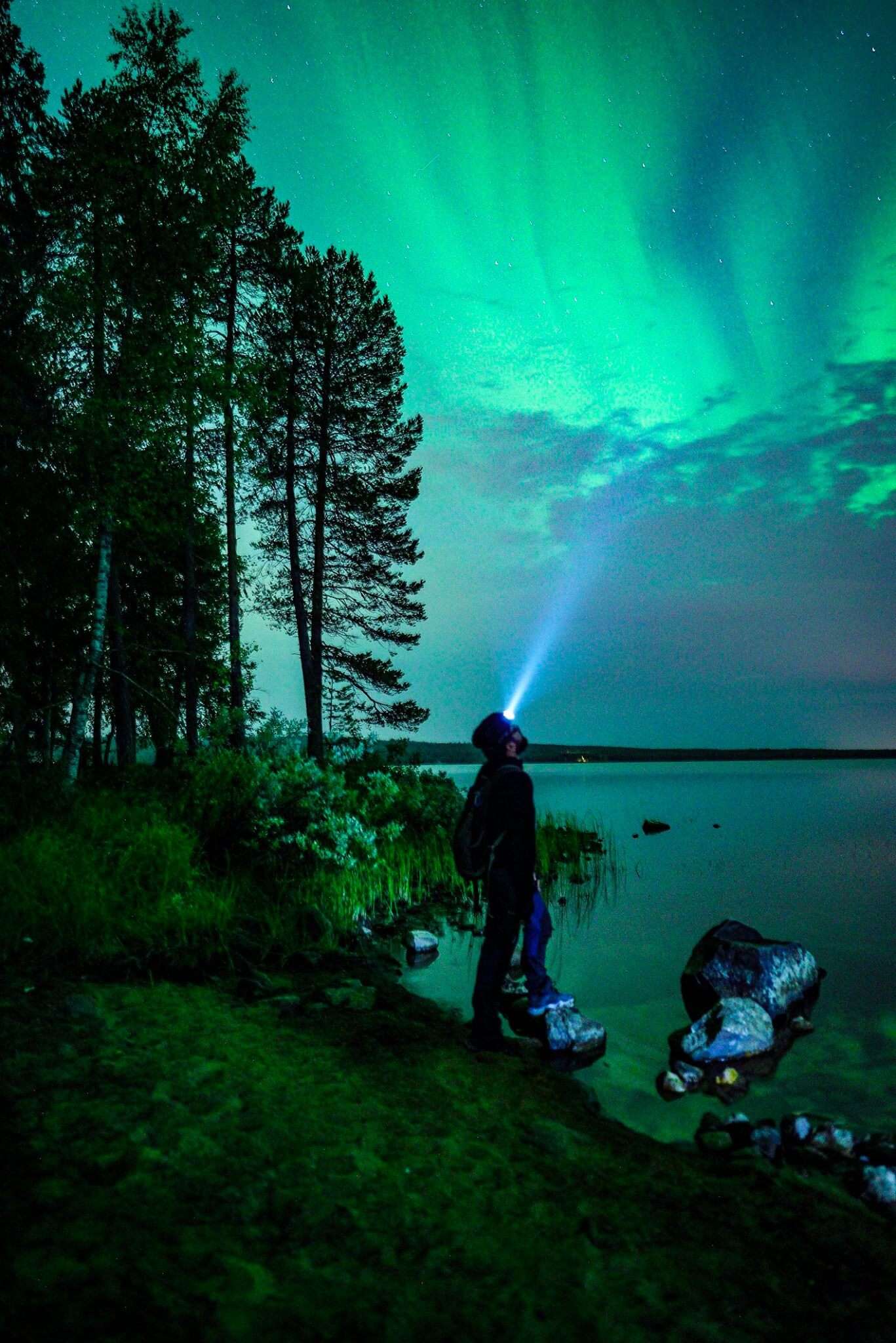
Amit Chandra
A perpetual nature seeker, Amit is on a mission to explore the best of planet Earth. Much famed as the Whistling Hound, Amit’s is currently based out of Wroclaw in Poland, and is experiencing the best of his life in Eastern Europe and Scandinavia.
Places to Visit In India
- 30 Best Places To Visit In Bangalore In...
- 64 Best Places To Visit In Kerala For...
- 39 Best Places To Visit In October In...
- 101 Places To Visit In India Before You...
- 20 Places To Visit In Sakleshpur In 2024...
- 35 Exotic Places To Visit In December In...
- 32 Best Places To Visit In January In...
- 20 Best Places To Visit In Meghalaya For...
- 12 Places To Visit In Punjab To Witness...
- Unravel Places To Visit In Uttarakhand For A...
- 26 Best Places To Visit In Jammu For...
- 29 Places To Visit In Monsoon In India...
- Best Places To Visit In August In India...
- 36 Beautiful Places To Visit In Kashmir One...
- 55 Fascinating Places To Visit In Hyderabad In...
- 35 Ultimate Places To Visit In July In...
- 72 Places To Visit In Rajasthan In 2024
- 42 Best Places To Visit In Pondicherry In...
- 33 Spectacular Places To Visit In Mumbai On...
- 43 Places To Visit In West Bengal In...
- 41 Best Places To Visit In June In...
- 35 Best Places To Visit In Mysore In...
- 35 Places To Visit In Coorg For A...
- 54 Best Places To Visit In India In...
- 8 Places To Visit In Jibhi For A...
- 64 Best Tourist Places To Visit In Goa...
- 25 Best Places To Visit In Visakhapatnam In...
- 16 Places To Visit In Lucknow That Showcase...
- 60 Best Places To Visit In Kolkata That...
International Places To Visit
- 35 Best Places To Visit In Japan That...
- 40 Best Places To Visit In Canada In...
- 28 Places To Visit In October In World...
- 28 Stunning Places To Visit In South Korea...
- 25 Places To Visit In Manila In 2024...
- 19 Best Places To Visit In Morocco In...
- 34 Best Places To Visit In Austria In...
- 82 Best Places To Visit In Turkey That...
- 10 Breathtaking Places To Visit In The World...
- 22 Best Places To Visit In Netherlands: The...
- 24 Fabulous Places To Visit In Ireland: The...
- 19 Best Places To Visit In London In...
- Discover 24 Places To Visit In Switzerland In...
- 17 Mystical Places To Visit In Egypt In...
- 15 Places To Visit In United Kingdom That’ll...
- 33 Best Places To Visit In Amsterdam On...
- 19 Best Places To Visit In Kuala Lumpur...
- 42 Best Places To Visit In Bangkok In...
- 11 Popular Places To Visit In Doha For...
- 26 Places To Visit In Germany In 2024...
- 32 Places To Visit In Belgium That Make...
- 15 Places To Visit In USA That Reflect...
- 37 Best Places To Visit In Dubai At...
- 15 Top Places To Visit In Asia To...
- 20 Must-See Places To Visit In Milan In...
- Top 27 Places To Visit In Greece In...
- 31 Places To Visit In Abu Dhabi In...
- 25 Places To Visit In August In The...
- 15 Best Places To Visit In Chicago That...
- 14 Places To Visit In Berlin You Must...
Things To Do
- 40 Things To Do In Pondicherry In 2024...
- 12 Best Things To Do In Matheran In...
- 23 Intoxicating Things To Do In Turkey In...
- Top 14 Interesting Things To Do In Kanyakumari...
- 38 Things To Do In Gokarna To Escape...
- 12 Best Things To Do In Varanasi For...
- 21 Remarkable Things To Do In Krabi In...
- 16 Things To Do On Honeymoon In 2024
- 23 Things To Do In Chennai To Explore...
- 20 Things To Do In Ahmedabad For An...
- 30 Best Things To Do In Wayanad For...
- 37 Amazing Things To Do In Kerala For...
- Top 39 Things To Do In Jaipur
- 19 Things To Do In Mussoorie For A...
- 33 Best Things To Do In Kolkata In...
- Top 25 Things To Do In Kodaikanal For...
- 32 Things To Do In Ooty That Will...
- 15 Things To Do In Srinagar That Will...
- 20 Things To Do In Darjeeling
- 27 Kickass Things To Do In Malaysia
- 25 Best Things To Do In Phuket That...
- 18 Awesome Things To Do In Kasol On...
- 27 Exciting Things To Do In Chikmagalur
- 9 Things To Do In Mathura For An...
- 23 Things To Do In Lonavala For A...
- 10 Best Things To Do In Lakshadweep For...
- 30 Joyful Things To Do In Bhutan
- 38 Exhilarating Things To Do In Udaipur In...
- 18 Best Things To Do In Chandigarh
- 29 Amazing Things To Do In Shimla
- 30 Things To Do In Dehradun In 2024
- 7 Incredible Things To Do In Vrindavan For...
Recent Posts

रोमांच चाहने वालों के लिए 2024 में 15 बैंगलोर के पास सर्वोत्तम ट्रैकिंग स्थान

7 Best Spas In Sri Lanka For A Rejuvenating Getaway

10 Cheapest Cities In Europe Where Backpackers Can Travel On A Budget!
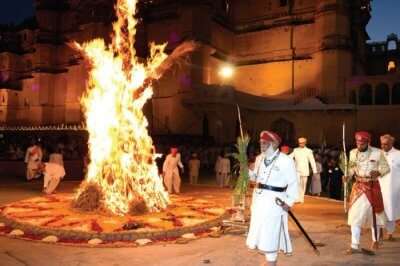
Holi In Udaipur 2023: A Royal Affair For All Those Who Love The Festival Of Colors
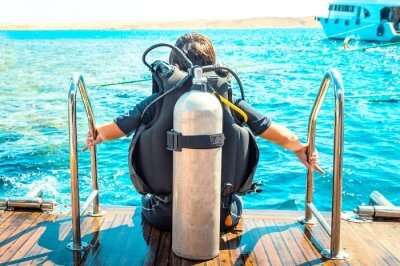
10 Places To Go Scuba Diving In Greenland Every Adventurer Must Tick Off Their Bucket List!
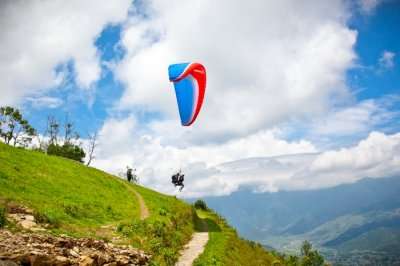
Go Paragliding In Khajjiar For A Thrilling Weekend Retreat In 2023
Trending Blogs

20 Mysterious Places In India To Visit In 2024 More Bizarre Than The Bermuda Triangle

10 Scariest Roads In India That Are A Driver’s Nightmare
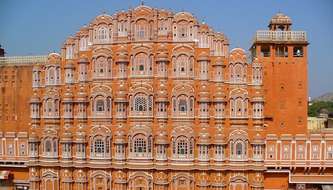
101 Places To Visit In India Before You Turn 30 in 2024

35 Exotic Places To Visit In December In India 2024 To Enjoy A Surreal Vacation

64 Top Honeymoon Destinations In India In 2024

95 Best Honeymoon Destinations In The World In 2023 For A Romantic Escape!
Best Places To Visit In India By Month
Best places to visit outside india by month.
- TravelTriangle
- topical »
- Tour Packages
- Honeymoon Packages
- Family Packages
- Budget Tour Packages
- Luxury Tour Packages
- Adventure Tour Packages
- Group Tour Packages
- Kerala Tour Packages
- Goa Tour Packages
- Andaman Tour Packages
- Sikkim Tour Packages
- Himachal Tour Packages
- Uttarakhand Tour Packages
- Rajasthan Tour Packages
- Tour Packages From Delhi
- Tour Packages From Mumbai
- Tour Packages From Bangalore
- Tour Packages From Chennai
- Tour Packages From Kolkata
- Tour Packages From Hyderabad
- Tour Packages From Ahmedabad
- Kerala Tourism
- Goa Tourism
- Sikkim Tourism
- Andaman Tourism
- Himachal Tourism
- Uttarakhand Tourism
- Rajasthan Tourism
- Hotels in Kerala
- Hotels in Goa
- Hotels in Sikkim
- Hotels in Andaman
- Hotels in Himachal
- Hotels in Uttarakhand
- Hotels in Rajasthan

GANGOTRI GAUMUKH TAPOVAN TREK
The Gangotri Gaumukh Tapovan Trek, also known as the Source of the Ganges, is an amazing trek situated at 14,640 ft above sea level in the Gangotri National park in the Garhwal Himalayas. It is a place where both people who love adventure and those on a religious journey go.
The name “Gaumukh” comes from the famous Gaumukh glacier, which is where the holy Ganges River begins.
The Gangotri trek is 48 km long trek which can be done in 6 days from Rishikesh to Rishikesh. The Gaumukh Tapovan trek is famous for its beautiful landscapes, like the Bhagirathi peaks, Mt. Shivalinga, and many other famous peaks. You will see lush meadows in Tapovan and rocky areas with big boulders.
Gaumukh Tapovan trek also lets you feel connected to the spiritual importance of the Ganges River. Pilgrims come here to take holy water and a dip to seek blessings, and people who love adventure are excited by the natural beauty and challenges the gangotri gomukh tapovan trek offers. This route has been used for a very long time by spiritual seekers and is a dream come true for nature lovers.
During the Gangotri Gaumukh Tapovan trek, we will explore the special place called “Zero point” at Gaumukh s
BRIEF ITINERARY
Day 1: Drive from Rishikesh to Gangotri (~ 3100 m/10170 ft) – 260 kms – 10 to 11 hours drive Day 2: Trek to Bhojbasa (~ 3780/12400 ft)– 14 kms – 7 to 8 hours. Camp for the night Day 3: Trek to Gaumukh (~ 4050 m/12280 ft) is 4 Kms – trek from Gaumukh to Tapovan (~4350 m/14270 ft) around 5 Kms and to camping ground Near Mauni Baba Ashram – 7 to 8 hours walk. Camp for the night Day 4: Early morning explore Tapovan meadows and around. After breakfast descent to Bhojbasa – 6 to 7 hours. Camp for the night Day 5: Trek back to Gangotri – 14 kms – 6 to 7 hours , drive from Gangotri to Gangnani – 50 kms – 2 to 3 hours drive, overnight stay at gangnani Day 6: Trek concludes, drive back to Rishikesh – 200 kms – 8 to 9 hours Drive
TREK COST : RS. 30000/- PER PERSON
Number of Days: 06 Days Gangotri to Gaumukh Trek distance : 18 kms Category : Moderate to Difficult Adventure Area: Gharwal Himalayas, Uttarakhand, India Highlights: Gangotri Temple, Gangnani hotspring, Glacial origin, majestic peaks, serene meadows, spiritual journey, panoramic vistas Highest point: 4463 m Gaumukh Tapovan Trek best time: May to June & Sept till Nov
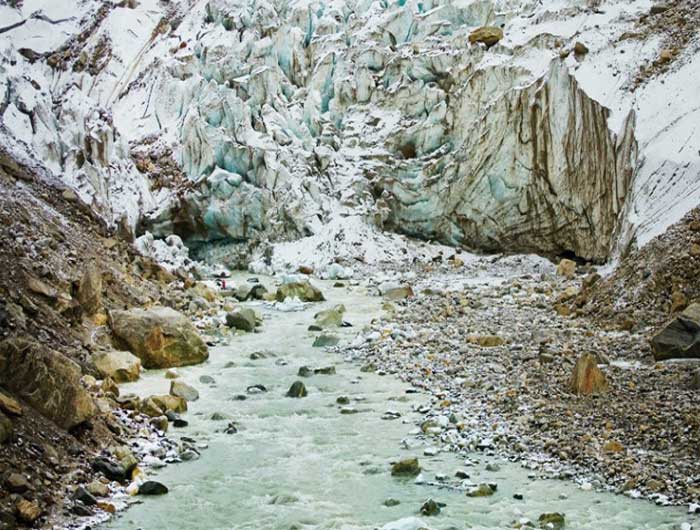
DETAILED ITINERARY - GANGOTRI GAUMUKH TAPOVAN TREK
Day 1: Drive from Rishikesh to Gangotri (~ 3100 m/10170 ft) – 260 kms – 10 to 11 hours drive Our journey begins at 6:30 AM. Then we drive to Gangotri along the river bank of river Ganga (Bhagirathi) and in the mid-way visit Hot spring and take a sulphur bath in Gangnani. On the way to our base camp, we will see the beautiful view of the Greater Himalayas, Harshil and green forest. On arrival check in the homestay/ hotel in the evening as we visit the holy city Gangotri. By 7 pm we will see a nice Ceremony (Arti) of Goddess GANGA. Dinner and overnight stay.
Day 2: Trek to Bhojbasa (~ 3780/12400 ft)– 14 kms – 7 to 8 hours. Camp for the night. Morning, you fill yourself with food needed for the trek to Bhojbasa that will take about 8 hours to cover. The scenery is just magnificent, and you cannot stop to admire the beauty of the forests and the valleys down below, especially Chirbasa or the abode of pine trees. The entire trek today is along the roaring Bhagirathi River. Trek above the Bhagirathi River is on a relatively groomed path to Chirbasa. Above Chirbasa, the valley widens and offers views of snow-clad peaks in the south. It is a gentle walk to Bhojbasa (3,780m). Running virtually due south-east along the river, the Bhagirathi peaks over a beacon to the source of the river. Bhojbasa is the widest point in the upper valley, and camping here at night offers magnificent moonlit views of the Bhagirathi peaks. The trek further to Bhojbasa is along the path that slowly flattens out and dips suddenly to reveal Bhojbasa with a small temple and a potential campsite near the river. The camp is set up near the river. Dinner and overnight stay in tents. Enjoy incredible scenery and sight of Bhagirathi and ShivLing Mountain, dinner and rest under the tent.
Day 3: Trek to Gaumukh (~ 4050 m/12280 ft) is 4 Kms – trek from Gaumukh to Tapovan (~4350 m/14270 ft) around 5 Kms and to camping ground Near Mauni Baba Ashram – 7 to 8 hours walk. Camp for the night We will cross the river with a manual cable car first. The first four kilometres upstream from Bhojbasa are surprising though the narrow valley. The path runs smoothly above the river and is fringed by a grassy meadow. With about a kilometer to go, the terrain turns rocky, and one has to pick one’s way through the rocks and boulders, down to a sandy beach sheltered by enormous piles of granite. Incidentally, the beach is an excellent place to camp. Scour the water’s edge for shards of ice, or follow the broken path along the river’s edge to the very foot of Gaumukh (3,969m), and look up at the Shivling Peak (6543m) almost vertically above. Once you have reached the southern (left) bank of the river valley, the path is marked with a steep climb of nearly a thousand feet to the meadows at the base of Shivling Peak. This is Tapovan, an exquisitely watered spot from which the fabled peak of Shivling appears to sweep up in a wave of screen, granite, and snow. It is an idyllic camping spot; alternatively, a couple of Babas have establishments.
Day 4: Early morning explore Tapovan meadows and around. After breakfast descent to Bhojbasa – 6 to 7 hours. Camp for the night Tapovan is a high-altitude alpine meadow below Mt. Shivling, which dominates the landscape. Tapovan is over 2 km in length. The area close to Mt. Shivling is wet during early summer due to melting snow and glacial water. These grounds have been used by many sages to meditate over the centuries. Descent down to Bhojbasa through Zero point at Gaumukh, The Source of the Ganges.
Day 5: Trek back to Gangotri – 14 kms – 6 to 7 hours , drive from Gangotri to Gangnani – 50 kms – 2 to 3 hours drive, overnight stay It’s time to trace the trail back. It’s downhill all the way till Gangotri, allowing time for a drive to Gangnani.
Day 6: Trek concludes, drive back to Rishikesh – 200 kms – 8 to 9 hours Drive Our gangotri gaumukh tapovan trek concludes as we drive from tapovan from Gangnani to Uttarkashi at lunch and then drive to Rishikesh 200kms. At evening trip and services concludes with sweet memories.
FREQUENTLY ASKED QUESTIONS (FAQS) ABOUT GANGOTRI GAUMUKH TAPOVAN TREK
What is the Gangotri Gaumukh Tapovan Trek? The Gaumukh Tapovan Trek is a trekking journey in the Himalayan Mountains of Uttarakhand in India. It is a trek along the Ganges River upto where it begins the journey to Gaumukh glacier.
Where is the Gangotri Gaumukh Tapovan Trek located? This trek is located in the Gangotri national park in the Garhwal Himalayas of India.
Is there a permit required ? The permit is obtained enroute from Uttarkashi. The Gaumukh Tapovan trek permit cost is included in the overall package cost, you do not have to pay anything extra.
What is the Gaumukh? It is called Gaumukh because there is a famous glacier here that looks like a cow’s mouth. In Sanskrit, “Gaumukh” means “cow’s mouth.” The source of the river Ganges originates from here.
What can I see during the trek? You’ll see stunning landscapes with big mountains like Bhagirathi peaks and Mt. Shivalinga. There are also lush green meadows and rocky areas with broken rocks called moraine.
Is Gangotri and Gaumukh a holy place? Yes, many people come here on a religious journey. They believe that the Ganges River is holy, and its source is at Gaumukh. Pilgrims seek blessings here.
Can anyone go on Gaumukh Tapovan trek? While it is a bit challenging as it is graded as moderate adventure so anyone with good health and some trekking experience can go.
How long does the Gaumukh Tapovan trek take? The trek usually takes about 6-8 days, depending on your starting point and pace.
What is Tapovan ? Tapovan is a beautiful meadow. It is the base for Mt Shivalinga, situated at 14640 feet above sea level. where you can enjoy the serene surroundings. Tapovan is a place where many ancient sages meditated for years.
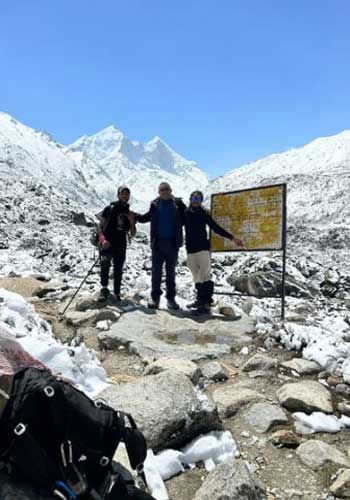
Kedarkantha Trek
Check Our Reviews
Tripadvisor
Quick Links
- Upcoming Events
- Privacy Policy
- Cancellation Policy
- Terms & Conditions
- +91 7505335151
- +91 8958343600
- [email protected]
- SECRET WATERFALL ROAD, UPPER TAPOVAN, TEHRI GARHWAL RISHIKESH

Gaumukh Tapovan Trek 2024 | Cost, Itinerary, Tips
Region: Uttarakhand
Base Camp: Gangotri
Grade: Moderate
Distance: 46 km
Min Age: 16 Years+
Best Season: Summer and Autumn
Trek Description
If you have ever wondered about a trek beyond adventure, Gaumukh Tapovan is a perfect destination. It is one of the most revered places in India, that offers you both adventure and spirituality. Located in the Uttarkashi district of Uttarakhand , This trek starts from Gangotri town and later ends in the same town. It takes around 6 nights and 7 days of total time to complete this journey successfully. During this timeframe, you will already be hiking to an altitude of 14,150 feet covering around 46 kilometers in distance.
Gangotri serves as the base camp for not only Tapovan Trek but also several other treks and expeditions. You can have an enjoyable journey visiting the famous Ganga Temple here and also the changes in landscapes and the beauty they come with.
Tapovan Trek takes you through the remote trail surrounded by the dense Deodar and Pine trees in Chirbasa and rugged terrain in the Bhojbasa areas. Exploring the local natural wonders, you will walk through the remote terrain before reaching Bhojbasa, where you can camp overnight. Bhojbasa was named after the dense forest of Bhojpatra ( Himalayan Birch ) found in the region. It is also a perfect site for sightseeing the Bhagirathi peaks. During the trek, you will find blue sheep grazing over the cliffs and valleys.
Despite all these, trek is also challenging, requiring trekkers to walk through loose rocks and steep landscapes. However, the views of Mount Shivling, Bhagirathi massif, Sudarshan, Meru, Kedar Dome, Gangotri Glacier and Chaturangi Glacier make this trek worthy.
While the trek is physically demanding, it also weaves in spiritual and cultural elements. This adventure isn’t just about conquering nature’s challenges; it’s also an experience that blends physical exertion with spiritual enrichment.
Drive Distance : 245 km
Drive Time : 9-10 hours
Altitude : 10,300 ft
The journey starts from Dehradun , where you can reach the spot via flight, bus, or train. From Dehradun, you will begin your journey to Gangotri, passing through the major landmarks such as Landour , Moriana Top , Uttarkashi , and Harsil .
In Uttarkashi, take time to purchase any necessary items. Remember, this is the last town where you will have multiple ATM services, so it is recommended to withdraw the essential cash from here.
Past Uttarkashi, we will cross Khedi Waterfall at Maneri, Jhala , Harsil , Dharali , and Bhaironghati .
Gangotri is a town where you can dive deep into the spiritual values. There is a Ganga Maiya Temple, where you can get insights into local Hindu religion and its significance.
Apart from that, Gangotri features numerous shops, restaurants, and hotels. So your stay here will be worthwhile for sure.
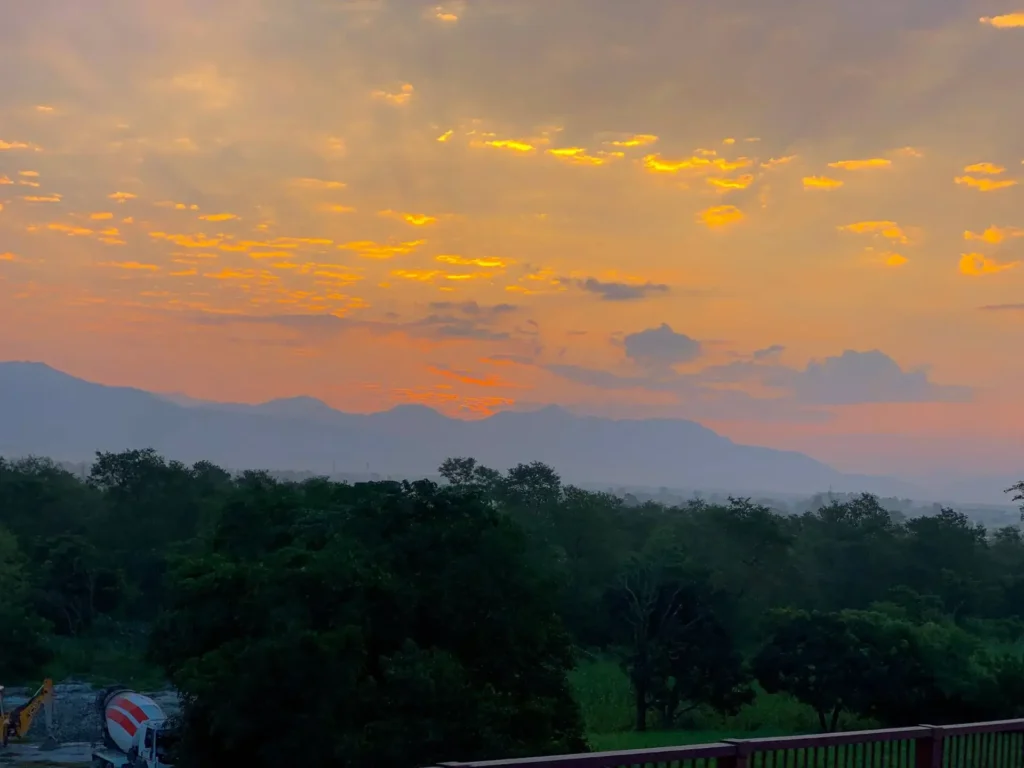
By the time you reach Gangotri, you will already be 3,415 meters above sea level. At such high altitudes, it is challenging to adapt due to low oxygen in the air and air pressure. As a result, trekkers might suffer from altitude related illnesses like AMS (Acute Mountain Sickness).
To avoid the dangers of altitude sickness, we will acclimate at Gangotri on the second day. We will start our day with a morning visit to Ganga Maiya Temple and explore the ancient cultural significance reflected in the architecture and sculpture.
Also, we will visit the nearby places, such as Surya Kunda , Pandava Gufa , and Ganga Ghats .
Most importantly, we will take rest to retain energy for the remaining trek. It is very important to have enough sleep, take proper diet, and hydrate yourself for proper acclimatization.

Trek Distance : 15 km
Trek Time : 6-8 hours
Altitude Gain : 2,650 ft
Altitude : 12,480 ft
Today, we will begin our journey early in the morning after a warm breakfast. After a few kilometers, we will reach the forest checkpoint and Ram Mandir. Take a few minutes to rest as your trek leader generates the final trek permit for all the trekkers. Take a group photo here and leave for your journey ahead.
From Check Point , we must walk another 7 kilometers to reach Chirbasa . The remote trail stretches through the conifer forest , which offers opportunity to encounter the flora and fauna in the region.
Before reaching Chirbasa we will come across a rock with spinkling water. The water from this sprinkler is full of minerals and really pure. Fill your water bottle here.
A lot trekkers ask us why we don’t camp at Chirbasa. The reason for this is the Chirbasa campsite is small and cramped, and you won’t get a proper camping experience here. Chirbasa also doesn’t have views as Bhojpbasa campsite. That’s why we give our trekkers a much needed acclimatization day and take them directly to Bhojbasa so that they can enjoy the view of Bhagirathi and the whole valley.
Once you cross Chirbasa, the valley opens up, and Bhagirathi peaks comes into view. On the trail, you will walk with pilgrims, fellow trekkers, porters, and Mules.
We will continue our hike towards Bhojbasa and cross multiple wooden bridges. Also, there comes a landslide area, where your balanced steps are a must. By evening, we will finally reach Bhojbasa, named after Bhojpatra. In ancient times, the leaves of Bhojpatra were used to write documents, state order, and religious texts.

Trek Distance : 8 km
Trek Time : 7-8 hours
Altitude Gain : 1,876 ft
Altitude : 14,150 ft
On the fourth day of this trek, we will head towards Tapovan from Bhojbasa, which is around 8 kilometers away. We must cross Bhagirathi River via Trolley before reaching today’s destination. It can take 1-2 hours for the entire batch to cross the river along with the team.
After that, we will pass through the pastureland rich in green shrubs and grass, where we can see Blue Sheep herds grazing. Gradually, we will find the landscape transforming into barren and rocky terrain.
Have lunch in between so that you can have the proper energy to climb Tapovan. You may not find water sources, so carrying 2 liters of water with you is advisable.
Along the trail, you will also see Akash Ganga flowing downwards from Tapovan and merging with Bhagirathi at Gaumukh below. During May and June, Akash Ganga has more water as compared to Autumn season. In some sections, you may even need to cross the stream. In that case, walk with attention and safety, and remove your shoes if needed.
The landscape is steep and challenging, so a gradual ascent is recommended. The trail leads us to Tapovan finally, which is a perfect place to view Gangotri Glacier, Bhagirathi Peaks, and Aakash Ganga. Similarly, the views of Mount Shivling and Meru Peak will welcome you with wide arms.
Visit Moni baba ashram if interested. From Moni baba Ashram walk ahead and from here, you will get to see the whole Gangotri Glacier , Chaturangi Glacier , Nandanvan , and Kedardome .
You will surprised to know that Tapovan is also famous for Astrophotography and Stargazing . At night enjoy the clear view of the whole Milky Way galaxy . Just make sure to wear gloves, and winter clothes to avoid chills.

Trek Time : 6-7 hours
Altitude Loss : 1,850 ft
Today is one of the exciting days of the Gaumukh Tapovan Trek. We will start our day with a sunrise view over Shivling , Bhagirathi , and Meru Peak. Then, we will prepare ourselves for a descent towards Bhojbasa, which takes around 6 to 7 hours.
After around 1 hour of descent, we will reach Gaumukh , the snout of Gangotri glacier. We will spend an hour or two here with fellow trekkers and pilgrims and then keep up on retracing towards Bhojbasa.
We will then spend another few hours hiking downhill before finally reaching Bhojbasa, today’s destination. The views of the Bhagirathi peaks will still be offering us the enjoyable vibe here.

Trek Distance : 14 km
Altitude Loss : 2,750 ft
Day 6 is the day to return to Gangotri, the base camp of Gaumukh Tapovan. We will follow the same trail on a 6 to 7 hours long trek. The trail stretches through several wooden bridges and forest areas which will be exciting to pass by.
By noon we will reach Gangotri and check in to our hotel. Today, we will have enough rest and wrap up the Gaumukh Tapovan Trek. During the evening you have the option to attend the aarti ceremony and do some shopping.
After breakfast we will start our road journey to Dehradun. We will drive through the scenic road passing through Landour, Moriana Top, Uttarkashi, and Harsil.
We will reach Dehradun by evening.
Note | Return Journey : Plan your return journey after 9 PM. Sometimes due to traffic, we can get late, that’s why it’s advisable to have your return tickets booked after 9 PM.
What’s Included and Excluded?
Price inclusion.
- 3 Nights stay in Gangotri
- 2 Nights camping in Bhojbasa and 1 Night camping in Tapovan
- Meals from Day 1 dinner to Day 7 breakfast
- All the required forest and camping permits
- Sleeping bags, Mattresses, Tents and dining tent
- Helmet, Ecobag, and First aid kit with oxygen cylinder
- Certified Trek Leader
- Trek completion certificate
Price Exclusion
- Travel Insurance (Mandatory)
- Meals during the transportation
- 5% GST is not included
- Any items not mentioned in the inclusion section
- For backpack offloading additional fee of INR 2000 will be charged
- Any expenses arising from emergencies or personal expenses
- Transportation from Dehradun to Dehradun is add on at INR 2,500 per person
Things to Carry
- 45-60 Ltr Bag Pack With Rain Cover & Comfortable Straps
- Hot & Cold Water Bottle Like Borosil & Milton
- Energy Bar, Dry Fruits & ORS
- Personal Medical Kit
- 2/3 Full Sleeves (Non-Cotton)
- 1 Full Fleece T-Shirt
- 1 Fleece Jacket (Woollen Or Sweater)
- 1 Down Feather/Hollofil Jacket
- 1 Waterproof Jacket/Poncho
- 1 Pair Thermal Inners (Upper And Lower)
- 2 Trek Pants (Avoid Shorts & Denim Pants)
- 1 Pair of Waterproof Gloves
- 1 Pair of Woollen Gloves
- Woollen Cap
- 4 Pairs Of Cotton Socks
- 1 Pair Of Woollen Socks
- 1 Pairs Of Sunglasses (U/V Protected)
- 1 Neck Gaiters (Buff)
- 1 Waterproof & High Ankle Trekking Shoes
- 1 Pair Of Floaters
- Hand Sanitizer & Sunscreen Lotion
- Toothbrush And Toothpaste
- Toilet Paper
- Quick Dry Towel
- Lip Balm & Antibacterial Powder
- Moisturizer
- Aadhaar Card of any other Govt ID
- Medical Certificate
- Self Declaration Form
- Travel Insurance
How To Reach Gangotri
If you choose to reach Dehradun by flight, it is the easiest and quickest medium. However, the air flight does not take you directly to Dehradun, but to Jolly Grant Airport, the nearest airport from the city. It is located approximately 25 kilometers from the city center, where several domestic airlines operate regular flights to and from Dehradun. Upon landing at the airport, you can hire a taxi, vikram, or take bus to Dehradun.
It is recommended to book your tickets a month or two before your departure date. Last minute flight booking is usually higher than regular price.
If direct flights to Dehradun seem to be pricey, then it will be wise to take flights to Delhi as they are more affordable. From Delhi, you can reach Dehradun via state bus like UTC, or HRTC or use apps like Abhibus or Redbus. Railways and shared taxis are also good options.
Traveling by train is another great option to reach Dehradun. You can reach there within a short period as it is well-connected to major cities by train. The Dehradun Railway Station serves as the primary railway station while you can also always choose Haridwar Railway Station. You can book tickets on various trains connecting Dehradun to places like Delhi, Mumbai, Kolkata, and more.
You can also travel via road to Dehradun from your hometown. Dehradun is connected by National Highways from/to the major cities like Delhi, Kolkata, and Chadigarh. So it will not be a problem in getting a transportation to Dehradun; however, it might not be as quick as air flight.
Nevertheless, you can still enjoy the beautiful views of the Himalayan foothills during your ride.
Gangotri, the starting point for Gaumukh Tapovan, is approximately 237.1 kilometers from Dehradun. To reach there, you can hire a private taxi or take a bus from Dehradun, which takes around 7 hours.
Buses to Uttarkashi leave early in the morning from Dehradun Hill Station and Prade Ground. The bus ticket usually costs 350 – 400 rs. And shared taxi charges from 400-500 which can be booked in Rispana pul and Prade ground. To reach Uttarkashi by 12 PM, you must board the bus early in the morning around 5 am. Taxis from Uttarkashi bus stand to Gangotri leave till 2 Pm during the summer season and 12 pm in the autumn season.
Once you reach Uttarkashi, you can get a shared taxi to Gangotri, which charges 300- 400 RS and can be found at the Uttarkashi taxi stand.
We also arrange transportation services for our trekkers, with the pick up point being Prince Chowk, Dehradun and pick up time between 6 am and 7 am. An add on of INR 2500 will be charged from trekkers.
Note | Transportation Service : We also arrange transportation services for our trekkers, with the pickup point being Prince Chowk, Dehradun and pick-up time between 6 am and 7 am. An add on of INR 2,500 will be charged from trekkers.
What’s the Difficulty Level?
The difficulty level is moderate. It can be completed in 7 days; 2 days for travel from Dehradun to Gangotri and Gangotri to Dehradun, 1 acclimatization day, and a total of 4 days of trekking. Similarly, you will travel approximately 46 km as you reach the maximum altitude of 14,150 ft above sea level.
Yes, this trek has a moderate difficulty but it does not mean that you don’t have to prepare. You must be very careful in packing your trekking gears, physical and mental health, and acclimatization. You will go through the remote trail that features a rockfall section, steep ascend, and changes of altitude sickness. That’s why it’s important to come prepared.
The trail from Gangotri to Bhojbasa is around 14 km with gradual ascend and altitude gain of 2,650 ft . Trekkers usually take 6-8 hours to cover this distance depending on their physical fitness.
Between Gangotri to Cheerbasa is good. After Cheerbasa, there are some rockfall sections that you have to be careful about.
The next difficult section is the ascend of Tapovan. Boulder, rocks, gravel and steepness make it a bit challenging. Be careful here and avoid moving any rocks with your footsteps. Trekkers take around 2 hours to complete this ascend.
The most important thing is that you walk for 6 to 7 hours for 4 days, which will be physically exhausting. So, to complete this trek you need endurance and physical strength which you can train your body before starting this trek.

Best Time for Gaumukh Tapovan
Preparing for the must be done properly, and choosing the best time to go for this trek falls under it. Considering this topic, the best time depends on what trekkers expect from this journey. Some might like to travel during the winter while some in other seasons. But there are several parameters that indicate the ideal time for taking on this journey.
Summer Season:
Summer season, starting from May, is the season when the weather is most stable. With temperatures being moderate during this timeframe, most trekkers prefer trekking during this time. The clear skies, mild temperature, minimal rainfall, and clear vision are some of the advantages of the summer season.
Temperature during this time ranges from 17 degrees Celsius to 1 degrees Celsius.
In June mid week or end week you may also get to see new born Lambs of Bharal or Blue sheep.
This is also the time when gates of Ganga Temple opens up. You will get to see lot of pilgrims in this season and trail will have more people as compared to Autumn season.
Autumn Season:
Autumn starts from the month of September and remains till October. The weather and climate patterns are somehow similar to the Spring season. Moderate temperature, clear skies and views are the major features of this timeframe.
Autumn starts after the end of the monsoon, so you can still enjoy the views of the greenery around the Tapovan region. Average temperature during this time ranges from 15 degrees Celsius to -3 degrees Celsius. Sky remains clear and sunny offering perfect views of Bhagirathi Massif and Shivling.
Can I do Tapovan in winters?
Off-season trek to Gaumukh cannot be done since the Gangotri National Park remains closed during the winter season. This is because the high altitude locations in Tapovan areas get freezed due to extremely low temperatures. Average temperature ranges from -2 degrees celsius to -15 degree celsius.
More Info about Gaumukh Tapovan
Gangotri temple & mukhba village.
Gangotri Temple is dedicated to the Hindu Goddess, Ganga. People believe that Goddess Ganga descended from heaven after Bhagirathi Ji earned the blessings from Lord Shiva from his intense meditation.
The Goddess Ganga temple witnesses a grand procession that starts from Mukhba village. Mukhba is located above Harshil.
The temple itself has a deep-rooted historical connection, as it was renovated by Amar Singh Thapa, an army general during the Gorkha rule.
Bhagirath Rock (Shila)
One of the most notable landmarks is Bhagirath Shila, which lies at the footstep of the Gangotri Temple. People believe that it is the same place where King Bhagirath earned blessings from Lord Shiva from his deep meditation after which he sent Goddess Ganga from heaven.
To this time, Bhagirath Shila stands as a symbol of his devotion and connection between humans and the holy Ganga River.
Pandav Gufa:
Pandav Gufa (Cave) is another popular landmark in this region. It is situated a few kilometers away from Surya Kunda, along the left bank of the Bhagirathi River. It is also known as Patangana or Pandava Gufa as Hindu myths suggest that it is the same place where Pandavas arrived during their ‘Banabaas’ journey.
Also, it is believed that the place is where Pandavas performed a Dev Yagya, seeking redemption for the sin of cow-killing. Their journey continued from here, leading them to the sacred destination of Kedarnath, tracing the banks of the Rudraganga.
Gaumukh Tapovan is located inside naturally enriched place, Gangotri National Park . It lies in Uttarkashi District and covers about 2,390 km2 (920 sq mi) in distance. The national park is home to several wildlife and plant species. From endangered species to the most common ones, this place shelters a wide range of flora and fauna.
Talking about green vegetation, you can find Himalayan birch trees, deodar , blue pine , and juniper inside the National Park.
The national park is also home to Bharals (Himalayan blue sheep), Himalayan bears , and Himalayan Griffon . Similarly, white leopards, also known as snow leopards, can be rarely encountered in this part. It is one of the most rare animal species in the world with only between 4,000 and 6,500 existing in the world currently.
While on this adventure, you can explore other beautiful destinations such as Harshil Valley , Nelang Valley , Uttarkashi , Gangotri Base Camp , Kedartal , and Suryakund .

Map of Trail
During the trek, trekkers will cover a distance of 46 kilometers. Similarly, the altitude ranges from 10,300 feet in Gangotri to 14,150 feet in Tapovan.
The best time is Summer (May to June) and Autumn (September to November). During these months, the weather and climate patterns are stable with less chance of rain and snowfall.
Yes, Travel insurance is mandatory for this trek. You can get your insurance from ASC360 . To get more information, refer this page: https://himalayandreamtreks.in/insurance-for-gaumukh-tapovan/
The maximum altitude you reach during the trek is 14,150 feet above sea level.
Yes, you need a special entry permit as it lies within the protected area of Gangotri National Park. The permit office above the bus stand at Gangotri, or from the District magistrate’s office in Uttarkashi offers this permit. Permits can also be obtained from SWS.
No, Tapovan is not allowed to do solo. The guide is mandatory for this trek.
Yes, every campsite is equipped with dry pit toilets. But you must carry your own toilet paper for your convenience.
Uttarkashi has ATMs where you can withdraw cash. However, cash availability can be limited, so it’s wise to make last-minute cash withdrawals in Dehradun before starting the trek.
Charging your gadgets might be always challenging during the trek. During Gaumukh Tapovan Trek, the last charging point you will get is at Gangotri. So it is recommended to carry spare batteries for cameras and a power bank with a capacity of more than 20,000 mAh to ensure you have enough power for the entire trek.
Gaumukh Tapovan Trek takes you to the altitude of 14,150 feet above sea level. So altitude sickness is always a concern. It’s essential to ascend gradually, stay hydrated, and recognize the symptoms of altitude sickness, such as headache, nausea, and dizziness.
Pure vegetarian food will be served with dishes like Rice, Dal, Roti, Vegetables, Parantha etc. If you are a Jain or have any special food requests then do let us know. Note : Only vegetarian food will be served.
In Gangotri, network is available via networks like Jio, Airtel and BSNL. After Gangotri no network is available. Our team member will be using walkie-talkies for communication.
For foreign nationals, INR 5,000 will be charged extra. The reason for this is National Park charges are more for foreign national permits.
As a foreign national you can make your payment via PayPal or Card.
Camera is allowed and you will have to pay a fee of INR 500 per day. Drone are not allowed in National Park.
Stay will be provided on a Triple/Quad sharing basis. In case you want single or double occupancy then additional cost will need to be paid. INR 6,000 for single occupancy and INR 4,000 per person if you are a couple/friend.
Aadhaar card, Declaration form, and Travel Insurance . If you are a teen then a parent’s declaration will be needed. If you are 60+ then a medical certificate will be required. And if you are a foreign national then your Passport will be needed for issuing permits.
Click on book now, enter the details like full name, city etc, and pay the amount. In between if you face any problem, reach out to us at +91 80896 93825 .
Customer Reviews
Priyanka Pareek
“I recently completed a solo trip to the Goumukh Tapovan trek with Himalayan Dream Treks, and I must say, the entire trek experience was incredible. From booking to completing one of my dream treks, every step was seamless. The travel arrangements, food, accommodations, and support—everything was perfect. A huge thanks to the Himalayan Dream Treks team (especially Soby Negi & Biru Bhai) for making it possible. HDT will be my go-to company for all future treks. Here’s my message to everyone reading this review—give it a try, and you’ll echo my words! Thanks again, Soby, for everything. Kudos! Keep up the great work!”
(October 2023)
Mukul M Mandpe
“Only one word for the Gangotri Gaumukh yatra trek – Amazing! Everything about it was amazing and the Himalayan dream treks was a major reason behind it. Our guide Sobi Negi ji was the best guide one could ask for with the best knowledge of the places we visited and about the mountains. Looking forward for more yatras and treks in the mountains”
Dibyendu Das
“My friends and I completed the Gaumukh Trek in May 2023. We were among the very few groups that chose to undertake this trek in May. I am truly thankful to “Himalayan Dream Treks,” especially to Soby, Viru, Mahesh Viya, Sangeeta Ji, and the entire team for all the arrangements. Looking forward to joining another trek with the team in the future. Himalayan Dream Treks has excellent management. 👍👍🤗”
Riya Sannal
“Incredible experience with Himalayan Dream Trekkers. We recently completed the Gomukh Trek with this group, and it was an amazing experience altogether. Our stay at Eshavasyam Ashram, camping in the snow, and enjoying hot and tasty food were on another level. They took great care of us, and providing Sangita as our guide was a bonus. She is awesome! We look forward to doing many more treks in the future with you guys. Keep up the excellent work!”
(September 2023)
“If you wish to have an adventurous experience and at the same time being relaxed throughout the trip than Himalayan Dream Trekkers should be the only choice. They have the best souls in their team, who will take care of you like their own. Any terrain or trek to be considered then I would strongly recommend Himalayan Dream Trekkers. They are the best in the Business. Thanks to – Soby, Mahesh ji, Rana ji, Sangeeta, Manoj ji and all the porters.”
“Thank you for organizing the trek @himalayandreamtreks. It was my first multi day trek and was an incredible experience. Will definitely go again sometime in future with them. The mighty mount Shiva we covered as part of gaumukh tapovan trek was awesome, and with this team assisting us the entire stint was even more amazing.”
/ Per Person
5% GST & + 2,500 INR Transportation Cost
Cancellation Policy
Terms & Conditions
Available Dates
September 14, 22 and 28
October 1, 5, 8, 12, 19 and 26
Similar Treks To Consider
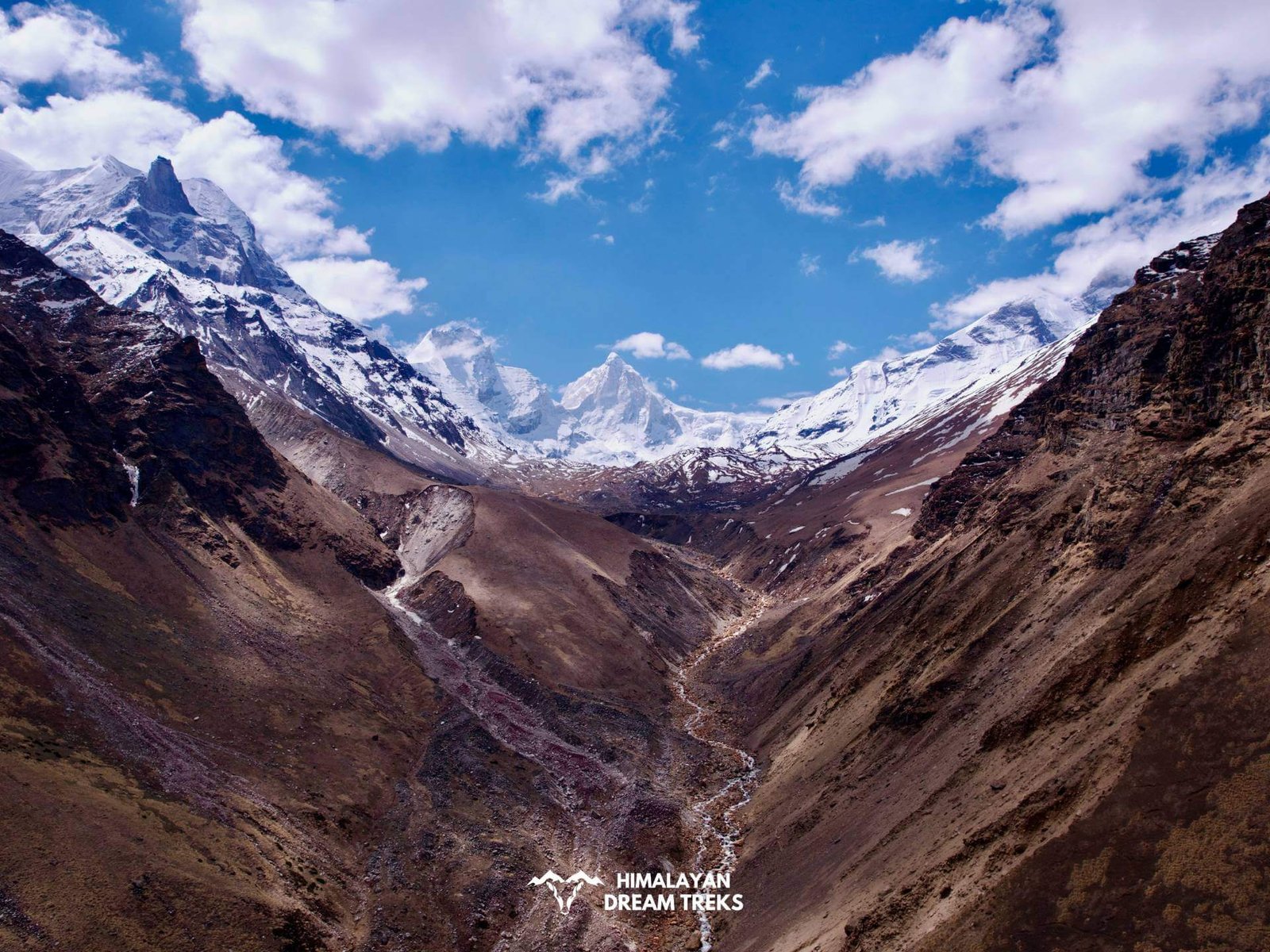
Kedartal Trek

Har Ki Dun Trek
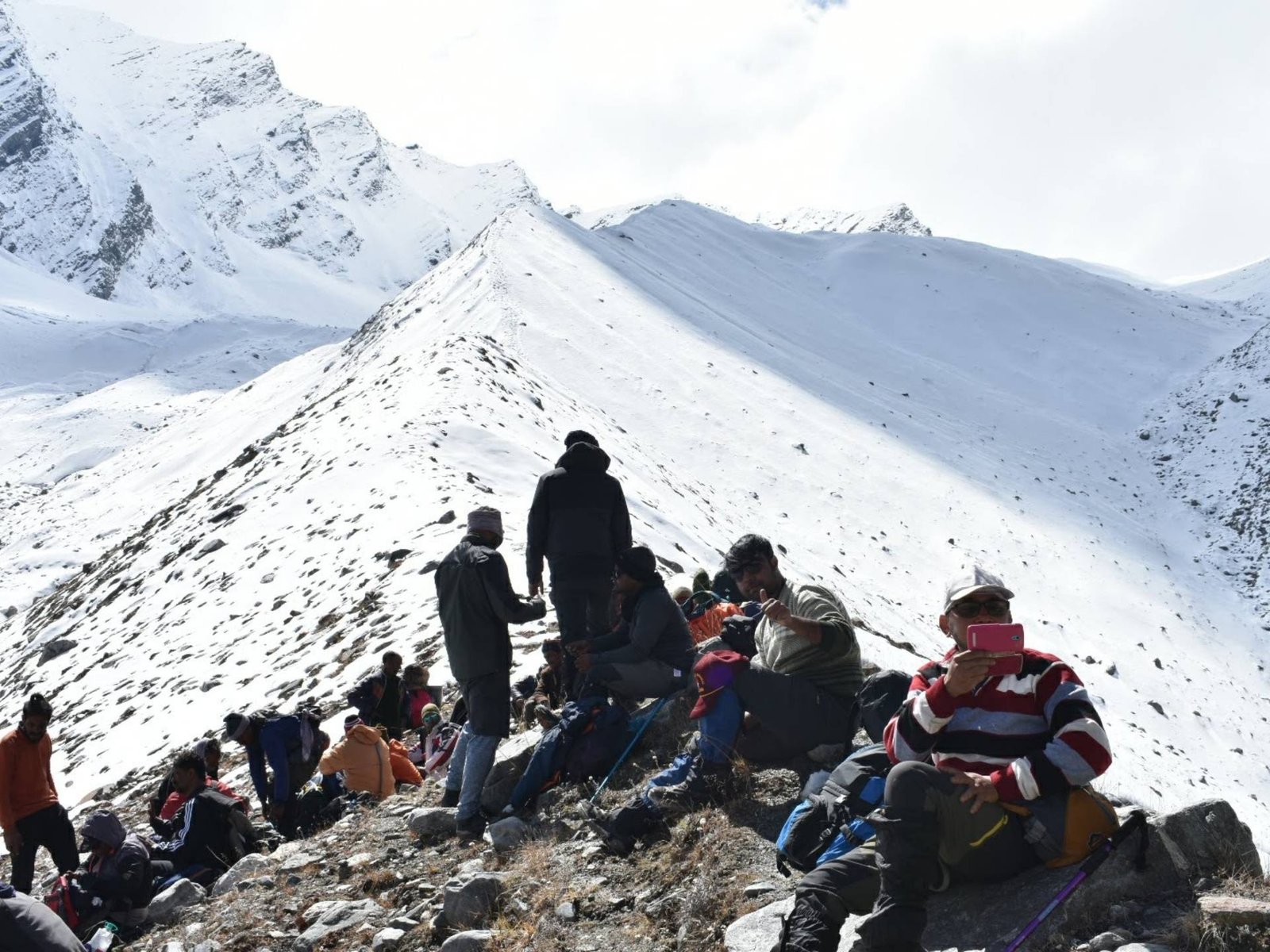
Leave a Comment Cancel reply
Email me when someone replies to my comment
Save my name, email, and website in this browser for the next time I comment.
+ 2,500 INR Transportation Cost
Subscribe to our newsletter
Get news and discounts straight to your inbox
We are Associated With

Himalayan Dream Treks
We believe in making the Himalayas more than just a destination; we see them as a life changing experience. Whether you seek spiritual enlightenment, have a passion for trekking, or simply crave adventure, we're here to accompany you on your journey.
Important Links
Why Choose Us?
Advance Payment
Cancellation Policy & Refund
Privacy Policy
Terms & Condition
Career At HDT
Contact Details
+91-80896 93825
+91-94565 46051
Join Our WhatsApp Group
Office Address
Dehradun Office :
10 B, Mothorowala Rd, Dharampur, Ajabpur Kalan, Dehradun, India, Uttarakhand, 248121
© All Rights Reserved 2024 Himalayan Dream Treks
(To the Himalayas and Beyond) — Designed & Developed by DeveloSquad

Tapovan Trek
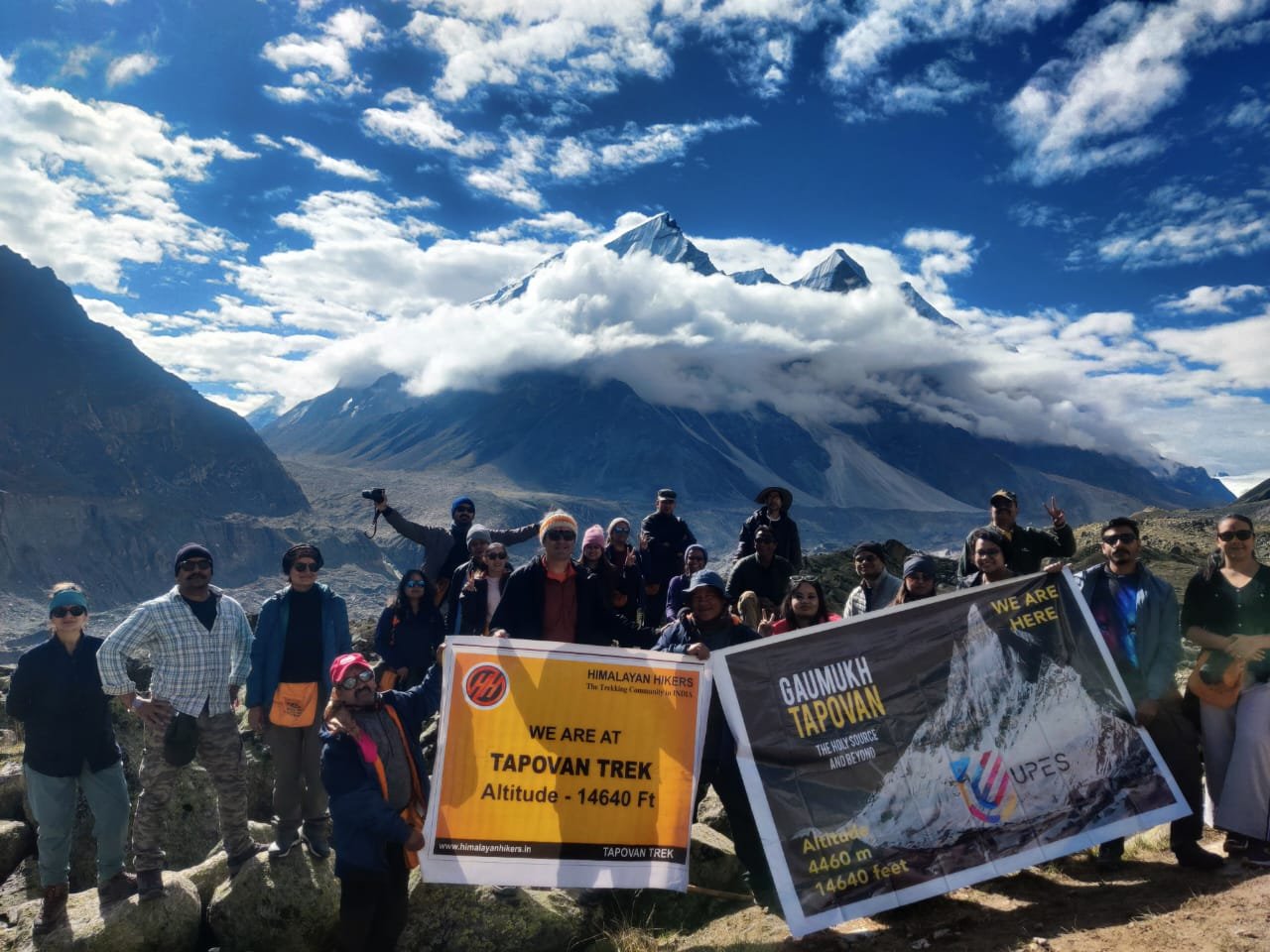
Description
Reviews (3), things to take, available dates, include / exclude, tapovan /gaumukh trek journey to the base camp of mt. shivling peak, this is the most loved trek in uttarakhand.2024.
Tapovan Trek – The meaning of Tapovan is a tranquil holy place, where sages meditate to attain spirituality. It is a high altitude meadow at a height of 4,500 m. It lies on the bank of massive Gangotri glacier and at the base of lofty Shivling peak.
However, Tapovan trek starts from Gangotri and goes through some adventurous regions of the Himalayas, taking one to the base of Mt. Shivling.
Above all, Tapovan Trek is an Enthralling Gangotri valley in the Garhwal Himalayas of Uttarkashi district in Uttarakhand India, this trek come under Gangotri National park. No doubt, the Himalayas have enchanting beauty, bracing climate, and desirable soothing green meadow. So, what else can be better than spending some days here in the serenity!
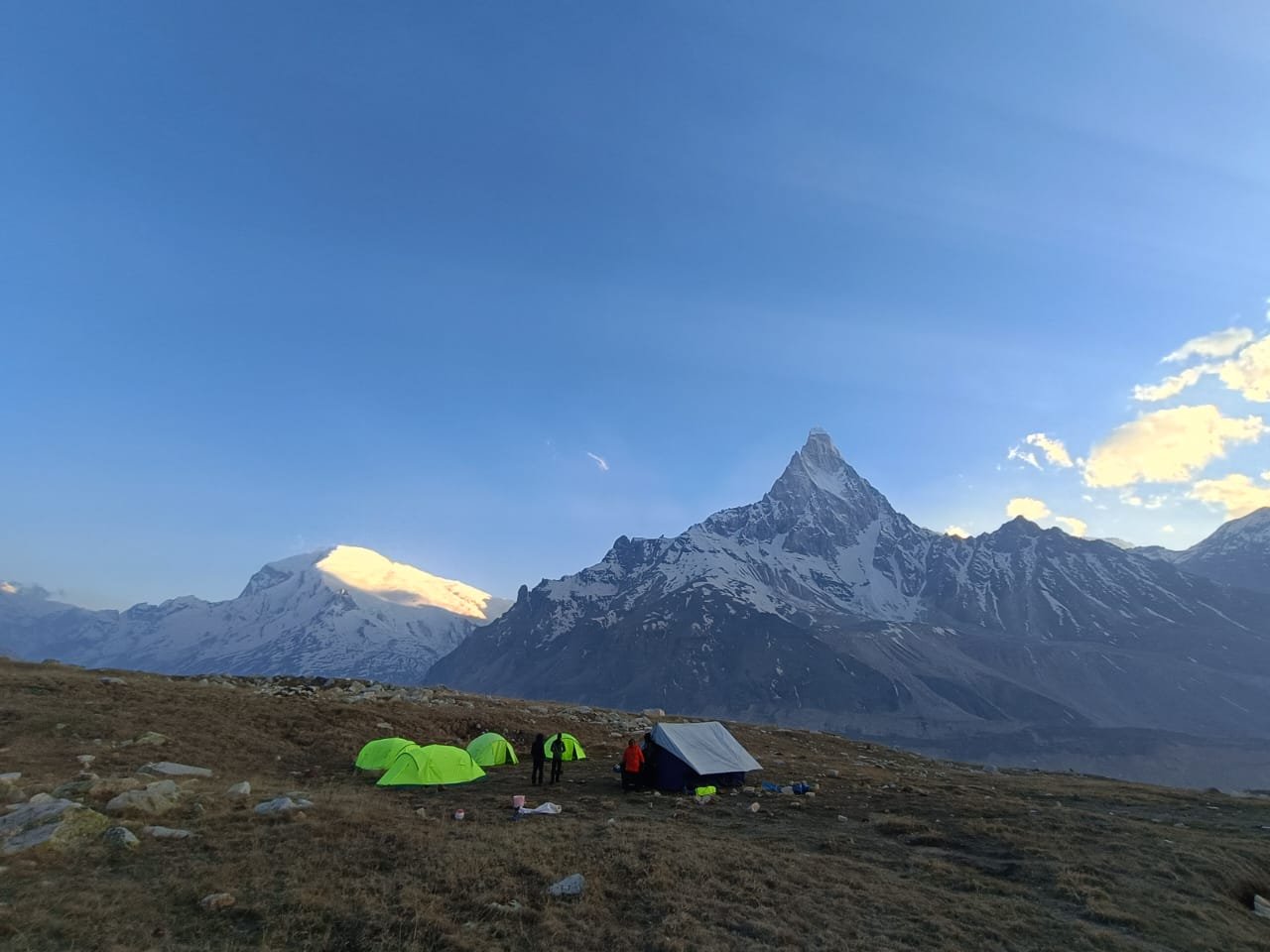
The Gaumukh Tapovan Trek is a popular trekking route located in Uttarakhand, India, which takes you through some of the most stunning landscapes of the Himalayas. Here are some of the highlights of the trek:
- Gaumukh Glacier: The trek starts from Gangotri, which is the origin of the holy river Ganges, and leads to the Gaumukh Glacier. The glacier is one of the main attractions of the trek, as it is the source of the Ganges and holds great religious significance.
- Tapovan: After visiting the Gaumukh Glacier, the trek takes you to the beautiful meadow of Tapovan. The place offers breathtaking views of the surrounding peaks, including Shivling, Meru, and Bhagirathi.
- Stunning Landscapes: The trek takes you through a variety of landscapes, from lush forests to rocky terrains to glacial moraines. You will witness some of the most beautiful landscapes of the Himalayas, including snow-capped peaks, turquoise rivers, and alpine meadows.
- High Altitude: The trek takes you to a high altitude of around 4,400 meters, which can be a challenging experience for some trekkers. However, the stunning views and unique experiences make it all worthwhile.
- Religious Significance: The trek holds great religious significance for Hindus, as it is believed to be the abode of Lord Shiva. Many pilgrims undertake this trek to seek blessings and to experience the divinity of the Himalayas.
Overall, the Gaumukh Tapovan trek is a once-in-a-lifetime experience that offers a unique blend of adventure, spirituality, and natural beauty
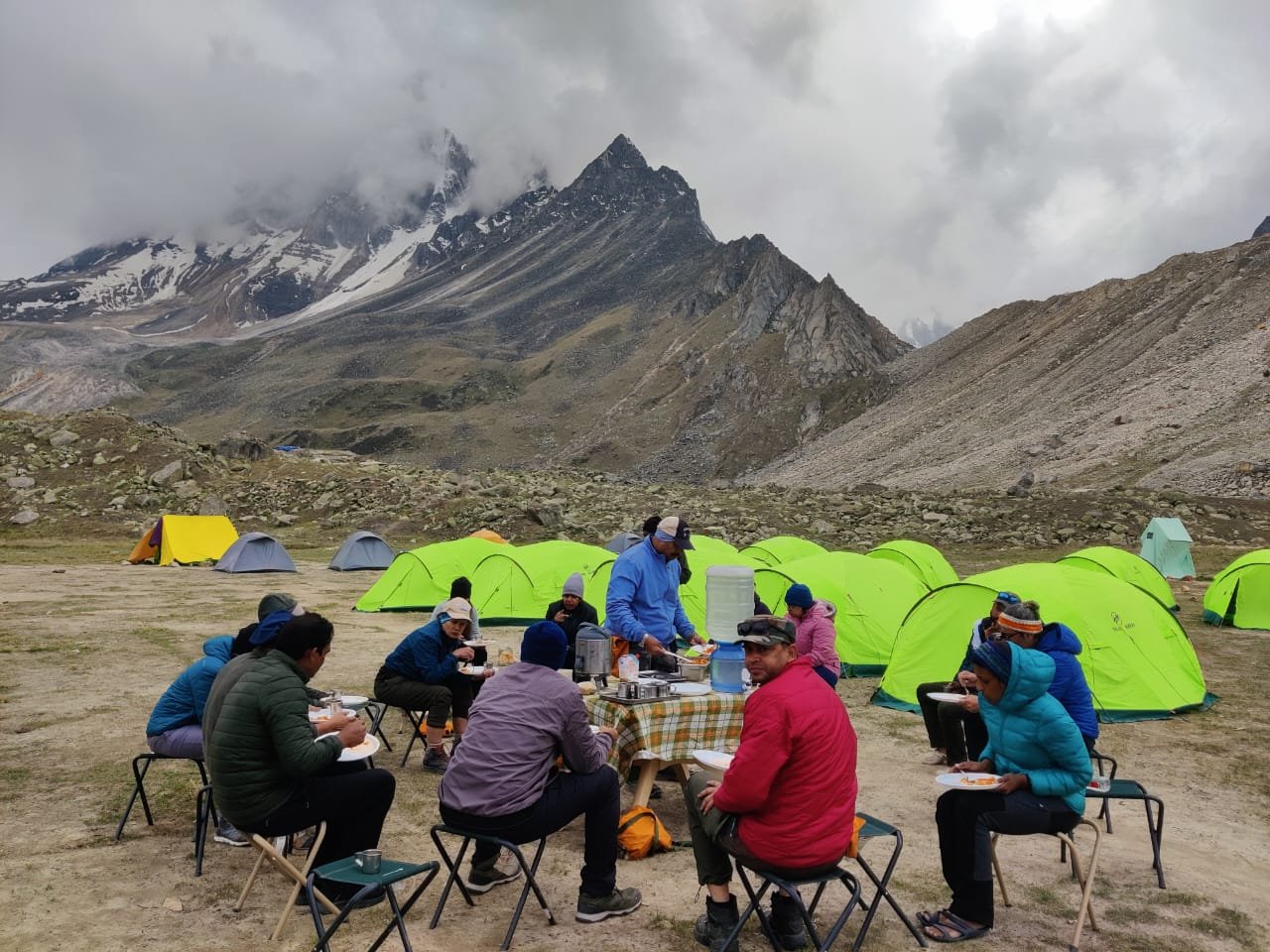
The best part of History Gaumukh or Topvan Trek
The special thing about the Gaumukh and Tapovan treks is that these treks are very ancient and religious, these treks we have heard for centuries that the sages and saints here used to meditate and meditate on the Lord. This is known as Tapo Bhoomi, hence the name Tapovan, And it is also said that the Bhakt Bhagirath did penance here to bring Mother Ganga from heaven to earth,
That is why today the beautiful stream that is fading of the Ganges is also the gift of Bhagirath Ji, So whenever you go trekking to Gaumukh and Tapovan, you will see and hear all these things from Gangotri itself. These treks are amazing, the climate and temperature here; the weather makes it very enjoyable. All around is the feeling of peace
Why should Tapovan Trek?
What you will find and never say in Tapovan trek, these treks are treasures connected with spiritual and popular, In Gaumukh and Tapovan trek, you will find yourself in an environment where people yearn to come from Gangotri, When you go from Gangotri to Chirbasa, you have to trek along the Ganges River from the very beginning, This route will awaken even more desire in your mind for the days ahead, what will happen next. In this trek, you will initially see only pine trees and rhododendron trees and food, and other wild species.
When you move from Chirbasa Camp to Bhojbasa Camp, you will start to see very beautiful mountain range, this route becomes a little easy and I will see you and wild sheep which are also known as mountain goats. Bhojbasa is a beautiful camp where there are also ashrams of Rishi muni.
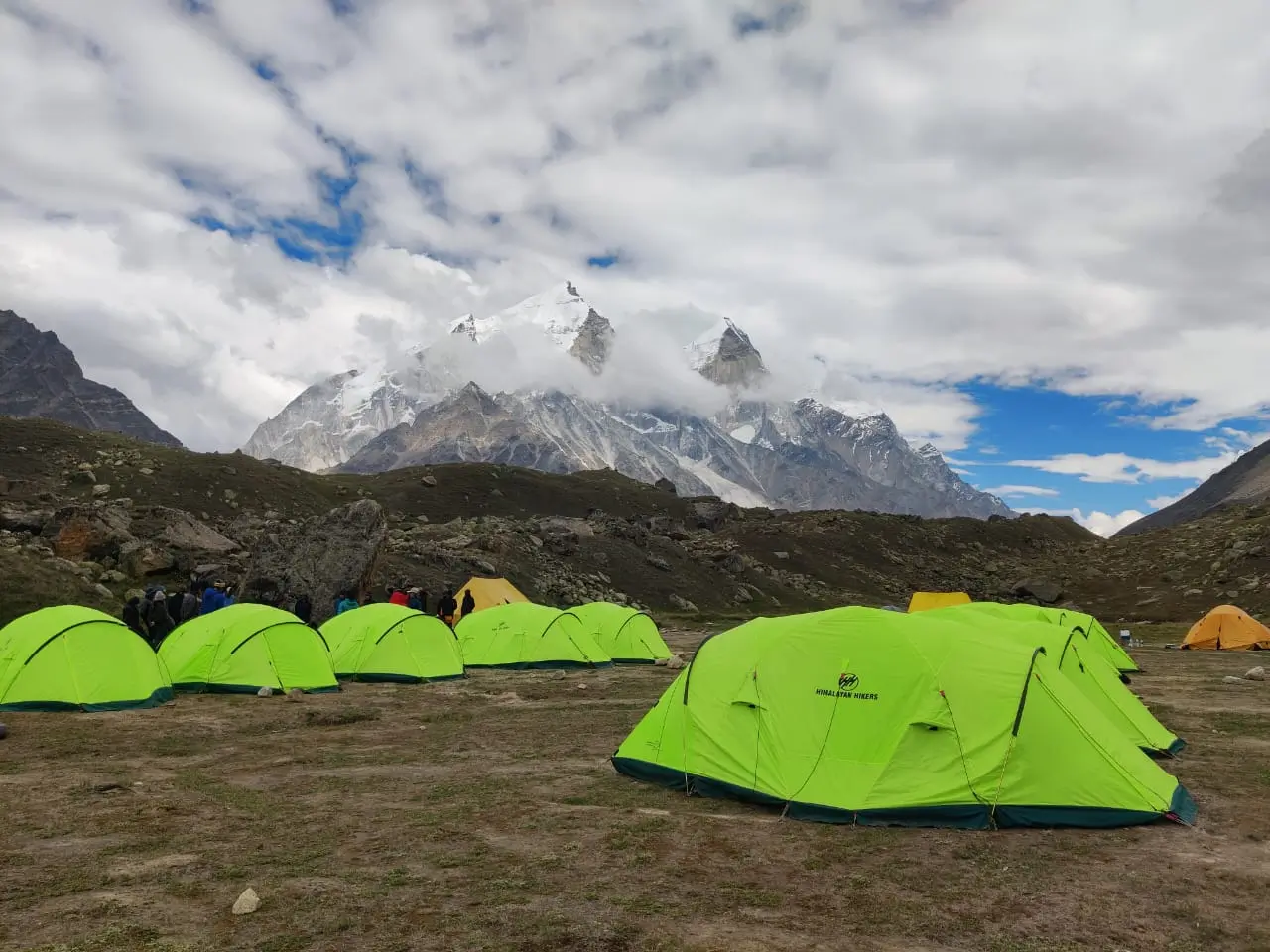
Trek Route from Bhaojbasa to Tapovan via Gaumukh Glacier
Today is beg day the route from Bhojbasa to Gaumukh and Tapovan is a bit tricky. These are moderate routes, but after the direct route to Gaumukh, you get about 03Km Glaciers filled with stones and Cracks in the snow. One has to cross with the help of his guide, after crossing the glacier, there is about 1 km of steep climb which meets directly at Tapovan, and after completing this climb you will reach Tapovan camp, this is the place where all four and peace Apart from nothing else, Shivling Peak and the Bhagirathi group on its left, which creates a different feeling in your mind that this was to happen, beautiful camp and grassland along which I flow with the Amer Ganga, whose stagnant waters hold the supernatural peace within you Will wake you up this is the best part of this trek
History of Gangotri Dham base camp of Tapovan Trek
Gangotri is a starting point of Tapovan trek, Gangotri is a holy town perched at an altitude of 3,415 m on Bhagirathi River’s banks in Uttarkashi district. According to the legend, it is Goddess Ganga’s shrine, and this holy site is the part of Char Dham, which holds a great place in the heart of Hindu mythology and Hindu devotees.
A temple “Gangotri” is present in this region, which was built by “Amar Singh Thapa” in the 19th Century. Therefore, the purest deity “Ganga” is worshipped in this town. Here is the presence of many hot water springs nearby, and it is believed that a dip in the pure water of the Ganges washes all the sins.
During Ashwamedha Yagna, King Sagar sent his 60,000 sons along with a horse, and the horse got lost, and the sons went in search of the horse to saint Kapila’s ashram; he was in deep meditation. The saint opened his eyes in anger and turned all 60,000 sons into ashes.
Then, Kapila advised Anshuman (grandson of King Sagar) to request Goddess Ganga to come on earth and cleanse all the ashes and provide salvation, but he failed.
Bhagirathi’s extreme meditation made the goddess Ganga come down to earth. Lord Shiva tied Ganga then distributed the water into many streams to save the planet from the dominant force.
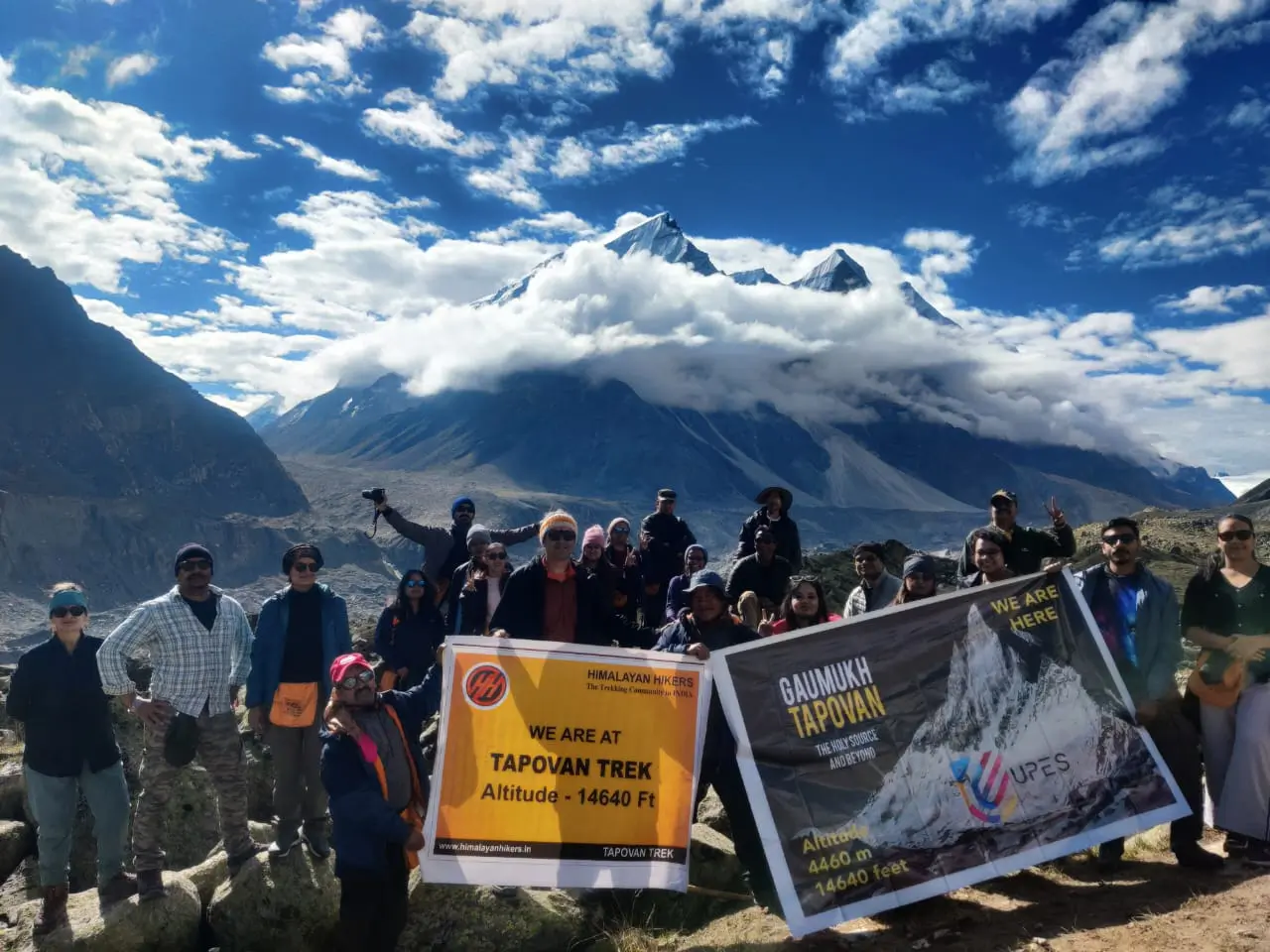
A mixture of Spirituality and Adventure! in Tapovan Trek
During your trek, go through the source of River Ganga “ Gomukh .” It is the snout of Gangotri Glacier. The trail makes its way through dense verdant forests, and the adventure begins. It is an excellent trek for adventure lovers because it includes crossing moraines, steep climbs, and traversing an amusing glacier.
So, the Tapovan trek is for both devotees and avid hikers. It is a mixture of both spirituality and adventure.
Best Time to Do Tapovan Trek?
Tapovan trek is a very beautiful and an uphill trek in the Uttarakhand Himalayas, The Tapovan Trek is great for those people who have a great passion for mountaineering and consider it a special purpose in their life. Tapovan is such a trek where you get to see more than one Himalayan mountain range.
We are the local people in the Uttarakhand District of Uttarkashi who are doing this trek for years, we have every experience related to this trek.
The right time to do tapovan trek is from April 1st week to the last of June and then from the last of August to the last month of October.
especially in the months of April, may, and June, snow is found in abundance here, which makes your trek very memorable and also a little difficult after Gaumukh Glacier. So this trek should not be considered too easy.
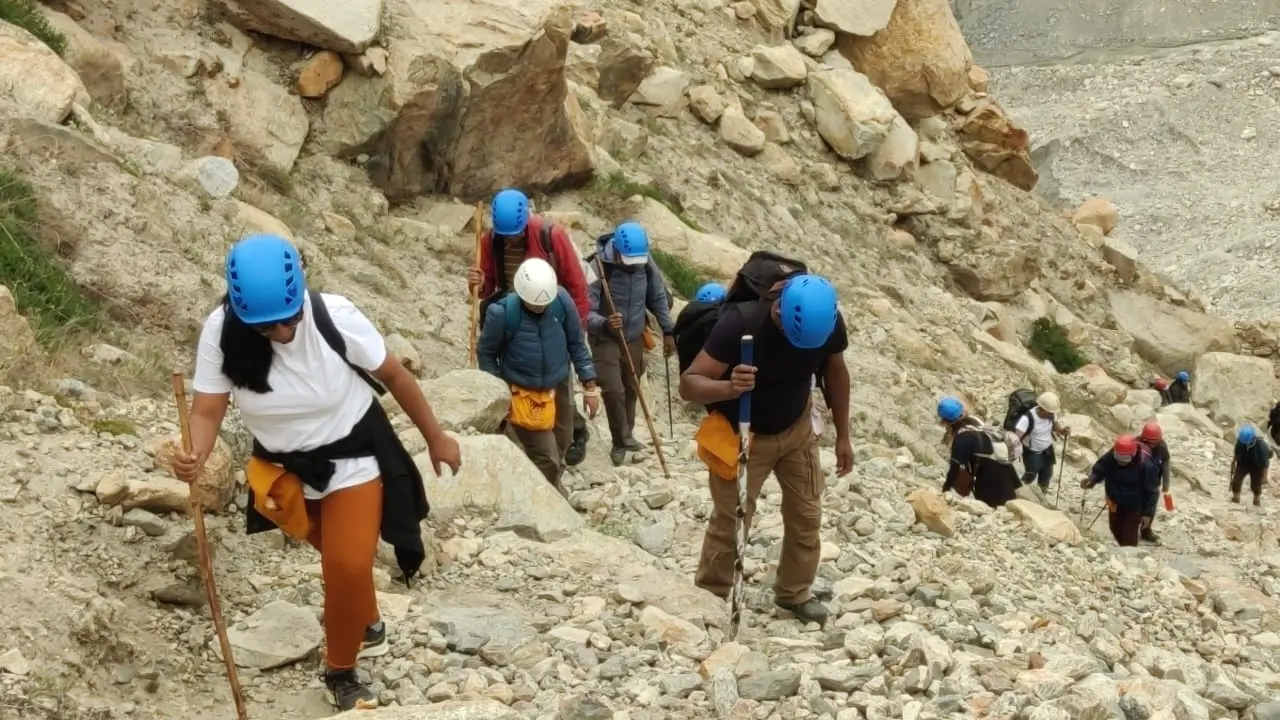
Tapovan Trek in April to June ?
Tapovan Trek Month in April and june gives a slightly different experience to Trekkers because in May you start getting snow bhojbasa Camp
The Tapovan trek starts from Gangotri in Uttarakhand which comes in Gangotri National Park Range
In April, May and June, you get a combination of both greenery and snow, which makes the trek very spectacular. The weather in April, May and June is quite good and trek friendly, which makes trekking a lot of fun.
During the day the temperature of Tapovan trek is around ( 5°C to 10 °C and during the night the temperature comes down to -1 °C to -3 °C which is not bad.
Views and treks in Tapovan trek provide a lot of peace to the mind during the day, while you wake up from one wake to another, Gaumukh and Tapovan trek can always be one of the most close treks in your heart.
You will never consider yourself boring in Tapovan Trek, this trek can give you nothing but joy, You will get to see the Garhwal culture in this trek which will always keep you connected towards the mountain. Himalayas
Tapovan Trek in September or October
Tapovan trek is a little different in the months of September and October, this is because you will find snow only summit day. or Gaumukh Glacier and near shivling base Camp Nil tal
But the beauty of the trek will not be lacking, the trek and nature adorn themselves with time and in different colors. Month of September and October are very good days to trek, at this time total greenery and at the end of October sometimes you can get to see live snow fall.
During the day the temperature of Tapovan trek is around Day time 5°C to 12 °C and during the night the temperature comes down to 5 °C to – 1 °C which is very confirmable,
At this time the weather here will be very good for you , At this time it is even safe to trek here and there is no rain.

How Difficult is Gaumukh Tapovan Trek?
The Gaumukh Tapovan trek is considered to be a moderately difficult trek, suitable for experienced trekkers and individuals with a good level of fitness. It involves a combination of challenging terrain, high altitudes, and long trekking hours, which can be physically demanding. Here are some factors that contribute to the difficulty level:
- Altitude: The trek starts at Gangotri (3,048 meters or 10,000 feet) and reaches an altitude of around 4,463 meters (14,640 feet) at Tapovan. Altitude sickness can be a concern, and acclimatization is crucial. It’s important to take proper rest, hydrate well, and ascend gradually.
- Trekking Distance: The trek covers a distance of approximately 45-50 kilometers (28-31 miles) round trip, which is spread over several days. The daily trekking hours can be long, averaging around 6-7 hours, with some days requiring more strenuous efforts.
- Terrain and Trail Conditions: The trail consists of rocky terrain, steep ascents and descents, moraines, boulder fields, and river crossings. It demands agility and stability while navigating through these varied landscapes. The trail can be slippery in certain sections, especially during monsoon season.
- Weather Conditions: Weather conditions in the Himalayas can be unpredictable. The trek is usually undertaken during the summer months (May to October) when the weather is relatively more favorable. However, even during this period, temperatures can drop significantly, especially at higher altitudes, and rainfall or snowfall may occur.
- Physical Fitness: A good level of physical fitness is essential to tackle the challenges of the trek. Regular exercise and stamina-building activities such as hiking, jogging, or cycling can help prepare the body for the demands of the trail.
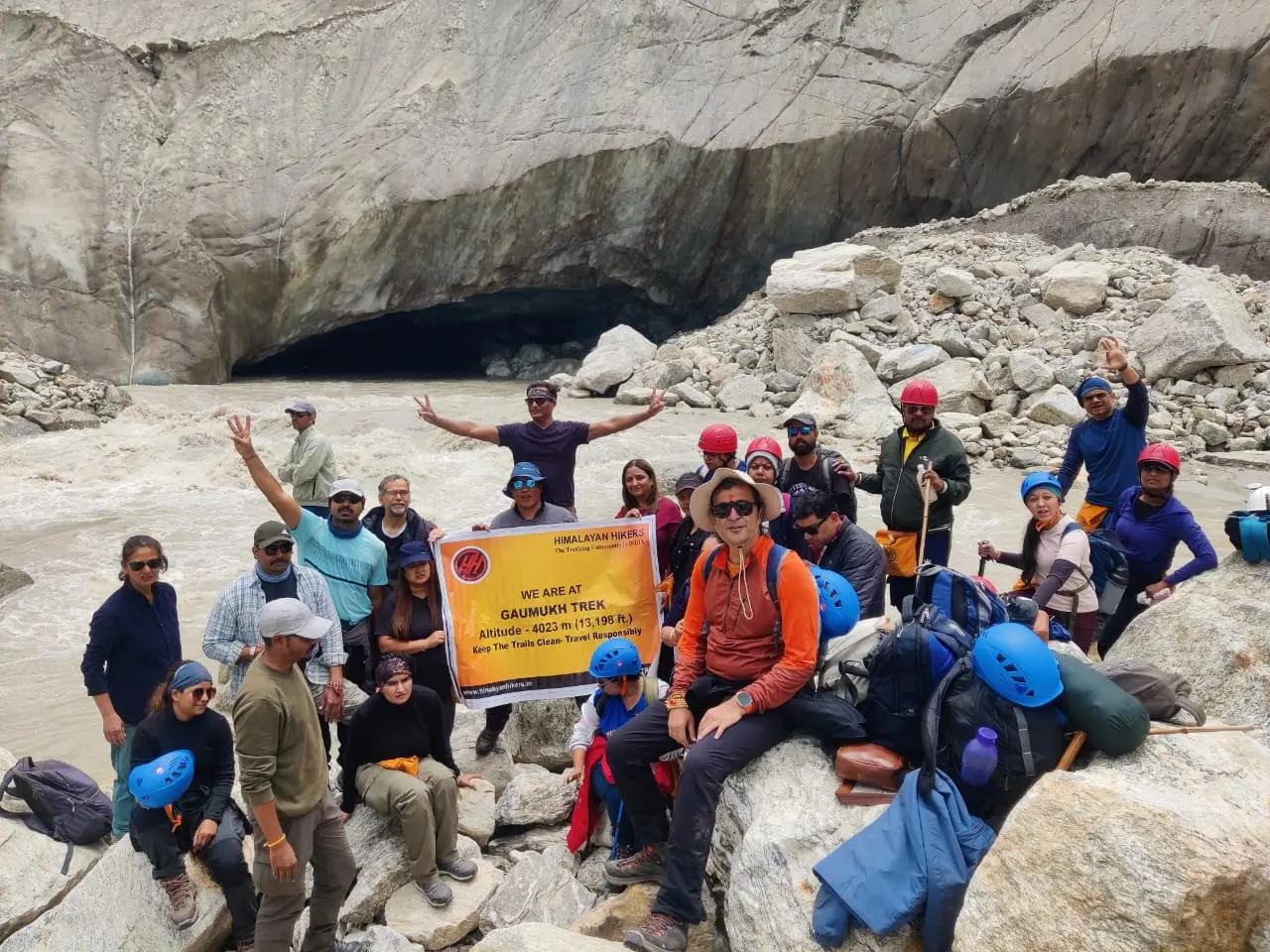
A Moderate Trek with Enticing Views
Most importantly, Mt. Shivling accompanies you until you reach the celestial meadow of Tapovan. Moreover, other peaks visible from Tapovan is – Join Heights and Bhagirathi groups 1, 2, and 3 of peaks with several more snow-covered mountains.
But, beginners should choose some Easy Level Treks and avoid treks like Tapovan. However, if your fitness is right and you are capable enough, then you can want to taste its adventure.
Is Tapovan Trek safe for Trekkers and Beginners?
The Tapovan trek is generally not recommended for beginners or inexperienced trekkers due to its moderate to challenging difficulty level and the high altitude involved. Here are a few factors to consider regarding safety:
- Altitude: The trek reaches an altitude of around 4,463 meters (14,640 feet) at Tapovan. Altitude sickness is a concern, and inexperienced trekkers may be more susceptible to its effects. Proper acclimatization and knowledge of altitude-related risks are essential. Beginners may find it challenging to adapt to the altitude and cope with potential symptoms.
- Physical Fitness: The trek requires a good level of physical fitness due to the long trekking hours, challenging terrain, and steep ascents and descents. Beginners may not be adequately prepared for the physical demands of the trek, which could increase the risk of injuries or exhaustion.
- Trail Conditions: The trail consists of rocky terrain, moraines, boulder fields, and river crossings. It demands agility, stability, and the ability to navigate through varied landscapes. Beginners may find it more difficult to tackle these challenges without prior trekking experience.
- Weather Conditions: Weather conditions in the Himalayas can be unpredictable and harsh. Even during the summer months, temperatures can drop significantly, especially at higher altitudes. Beginners may not have the necessary experience or equipment to cope with the potential weather challenges.
For beginners who are interested in exploring the Himalayas and undertaking treks, it is advisable to start with easier and less challenging treks at lower altitudes. Building up physical fitness, trekking experience, and knowledge of mountain safety is important before attempting more difficult treks like Tapovan.
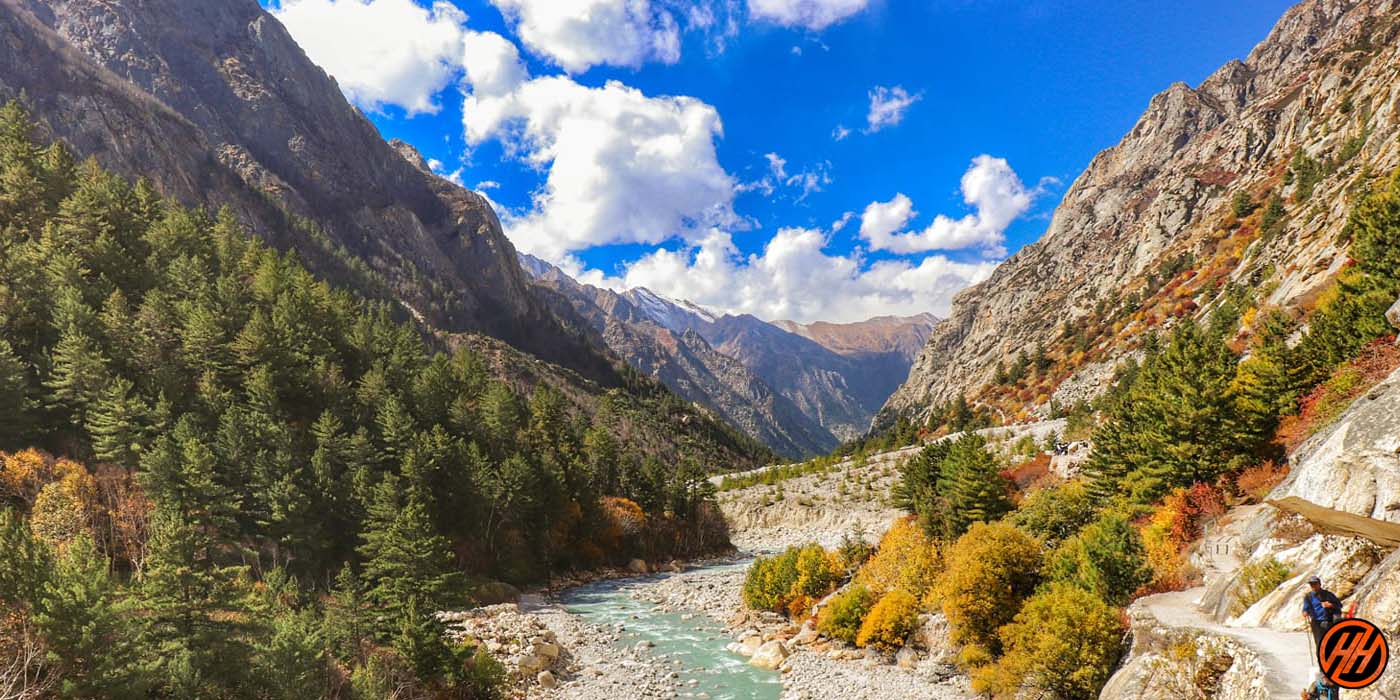
Some special information about Tapovan Trek
Before heading towards the itinerary, it is essential to perceive the reason behind choosing the Gaumukh, Tapovan trek.
See firstly, the trekking distance is a total of by taxi 516 Km both sides and on foot 46 km, which is to cover eight days from Dehradun to Dehradun
Although, the Tapovan trek is a high-altitude mountain trek Altitudes is 4500 Meters – 14640 ft
The Starting trail is moderate as compared to other treks this is a difficult trek. So this trek is Not For Beginners
Need proper gear & clothing for sub-zero temperatures?
In other words, You got to see so many heavenly bodies in one place like the panoramic view of the Himalayan ranges, you can see pine forests, and different varieties of flora and fauna surpassing bona fide Garhwali culture.
In fact, I think Do spare time Interaction with our local’s team, and you will get to know about some of the ancient tales of Indian mythology and our local cultures, there is good ideas for trekkers
Beautiful landscapes so carry proper photo gear & Extra battery backup.
The backpack should not exceed 12 kg only.
Weather conditions
The weather conditions during the Gaumukh Tapovan trek can vary depending on the season and altitude. Here is a general overview of the weather conditions you can expect:
- Summer (May to June): This is considered the best time to undertake the trek. The weather is relatively pleasant during these months, with daytime temperatures ranging from 10 to 20 degrees Celsius (50 to 68 degrees Fahrenheit) at lower altitudes. However, as you ascend to higher altitudes, temperatures can drop significantly, especially during the nights, with sub-zero temperatures possible at Tapovan. It is advisable to carry warm clothing and be prepared for temperature variations.
- Monsoon (July to September): The monsoon season brings heavy rainfall to the region, making the trail slippery and challenging. Rainfall can disrupt the trek and increase the risk of landslides. It is generally not recommended to undertake the trek during this period due to safety concerns.
- Post-Monsoon (September to October): After the monsoon season, the weather starts to improve, and the trail becomes more accessible. The temperatures begin to drop, especially during the nights and at higher altitudes. Daytime temperatures range from 5 to 15 degrees Celsius (41 to 59 degrees Fahrenheit), and it can be colder at Tapovan. Proper warm clothing is necessary during this time.
It’s important to note that weather conditions in the Himalayas can be unpredictable, and sudden changes are not uncommon. It is advisable to check the weather forecast before starting the trek and to be prepared for varying conditions. Carrying appropriate clothing, rain gear, and essential trekking equipment is crucial for a safe and comfortable journey. Additionally, consulting with local authorities or experienced trekking agencies can provide you with more accurate and updated information about the weather conditions specific to the time of your trek.
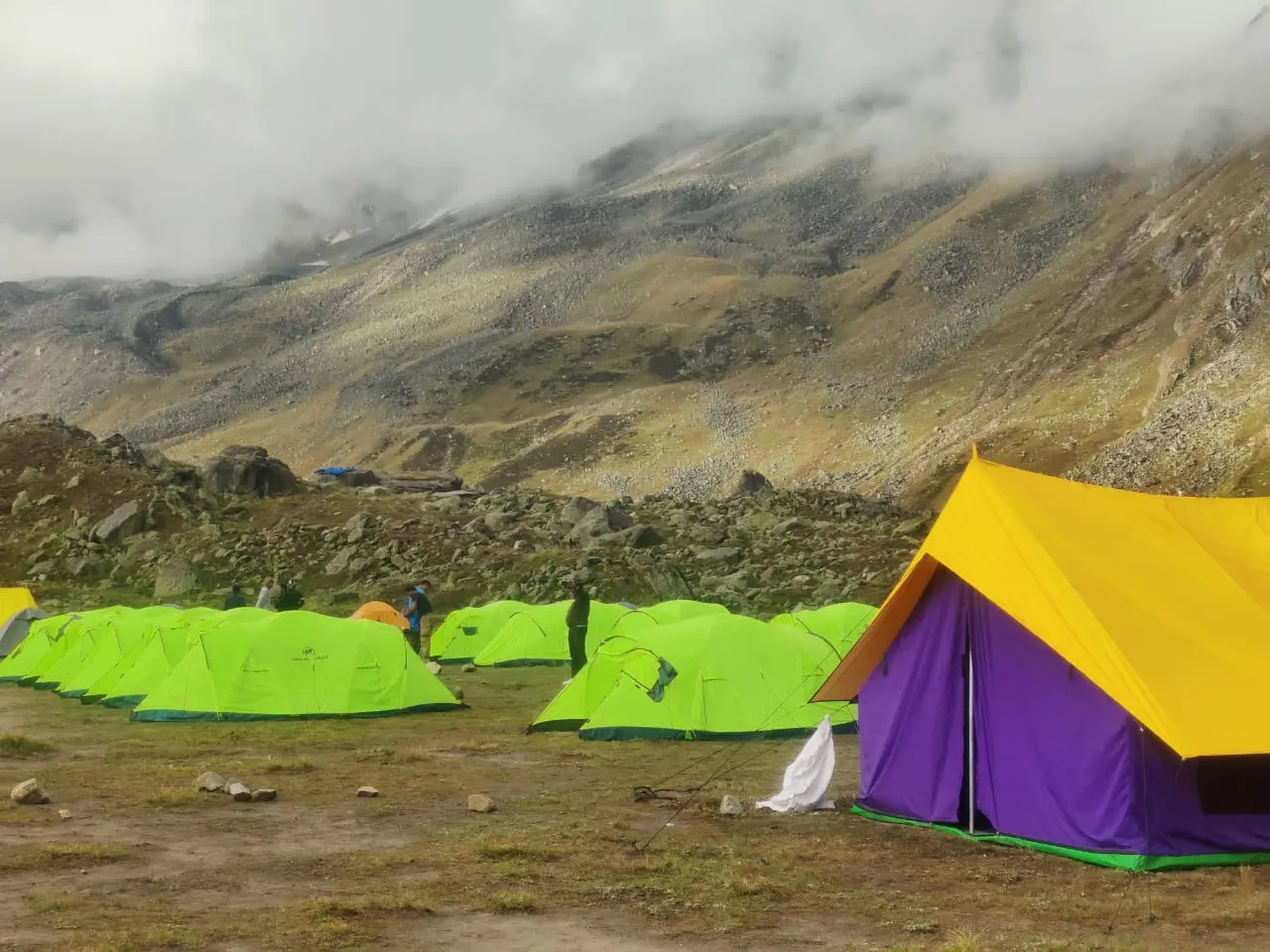
Why you should choose us?
We’re here to give you the greatest experience possible through the eyes of highly skilled and qualified specialists who have a passion for adventure sports. We are community members attempting to promote our favorite adventure sports while also supporting local businesses. We, at Himalayan Hikers, dedicate ourselves to providing you with an unforgettable experience.
Here are some potential reasons why you might consider choosing Himalayan Hikers for the Gaumukh Tapovan trek:
- Experience and Expertise: Himalayan Hikers may have a reputation for their experience and expertise in organizing treks in the Himalayas, including the Gaumukh Tapovan trek. They might have knowledgeable guides who are familiar with the route, weather conditions, and safety precautions specific to this trek. Assessing their experience, customer reviews, and track record can help you make an informed decision.
- Safety Measures: A reputable trekking agency like Himalayan Hikers may prioritize safety by providing experienced guides, necessary permits, and well-maintained equipment. They might have protocols in place for monitoring and managing altitude sickness, weather-related risks, and emergency situations. Inquire about their safety measures and how they ensure the well-being of trekkers.
- Logistics and Support: Organizing a trek can involve various logistical aspects such as transportation, accommodation, and meals. Himalayan Hikers might offer comprehensive packages that take care of these logistical arrangements, allowing you to focus on the trek itself. They might arrange transportation from the nearest city to the starting point of the trek and provide tents or guesthouse accommodation during the journey.
- Local Knowledge and Cultural Immersion: Himalayan Hikers may have a deep understanding of the local culture, traditions, and communities along the trekking route. They might provide opportunities for cultural interactions and insights into the region’s rich heritage. Learning from their local expertise can enhance your overall trekking experience.
- Customized Itineraries and Flexibility: Depending on your preferences and requirements, Himalayan Hikers may offer customized itineraries or flexible options to tailor the trek to your needs. They might consider factors such as acclimatization, rest days, and alternative routes based on your fitness level and time constraints.
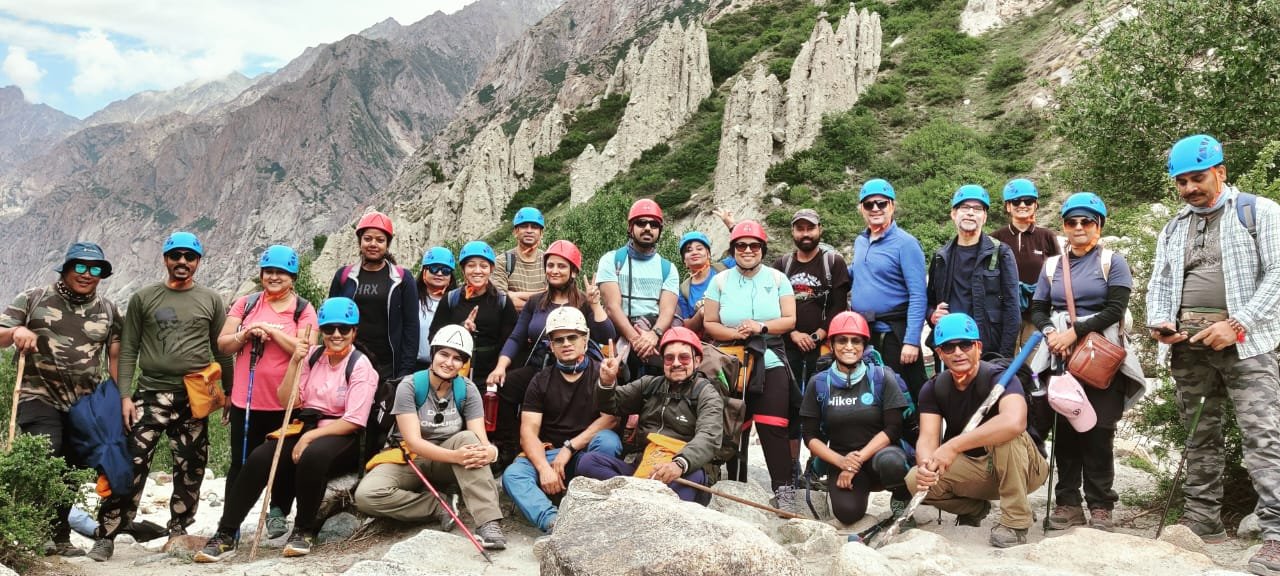
The altitude we are going to cover in Tapovan Trek
Gangotri – 3415 Meter
Chirbasa – 3580 Meter
Bhojbasa – 3775 Meter
Gomukh – 4255 Meter
Tapovan trek – 4500 Meter
Key Points of Tapovan Trek
Duration: – 7 Nights 8 Days – from Dehradun to Dehradun
Base camp: – Gangotri
Summer Temperature: – Day 5°C to 10°C) Night 2° C to 6° C)
Tapovan Altitude: – 4500 Meter
Best Time: – May, June, September, October
Trek Level: – Moderate
Trek distance: – On foot 46 Km – By taxi 516 km
Tapovan Trek Route – Start from Dehradun, Mussoorie, Suwakholi, Uttarkashi, Gangotri, Chirbasa, Bhojbasa, Gaumukh Glacier, Tapovan
Short Itinerary of Tapovan Trek
Day 1- Pick up to you from Dehradun railway station – Drive to Gangotri – 258 km) (10/11 Hours) (3415 Meter) overnight stay at Hotel Mandakini at Gangotri
Day 2 – Trek from Gangotri to Chirbasa camp (09 km) (5/6 Hours) (3580 Meter) overnight stay at Camp
Day 3 – Trek from Chirbasa camp to Bhojbasa camp (5 km) (3/4 Hours) (3775 Meters) overnight stay at Camp
Day 4 – Trek from Bhojbasa camp via Gomukh to Tapovan camp (09 km) (6/7 Hours) (4500 Meters) overnight stay at Camp
Day 5 – Exploration Day Nil Tal and Shivling base camp (4619 Meters) back to camp (4/5 Hours) overnight stay at Camp
Day 6 – Trek from Tapovan to Bhojbasa camp (09 km) (5/6 Hours) (3775 Meters) overnight stay at Camp
Day 7 – Trek from Bhojbasa camp to Gangotri (14 km) (6/7 Hours) (3415 Meter) overnight stay at Hotel Mandakini at Gangotri
Day 8 – Drive from Gangotri to Dehradun by taxi (258 km) (10/ 11 Hours)
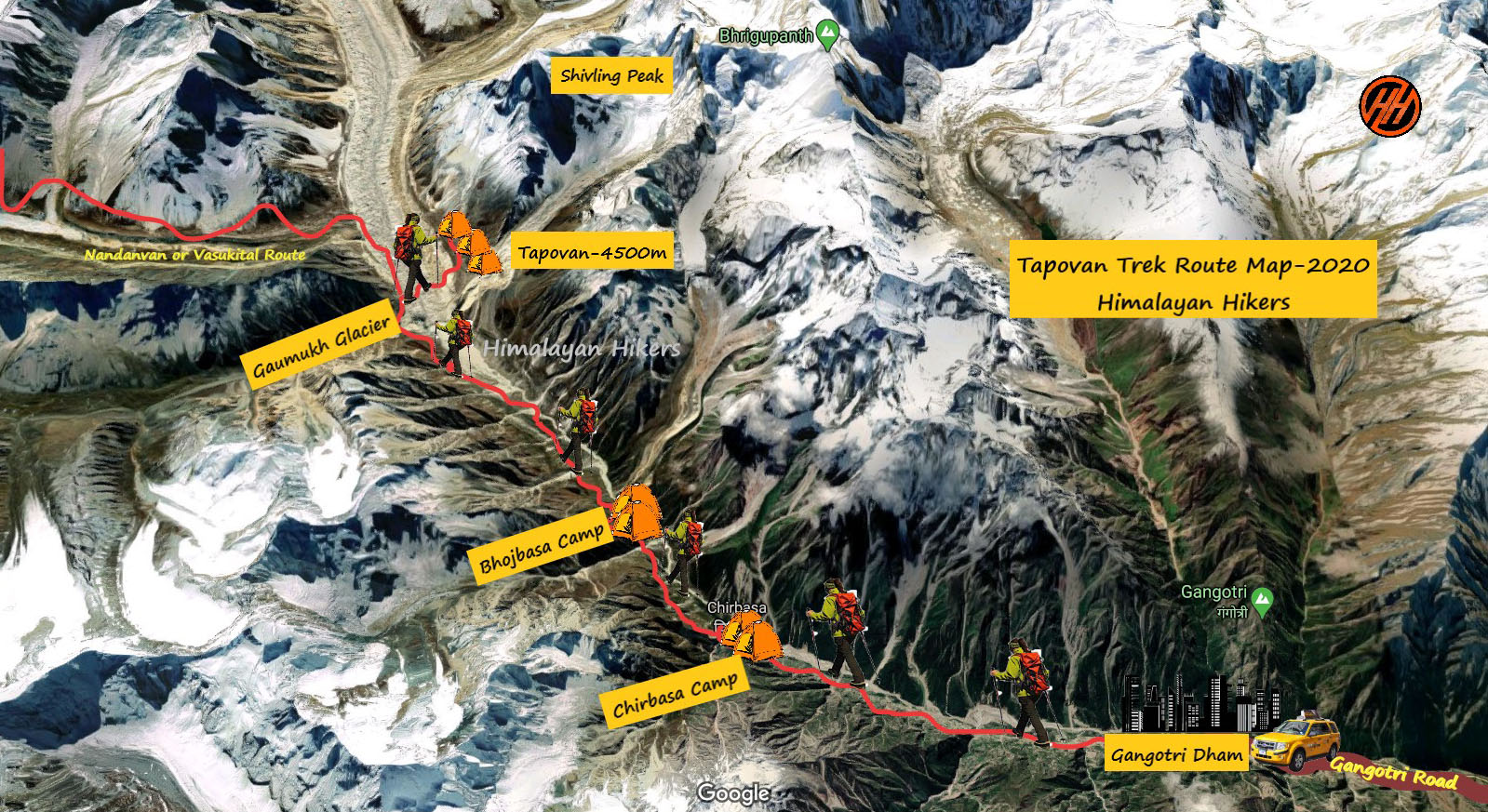
Your Travel Plan for Tapovan Trek
You can book train, air flight, and bus tickets for your journey only according to the information given by us.
The Tapovan trek will be of 6 days and 02 days of your journey total of 08 Days from Dehradun to Dehradun in Uttarakhand
First of all, all the trekkers will have to book their flight and train bus according to our timetable as our pick-up is from 6 am to 7 am, and you will have to reach Dehradun in the morning
A taxi from Himalayan hikers will link you to Dehradun railway station
Himalayan Hikers organize transport to Gangotri base camp from Dehradun railway station
Our vehicles leave at 6:00 am to 7:00 am sharp from Dehradun. The taxi costs include your package for a Sharing Tempo Traveler
At Dehradun railway station you will get our staff that will arrange transport for you
The contacts no Transport coordinator or our office team will give you a week ago to your departure
Please you guys book your transport facility according to your own time table after Himalayan Hikers take all the responsibility of Dehradun from Dehradun, you will not face any problem
How to reach Dehradun for Tapovan Trek?
To reach Dehradun, the starting point for the Gaumukh Tapovan trek, you have several transportation options available. Here are the common modes of transportation:
- By Air: The nearest airport to Dehradun is Jolly Grant Airport, located about 30 kilometers (18 miles) from the city center. Several domestic airlines operate regular flights to and from Dehradun. From the airport, you can hire a taxi or take a shared cab to reach Dehradun.
- By Train: Dehradun has its own railway station, which is well-connected to major cities in India. Various trains, including express and superfast trains, run to and from Dehradun. Once you arrive at the Dehradun railway station, you can hire a taxi or take an auto-rickshaw to reach your desired location in the city.
- By Road: Dehradun is well-connected to major cities in North India by a network of national highways. You can reach Dehradun by bus or hire a taxi or private car. Buses operated by the Uttarakhand State Road Transport Corporation (USRTC) and private bus operators run regular services to Dehradun from various cities.
After reaching Dehradun, you can make your way to Gangotri, the starting point of the Gaumukh Tapovan trek. Here’s how you can reach Gangotri from Dehradun:
- By Road: From Dehradun, you can take a shared taxi or a private cab to reach Gangotri. The journey takes approximately 10-12 hours, depending on the road conditions and traffic. The route passes through scenic landscapes and towns like Uttarkashi.
- Shared Transport: You can also look for shared jeeps or shared taxis that operate from Dehradun to Gangotri. These are a more budget-friendly option and can be found at the Dehradun bus stand or nearby locations. However, availability and frequency might vary, so it’s advisable to check in advance.
It’s recommended to plan your journey well in advance, especially during the peak trekking season, and make necessary reservations for flights, trains, or taxis. Additionally, check the weather and road conditions before embarking on your journey to ensure a smooth and hassle-free travel experience.
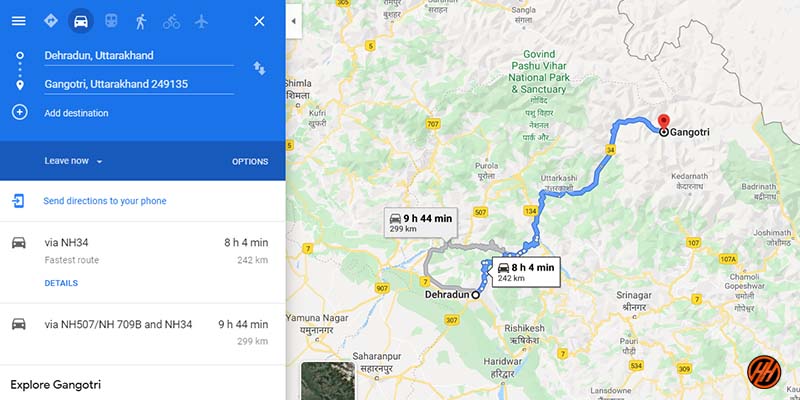
Dehradun to Gangotri Route Map
ATM Point and Mobile Connectivity in Tapovan Trek
Before starting the journey to Tapovan trek, make sure that you need payments, and then take out the cash on the way, Uttarkashi market is the last place where you can withdraw cash from ATM, (If you want to withdraw money then do it in Dehradun.)
Mobile Connectivity
The phone does not work on this trek. Therefore, you should ensure that you do not have to make any important calls. . So make sure you finish all your important work and calls before starting the trek. Last Gangotri, your device will receive good networks.
What should you keep in mind for the Tapovan trek?
Tapovan trek is as good as it is said, you also need to be prepared., Tapovan trek is a moderate trek that starts from Gangotri via Gamukh and ends after trekking same point of Gangotri in Uttarakhand Himalayas
So what are the special things to keep in mind before coming on this trek?
Tapovan trek is one such trek, which you can do this trek 1st week of April to the Last week of October, this is a very safe trek in District of Uttarkashi Uttarakhand
Summer Season
- Summer trek to Tapovan trek is very special, the view and the temperature are all favorable to you
- For the summer trek, you have to bring only normal clothes, so that your trek can be good, there is no need for hot clothes, but in hiking it is also necessary to bring all the equipment which is necessary for you.
- It is necessary to have 3 pairs of clothes for trekking, especially the poncho, you will have to bring every season
- There is a very strong wind in the evening and in the morning in Tapovan
- In the summer season, the temperature is always normal, so there is no need for hot clothes.
- Morning evening and nights are cold in Tapovan trek, so it is necessary to carry some warm clothes, a good jacket, warm thermal, this will help you stay comfortably in the high-altitude camp
Monsoon Season
- The main reason why you should not do this trek in the monsoon season is that Uttarakhand receives a lot of rain during the monsoon season. months of July and August
- Due to this, there is a fear of falling stones from the mountains while going from Gangotri to Gaumukh.
- Trekkers need to know about these, you can ask us anytime about like, Trek route, trek map, Temperature, weather conditions, difficulty level, trek starting point, endpoint, transport, view of the trek, best time to visit, How to reach tapovan trek , trek Itinerary, trek distance, Location etc, keep this information before going
Winter Season
- Tapovan trek is not in winter trek, the right time to do this trek is from 1st week of April to the last week of November
- It snows around 6 to 8 feet in the winter season and it can be very risky to go here
- We have special treks for you for winters that are safe and beautiful
Such as – Kedarkantha Trek, Har ki dun Trek, Dayara Bugyal Trek, Kuari Pass Trek, Brahmatal Trek, Dodital Trek, Vijay Top Trek, Nag Tibba Trek, and many more.
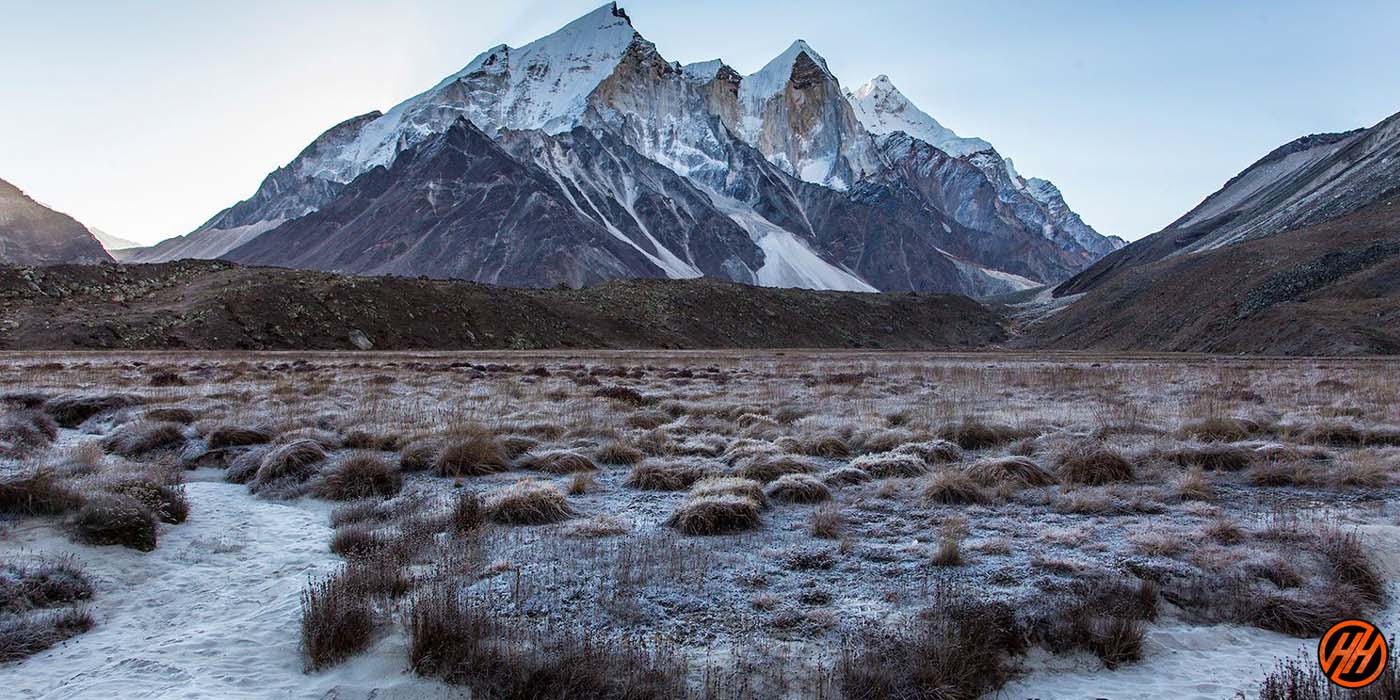
What do we do for safety in the Tapovan Trek?
First of all, the safety of trekkers is much more for us, if you see in the trek, then there are all the risks, which I do not think about.
Himalayan Hikers worry more about you that no one should ever have any problem in the trek.
What should we and you keep more safety in the trek
- Whenever you are going for any trek, it is very important that you go completely fit and ready.
- The trek is Moderate/difficult, if you make your feet and your mind calm and strong, you will find the trek very easy.
- While trekking, keep in mind that you are walking on the right route or not always with your guide.
- Most people look somewhere and where they are walking, this can cause twitching in your legs, which can ruin your entire trek.
- It is important to ask your doctor if you have any medical problems
- I should always keep my medical kit with me, it is very important.
- Himalayan Hikers always keep a medical kit with you, such as oxygen cylinders, and medicine to be given in an emergency on the trek
- If any trekkers have any more problems, then they are brought back to the base camp by laying them in the stretcher.
- Our camp in Tapovan trek is around 7000 ft to 14000 ft where you can not have any big problem of oxygen
- In case of any medical problem, the help of your guide or well-informed trekkers should be taken
- If there is major health problems in the Tapovan trek, then Nearest Hospital is in Uttarkashi which is about 116 Kms away from the Gaumukh Tapovan trek
- Remember that when we go on any trek, we go from low altitude to high altitude, it does not cause much problem on us.
- Our camps also move forward day by day and our bodies also work with the altitudes that are safe for trekkers
- Along with the trek we keep getting acclimatization
How to get fit for the Gaumukh Tapovan trek?
Preparing yourself physically for the Gaumukh Tapovan trek is essential to ensure a more enjoyable and comfortable experience. Here are some tips to get fit for the trek:
- Cardiovascular Fitness: Focus on activities that improve your cardiovascular endurance, as trekking involves long hours of walking and ascending at higher altitudes. Engage in activities like jogging, brisk walking, cycling, swimming, or stair climbing to improve your stamina and cardiovascular fitness. Aim for at least 30 minutes of moderate-intensity cardio exercises on most days of the week.
- Strength Training: Strengthening your muscles, especially your legs, core, and upper body, will help you tackle the demanding terrain and carry your backpack during the trek. Incorporate exercises like squats, lunges, step-ups, planks, push-ups, and resistance training to build strength. Include both bodyweight exercises and weight training, if possible.
- Endurance Training: Gradually increase the duration and intensity of your workouts to build endurance. Incorporate longer walks or hikes, preferably on hilly terrain, to simulate trekking conditions. Start with shorter distances and gradually increase the distance and difficulty level over time.
- Flexibility and Stretching: Flexibility is important to prevent injuries and improve overall mobility during the trek. Incorporate stretching exercises, such as yoga or dynamic stretches, to improve flexibility and range of motion. Pay attention to stretching your leg muscles, hips, back, and shoulders.
- Trek-Specific Training: Try to simulate trekking conditions during your training. Find trails or hilly areas to practice walking uphill and downhill. Increase the intensity and duration of your practice hikes to build your endurance and get accustomed to carrying a backpack. If possible, gradually increase the weight of your backpack to match the expected load during the trek.
- Hydration and Nutrition: Stay hydrated throughout your training period and during the trek. Drink plenty of water and fluids to maintain your hydration levels. Focus on a balanced diet that includes carbohydrates for energy, protein for muscle recovery, and healthy fats. Include fruits, vegetables, whole grains, and lean proteins in your meals.
- Mental Preparation: Trekking can be physically and mentally demanding. Practice mental resilience, positive thinking, and determination during your training period. Develop a mindset that embraces challenges and keeps you motivated throughout the trek.
For Himalayan Hikers or trekkers, it’s crucial to have some emergency medical support available, given the remote and rugged terrain they often traverse. Here are some essential medical supplies to consider carrying:
- First Aid Kit : Include bandages, antiseptic wipes, adhesive tape, gauze pads, scissors, tweezers, and a CPR mask.
- Oxygen cylinder- Oxygen can be beneficial in alleviating symptoms of altitude sickness, such as headache, dizziness, nausea, and shortness of breath. Administering oxygen can provide relief and help prevent the condition from worsening.
- Personal Medications : Any prescribed medications should be carried in sufficient quantities.
- Pain Relief : Ibuprofen or acetaminophen for pain relief in case of minor injuries or headaches.
- Antihistamines : For allergic reactions and insect bites.
- Anti-diarrheal Medication : Such as loperamide, in case of gastrointestinal issues.
- Water Purification Tablets : In areas where clean water may not be readily available.
- Blister Treatment : Moleskin or blister pads for foot care.
- Tweezers : For removing splinters or ticks.
- Emergency Blanket : To keep warm in case of exposure.
- Whistle and Signal Mirror : For attracting attention in emergencies.
- Flashlight or Headlamp : Essential for navigating in the dark or signaling for help.
- Emergency Communication Device : Such as a satellite phone, PLB (Personal Locator Beacon), or a two-way radio for calling for help if needed.
- Basic Wilderness First Aid Guide : To assist in treating common injuries or illnesses.
- Sun Protection : Sunscreen, sunglasses, and a wide-brimmed hat to protect against sunburn.
- Emergency Shelter : Lightweight emergency shelter or tarp for protection from the elements.
It’s also essential for hikers to have basic knowledge of first aid and wilderness survival skills. Additionally, informing someone of your hiking plans and expected return time can be crucial in case of emergencies. Always be prepared and stay safe while exploring the beautiful but challenging Himalayan terrain.
Himalayan Hikers – Provided food During the Tapovan Trek
– We serve five -05 times meals a day including- Breakfast, Lunch, Eevening Snakes, Soup, Dinner, A variety of delectable and healthy food is provided which includes; Indian, Chinese and other Western meals. They are nutritious and keep you fit and healthy on the trek.(Veg food) With our local food and Day Pack, for Summit Day like fresh fruits
Food Menu – Roti + Rice + Salad + Papad +Matter paneer +Daal +mix veg+ daily more vegetable +sweet+ Bread +Nutella + jam + butter +Muesli, Milk+Banana+ Allo parantha +Tea & coffee Cornflakes, Milk +Bread, Peanut Butter +Pancake +Plain parantha +Fruits+ Porridge Oats+ +Bread & cheese +Poha + Gulab Jamun+ Custard+ Jalebi+ Chilla +Honey+ Puri + Chole more
Note: – This is only list Himalayan Hikers Team or Cook provide you more healthy food and more items of per day menu
The type of food provided during a trek can vary depending on factors like the location, duration, and the trekking company or organization you’re with. However, there are some common types of food that are often included in trekking provisions:
- Carbohydrates : Foods high in carbohydrates provide energy for the trek. This includes items like rice, pasta, bread, and potatoes. More
- Proteins : Protein-rich foods help with muscle repair and recovery. Common protein sources include lentils, beans, tofu, meat (if available), eggs, and dairy products.
- Fruits and vegetables : These provide essential vitamins, minerals, and fiber. While fresh produce may not always be available, dried fruits and vegetables or canned options might be included.
- Snacks : Trekking often involves long hours of physical exertion, so snacks are important for quick energy boosts. Snacks like nuts, energy bars, trail mix, and chocolate are common choices.
- Local cuisine: Depending on the region you’re trekking in, you might also get the chance to sample local dishes. This can be a delightful way to experience the culture and flavors of the area.
Day 1: Pick up from Dehradun Railway Station and Drive to Gangotri by taxi or Tempo Travellers overnight stay Hotel
Total distance 258 km – 09/10 Hours journey
Mode of journey – By taxi
Altitude – Gangotri –3415 Meter
Night stay – Our Mandakini Hotel – on a twin share basis
Himalayan Hikers organizes transport for trekkers from Dehradun Railway Station in the morning which will leave for Gangotri around 6:00 am to 7:00 am.
The journey from Dehradun Railway Station to Gangotri is a scenic one, taking you through the picturesque landscapes of Uttarakhand. Here’s what you can expect:
- Upon your arrival at Dehradun Railway Station, you can arrange for a taxi or tempo traveler to pick you up for the journey to Gangotri. Many taxi services are available outside the railway station for this purpose.
- The route from Dehradun to Gangotri is approximately 280-300 kilometers, depending on the specific route taken. The most common route follows the NH7, passing through towns like Mussoorie, Uttarkashi, and Harsil before reaching Gangotri.
- From Dehradun, you’ll head towards Mussoorie, a popular hill station known for its scenic beauty and colonial charm. The road winds its way up the mountains, offering panoramic views of the Doon Valley.
- After Mussoorie, the road continues towards Uttarkashi, a town situated on the banks of the Bhagirathi River. Uttarkashi is a significant pilgrimage destination and serves as a base for travelers heading to Gangotri and other sacred sites.
- From Uttarkashi, the road follows the Bhagirathi River upstream, passing through picturesque valleys and dense forests. The route offers stunning views of snow-capped peaks, cascading waterfalls, and lush greenery.
- As you approach Gangotri, the landscape becomes more rugged, with rocky cliffs and mountainous terrain dominating the scenery. The road winds its way through narrow gorges and alongside the gushing waters of the Bhagirathi River.
- Along the route, you’ll encounter several scenic viewpoints and attractions worth exploring. These may include viewpoints overlooking the Bhagirathi River, ancient temples, and serene Himalayan villages.
- Harsil, located en route to Gangotri, is known for its stunning natural beauty, with apple orchards, pine forests, and the Bhagirathi River flowing through the valley.
- Gangotri itself is a sacred town situated at an altitude of around 3,100 meters. It is the origin of the River Ganges and home to the famous Gangotri Temple, dedicated to the goddess Ganga.
- Upon reaching Gangotri, you can check into a hotel or guesthouse for an overnight stay. There are several accommodation options available in Gangotri, ranging from budget to mid-range hotels and guesthouses.
Overall, the journey from Dehradun Railway Station to Gangotri offers a mesmerizing experience, allowing you to immerse yourself in the natural beauty and spiritual aura of the Himalayas.
Day 2: Trek from Gangotri to Chbirasa camp overnight stay Camp
Total distance 09 km – 5/6 Hours journey
Mode of journey – On foot
Altitude – Chirbasa – 3580 Meter
Night Stay – Our Campsite – on a twin share basis
The trek from Gangotri to Chirbasa Camp is the starting point for the famous Gangotri-Gaumukh trek, which takes you closer to the source of the Ganges River. Here’s what you can expect:
- Distance and Elevation : The distance from Gangotri to Chirbasa Camp is approximately 8 kilometers. Chirbasa Camp is situated at an altitude of around 3,580 meters (11,745 feet) above sea level.
- Level of Difficulty : The trek from Gangotri to Chirbasa Camp is considered to be of moderate difficulty. While the terrain is not extremely challenging, the high altitude and gradual ascent can be physically demanding, especially for those not acclimatized to the altitude. It’s advisable to have a moderate level of fitness for this trek.
- The trek begins from Gangotri, a sacred town located at an altitude of around 3,100 meters. From Gangotri, you’ll follow a well-defined trail that runs alongside the Bhagirathi River.
- The route initially passes through dense pine forests and gradually ascends as you leave the town behind. You’ll be walking on a relatively flat trail, following the course of the river.
- After trekking for a few kilometers, you’ll reach Chirbasa, which serves as the first campsite on the Gangotri-Gaumukh trek. Chirbasa is named after the abundance of chir trees (pine trees) found in the area.
- The trail to Chirbasa is relatively straightforward, with occasional rocky patches and stream crossings. The entire route offers stunning views of the surrounding mountains, including peaks like Bhagirathi I and II.
- Throughout the trek, you’ll be treated to breathtaking views of the Himalayan peaks, including the majestic Bhagirathi range.
- The route offers glimpses of glaciers, snow-capped peaks, and cascading waterfalls, creating a truly awe-inspiring backdrop for your trekking adventure.
- Chirbasa Camp itself is situated in a scenic location, surrounded by towering mountains and lush greenery, offering a tranquil setting to spend the night amidst nature.
- The trek from Gangotri to Chirbasa Camp typically takes around 4-6 hours, depending on your pace, trail conditions, and stops along the way.
- It’s advisable to start early in the morning to make the most of daylight hours and to reach Chirbasa Camp before nightfall.
Overall, the trek from Gangotri to Chirbasa Camp offers a wonderful opportunity to experience the beauty of the Himalayas and immerse yourself in the natural surroundings of the Garhwal regi
Day 3: Trek from Chirbasa camp to Bhojbasa overnight stay Camp
Trek Distance 05 km – 4/5 Hours journey
Altitude – Bhojbasa – 3775 Meter
Night Stay – Wake up early and catch the Bhagirathi peaks standing strong and spellbinding sunrise views.
The trek from Chirbasa Camp to Bhojbasa is another segment of the Gangotri-Gaumukh trek, offering stunning views of the Bhagirathi peaks and the surrounding Himalayan landscape. Here’s what you can expect:
- Distance and Elevation : The distance from Chirbasa Camp to Bhojbasa is approximately 5 kilometers. Bhojbasa is situated at an altitude of around 3,800 meters (12,470 feet) above sea level.
- Level of Difficulty : The trek from Chirbasa to Bhojbasa is considered to be of moderate . While the trail is relatively short, it involves a gradual ascent, and the high altitude may pose challenges for some trekkers. It’s important to pace yourself and stay hydrated to avoid altitude-related issues.
- The trek from Chirbasa to Bhojbasa follows a well-defined trail that continues alongside the Bhagirathi River, gradually ascending as you proceed.
- The route initially passes through alpine meadows and rhododendron forests, offering glimpses of the surrounding peaks and valleys.
- As you trek further, you’ll cross several streams and traverse rocky terrain, with the Bhagirathi River flowing alongside the trail.
- Bhojbasa is named after the abundance of Bhojpatra (Birch) trees found in the area. The campsite is situated on a flat stretch of land, offering panoramic views of the Bhagirathi peaks and the Gangotri Glacier.
- The trek from Chirbasa to Bhojbasa offers breathtaking views of the Bhagirathi peaks, including Bhagirathi I, II, and III, which dominate the skyline.
- Along the trail, you’ll be surrounded by pristine alpine scenery, with lush green meadows, colorful flowers, and the sound of gushing rivers adding to the beauty of the landscape.
- Bhojbasa Camp provides an ideal vantage point to witness the grandeur of the Gangotri Glacier, one of the largest glaciers in the Himalayas.
- Bhojbasa Camp is a popular overnight stop for trekkers on the Gangotri-Gaumukh trail. The campsite offers basic facilities such as tents, sleeping bags, and meals cooked by support staff.
- The serene surroundings of Bhojbasa Camp provide a perfect setting to relax and rejuvenate after a day of trekking. You can unwind by the riverbank, enjoy the mountain views, and soak in the tranquility of the Himalayas.
- The trek from Chirbasa to Bhojbasa typically takes around 3-4 hours, depending on your pace and trail conditions.
- The trek is of moderate difficulty, suitable for trekkers with a reasonable level of fitness and acclimatization to high altitude.
Overall, the trek from Chirbasa to Bhojbasa offers a delightful experience amidst the pristine beauty of the Garhwal Himalayas,
Day 4: Trek from Bhojbasa camp to via Gomukh to Tapovan camp overnight stay Camp
Trek Distance 09 km – 3/4 Hours journey
Altitude – Tapovan – 4500 Meter
Night Stay – Campsite – on a twin share basis
The trek from Bhojbasa Camp to Tapovan via Gomukh is one of the most iconic and challenging treks in the Gangotri region, offering stunning views of the Gangotri Glacier, Bhagirathi peaks, and the surrounding Himalayan landscape. Here’s what you can expect:
- Distance and Elevation : The distance from Bhojbasa Camp to Tapovan via Gomukh is approximately 9-10 kilometers. Tapovan is situated at an altitude of around 4,463 meters (14,640 feet) above sea level.
- Level of Difficulty : The trek from Bhojbasa to Tapovan via Gomukh is considered to be challenging due to its high altitude, rocky terrain, and steep ascents. It requires a good level of physical fitness, acclimatization to high altitude, and prior trekking experience.
- The trek begins from Bhojbasa Camp and follows a well-marked trail towards Gomukh, the source of the Ganges River. Gomukh is approximately 4-5 kilometers from Bhojbasa.
- The trail ascends gradually as you trek alongside the Gangotri Glacier, one of the largest glaciers in the Himalayas. You’ll pass through rocky terrain, moraine fields, and occasional streams along the way.
- Gomukh is a sacred site for Hindus and marks the terminus of the Gangotri Glacier. The trail to Gomukh offers panoramic views of the glacier and surrounding peaks.
- From Gomukh, the trail continues towards Tapovan, ascending steeply through rocky slopes and boulder-strewn paths. The final stretch to Tapovan involves a challenging ascent, with the trail zigzagging up the mountainside.
- Tapovan is a high-altitude meadow situated above the tree line, offering breathtaking views of Bhagirathi peaks, including Shivling, Meru, and Bhagirathi Parbat.
- The trek offers unparalleled views of the Gangotri Glacier, with its towering ice walls and crevasses. Gomukh provides a close-up view of the glacier’s snout and the milky waters of the Bhagirathi River emerging from it.
- Along the route, you’ll be surrounded by majestic Himalayan peaks, including Shivling, Meru, Bhagirathi Parbat, and Sudarshan Parbat, among others.
- Tapovan Campsite offers panoramic vistas of the surrounding peaks and glaciers, creating a surreal and awe-inspiring backdrop for your overnight stay.
- Tapovan Campsite is located in a picturesque setting amidst alpine meadows, with stunning views of the Himalayas in all directions. Camping facilities include tents, sleeping bags, and meals cooked by support staff.
- The trek from Bhojbasa to Tapovan via Gomukh typically takes around 6-8 hours, depending on your pace, trail conditions, and stops along the way.
- The trek is challenging due to its high altitude and steep ascents, requiring careful acclimatization and physical endurance.
Overall, the trek from Bhojbasa to Tapovan via Gomukh is a once-in-a-lifetime adventure, offering a unique opportunity to witness the majesty of the Himalayas and experience the spiritual significance of the Ganges River’s source.
Day 5: Exploration Day Nil tal and Shivling base camp (4619 Meter) back to camp (4/5 Hours)
Exploring Nil Tal (also known as Neel Tal) and the Shivling Base Camp offers a fantastic opportunity to immerse yourself in the stunning natural beauty of the Gangotri region and get up close to the iconic Shivling peak. Here’s what you can expect for your exploration day:
- Location : Nil Tal is a serene high-altitude lake situated en route to the Shivling Base Camp. It’s located at an elevation of approximately 4,200 meters (13,780 feet) above sea level.
- Scenery : The trek to Nil Tal offers breathtaking views of the surrounding Himalayan peaks, including Bhagirathi I, II, and III, along with Shivling and Meru peaks. The lake itself is nestled amidst alpine meadows and surrounded by towering mountains, creating a picturesque setting.
- Activities : You can spend some time by the shores of Nil Tal, soaking in the tranquility of the surroundings, and capturing the stunning scenery through photography. If weather permits, you may even take a refreshing dip in the cold mountain waters.
- Location : The Shivling Base Camp is situated at an altitude of approximately 4,619 meters (15,151 feet) above sea level, offering a close-up view of the majestic Shivling peak.
- Scenery : The trek from Nil Tal to the Shivling Base Camp takes you through rocky terrain and moraine fields, with panoramic views of the Gangotri Glacier and surrounding peaks. The towering presence of Shivling dominates the landscape, inspiring awe and admiration.
- Activities : Upon reaching the Shivling Base Camp, you can spend some time admiring the grandeur of Shivling and the surrounding peaks. You may also explore the area around the base camp, observe the glacier, and interact with fellow trekkers or mountaineers.
- The trek from your campsite to Nil Tal and then to the Shivling Base Camp and back typically takes around 4 to 5 hours, depending on your pace, stops, and the specific route taken.
- It’s advisable to start early in the morning to make the most of daylight hours and return to your campsite before nightfall.
- The trek to Nil Tal and the Shivling Base Camp involves hiking on rocky terrain and ascending to high altitudes. It’s considered to be of moderate difficulty, suitable for trekkers with a reasonable level of fitness and acclimatization.
- While the trek is not excessively strenuous, it’s important to pace yourself, stay hydrated, and be mindful of the effects of high altitude.
Day 6: Trek from Tapovan to Bhojbasa camp overnight stay Camp
Total distance 09 km – 5/6 Hours journey
Night Stay – Night stay – Our camp – on twin share basis
The trek from Tapovan to Bhojbasa Camp is a scenic descent from the high-altitude meadows of Tapovan back to the lower campsite of Bhojbasa. Here’s what you can expect:
- Distance and Elevation : The distance from Tapovan to Bhojbasa Camp is approximately 9-10 kilometers. Tapovan is situated at an altitude of around 4,463 meters (14,640 feet) above sea level, while Bhojbasa Camp is at an altitude of around 3,800 meters (12,470 feet) above sea level.
- The trek from Tapovan to Bhojbasa follows the same route as the ascent but in the reverse direction.
- You’ll begin by descending from Tapovan, gradually making your way down through rocky terrain, moraine fields, and occasional streams.
- The trail offers stunning views of the surrounding Himalayan peaks, including Shivling, Meru, and Bhagirathi Parbat, as well as glimpses of the Gangotri Glacier.
- As you descend, you’ll pass through alpine meadows, rhododendron forests, and perhaps encounter wildlife such as Himalayan blue sheep or mountain goats.
- The descent may be relatively easier compared to the ascent, but it’s important to watch your step on rocky sections and remain cautious while crossing streams.
- The trek from Tapovan to Bhojbasa offers breathtaking views of the Himalayan peaks and glaciers at every turn.
- You’ll have the opportunity to witness the changing landscapes as you descend from the high-altitude meadows of Tapovan to the lush greenery of Bhojbasa.
- The descent also provides a chance to appreciate the sheer magnitude of the surrounding mountains and glaciers from a different perspective.
- Upon reaching Bhojbasa Camp, you can check into your campsite and spend the night amidst the tranquil surroundings of the Gangotri Valley.
- Bhojbasa Camp offers basic facilities such as tents, sleeping bags, and meals cooked by support staff. It’s a perfect place to relax and unwind after a day of trekking.
- The trek from Tapovan to Bhojbasa Camp typically takes around 4-6 hours, depending on your pace and trail conditions.
- The descent is generally easier compared to the ascent, but it’s still important to be cautious, especially on rocky sections and while crossing streams.
- The trek is considered to be of moderate difficulty, suitable for trekkers with a reasonable level of fitness and acclimatization to high altitude.
Day 7 : Trek from Bhojbasa camp to Gangotri
Total distance 14 km – 6/7 Hours journey
Night stay – Our Hotel – on a twin share basis
The trek from Bhojbasa camp to Gangotri is the final leg of your journey in the Gangotri region. Here’s what you can expect:
- Distance and Elevation : The distance from Bhojbasa camp to Gangotri is approximately 14-15 kilometers. Gangotri is situated at an altitude of around 3,100 meters (10,200 feet) above sea level, while Bhojbasa camp is at an altitude of approximately 3,800 meters (12,470 feet) above sea level.
- The trek from Bhojbasa camp to Gangotri follows the same route as the initial ascent but in the reverse direction.
- You’ll begin by descending from Bhojbasa camp, retracing your steps along the trail that passes through alpine meadows, rhododendron forests, and rocky terrain.
- The route offers stunning views of the surrounding peaks and valleys, including the Bhagirathi peaks and the Gangotri Glacier.
- As you descend, you’ll gradually transition from the high-altitude terrain of Bhojbasa to the lower altitudes of Gangotri, with the landscape becoming greener and more forested.
- The trek from Bhojbasa to Gangotri offers picturesque views of the Bhagirathi River, which flows alongside the trail for much of the way.
- You’ll have the opportunity to enjoy the natural beauty of the Gangotri Valley, with its lush greenery, cascading waterfalls, and pristine mountain streams.
- Keep an eye out for wildlife along the trail, including Himalayan blue sheep, mountain goats, and various bird species that inhabit the region.
- The trek from Bhojbasa camp to Gangotri typically takes around 5-7 hours, depending on your pace and trail conditions.
- The descent is generally easier compared to the ascent, but it’s still important to watch your step on rocky sections and remain cautious while crossing streams.
- Upon reaching Gangotri, you’ll have the opportunity to visit the famous Gangotri Temple, one of the Char Dham pilgrimage sites in Uttarakhand.
- Gangotri is a bustling town located at the confluence of the Bhagirathi and Jat Ganga rivers, offering accommodation options, eateries, and facilities for travelers.
- Take some time to explore Gangotri, visit local attractions, and reflect on your trekking adventure before concluding your journey.
Day 8: Drive from Gangotri to Dehradun by taxi
Distance 258 km – 10/11 Hours journey
Mode of journey – by taxi
The drive from Gangotri to Dehradun by taxi offers a scenic journey through the picturesque landscapes of Uttarakhand. Here’s what you can expect:
- Distance and Duration : The distance from Gangotri to Dehradun by road is approximately 270-290 kilometers, depending on the specific route taken. The journey typically takes around 8-10 hours, depending on road conditions, traffic, and weather.
- The route from Gangotri to Dehradun generally follows the NH108 and NH7 highways, passing through towns like Uttarkashi, Chamba, and Tehri.
- You’ll initially descend from Gangotri, driving through the scenic Gangotri Valley alongside the Bhagirathi River.
- As you proceed, the road winds its way through lush green forests, picturesque valleys, and mountainous terrain, offering breathtaking views of the Himalayan peaks.
- The drive may include winding mountain roads and occasional steep ascents and descents, so it’s important to drive carefully and follow traffic regulations.
- The journey from Gangotri to Dehradun offers stunning views of the snow-capped peaks, dense forests, and cascading waterfalls that dot the landscape of Uttarakhand.
- You’ll have the opportunity to witness the natural beauty of the region up close, with panoramic vistas of the Himalayas unfolding at every turn.
- The drive from Gangotri to Dehradun can take a full day, so it’s advisable to start early in the morning to make the most of daylight hours.
- Be prepared for some winding mountain roads and potentially challenging driving conditions, especially in hilly sections.
- Make sure to carry sufficient snacks, water, and any other essentials for the journey, as facilities may be limited along the way.
- Upon reaching Dehradun, you’ll have the opportunity to explore the city’s attractions, including Robber’s Cave, Sahastradhara, and the Tapkeshwar Temple.
- Dehradun also offers a range of accommodation options, restaurants, and shopping opportunities, allowing you to unwind and relax after your journey.
Mandatory Documents
Please carry the documents given below.
Original and photocopy of government photo identity card- (Aadhar Card, Driving License, Voters ID, etc, Passport and Visa important to foreigners Medical Certificate (First part should be filled by the Doctor and Second part by the Trekker) Declaration Certificates
Note: – Many trekkers commit the same mistake of carrying unnecessary items on a trek which only makes the backpack heavy. It is important to know the right items to carry. It differs from season to season if you are trekking in summers then carry less layers of warm clothing and if you are trekking in winters carry enough layers to protect yourself against chilly cold.
Necessary Items for trekkers

Backpack (50 to 60 liters) A strongly built backpack with good support is compulsory for a trek. (Rain cover is important)
Sturdy Trekking Shoes The shoes should be strong enough with good support. The people ask if sports shoes would be comfortable but it is good to bring the right trekking shoes.
The Clothes You Should Bring On a Trek Avoid keeping extra clothes because it only makes you backpack heavy.
Trek Pants – The jeans are never suitable for a trek so you need at least 2-3 trek pants for treks carry more for longer treks.
Jacket – Jackets are very important to carry on a trek it protects you against the chilly weather. So carry 2 jackets on a week long trek.
Layers of warm Clothing Carry warm woolen layers or fleece. Carry more layers during winter season (at least 2 to 3) and less during summer.
Thermals – The Temperature decreases at night so you might be need thermals for Night.
T- Shirts – Bring those t shirts which dry fast.
Poncho –They are needed if you are trekking on a Rainy day to keep you dry.
Hiking Pole
Water Bottle 2
Cap or Balaclava
Woolen and Waterproof Gloves
Socks (Woolen and Regular)
Torch head light
Personal Toiletry Items – (toothpaste, toothbrush, toilet paper, sanitizer etc.)
Carry Personal Medical Kit
Personal Medical Kit (Carry minimum 5 tablets and maximum 10)

Diamox – (Prevents altitude sickness)
Digene – (It cures discomfort in stomach, acidity)
Crocin Advance – (Cures fever and headache)
Aspirin/Combiflam – (Pain reliever)
Disprin – (Cures headache)
Avomine – (Prevents motion sickness)
Avil – (It treat allergies)
Norflox TZ & Lomofen – (Prevents Diarrhoea)
Ranitidine – (Reduces the amount of acid in stomach)
Volini/Moov spray – (For sprains)
Betadine/Savlon – (Antiseptic cream)
Stretchable/Elastic bandage
Note:- Use medicines only when prescribed by the doctor. In case you face any problem during your trek, discuss and take advice from the Professional guide.
Sorry! Here are no Available dates right now. For Any Queries you can Email us with [email protected] and Call Us +91 9756197558
What is Included In This Trek?
Transport from Dehradun to Dehradun – Tempo Travllers or Taxi
Forest Permit and entrance fee
Accommodation in Hotel at Gangotri Mandakini Hotel
Accommodation in tents on twin share basis
All meals: Breakfast, Lunch, Tea, Coffee, Snacks, Soup and Dinner
High quality Dome tents
Sleeping bags
Separate Toilet tents – Ladies and Gents
Dining Tent
Kitchen team
Radio Walkie Talkie for Communication
Good Experience Trek Leader guide and Technical guide
Medical Kit
Oxygen Cylinders
Crampons and Gaiters + Helmet
What is Not Include In This Trek?
Personal Trek Insurance Mandatory
Medical Certificate -Mandatory
Personal toiletry Items and Personal Medicine kit
On first day En Route to base camp the Breakfast and Lunch are Not Included
Last Day En Route Lunch and Dinner are Not Included
Persoanl Porters for Offloading Costs Per Bag Per Day Rs. 500.00 Extra Pay to Ditectly our Team Manager at Gangotri
3 reviews for Tapovan Trek
Sunita shah – July 12, 2021
I did my 3rd trek with H.H Gaumukh, Tapovan all team of trekking guides are the best bunch. Coordination, food, camping, Planning and Execution are spot on. We have done The overall experience was very nice. Recommended.
navneet kumar – May 4, 2020
Himalayan Hikers team has a group of dedicated people who ensure that you enjoy the trek each time. I have been going places with them for the last 6 years and till date they have been extremely professional in their service. The Local guides, porters, helper the super cooks and their logistics team are fantastic. Feel happy to have found them for our trekking adventures. Keep up the good work Kuldeep Ji Kamlesh, Ramesh, Sanju,, Narendra and hope to do many more treks with you in the coming years!
Seth benge – November 27, 2019
1. This is our 2nd trek with Himalayan Hikers, Tapovan and Dodital Trek and the experience from initial booking to drop off after the hike is always excellent. They are probably the most professional company I’ve ever dealt with. We will be hiking with them again in winters of 2019 and I’d have no hesitation recommending them.I was in constant touch with Kuldeep ji and right from our pick up from Mussoorie and drop to. Risikesh station we did not feel uncomfortable or anything
It was the best experience
Also when we went there were many trekeking groups which were closed due to government regulations for their problems
Your email address will not be published. Required fields are marked *
Name *
Email *
Save my name, email, and website in this browser for the next time I comment.
Related Tours
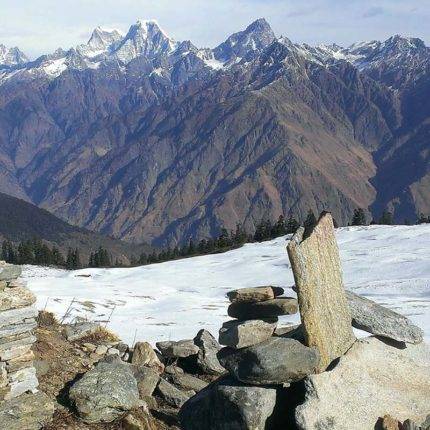
Kuari Pass Trek
Kuari pass, The perfect trek in Uttarakhand explored by Lord Curzon.
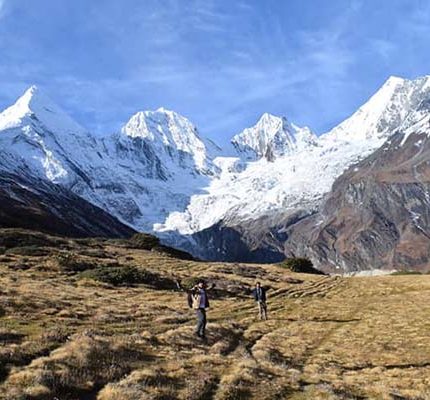
Panchachuli Base Camp Trek
It is lies in Eastern Kumaon Garhwal region of Uttarakhand Himalayas.
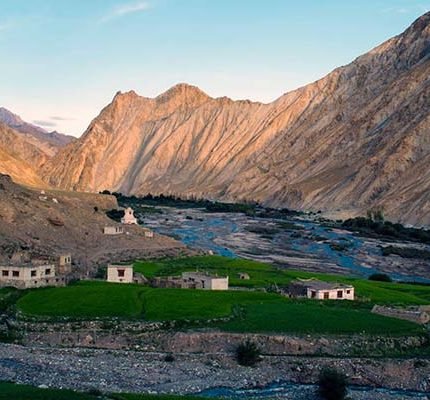
Markha Valley Trek
Markha Valley Trek – The Heaven On Earth In Leh Ladakh, India.
Price: ₹ 25,000.00
Book the tour
Send a quick enquiry.
- Overview Itinerary Dates Include/Exclude
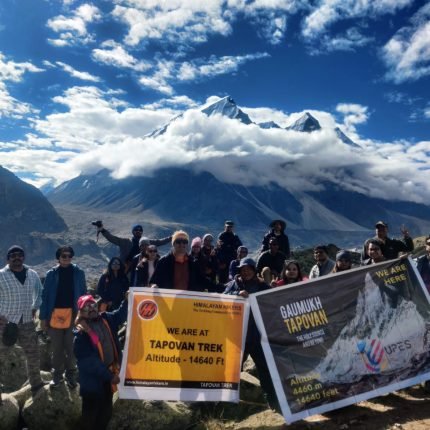
A Guide To Gangotri: A Glacial Trek That Will Bring You Closer To The Himalayas

Have you ever fantasized about zipping through the curves and twists of a snowy terrain, where the glittering flakes dazzle your eyes and the crisp air fills your lungs? Have you ever felt the call of the wild woods, where the trees whisper secrets, and the leaves dance with joy? Have you ever dreamed of reaching the source of the sacred Ganga, where the holy water flows from the mouth of a glacier?
If yes, then you are not alone. We share your passion for exploring the Gangotri Glacier Trek, a journey of wonder and awe that will take you to the heart of the Himalayas. We know you have a restless spirit that yearns for heights that touch the sky and beyond. A trek to Gangotri may seem daunting, but not to those who have adventure and thrill in their veins. It's a land of magic and mystery, where the mountains guard and guide you, where the river Bhagirathi accompanies you with its soothing sound.
Gangotri offers something for all kinds of adventurers - Whether you want to witness the glacial mouth of Gomukh, the alpine meadows of Tapovan, or the crystal-clear lakes of Kedartal and snow-kissed peaks of Shivling and Meru. By the end of this article, we bet you will be ready to embark on your Gangotri trek and experience the ultimate Himalayan adventure. Read on!
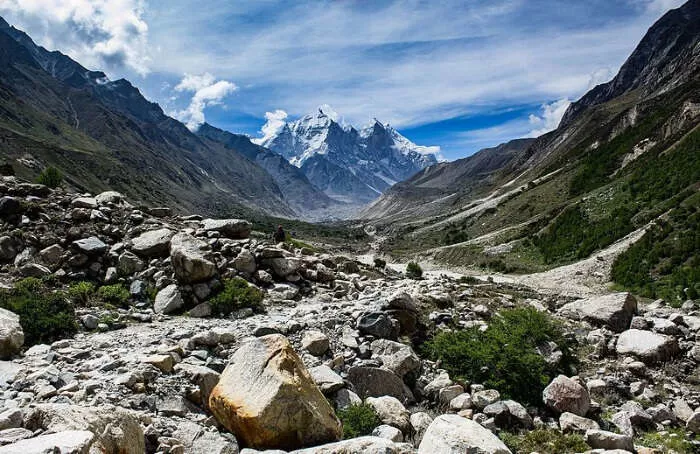
Best time to visit Gangotri:
When to visit Gangotri? It depends on what you want to do. If you want to see the temple and the rituals, go in summer (April-June) or autumn (September to November) . But be ready for crowds and high prices. If you want to trek to the glacier and beyond, go in post-monsoon or pre-monsoon. But be prepared for clear skies and dry trails.
Avoid monsoons and winter, as they are bad for trekking. The weather is nasty, the views are foggy, and the trails are muddy or snowy. Plus, the temple is shut due to rain or snow.
Read about Avinash's dream journey from Gangotri to Gaumukh, here.
Popular routes for trekking to Gangotri:
You can take several routes for trekking to Gangotri and its surrounding areas. Here are some of the most popular ones:
Gangotri Glacier Trek
Glacier Trek via Gangotri - (c) eUttaranchal
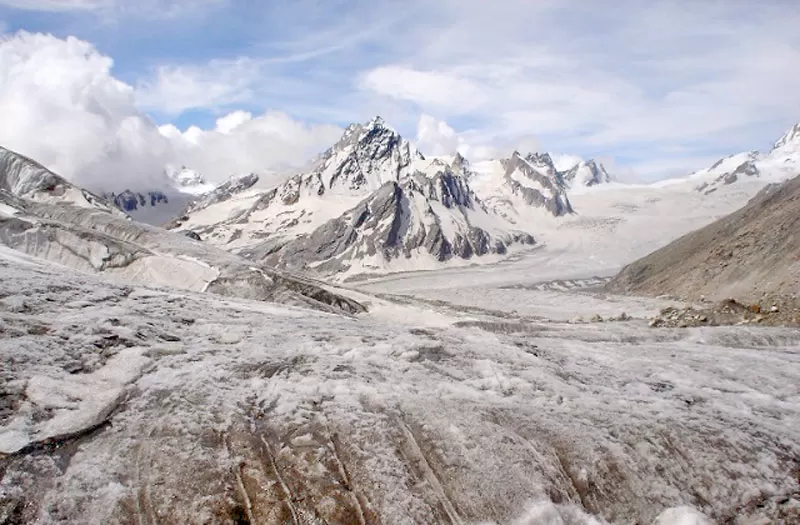
This is one of Gangotri's easiest and shortest treks, suitable for beginners and families. It covers a distance of 18 km (one way) from Gangotri town to Gomukh, the snout of the Gangotri Glacier and one of the sources of the Ganga River. The trek takes about two days (one way) and passes through scenic forests, meadows, waterfalls, and bridges along the Bhagirathi River. The highlight of the trek is the view of the glacier mouth, which resembles a cow's mouth (hence the name Gomukh). You can also see the towering peaks of Bhagirathi I, II, and III on the way.
Gangotri Gaumukh Trek
View of Gomukh - (C) Wikimedia Commons
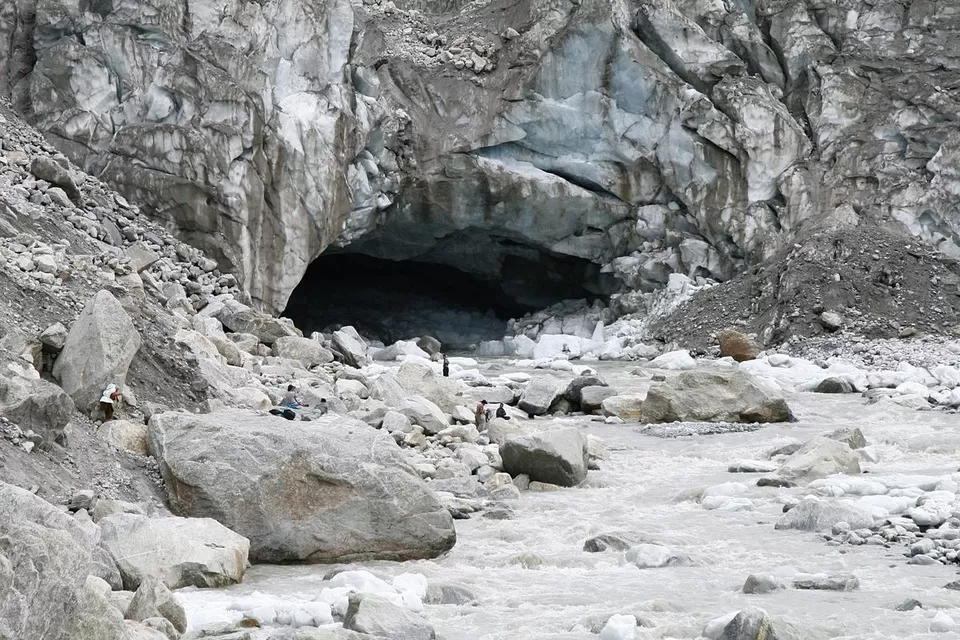
This is one of Gangotri's most popular and challenging treks, suitable for experienced and adventurous trekkers. It covers a distance of 24 km (one way) from Gangotri town to Tapovan, a high-altitude meadow at an elevation of 4,400 meters. The trek takes about three days (one way) and passes through Gomukh, where you must cross the glacier cautiously.
The hike's highlight is the view of Tapovan, surrounded by some of the most iconic mountains in the Himalayas, such as Shivling, Meru, Thalay Sagar , and Bhagirathi IV . You can also see the rare flora and fauna of the region, such as Brahma Kamal, blue poppy, and Himalayan ibex.
Gangotri Tapovan Trek
(c) Harstuff Travel
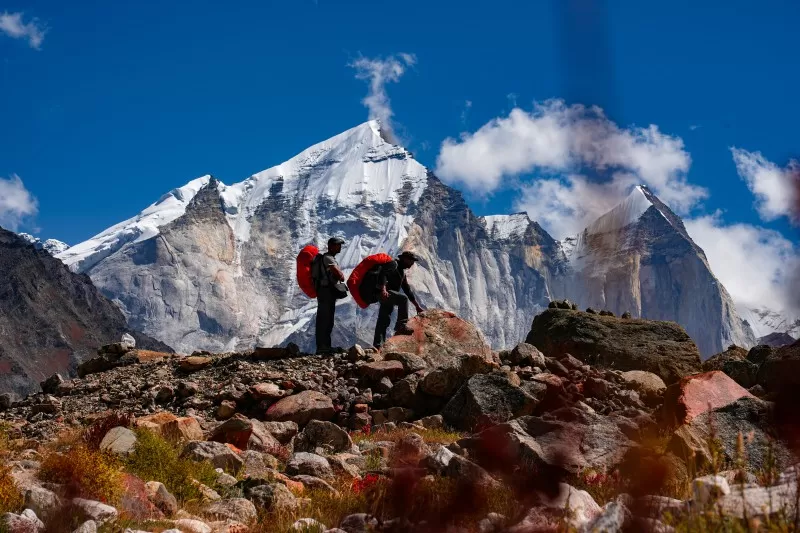
This is a variation of the Gangotri Gaumukh Tapovan Trek, suitable for those who want to skip the glacier crossing and save some time and energy. It covers a distance of 20 km (one way) from Gangotri town to Tapovan, the same destination as the previous trek. The trek takes about two days (one way) and passes through a different route that bypasses Gomukh and goes through Chirbasa and Bhojbasa , two camping sites along the Bhagirathi River. The highlight of the trek is the same as the previous trek: the view of Tapovan and the surrounding mountains.
Transportation options for reaching Gangotri:
To reach Gangotri, you must first reach Uttarkashi, the nearest central town and the base for Gangotri. Uttarkashi is well connected by road to other cities and states in India. You can choose from the following modes of transportation to reach Uttarkashi:
The nearest airport to Uttarkashi is Jolly Grant Airport, Dehradun , about 180 km away. You can fly from Delhi or other major cities in India to Dehradun, which takes about an hour. You can take a taxi or bus from Dehradun to Uttarkashi, which takes about 5 to 6 hours.
The nearest railway station to Uttarkashi is Rishikesh, about 170 km away. You can take a train from Delhi or other major cities in India to Rishikesh, which takes about 6 to 8 hours.
You can also take a direct bus from Delhi or other major cities in India to Uttarkashi, which takes about 10 to 12 hours . Regular state-run and private buses ply this route, which are comfortable and affordable.
Want to go to Gomukh? Get your permits at the park office in Gangotri town. They cost Rs 150 for Indians and Rs 600 for foreigners . They last two days, but you can extend them for another day by paying Rs 50 more when you leave.
Want to go to Tapovan or Kedartal? Sorry, you can't get your permits in Gangotri town. You must go to the park office in Uttarkashi; remember it stays closed on Sundays. Or you can email a trekking company in Uttarkashi beforehand and ask them to get them for you.
You can read about Saurav's spiritual journey to Gangotri, here.
Gears that you'll need:
Sleeping bags are a must for Gomukh, Tapovan, or Kedartal. Get one that can handle -20C . You can rent one from a trekking company in Uttarkashi too. You might find one in Gangotri town, but it will cost you more.
Kedartal has no lodges, so you need a tent, food, and cooking gear. You can rent them all from trekking companies in Uttarkashi. Gomukh and Tapovan have lodges with food.
Are you ready to embark on a thrilling Gangotri Glacier Trek, where snowy terrains and glittering flakes await?
You can also connect with me on Instagram & YouTube.
Ready to travel for free? Earn credits and redeem them on Tripoto’s weekend getaways, hotel stays and vacation packages!
Think we missed out on something? Tell us about it in the comments below. Or write about it here on Tripoto and earn Tripoto Credits!
Uttarakhand Packages
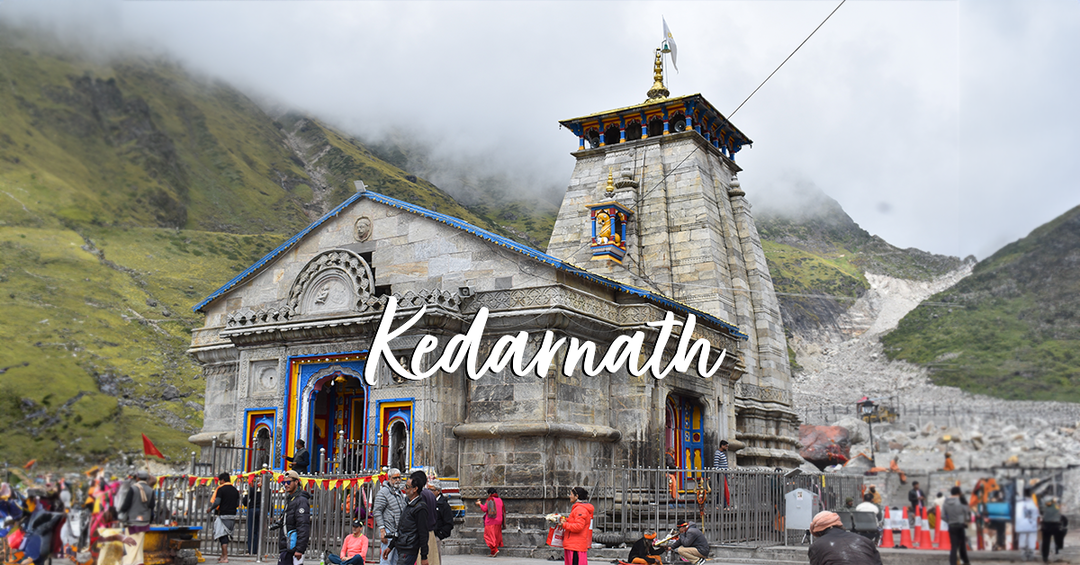
More Stories For Uttarakhand
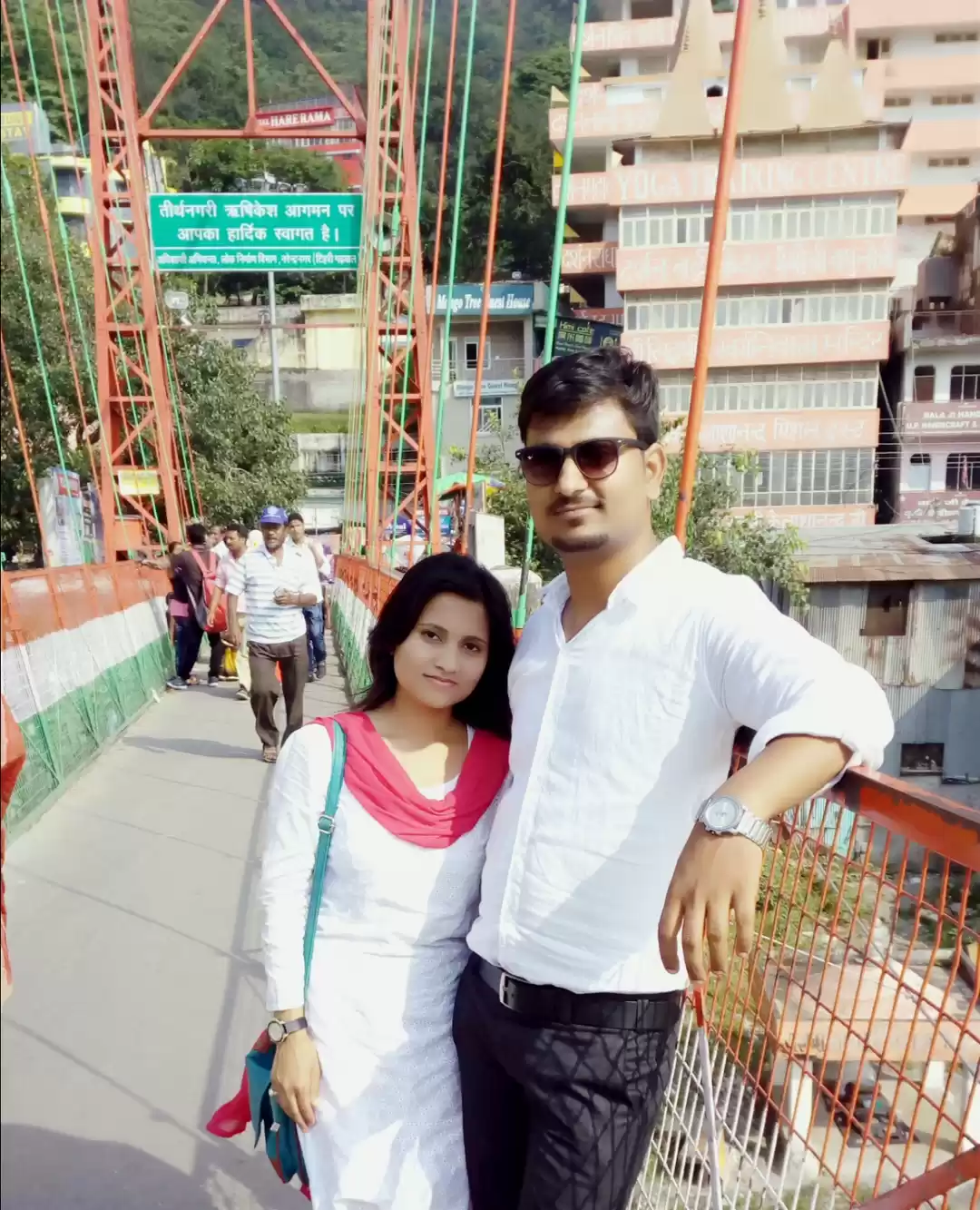
Further Reads
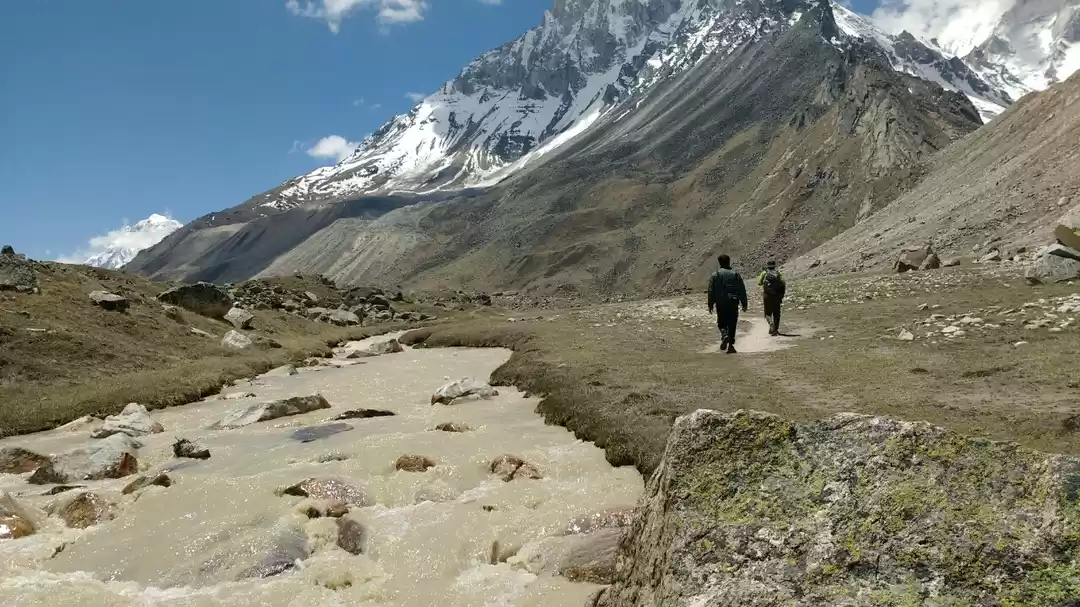

Trek To The Source Of Ganga
Moderate to Difficult
Highest Altitude
May, June & Sept, Oct
Gaumukh Tapovan Trek
The Gaumukh Tapovan Trek stands out as a unique journey through the majestic Himalayas, celebrated for its spiritual significance and unparalleled natural beauty. Commencing from the hallowed town of Gangotri, this trek guides adventurers to the mythical source of the Ganges River, Gaumukh. En route, trekkers are privileged to explore the captivating meadows of Tapovan, a sanctuary where revered spiritualists and sages have sought enlightenment for ages.
This 8-day expedition is a harmonious blend of spirituality, mythology, and exhilarating adventure. As you traverse the Gangotri glacier and approach the supposed origin of the holy River Ganga, you’ll be immersed in the rich tapestry of Indian spirituality and folklore. The journey offers a rare opportunity to witness the awe-inspiring Shivling Peak and the majestic Bhagirathi sisters, whose towering presence not only dominates the landscape but also stirs a deep sense of spiritual connection within you.
The serene meadows of Tapovan are not only a feast for the eyes but also a place of profound significance. As you step into this tranquil setting, you’ll be greeted by a carpet of vibrant wildflowers, the gentle rustling of the wind, and the distant sound of the Ganges River. Numerous saints have chosen to meditate and dwell in this enchanting landscape, infusing the area with tranquillity and spirituality that will captivate your senses.
Embarking on the Gaumukh trek is an undeniably demanding endeavour, often deemed feasible for those with adequate preparation and a moderate fitness level. With meticulous planning, even novices can triumphantly undertake this indelible pilgrimage through the heart of the Himalayas, a journey that will test their physical endurance and mental resilience.
- Stay will be on a twin-sharing basis in tents
- + 280 Trek Insurance (Mandatory)
- Discount Policy
- Transport Optional ( INR - 2,400 extra )
Pickup time 6 A.M from Dehradun Railway Station and drop
- Inclusions & Exclusions
- Food Provided Trekup India
- Safety With Trekup India
Call Our Mountain Experts
Fix Diparture Dates
Gaumukh tapovan trek videos.
Videos by experts watch these videos to prepare well for a Successful Tre

Want To Trek Like Pro?
Check out the following videos if you want to trek like a pro trekker and improve your skills. These videos contain helpful tips, tricks, and techniques to help you trek like a pro. Whether you’re a beginner or an experienced trekker, these videos can provide valuable insights to enhance your trekking experience. So, watch the videos below by Trekup India experts to take your trekking skills to the next level.
Know Everything About Acute Mountain Sickness
Acute Mountain Sickness is a medical condition that can occur when individuals travel to high altitudes, typically above 8,000 feet. It is caused by the decrease in air pressure and oxygen levels in the air as altitude increases. Symptoms of Acute Mountain Sickness may include headache, nausea, vomiting, dizziness, and difficulty sleeping. To avoid Acute Mountain Sickness, it is important to gradually adjust to high altitudes and seek medical attention if symptoms worsen. To learn more about this condition, check out the videos by Trekup India.
Day Wise Detailed Itinerary of Gaumukh Tapovan Trek
Day 1: dehradun to gangotri - 280 km by road (7-8 hours).
- Height: 3,093 meters / 10,147.64 feet.
- The pickup time will be 6:30 A.M at the Prince Chowk Dehradun Railway Station.
- It will be 250 Kms which takes 8 to 9 hours.
- Night stay will be in a hotel or guesthouse.
Driving to Gangotri from Dehradun is one of the most beautiful roads in the country. It is a must-see route for every traveler who wishes to explore the picturesque hilly regions of Uttarakhand. Set out to begin your journey from Dehradun early at 6.30 A.M. The trip will last longer since you will travel 250 kms from Dehradun to Gangotri. It is an incredible eight hours of riding through the majestic mountains. We begin early to reach Gangotri at the end of the day. Gangotri is the principal pilgrimage town in India and is among the Char Dham Temples. It is situated on the banks of the river Bhagirathi. Just 35kms away from Dehradun, the first important attraction is Mussoorie, The well-known hill station. The Hill station has stunning views of the Shivalik Mountains. After a lunch break and some exploring throughout Dhanulti, Chamba, you will arrive at the Land of the Gods, Uttarkashi.
Located in Uttarakhand, Uttarkashi is a sacred spiritual town on the banks of the Bhagirathi River. It is a famous pilgrimage spot, with thousands of devotees visiting yearly. Vishwanath Temple of Lord Shiva is one of the major tourist spots in Uttarkashi. The river Bhagirathi will take you to the beautiful Harshil village. Harshil is famous for its apple orchards everywhere, providing an opportunity to relax your eyes. Harshil is the perfect spot to spend a peaceful evening in the mountains. There is the Holy Gangotri City. Located on the banks of the Bhagirathi River, Gangotri is known as a popular location for pilgrims coming from India. It is a vital part of the Char Dham Yatra circuit. Many devotees from across the nation come to this holy town to offer their prayers and bathe in the holy water of Ganga. Enjoy a fantastic meal prepared by our cooks in the evening and relax in the guesthouse.
Day 2: Gangotri To Chirbasa By 9 kms Trek
- At an elevation of 3,100 meters (10,200 feet) above sea level, Gangotri Temple is a sacred site and one of the four revered pilgrimage destinations in Uttarakhand, known as the Char Dhams.
- Start your day with a hearty breakfast before embarking on a journey to explore the historic Pandav Gufa, Bhagirath Shila, Surya, and Gauri Kund attractions.
- In the afternoon, you have the option to visit the Gangotri Temple, a place of great spiritual significance, or indulge in some local shopping.
- Take a leisurely stroll around Gangotri town to acclimate to the high altitude and immerse yourself in the peaceful surroundings.
- As the day winds down, find comfort and rest in a cozy guesthouse, ready to embrace the tranquility of the night.
On the first day, your trek from Gangotri to Chirbasa is about 9 kilometers. The route starts by following the Bhagirathi River and climbing to the woods’ top. The path is well-defined and includes several stops to rest and admire the magnificent panorama of the Himalayas.
The trails mostly have low inclines and are level. Continue for another 20-30 minutes, and you’ll be able to witness another stream flowing beneath a rusted bridge. Once you cross the bridge, the valley widens and then turns left. Take in the various mountain ranges covered in snow along the right-hand side. After about 20 minutes of trekking from the forest check post, you will spot three major streams along your route. Sudarshan Parbat is not visible anymore. The trail now swivels to your left as you traverse the third ridge. It gives you a stunning panorama across the valley. Relax in the calming presence of silver birch trees surrounding you.
After a couple of hours of hiking, you’ll arrive in Chirbasa, Chirbasa located in an altitude range of 3,280 meters. Chirbasa is a small town with a couple of shops and basic guesthouses. It is possible to stay the night in Chirbasa’s guesthouses or tents and take in the tranquil surroundings. The campsite here has a fantastic view from the Bhagirathi, the group of mountains as well as Bhrigu Parvat. Today’s walk is easy but traverses 8-9 landslide-prone bends. It is essential to take plenty of water on this trek.
Day 3: 5.3 km Trek from Chirbasa to Bhojbasa
- Height: 3,555 meters / 11,714 feet
- Trek Distance: 5.3 km | 5 hrs approx
- Today trek will be in Gangotri National Park
- Stay will be in tents.
- Lunch at the campsite.
- Trek will be moderate.
Is trek between Chirbasa to Bhojbasa is a strenuous but rewarding adventure. On the trek, you’ll enjoy views of several breathtaking Himalayan mountain ranges, such as Shivling, Thalay Sagar, Meru, and Bhagirathi III.
The first couple of miles is smooth and marked. After that, the trail gets rocky and steep at a few locations. You might have to go boulder hopping in some spots; however, this part of the trail is worth it when you view the breathtaking views you’ll get.
In this area, observing the Bhagirathi collection of mountain peaks and the Gangotri Glacier is possible. Take some time to take in the beauty of this area.
We’ll spend the night in Bhojbasa If you want to. A small temple, an Ashram, and a GMVN rest House exist.
The trek from Chirbasa to Bhojbasa is shorter and covers about 5 km. Suppose it can be completed in 3-4 hours. The route is well-marked and mostly flat, which makes it a simple trek. However, it’s essential to know the necessary precautions since the altitude could affect certain hikers.
The trail starts from Chirbasa, located at 3,660 meters above sea level. From Chirbasa, you’ll trek through the Bhagirathi River, which flows through stunning deodar forests and pine trees. Also, you can enjoy spectacular views of the Himalayan mountains.
After trekking for about 2 hours, you’ll arrive at Bhojbasa, 3800m above sea level. Bhojbasa is a gorgeous meadow that is surrounded by mountains. It is an ideal location for camping.
During the trek, it is possible to experience many of the breathtaking scenery in the region, such as the Bhagirathi River and the Gangotri glacier, and stunning images from The Himalayan mountains.
Day 4: Acclimatization At Bhojbasa
During an acclimatization day, trekkers are advised to take a break and drink plenty of water and avoid vigorous activities so that their bodies can adjust to the altitude. An acclimatization day aims to prevent the effects of altitude sickness and ensure an enjoyable and safe trek.
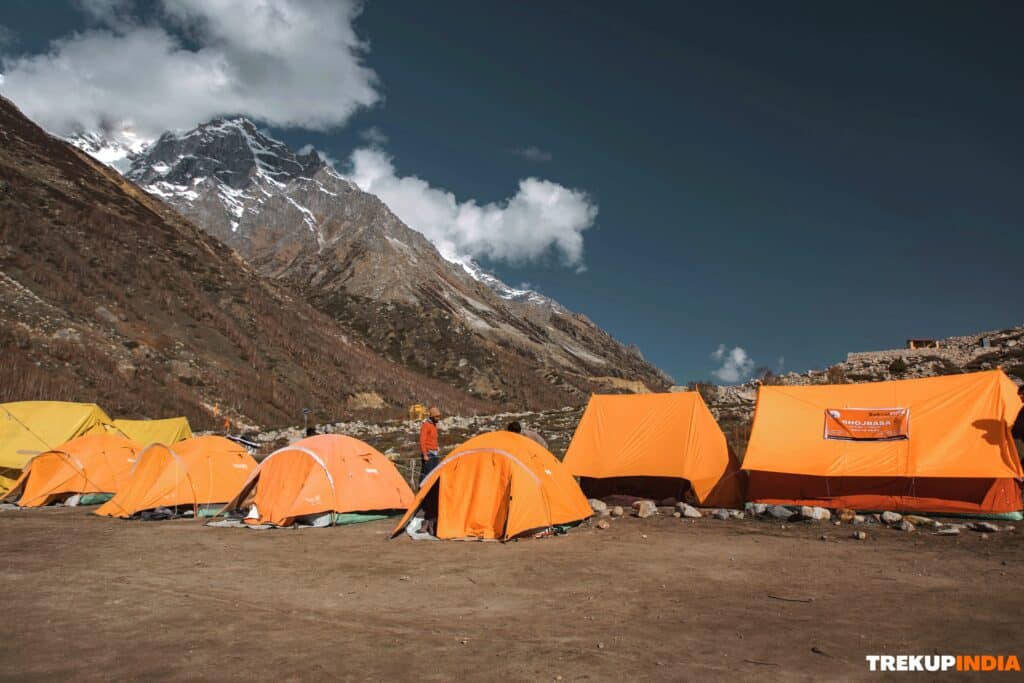
Day 05: From Bhojbasa To Tapovan through a 6.1 kms trek
- Today trekking will take about 9 hours
- Distance of trek: 6.1 kms
- Height of Tapovan: – 4,451 meters / 14,611 feet
- Stay: will be in tents
- There are no water points. It is recommended to carry at minimum 2 two liters of water.
- Today trekking will be Moderate, Plus
- Keep energy bars, water & ORS
- Trek starts over boulders. It then gets steeper slowly over the rocky terrain.
- The river can be crossed employing the trolley.
- There are mountain goats or Ibex close to your campsite.
- You will see Mt. Shivling, Meru, Manda and the Bhagirathi bunch, Kedar Dome, Kharchakund, and many more from the Tapovan campsite of Trekup India.
In the Gaumukh Tapovan trek on Tapovan day, following a 20-minute walk from Bhojbasa Campsite, We created a Tyrolean traverse to traverse the Bhagirathi river. There is also a small zipline set up by the forest authorities. It will assist you in crossing the river. It takes about one hour for all the participants to traverse. Following that, you begin the trek, which will take around 2.2 kms and is on an obvious path with stones and rocks. Afterward, it becomes a gradual climb. Then, you have to climb the rock face to reach Tapovan.
The climb is near Akash Ganga, which runs vertically down the rock face. Make sure to climb this section before lunchtime to avoid rockfalls and to reduce the amount of water flowing through Akash Ganga. The climb can take about an hour to two hours, depending on the weather. After about 100m of a climb, you will find places to traverse Akash Ganga. If the water is very high, removing your shoes and walking across the stream is necessary. In other cases, the boulder-hopping option is feasible. Stop for a break when you cross the stream. Lunch can be served here. Tapovan is a grueling climb from this point. It can take approximately 1.5 hours to get there. Find an appropriate camping site and then camp out for the night.
The views of the mountains from the Tapovan campsite are breathtaking. It is possible to see Mt Shivling to the right. Meru is located to the right of Shivling. The left-hand side is Shivling; just a bit to the left is Sumeru. To the left, you can see Bhagirathi Peaks, Thenu, and Sudarshan Parbat. If you go to the ashram accessible from the camping area, Shivling appears even closer.
Tapovan is an alpine at high altitude meadow beneath Mt. Shivling and monopolizes the terrain. Tapovan is stretched in 1.6 kms. While it’s broad, level terrain but only some pieces of terrain are convenient for camping. The region near Mount Shivling is saturated in the summer because of melting glacial waters. Many saints have used these areas to contemplate over time. Numerous holy men reside in permanent residence at Tapovan.
A 1.2-mile trek from Tapovan to the adjacent peak goes Neelatal and leads you to a viewpoint from which you can enjoy stunning panoramas of Meru. It takes around two hours to get to the camp. After it, you must walk up the ridge to get to Neelatal or continue along that similar trail until Tapovan.
Day 06: Tapovan to Bhojbasa by 5.9 kms trekking through Gaumukh
- Location of start: Tapovan is a high-altitude meadow at 4,463 meters above sea level. The trek starts at Tapovan and descends downhill to Bhojbasa.
- Distance: The distance between Tapovan towards Bhojbasa is about 5 km.
- Level of difficulty: The hike is moderately strenuous and suitable for those just beginning. It is marked, and the terrain is relatively easy. However, hikers must be aware when they descend because the trail could be slippery at specific points.
- Duration: The trek lasts 3 and 4 hours, depending on the hiker’s fitness level and speed.
- Terrain: The path from Tapovan towards Bhojbasa is a descending trail, a mixture of grassy meadows. It is also possible to traverse through a river on their route.
- Highlights: The trek provides incredible panoramas of Himalayan mountain ranges, which include Shivling, Meru, and Bhagirathi. These meadows between Tapovan and Bhojbasa are also fantastic sights to behold.
The trek begins at Tapovan, at an altitude of 4,463 meters (14,640 feet). You’ll have to walk around 14 km (8.7 miles) to get to Bhojbasa, 377 meters above sea level (12,385 feet). The hike is as moderate to challenging and ideal for those with experience. The path winds through steep hills, rocky ground, and narrow pathways. We suggest you know the dangers and carry all equipment and gear to complete the hike. During the trek, you’ll travel across The Gangotri National Park, home to various wildlife and plants. Also, you’ll be able to witness many spectacular images of the Bhagirathi mountains, including Shivling, Thalay Sagar, and Meru.
Get up early to enjoy the last few minutes in the shadow of mountains that shine in the blazing sun’s beams. Today will start trekking to Gaumukh Glacier. Mount Shivling appears prettier than ever, and its beauty is passed on to nearby mountains. Together they create an impressive scene. It’s time to bring these moments back after breakfast. We will provide you packed lunch with you and drink as much water as possible since there aren’t any water sources. You’ll need to traverse the rough landscape and elevation of the glacier. It is harder to descend than ascend, and you’ll know this as you traverse the rocks. Be aware and stroll. Make sure to remember the moment as you go back through the steps. Take in the forest areas of Bhojwasa yet again, with its wildlife and flora.
It’s a very steep climb to Gaumkuh, and you’ll be able to view the massive glacier. Gaumukh is the terminus of the Gangotri glacier, the point of origin for the holy Ganges river. Gaumukh is a reference to a cow’s mouth. Many religious people think it a blessing to go to the Ganges. Even if you’re not religious, you’ll be amazed by how large and small the snout faces it.
According to legend, once upon a time, a mighty king named Sagar wanted to carry out the Ashwamedh Yajna with a ceremonial sacrifice horse. Believing that Sagar would be able to complete the Yajna ceremony and be able to complete the Yajna, Lord Indra rode the horse and placed it in the Ashram of Lord Kapila, in which he would meditate. Sagar sent out thousands of his sons to retrieve the horse. His practice was interrupted when they started causing chaos within the Kapila Muni ashram. He resigned every son to ashes and cursed that they could achieve Moksha only when their ashes were buried in the waters of the sacred River Ganga and ascended to heaven. The entire Sagar family members failed to convince Brahma to bring Ganga back to Earth; however, King Bhagirath successfully pleased Brahma and ordered Ganga to flow through Earth. The goddess Ganga was not thrilled with this and spewed forth in such a way that she was set to drown all of the world. Bhagirath then offered prayers for God Shiva, and Shiva was willing to lock Ganga with his hair to manage the force, which is how Ganga was brought back to Earth. One dip in Ganga is considered sufficient to eliminate a person’s sins. Then after a sharp climb to Gaumukh, trek down the hillside along the Bhagirathi River. It’s about a 4.5 – 5.5 hour walk to Bhojwasa. After reaching, we will stay tonight at Bhojwasa campsite.
Day 07:Bhojbasa to Gangotri By 14 kms Trek
- Location of start: Bhojbasa is situated at 3,775m above sea level. The trek begins in Bhojbasa then descends towards Gangotri.
- Distance: The distance between Bhojbasa to Gangotri is around 14 kilometers.
- Difficulty: The trail is moderately tricky and suitable for novices. It is marked, and the terrain is relatively easy. However, walkers must be aware when they descend because the trail may be slippery at specific points.
- Duration: It will take 5 to Six hours, depending on the hiker’s fitness level and speed.
- Terrain: The route that runs from Bhojbasa up to Gangotri is a descending trail, which is of forest and rocky areas. The trekkers can also traverse a river along the route.
The distance between Bhojbasa and Gangotri is about 14 km, and it takes 5-6 hours to complete the hike. The path is well-marked and easy to follow, making it ideal for those new to the trek. However, walkers must be cautious when descending because the trail may be slippery in certain areas.
The hike offers breathtaking panoramic views of the Himalayan mountains, which include Shivling, Meru, and Bhagirathi. The trekkers will also encounter several small waterfalls and streams along the route. The forest areas in the foreground contain a variety of wildlife, including the musk deer and Himalayan Black bears. The natural beauty and beauty within site are stunning, and the hike offers the perfect opportunity to be in touch with the natural world.
When the trek ends in Gangotri, this is an ideal time to discover the spiritual significance of the town. Gangotri is, where the river Ganges was born, considered one of India’s holiest spots. It is the home of many ancient temples and ashrams, and pilgrims travel across the nation to pay tributes to the saint.
In the end, the hike from Bhojbasa through Gangotri is an essential activity for those who want to take in the splendor of the Himalayas and discover its spirituality. With breathtaking views, a well-marked trail, and the chance to learn about the region’s culture, it is an unforgettable trip that you won’t miss.
Day 08: Gangotri to Dehradun By 280 kms Drive
- The starting point is Gangotri: Gangotri is a small town situated at an elevation of 3,415m over sea level within the Uttarkashi district of Uttarakhand. The drive starts in Gangotri and then descends towards Dehradun.
- Distance: The distance between Gangotri from Gangotri to Dehradun is around 250 kilometers.
- Condition of the roads: The route between Gangotri and Dehradun are among the most mountainous roadways, passing through many small towns and villages. The road’s condition is generally good, although some bumps and spots are due to landslides or other natural elements. Time: The drive can be anywhere from 8 to 10 hours based on the road conditions.
- Highlights: The road offers breathtaking panoramas of the Himalayan mountains, which include Shivling, Meru, and Bhagirathi. The route winds through many small towns and villages, where you can taste the local culture and food. It is also possible to go to the Tehri Dam, one of Asia’s most significant hydroelectric projects.
- Drop Location: Dehradun is a city located at the foothills of the Himalayas. It is famous for its mild weather, beautiful scenery, and rich cultural heritage. There are many tourist attractions in Dehradun, such as the Robber’s Cave, Sahastradhara, and the Tapkeshwar Temple. It is also ideal for adventure sports such as camping, trekking, and Rafting.
Conclusion, the trip to Gangotri towards Dehradun is an adventure. It offers breathtaking panoramic views of the Himalayas and an opportunity to experience the region’s culture. But, it’s essential to be aware of the dangers and be aware when driving over rugged terrain. With its picturesque beauty and historical heritage, Dehradun is a beautiful place to finish your trek.
Gaumukh Tapovan Trek Route Map
Gaumukh tapovan trek altitude chart.
The Trek Altitude Chart is a useful tool for Trekkers to monitor their altitude changes during their rides, allowing them to plan their routes more efficiently and track their progress over time. This Gaumukh Tapovan Trek chart is beneficial for both casual and experienced Trekkers, helping them make the most out of their Trek experience.
Trek Cost Inclusions
- Stay: 5 Nights of tented accommodation at individual campsites of Trekup India on twin sharing and 2 nights at Gangotri on sharing basis.
- Meals: Trekup India will provide freshly cooked meals during the trek starting with Dinner on Day 1 to tea, coffee on day 8 (Meals are simple, nutritious, and vegetarian)
- Transport (Optional): Dehradun to Gangotri and return. ( 1600 extra )
- Trek Insurance (Optional): Trekup India recommends that all trekkers consider getting trek insurance. This is optional, but highly recommended. Trek insurance covers unexpected events that may occur during your trek. The cost of the insurance starts from INR 210. Please read more about what is included in the coverage and why it is mandatory on treks.
- Trek Equipment: Sleeping bag, Sleeping tents, Kitchen tent, Dining tent, Toilet Tent.
- Amenities: All utensils, sleeping mattresses (Black foam mats), Crampons, and Gaiters for snow.
- Health & Safety: First Aid Box, Oxygen Cylinders, Stretchers, Oxi meters, BP Machines, health.
- Permits: Forest Permits and Camping Permission Fee
- Trek Crew: High Altitude Chef, Helpers, Trek Leader & Guides, and other support teams.
- Potters & Mules: Potters and Mules are to carry all trekking equipment, ration, and vegetables.
Trek Cost Exclusions
- GST 5% (it is Mandatory)
- Any Meals/accommodation beside the itinerary or not mentioned in the program.
- Any Bus / Airfare to/from trek start/end point
- Personal Medical expenses do carry your medication.
- Any personal services such as Laundry, phone calls, liquors, mineral water, etc.
- Any still / video camera fee
- Any Entrance fee Monuments, Monasteries, Museums, Temples – Pay directly on the spot.
- Mules or porter charges to carry private baggage (Offload Charges for bag 365 per day, per bag if paid online (at base camp 2,550). Note: Bag weight should not be more than 10 kg.
- Any emergency evacuation charges
- Any services that are not mentioned in the cost inclusion section.
What should you pack for the Gaumukh Tapovan Trek
Gaumukh Tapovan Trek is a high-altitude trek. The trekking gear you have to have for this particular trek differs from normal treks. Thus, read this whole segment. There is an important question that the trekker who is doing trek asks, like what all things to carry while trekking. Below, we have provided the details on everything you should take; an easy way to remember is by Head to foot or foot to head. We have prepared from Head to foot.

When trekking it's important to carry headgear to protect your head and face.
Heading out for a trek? Don’t forget to carry headgear to protect your beautiful face and head from the sun, wind, and dust! It’s an essential accessory that keeps you safe and comfortable throughout your adventurous journey. So, make sure you pack it before you step out into nature!
- Head Lamps – When trekking at night, headlamps are essential to illuminate your path while keeping your hands free. Headlamps come in different sizes and lumens, so it is essential to choose one that suits your needs.
- Hats or Cap – Caps or hats are also necessary when trekking in different weather conditions. Caps protect your head from the wind and freezing temperatures at night, while hats provide shade and protection from the sun during the day. It’s essential to ensure that your hat has a strap to prevent it from being blown away by the wind.
- Sunglasses – Sunglasses are also essential for trekking. Your sunglasses should protect your eyes from harmful UV rays and fit your face perfectly to avoid falling off while climbing, jumping, or crossing obstacles. The glass of your sunglasses should also be designed for different weather conditions to provide optimal visibility.
- Buff / Balaclava – Lastly, a buff or balaclava is a must-have to protect your mouth or neck from extreme temperatures and keep them warm. Buffs and balaclavas come in different materials, thicknesses, and designs, so it’s important to choose one that suits your needs and preferences. Depending on the weather conditions and your activities, you can wear them as neck warmers, face masks, or headbands.
When trekking in high altitudes, prepare for cold weather by wearing layers. Layering traps heat, keeps you warm, and allows you to easily adjust your clothing as temperatures fluctuate.
Layering is important for different seasons when trekking. When planning a high-altitude trek, it is important to prepare for the cold weather. Wearing layers is the best approach as it provides both protection and flexibility when the weather changes frequently in the mountains. Layering helps to trap heat and keep your body warm, while at the same time allowing you to easily adjust your clothing as the temperature fluctuates. By wearing layers, you can enjoy your trek comfortably and stay safe in the unpredictable mountain weather
- For spring, summer, and monsoon treks , consider wearing three layers: a woollen sweater, a fleece, and a padded jacket.
- For autumn treks , add one more fleece layer to make it four layers.
- For winter treks , you may need five layers with thermals, a woollen sweater, two fleeces, and a padded jacket.
- T-shirt/sleeve shirt – Bring three T-shirts and two quick-dry trek pants, wearing one and carrying the others. Long sleeve shirts help to protect from sun UV rays. We recommend synthetic T-shirts as they get dry quickly when they get wet.
- Hiking / Trekking Jacket – down jackets (-5 to-10 C) or two-three-layer jackets.
- Thermals – at least two pairs of thermals help keep the body warm during cold weather.
- Undergarments – you can carry them according to your habitual and hygiene requirements.
- Gloves – 1 pair of gloves will keep your hand warm and nice.
- Trek Pants – Bring 2 to 3 comfortable trekking pants. Trekking pants play a significant role, as they are designed for comfort and mobility, making trekking easier. It should be Synthetic so that it gets dry quickly when wet.
- Rain Wear – you can carry a raincoat or Poncho. During long rains and snowfalls, the waterproof jackets start leaking. Still, the Poncho and raincoats keep you dry, so choose accordingly.
Tip: If you choose a raincoat on your trek, carry a small waterproof cover so things inside your backpack can’t get wet. If you carry a Poncho, you don’t need to worry. It protects both you and your backpack.
When it comes to planning a trek, one of the most important aspects is to ensure that you have the right kind of foot gear.
- Trekking shoes which are waterproof and have ankle support. Walking / Hiking sandals which can be used off the trek, i.e., in the morning and evening hours when you reach the campsite, basically to get your feet rest from heavy boots, sometimes used for crossing streams and rivers, it’s more comfortable and safer than crossing barefoot or wetting your shoes. Sneakers (Optional) can be worn for normal driving days or used around the camp.
- Socks – you should at least carry 3 to 4 pairs.
- Microspikes & Gaitors will be provided by Trekup India when required. You don’t have to carry them.
Personal First Aid Kit
Don't forget to pack your personal first aid kit! It's always better to be safe. So, make sure you're prepared for any unforeseen circumstances.
Below are some common medicines generally required/used during your adventure trip; however, please consult your doctors prior.
- Antiseptic towel or water syringe (to clean the wound)
- Butterfly bandage for a small cut
- Cotton and elastic bandages and sterile gauze pad for larger wounds
- Latex gloves are used when the wound bleeds.
- Medicine for Diarrhea (Upset stomach)
- Medicine for cold, flue/fever, headache
- Some pain killers
- ORS pouches
- Quick pain relief spray (External use)
- Any personal medicine prescribed by your doctor
- Dimox / Similar for high altitude sickness
- Bug Repellent
- Carry some nutria/energy bars and drinks (non-alcoholic)
- Note: Kindly consult your doctor before purchasing or taking any medicine.
Gadgets and Other Items
You might also consider bringing a camera, binoculars, portable charger, and snacks. Be well-prepared and tackle any trail with confidence.
- Trekking Poles
- Mobile phone
- Spare batteries for phone and camera, power bank
- Lightweight flashlight or headlight
- A waterproof bag made of plastic is used for the camera.
- Plug/converter for electrical items
- 1-litre water bottle
- A journal with a pen would be a good idea to keep your notes.
- Some book of your interest for the ideal time
- Get into the habit of maintaining a Map and guidebook of the region.
Hygiene & Personal toiletry
Remember to pack hygiene and personal toiletry items such as soap, shampoo, toothbrush, toothpaste, deodorant, and toilet paper.
- Sunscreen with UV protection to shield your skin from harmful rays
- 1 or 2 small quick-drying towels to help you dry off quickly in case of rain or sweat
- Toilet paper, tissues or wet wipes for maintaining hygiene while on the trek
- Toothbrush, toothpaste, and mouth freshener to keep your mouth clean and fresh throughout the journey
- Deodorant or talcum powder to help you stay fresh and odor-free, especially during hot and humid climates
- Shampoo to keep your hair clean and healthy
- Sanitary pads or tampons (for female trekkers) to manage menstrual cycles
- Lip-gloss or salve to protect your lips from dryness and chapping
- Bio-degradable soap to keep yourself clean and hygienic while on the trek
- Nail clipper and other personal items that you use daily
Compulsory Documents to Carry
There are certain documents that you should always carry with you. These documents are not only necessary for your safety and security, but they may also be required by local authorities.
These files must be submitted to the Forest Department before your trek. With none of these, you will not be permitted to trek—original and photocopy of government photo identity card. Carry IDs like Aadhaar, voter ID, etc.
How To Plan Your Trek & Reach Dehradun
By Air:- Most air carriers such as Air Indian Airlines, Jet Airways (www.jetairways.com ) have regular flights to Srinagar. Getting to Srinagar by flight from New Delhi is considered the most conceivable.
By Train:- Jammu may be the closest railway station to Srinagar, which is at a distance of 290 km. Jammu railway station is nicely attached to other main towns in India by rail. Direct Rails are available from Delhi, Trivandrum, Bangalore and also Chennai.
By Bus:- Srinagar is connected through the National Highway 1A to all over the country. J & K transportation has regular comfy buses from Jammu. The Journey captures approximately ten hrs to arrive at Srinagar.
Gaumukh Tapovan Trek Photos
Fitness required & preparation guide for gaumukh tapovan trek.
If you’re preparing for a Gaumukh Tapovan Trek, Trekup India recommends jogging as part of your fitness routine. Jogging helps work out the same muscle groups that you’ll use during trekking and can help you build endurance. You don’t need any special equipment to get started.

Fitness Target
Trekup India has put the Gaumukh Tapovan Trek into an moderate to difficult grade-level trek.
For Moderate – Difficult Treks – In order to be well-prepared for your upcoming trek, it is recommended that you focus on building your endurance by aiming to cover a distance of 4.5 kilometers in less than 40 minutes. This will help you to develop the necessary stamina and strength required to successfully complete your journey.
How to Achieve This Fitness Target?
To start preparing for your trek:
- Try jogging for at least five days every week.
- If you find 5 km too difficult at first, begin with 2 km and gradually increase over 2-3 weeks.
- Once you feel more comfortable running 5 km, focus on improving your speed gradually on a daily basis.
It is important to ensure that you can consistently complete 4.5 km in under 40 minutes for at least two weeks before your planned trek. Allow yourself 6-8 weeks to prepare physically for the journey.
Strength Training exercises that benefit Trekking
Trekking is an activity that demands a good level of strength.
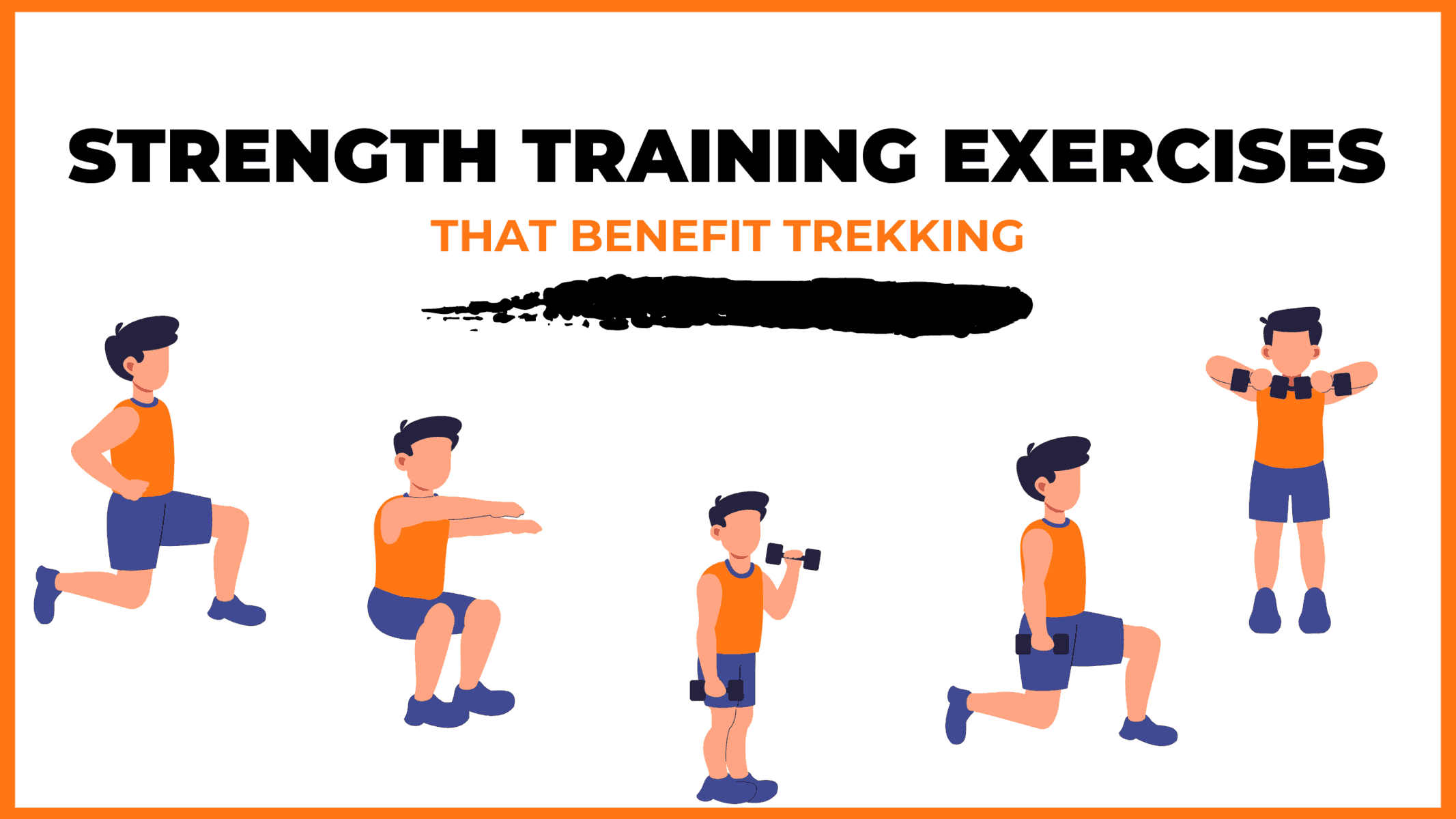
Trekking is a demanding activity that requires good cardiovascular endurance, muscular strength, and overall fitness. To help you prepare for your trek, incorporating bodyweight exercises into your training routine can be an effective way to build strength, improve stability, and enhance endurance, all of which are crucial for a successful trek. In this regard, here’s a breakdown of body weight exercises categorized by the specific body parts they target and the benefits they offer during trekking.
1. Lower Body Exercises
Lower body exercises like squats and lunges are great for building lower body strength, essential for trekking.
Squats are an excellent exercise for building lower body strength, essential for trekking. They target the quadriceps, hamstrings, glutes, and calves. Solid quadriceps and glutes provide power for ascending and tackling uphill climbs, while vital hamstrings aid stability during descents. This is particularly helpful in navigating uneven terrain during trekking.
How to perform Squats Exercises:
- Stand with feet shoulder-width apart, toes pointing slightly outward.
- Lower your body by bending your knees and hips, keeping your back straight.
- Lower until your thighs are parallel to the ground or as low as comfortable.
- Push through your heels to return to the starting position.
Lunges target the quadriceps, hamstrings, glutes, and calves. They improve lower body strength, balance, and stability, crucial for maintaining control on rocky trails and steep slopes. Additionally, they enhance flexibility, reducing the risk of injury while trekking.
How to Perform Lunge Exercises:
- Stand with feet hip-width apart, hands on hips or sides.
- Take a step forward with one foot, lowering your body until both knees are bent at 90-degree angles.
- Push through the heel of your front foot to return to the starting position.
- Repeat on the other side, alternating legs.
2. Upper Body Exercises
Upper body exercises such as push-ups and pull-ups effectively strengthen the upper body, especially the chest and shoulders, which are essential for carrying a backpack during treks.
a. Push-Ups
Targets: Chest, shoulders, triceps, and core.
Benefits for Trekking: Push-ups are an effective exercise to strengthen the upper body, especially the chest and shoulders, essential for carrying a backpack during treks. Improved upper body strength will also help maintain posture and stability while traversing challenging terrain.
How to Perform Push-Ups Exercises:
- Start in a plank position with hands shoulder-width apart and body in a straight line from head to heels.
- Lower your body by bending your elbows until your chest nearly touches the ground.
- Push through your palms to return to the starting position.
- Keep your core engaged throughout the movement.
b. Pull-Ups/Bodyweight Rows:
Targeting the back, biceps, and shoulders can significantly benefit trekking. You can strengthen these muscle groups by performing pull-ups or bodyweight rows and improve your posture and balance while carrying a backpack. Additionally, more muscular back muscles can help reduce the risk of back strain and fatigue during long treks, making your journey safer and more comfortable.
3. Core Exercises
Core exercises like planks and Russian twists can help strengthen the core muscles, which are crucial for maintaining stability and balance while trekking on uneven terrain.
Targets: Abdominals, obliques, and lower back.
Benefits for Trekking: Planks are an effective exercise that helps strengthen the core muscles. These muscles are crucial for maintaining stability and balance while trekking on uneven terrain. A strong core also helps improve posture, reducing the risk of back pain and fatigue during extended hikes.
How to Perform Planks Exercises:
- Start in a plank position with elbows directly under shoulders and body in a straight line from head to heels.
- Engage your core and hold the position, avoiding sagging or arching the back.
- Keep breathing steadily and hold for the desired duration.
b. Russian Twists
Targets: Obliques, abdominals, and lower back.
Benefits for Trekking: Russian twists engage the core muscles, particularly the obliques, improving rotational stability and balance. Enhanced core strength helps prevent injuries and improves overall performance during trekking.
How to Perform Russian Twist Exercises:
- Sit on the ground with knees bent and feet flat, leaning back slightly to engage the core.
- Clasp hands together and twist the torso to one side, bringing the hands towards the ground beside the hip.
- Return to the centre, then twist to the other side.
- Continue alternating sides for the desired number of repetitions.
4. Full Body/Cardiovascular Exercises
Full-body/cardiovascular exercises like burpees and mountain climbers are excellent for improving cardiovascular endurance, strength, and agility.
Burpees are an excellent full-body exercise that targets your legs, chest, arms, and core. This exercise dramatically benefits trekking enthusiasts, improving cardiovascular endurance, strength, and agility. Regularly incorporating burpees into your workout routine can enhance your overall fitness level, which can help you endure long hikes and rugged terrains with ease.
How to Perform Burpees Exercises:
- Start in a standing position.
- Squat down and place hands on the ground.
- Jump feet back into a plank position.
- Perform a push-up.
- Jump feet back to the squat position.
- Explosively jump up into the air, reaching overhead.
- Land softly and repeat the sequence.
b. Mountain Climbers
Mountain climbers target the core, shoulders, chest, and legs. This dynamic, full-body exercise can significantly improve cardiovascular endurance and agility. It is an excellent functional workout for trekking preparation as it engages both the upper and lower body muscles while strengthening the core muscles.
How to Perform Mountain Climbers Exercises:
- Drive one knee towards the chest, then quickly switch legs, alternating in a running motion.
- Keep the core engaged and the hips stable throughout the movement.
- Continue at a moderate to fast pace for the desired duration.
Incorporating bodyweight exercises into your training routine can help you build strength and endurance and prepare your body for the physical demands of trekking. Consistency and proper form are crucial to maximizing the benefits of these exercises and ensuring a safe and enjoyable trekking experience. Engaging your core muscles, including obliques, abdominals, and lower back, with Russian twists can improve your rotational stability and balance, preventing injuries and enhancing overall performance during trekking.
When incorporating strength training exercises into your workout routine, it’s essential to maintain proper form and technique to avoid injury. Start with lighter weights and gradually increase the intensity as you progress, focusing on compound exercises targeting multiple muscle groups simultaneously. Some examples of practical strength training exercises for trekking include squats, lunges, deadlifts, and pull-ups.
Remember to give your muscles time to recover between workouts, and remember to stretch before and after your workouts to prevent injury and improve flexibility. Combining strength training with jogging and proper stretching allows you to take your fitness to the next level and confidently tackle even the most challenging treks.
Our Trekkers Reviews And Expreinces
Food provided by us during trek.
We provide only Indian vegetarian food, and your meal will mainly consist of Indian bread, vegetables, lentils, rice, and a delicious dessert. During your trek, we will serve three meals a day, including breakfast, lunch, and dinner. You will also be served tea, snacks, and lip-smacking soup in the evening before dinner. If it is a long day of trekking, you will be given a packed snack.
After extensive research on the trekkers’ nutritional requirements, we prepare the menu. Before putting all the meals together, we also consider the altitude and the weather.
The meal we serve during the trek is perfectly balanced with calories, carbohydrates, vitamins, protein, fibre, and minerals. You need to know that all our cooks have great expertise in cooking and have undergone thorough training. So, get ready to enjoy delectable and lip-smacking dishes during your trek. You will be served with lemon tea in the tent to start your day with a refreshed feeling. Before leaving the campsite for trekking, you will be given a hot finger-licking breakfast like upma, Aallu Prantha, Besan Chilla, Poha, Daliya, Corn flakes, and Maggie, along with tea or coffee.
If your trek is longer, we also offer some fresh local fruits such as apples and healthy drinks like Frootie or Maaza. In the afternoon, you will be served a simple & healthy lunch, while at around 04:00 pm, you will be given tea and a light evening breakfast. After you reach your campsite at night, you will be served a hot and delightful dinner.
After reading this, you must have understood the food we provided on the trek; you don’t need to worry about food. Many trekkers repeatedly trek with us because of the food we provide. Thus, we will give you unforgettable experiences.
Safety During Gaumukh Tapovan Trek

Trekking with us for the Gaumukh Tapovan Trek is entirely safe because we have a team of trek leaders qualified in Wilderness first-aid and complete information about the high-altitude glitches. During the trek, we carry a full first-aid kit that contains all the essential medicines. Before trekking with us, you must ensure that you are medically fit for the trek; for us, your medical fitness is more important than anything else.
Right from our establishment, we at Trekup India have been continuously introducing new safety practices into Indian trekking to ensure the safety of voyagers. Trekup India introduced microspikes and made emergency bottled oxygen mandatory for all treks. Our trek leaders take your daily Pulse oximeter reading. We at Trekup India introduced the radio walkie-talkie as a safety communication device.
How can we ensure that your trek is safe with us?
We have noticed that most trek-organizing organizations do not follow these systems, but with time, they are following us; several competing companies are adopting these practices and organizing great, safe treks.
We ensure complete technical safety in the mountain. Our company has a vast team of more than 100 guides and trek leaders who serve on Himalayan treks. One of the best things about our team is that all the members are trained professionally by the Nehru Institute of Mountaineering, Indian Mountaineering Foundation Delhi, and Hanifle Center Outdoor Education Mussoorie.
Explore our New Safety Protocols
To ensure a perfect Trek, we have introduced some new safety checks to ensure excellent safety for our trekkers.
Our On-trek safety checks include:
- Daily oxygen saturation, along with pulse readings
- Stretchers team appointed on every trek
- Trained mountain staff and complete safety
- Additional oxygen cylinders
- Special medical kit for high-altitude treks
- Microspikes on all types of snow treks
- Experienced Trek leaders, as well as safety
- Technical team on all snowy slopes
For Us, Your Safety Is the Top Priority
At Trekup India, you will find a team with local knowledge and fluency in English and Hindi. This helps ensure that you have a fantastic trek. Not only this, but we also pay attention to your health and safety because this is something we cannot ignore. All the team leaders involved in trekking have already undergone several professional courses in first aid, portable altitude chamber training, CPR, environmental awareness training, and advanced wilderness emergency medicine.
We also carry a complete first aid medical kit on every trek and trip we organize. Apart from the medical kit, we take a portable altitude chamber (if needed) and medical oxygen for all high-altitude treks. Our company has significant expertise in organizing all sorts of group adventure holidays for family groups, school and college groups, and friend groups. We have many travel options that suit different fitness levels and travelling styles.
Regardless of the group size, we value each and every member of our trekking groups. Our commitment to personal attention ensures that your needs and safety are always our top priority.
Who we are?
Trekup India has been a stalwart in the Adventure Tourism industry for 30 years. Since our inception, we have been dedicated to providing top-notch treks, voyages, trekking programs, and high-altitude expeditions. Our extensive experience is a testament to our commitment to your adventure and safety.
We organize treks in Uttarakhand, Kashmir, Sikkim, and Himachal while being part of the trekking community; we feature more than 75 documented Himalayan treks. In addition to other outdoor activities, our company also organizes trips for schools, colleges, and families.
Therefore, we maintain the quality of services offered to our valuable customers.
Must Read These Information Of Gaumukh Tapovan Trek
Why you should do gaumukh tapovan trek, 1. enjoy the stunning mountain scenery while on the trek.
Many treks in the Himalayas offer breathtaking views. The Kashmir Great Lakes, however, is a different scale. The mountains of Kashmir look like this. You can feel their presence all around you. It is not exaggerated to say that a trek through Kashmir is like viewing IMAX on a TV while everything else is on a regular TV screen. Kashmir is a place you can feel it all
2.The diversity of the valleys, meadows
Seven trekking days are required for the Kashmir Great Lakes trek. You will also be trekking in seven different valleys. Each valley is spread out over the course of the trek. Each valley is a tough competitor to the one before it.
Six of the seven valleys that you can trek are distinct grasslands, or meadows. These meadows and grasslands at high altitude are linked by high passes. You would expect meadows to be the same on both sides of a pass. They aren’t. Each of them has its own world and charm.
You can start with the Shekdur meadows, also known as tabletop set among Maples and Birch trees. The Nichnai grasslands are a great example of how large and rugged meadows can get. Cross the Nichnai pass to enter a meadow you won’t want.
The Vishnusar grassland is a wide, grassland that descends gently, rich in wildflowers, and has a gentle stream running through it.
The Gadsar meadow has a more dramatic appearance. It is narrower and has more jagged mountains on its sides. The central landscape is dominated by a large Gadsar, but it leads to many smaller lakes. Wildflowers bloom throughout the valley.
You will be transported to the top of the Gadsar valley by climbing up “Windows wall paper” Valley of Satsar. Satsar meadows are characterized by a smooth, manicured green lawn with a few maple trees and horses enjoying the graze. I have never seen greener grass elsewhere.
The Gangabal expanse is the last grassland. The valley below Zaj pass is almost like looking at the green world map. Gangabal in the blue looks just like Africa! Nandkol is on its side. The green landscape is also dotted by 4 lakes.
For me, the meadows at the trek are the best and most important reason to love KGL.
3. The lakes
The lakes are a must-see in any discussion about the Kashmir Great Lakes Trek. Before my exploration began, I only saw a few photos of the lakes and thought they were photoshopped images from a Scandinavian country. These lakes were not found in our mountains. These lakes at high altitude change color throughout the day.
Clear at dawn, sea green by afternoon, light blue by evening, and then inky blue by night. You will be amazed at the stunning lake scenery of Vishnusar, Kishansar, and the sea-green Gadsar with its ice floes.
4. The colors in Kashmir Great Lakes
KGL can be done best in July/August or early September. These months are monsoon in India, but the rains on the Pir Panjal side get much less. The mountains still get their summer rains, and the flowers explode into a rainbow of colors.
Different colors can be found in different valleys. There are pinks, purples and yellows as well as whites. The flowers change with the seasons. The colors of the sky and grass, rocks, water, and water all add to the beauty of the trek. It is not difficult to believe that Kashmir’s green is more vibrant than Kashmir’s blue. Each color is vividly saturated.
The vibrant colors of the Kashmir Great Lakes Trek will be a big hit with you.
Best time to do Gaumukh Tapovan Trek
To ensure a successful and enjoyable Kashmir Great Lakes trek, it’s crucial to timing your journey appropriately. The best time to embark on this adventure is during the monsoon season, specifically the months of July, August, and September. These months offer pleasant weather conditions and clear skies, allowing you to take in the stunning vistas of the surrounding mountains and lakes. However, it’s always important to check the weather forecast before embarking on your trek to ensure a safe and memorable experience.
How Difficult is the Gaumukh Tapovan Trek
The Kashmir Great Lakes trek is a moderately challenging ascent that reaches an elevation of 13,715 feet. Despite the tranquil and picturesque appearance of the trail in photos, it poses its share of challenges.
The trek spans 75 km over six days, averaging 12 km of trekking each day. You’ll need to ascend and descend 1500 feet daily. This trek has five tough segments that demand careful focus, such as the initial climb to Nichnai Campsite, the steady ascent from Nichnai Campsite to Nichnai Pass, the demanding climb to Gadsar Pass, the rocky stretch from Satsar to Gangabal, and the steep descent to Naranag.
The initial ascent to Nichnai Campsite presents a formidable challenge, as it demands a strenuous climb from Shitkadi (the starting point of the trek) to the Table Top (the first rest area). This grueling journey takes approximately 6-7 hours to complete and involves an altitude gain of 3,000 feet, which can be daunting and potentially lead to altitude sickness.
The journey on the second day of the trek presents another tough challenge with a 3-hour ascent to Nichnai Pass from the Nichnai Campsite. On the third day, you will encounter a 40-minute stretch with large rocks between Satsar and Gangbal. This part lacks a clearly marked path, requiring you to navigate by leaping and maneuvering around the boulders. It can be a difficult passage if you are not mentally and physically ready for it.
Mythological Stories About Gaumukh Tapovan Trek
The Harmukh mountain, rising more than 16,000 feet high, is revered in local lore as the abode of Lord Shiva. According to legend, a devout individual endeavored for twelve strenuous years to reach the mountain’s summit to meet the deity but was unsuccessful. Despite this, he achieved enlightenment during his quest and mysteriously disappeared from the hill. In tribute to Lord Shiva, a pilgrimage to Harmukh is undertaken, with devotees ascending to 14,000 feet to pay their respects to the god.
In 1856, Thomas Montgomerie led an expedition to Harmukh as part of the Great Trigonometric Survey, which resulted in the discovery of the renowned mountain K2. Prior to this, the mountain was unnamed and unknown to the surrounding villages due to its immense size. The survey team assigned the name K2, which has persisted as the mountain’s name despite the later adoption of a local name.
Frequently Asked Questions About Gaumukh Tapovan Trek
What is the duration of the kashmir great lakes trek.
The Kashmir Great Lakes Trek, a journey that spans a distance of 75 km over six days (including a day for travel to and from the trek starting point), is a challenge that requires thorough preparation. The elevation varies from 6,175 ft in Srinagar to 13,715 ft in Gadsar Pass. Each day, you can expect to trek an average of 10-11 km. Due to the demanding nature of the trek, it’s crucial to be well-prepared, both physically and mentally, to fully enjoy and conquer this adventure. The feeling of accomplishment and the breathtaking views you’ll witness at the end of each day will make every step worth it.
Similar Treks

Bali Pass Trek

Buran Ghati Trek

Phulara Ridge Trek

Har Ki Dun Trek
Trek Insurance – (Trekup India recommends each trekker get insurance.)
Discount Policy Trekup India
Group Discount: Our group discount policy allows you to save money when booking a trek with a group of 10 or more individuals. You will only need to pay for 9 people, as we waive off the trek fee for one person in the group. It’s important to note that the discount amount does not include the 5% GST. We look forward to hosting your group on our trekking adventure soon!
Trekup India offer special discounts to inspire enthusiastic Trekkers. Checkout our Discount policy here
Transportation to base camp is optional. If you want to book transport, you can also book it at the time of booking; just tell your mountain expert or trek coordinator, and they will guide you. We strongly recommend you book your transport at least seven days before the trek.
You will receive an email containing a link allowing you to reset your password to a new preferred one.
Verification mail has been sent.
Please check your mail to verify your account.
Click Here to Login
- How To Reach

30°55'31.8"N 79°04'54.7"E
- Gaumukh Tapovan Trek

May-June, Sept-Oct
Gangotri, Uttarakhand
Pickup Point
Railway Station, Dehradun
Minimum Age
- Gaumukh forms the mouth of the Holy Ganga river as seen in its purest form.
- Witness the magnificence of Mt. Shivling, Mt. Meru, and the twin peaks of Mt. Bhagirathi.
- Experience spiritual reverence like never before!
Bringing passion, spirituality, and adrenaline in one single trek is a menacing combination, and the mesmerizing Gaumukh Tapovan trek promises much more than that! The trek cuts through Gaumukh, the source of the river Ganga which can be seen cascading down the snout of the Gangotri glacier. While numerous neighboring massifs like the Bhagirathi twin peaks, and Mt. Meru can be seen, the most ensnaring sight is the majestic Mt. Shivling which chaperones the entire trek, unfolding bit by bit every hour until it looms over you in stark entirety, rendering you dumbfounded. Another marvel in the form of the stunning meadow of Tapovan awaits you, perched right above Gaumukh.
Brief Itinerary
Detailed itinerary, day 1 : report to base camp - gangotri.
On day one, trekkers will be driven to Gangotri from Dehradun, which makes for a 10-12 hours drive. Shaded by lofty mountains and beautiful Deodar forests, Gangotri is also the base village for the Kedartal Trek. Rest overnight, and gear up for the trek beginning the following day to the source of river Ganga.
Day 2 : Trek from Gangotri to Chirbasa
Begin early in the morning by driving from Dharali to Gangotri. Start trekking towards Chirbasa, the trail to which snakes through a lush forest. In a matter of a few minutes, the mighty Sudarshan Parbat (21,345 ft.) greets you. Take trail proceeding towards the left side of the mountain, to the right of which the roaring Bhagirathi river can be seen. A little further up, you can see one of the first streams and waterfalls of the trek. Crossing a makeshift bridge and a few more streams will bring you mindblowing vistas of the valley. A few hours of trekking will land you at the Chirbasa campsite sitting beside the Bhagirathi river and affording great views of the Bhagirathi peaks. You will camp here overnight.
Day 3 : Trek from Chirbasa to Bhojbasa, Acclimatization Walk to Gaumukh
As you begin your trek from Chirbasa, other towering peaks loom out gracefully. You now embark on the Gaumukh trail. A few minutes later, the beautiful Chirbasa campsite can be seen below, after which the terrain seems rugged and broken in places. Soon, you will face the first ridge of the day. The twin Bhagirathi peaks appear closer as you trek further up the trail. It is not advisable to loiter much as there may be many falling rocks to watch out for. Once you reach Bhojbasa, you are gifted with the first magical glimpse of Mt. Shivling. Go on a short trek to Gaumukh, which takes about 2.5 hours to reach, and is flanked by Mt. Shivling on the right.
Day 4 : Trek from Bhojbasa to Tapovan via Gaumukh
Take the same trail to Gaumukh as the other day. The most challenging day of the trek, the trail from Gaumukh to Tapovan takes you through rugged glacial moraines and the stunning Gaumukh glacier. Making your way through the landslide-prone regions, and the glacial stream Akash-Ganga sends a rush of excitement through your body! A deadly combination of ice and rocks adds to the difficulty level, making it slightly slippery. The initial leg of the climb up to the top of the glacier is a stark ascent of about 100 meters. Soon, you must wade through the chilling Akash-Ganga, post which, a steep ascent of 1.5 hours will bring you to Tapovan. Pitch your tents here for the night.
Day 5 : Acclimatise and Explore Tapovan
An alpine meadow nestled right at the foot of Mt. Shivling, the mountain can be seen rising from base to summit in breathtaking entirety. Such a splendid view of mountains is something few treks can boast of. The section right beside Mt. Shivling is believed to have been used by sages for meditation, and a few wise men have even made it their abode. Another hour’s trek treats you with jaw-dropping views of yet another behemoth- Mt. Meru. Ensure that you return before 01:30 PM, since the weather conditions tend to change unexpectedly after that.
Day 6 : Trek from Tapovan to Chirbasa
Trekking back to Gaumukh demands about 4-5 hours of trekking, post which Bhojbasa is only an hour away. Take the same trail back to Chirbasa from there.
Day 7 : Trek from Chirbasa to Gangotri
The trek back from Chirbasa to Gangotri is quite smooth and can be traversed comfortably. The trail back follows the same route taken while ascending.
Day 8 : Drive to Dehradun
We can arrange a cab for you from the pickup point in Dehradun, you will be liable to pay for this. All the trekkers joining the trek can share the cab cost. For communications purposes, we will create a Whatsapp Group before the departure date of the trek and will share the details regarding the transportation. The drop at Dehradun after the trek will be arranged in a similar way.
How to reach Gaumukh Tapovan Trek Base Camp (Gangotri) :
Jolly Grant Airport is the nearest airport to Dehradun and is easily accessible, it is just 25 km away from the city. Daily flights from New Delhi are available to this airport. You will have to take a bus or a cab to reach Gangotri.
Dehradun railway station. Overnight trains that hail from Delhi are Nandadevi Express and Dehradun Express. People often prefer railways over airways because with trains you get to see the landscape in its full glory, it is also cheaper and you will definitely enjoy your way till Dehradun. You will have to take a bus or a cab to reach Gangotri.
Regular bus service is available from Delhi ISBT Kashmere Gate which plies government buses that are safe and you can rely on them more than the private buses. You will have to take a bus or a cab to reach Gangotri.
Latest Stories
Why trek with us .

- Accommodations at Trek: All accommodations on the trek will be on twin sharing basis in Tents or triple/quadruple basis at the basecamp in Homestays. Any accommodation in a hotel/guest house/hostel will be in a budget hotel.
- Mountain Guide: An experienced and certified mountain guide will accompany you for the trek. The team will have years of experience and well equipped for any emergency situation.
- Services of a Professional Trekking Team: A team of an experienced Cook, Camp Staff, Porters/Mules will accompany you for all the arrangements on the trek .
- Meals: All Meals on the Trek are included. We will serve Vegetarian Indian food on the trek which will be cooked by our high altitude chefs. It will be a five-course meal plan.
- Camping and Safety Equipment: All the camping equipment such as Tents, Sleeping bags, Toilet Tents, Dining Tent, Mattresses, and other things will be provided by us and we guarantee the quality. Safety Equipment including Medical kit, Oxygen Cylinder, Oximeter, Crampons & Gaiters(if required) will be provided by us. We recommend you to bring your own sleeping bags if possible.
- Trek Permits and Forest Camping Charges: Only for Indian Clients, All the applicable trekking permits, Camping Charges, Forest Entry Fee, etc will be paid by us. Foreigners have to pay these charges if not mentioned.
- A Life-Changing Experience: We assure you that by trekking in the Himalayas you will have a life-changing experience and we will do everything we can to provide you with the best services and make your venture in the wild an unforgettable one.
Note: Prior to booking any adventure with Trekmunk, it will be mandatory to sign the waiver form and get a medical certificate from a doctor in due time, without these, you will not be allowed to start the trek. All this will be done online without using any paper.
- GST and Other Taxes: The goods and services tax is not included in the price mentioned with the trek. They are subjected to change according to the government rules of India.
- Accommodation and Food in Dehradun: Food and stay in Dehradun and during transit are not included in the package. You can book your hotels or homestays in Dehradun, we can recommend a few good options.
- Flights and Transportation to Dehradun: Flights or other means of transport are not included in the package. Transportation from Dehradun to Gangotri and back Dehradun is not included in the package. We can arrange a cab for which you will be liable to pay.
- Personal Equipment: Your Rucksack, personal clothing, shoes, trek poles, and other personal trekking gear is not included in this package. You have to bring your own gear according to the weather and difficulty of the trek.
- Portage of Personal Bags(Offloading): We highly advise you to carry your own burden (your rucksack) but due to any reason, if you wish to not carry your rucksack, we can arrange for a porter/mule to carry it. For this service, you will be charged over and above the trek cost. The charges for offloading vary with every trek.
- Travel Insurance: Travel Insurance is not included in this package. We recommend you to have travel insurance before opting for such adventures. You can buy insurance from us while booking the trek, it is optional.
- Personal Expenses: Any personal expenses incurred (Laundry, Bottled Water, Beverages, Snacks, Orders at tea houses or dhabas, Tips for guides, Camera fees, etc) are not included in the package.
- Emergency Expenses: Any costs arising out of unforeseen circumstances such as accidents, bad weather, landslides, road conditions and any other circumstances beyond our control are not included in the package.
- Anything not mentioned in Inclusions of the package.
Cancellation Policy And More Information
Booking terms:, confirmation policy:.
Upon Booking, An invoice will be sent to your mail & within 12 to 24 hours the booking confirmation with additional details will be sent to your mail.
Cancellation Policy:
This image is only a brief visual representation of the policy.
Please read the detailed policy carefully by clicking on this text.
_1655191763393.jpg)
Refund Policy:
Any refund applicable will be processed within 10 to 15 business days as per the company policy.
Postpone/Transfer of a booked trek:
a) You can postpone your booked trek for a period of two months (61 days) but Trekmunk will charge a 20% processing fee. The last date for the postponement will be 15 days before the start of the trek. You can book any slot for the same trek in the next 2 months (61 days) which will totally depend on the availability. You will have to confirm your slot for your future trek 15 days prior to that trek. Failing to book the slot in 2 months (61 days) time, would be considered a cancellation with no refund of any kind. The 2 months (61 days) time frame will be from the start date of the initial trek you booked for. Postponing a booked trek can only be done once. If it is postponed 45 days before the departure date, we will not charge any fee.
b) You can transfer your booked slot for the trek to any fit person till 15 days before the trek. You just have to mail us the request and rest we will handle. The new person has to get all the mandatory documents duly signed for the trek and is bound with this booking contract. It is the participant's responsibility to read and agree to all these terms.
More Information:
1. We Trek for a Cause: For overall development of the areas we run our operations in, we donate Rs 100/- per booking from our profits which are used for the upliftment of the local people and conserving nature. We have named this initiative as - Trek for a Cause. For more details, follow: https://www.trekmunk.com/trek-for-a-cause
2. We are paperless: We are focusing on Sustainable Tourism and to do that we are trying all measures to convert our trek operations to be Eco-Friendly. Going Paperless is one step closer to our aim.
3. Single-Use Plastic: Trekmunk does not encourage the use of single-use plastic items. We are ensuring that our team is working together to reduce the problem and educate those around them. We will send you instructions on how to go plastic-free on your adventures.
4. Preparing for your Holiday: Getting some additional exercise makes a lot of sense to spend time before coming on a trekking adventure. The fitter you are, the more enjoyable you will find the experience. Hiking in the hill country is the best training but jogging, squash and swimming are also good for developing cardiovascular fitness and stamina. To read more on how to get fit, follow: https://www.trekmunk.com/get-fit-for-trek
5. Electricity Supply & Plug: You will get electricity supply till the starting point of the trek. If not Indian, We recommend you check if you require an adaptor for your electrical items at: http://www.worldstandards.eu/electricity/plugs-and-sockets/
6. Currency: The unit of currency in India is the Indian Rupees.
7. Health & Vaccinations:
Severe Allergies: If you have a severe allergy please inform the Trekmunk office before you travel. We will do all we can to help, but we cannot guarantee an allergy-free environment on trekmunk trips. You will need to carry your own treatment for the allergy with you, as 'adrenaline auto-injectors' are not carried as standard by our leaders and staff. You should inform your leader on the arrival of your allergy, and let them know where you keep your adrenaline pen.
Vaccinations: You should contact your doctor or travel clinic to check whether you require any specific vaccinations or other preventive measures. You should be up to date with routine courses and boosters as recommended e.g. diphtheria-tetanus-polio and measles-mumps-rubella, along with hepatitis A and typhoid. Malarial prophylaxis is not usually required for trips in the mountains, however, if you are visiting rural and remote low lying areas then they might be necessary.
8. Passport & Visas/Identity Proofs: If foreigner, Validity for 6 months, should have blank pages, and should be kept with yourself all the time.
9. Water: If you are on a trekking or cycling holiday, water is supplied to fill up your individual bottles. This will be boiled or filtered. Additionally, you should take purification tablets or a filter bottle (such as a LifeStraw, Sawyer Filter) to treat your water when in towns or where water is not supplied. We do not encourage the purchasing of single-use plastic bottles.
10. Altitude: This adventure involves going to a very high altitude. This is not something that you should worry about; the human body is quite capable of adapting to a very wide range of altitudes, but it is important that we follow some simple rules in order to acclimatize successfully. We will send you the information in your mailbox about Acute Mountain Sickness and trekking in high altitudes. On this trip, we carry bottled oxygen for use in emergencies.
11. Guidance on Tipping: Tipping is the accepted way of saying thank you for good service. Normally the guide and any other trek staff are given their tips at the end of the trek and this is best done as a group. The main guide will make sure that the tip is appropriately distributed among all the staff members on the trek.
12. Spending/Emergency Money: Approximately Rs. 8000-10000/- (in Indian Currency)should be carried for miscellaneous expenses including porter and trek crew tips, drinks, soft drinks, etc. We recommend that you carry your travel money in the form of cash as the availability of ATM is less in these remote areas. This can also serve as your emergency spending money.
13. Travel Insurance: It is recommended to have travel insurance for these kinds of adventures. When taking out insurance please ensure the policy you choose covers you for the activities and altitude included in your itinerary. We will ask for the Travel Insurance Details over a mail. Indians can buy insurance from us while booking the trek.
No words for the bike trip from Srinagar to Leh. One should experience it to feel it and all this because of the management of Trekmunk especially Mohit and Harshit whose efforts even made the hardest of the ride exciting adventurous and above all safe. Although some hindrances w ...
Chadar trek is considered to be one of the most difficult and dangerous treks, which requires a lot of skilled trek leaders, a perfect guide and a strong team of porters. I choose Trekmunk for Chadar and they proved they are a perfect team. Highly skilled trek leaders, profession ...
Our 7 days trip to Meghalaya was a truly memorable experience. Thank you Trekmunk for arranging such an adventurous backpacking trip and a special thanks to Mohit Goswami our trip leader for giving us an experience of what true travelling is. From hitchhiking to traversing the un ...
No words for the bike trip from Srinagar to Leh. One should experience it to feel it and all this because of the management of Trekmunk especially Mohit and Harshit whose efforts even made the hardest of the ride exciting adventurous and above all safe. Although some hindrances which are quite common like bike issues and medical problems arose with our co-riders, I liked the way these two guys handled it dexterously. I went with one of my best friends and came with a lot more and the trip turned out to be memories that can be cherished for a lifetime. Thanks, Team Trekmunk for giving me a wonderful experience. I can't wait to go on my next adventure with them.
Chadar trek is considered to be one of the most difficult and dangerous treks, which requires a lot of skilled trek leaders, a perfect guide and a strong team of porters. I choose Trekmunk for Chadar and they proved they are a perfect team. Highly skilled trek leaders, professional skiers, gave us details on how to walk on slippery ice. Professionally trained and certified with wilderness medication programs always ready to take your care in any condition and travelers themselves. One will enjoy their company, their travel stories and their way of leading a trek. Cheers to team Trekmunk.
Our 7 days trip to Meghalaya was a truly memorable experience. Thank you Trekmunk for arranging such an adventurous backpacking trip and a special thanks to Mohit Goswami our trip leader for giving us an experience of what true travelling is. From hitchhiking to traversing the unknown places to eating delicious Momo's to climbing 3000 steps, we did it all in those 7 days which came to end so quickly and none of us wanted to go back home. Such an experience where you just pick up your rucksacks and walk down the roads of a traveller could have been only possible because of Trekmunk!
I had the most wonderful experience trekking through the ranges of Chandrashila with Trekmunk. The small moments of achievement were phenomenal. Chandrashila is the most astonishing peak that I've ever trekked through; I've never been so fascinated. I think I am going to go for another trek with Trekmunk soon enough! The kind of hospitality that is provided to us is worth appreciating. I made many new friends and have enjoyed each and every day of this trek to its fullest.
I and my friends went to Markha Valley trek with Trekmunk and we all had a great time. Walking up and down the hill, coming across some beautiful sites was mesmerizing. Staying in tents was so much fun. And our guide had all the knowledge about the trek. Trekmunk is really good with its food and accommodation facilities. I highly recommend Trekmunk. Kudos to their Team.

Related Blogs
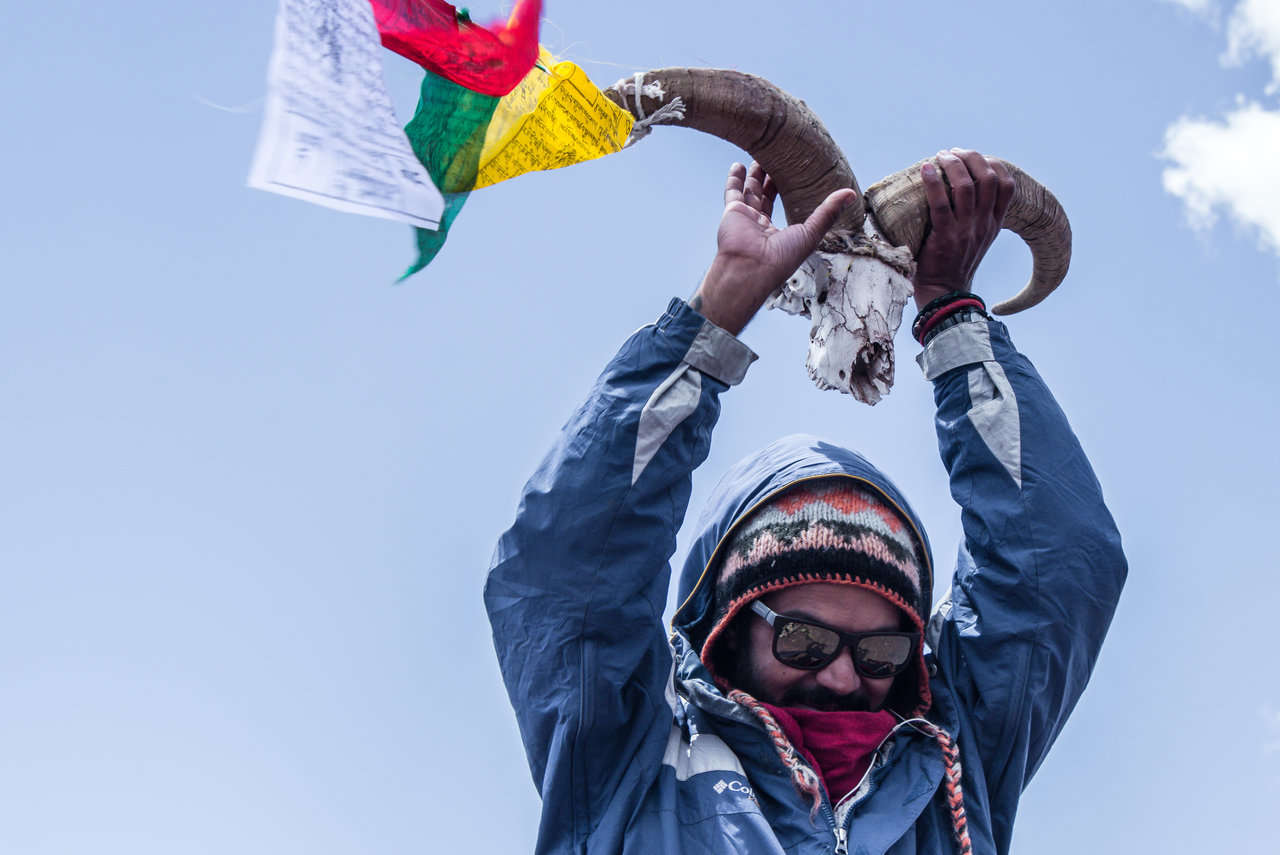
Related Tours
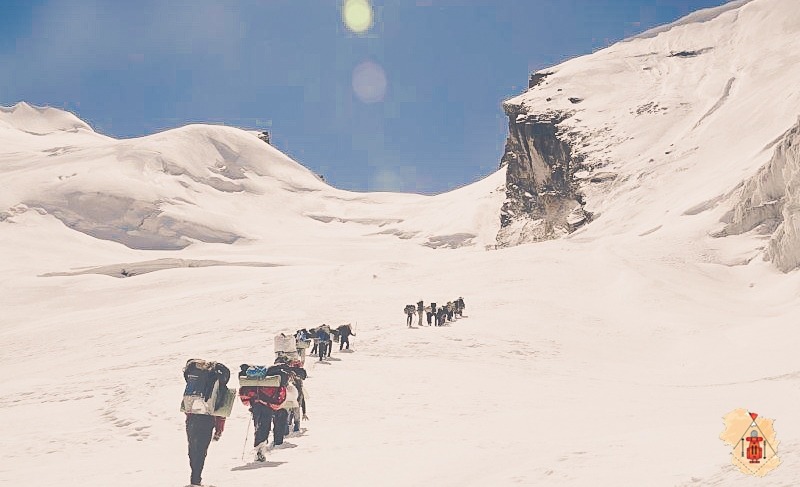
Auden's Col Trek
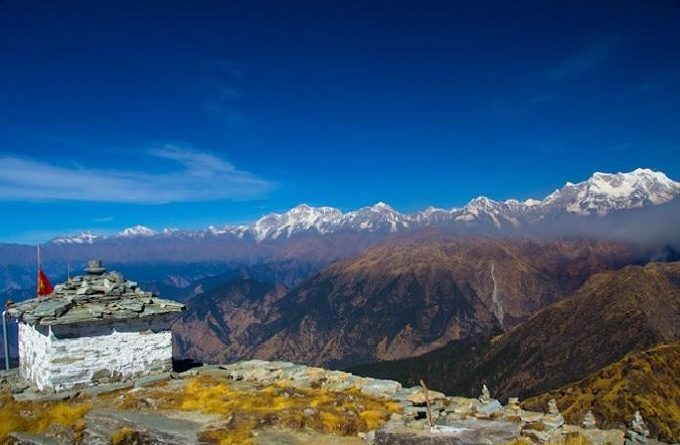
Deoriatal Chandrashila Trek
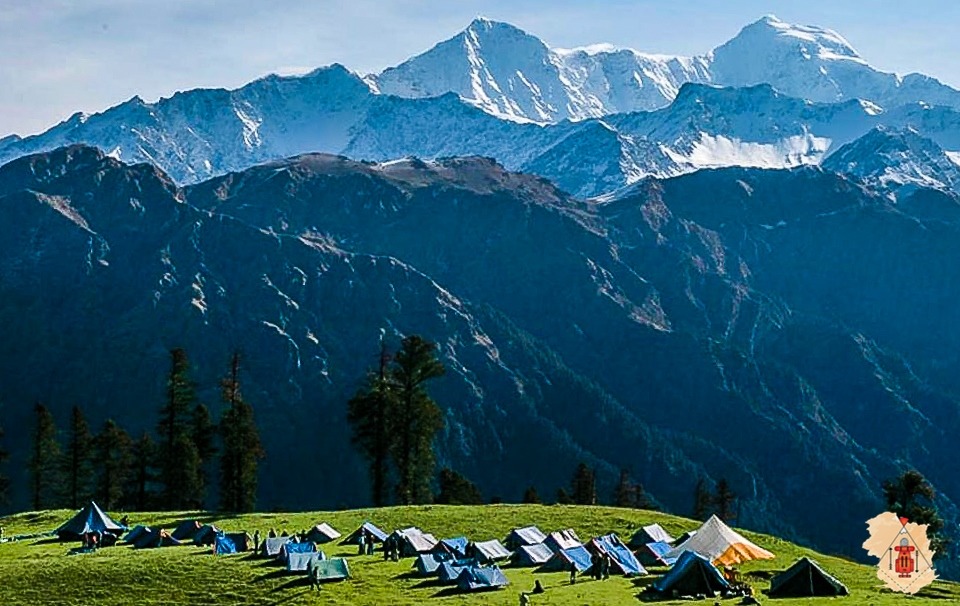
Dodital - Darwa Pass Trek
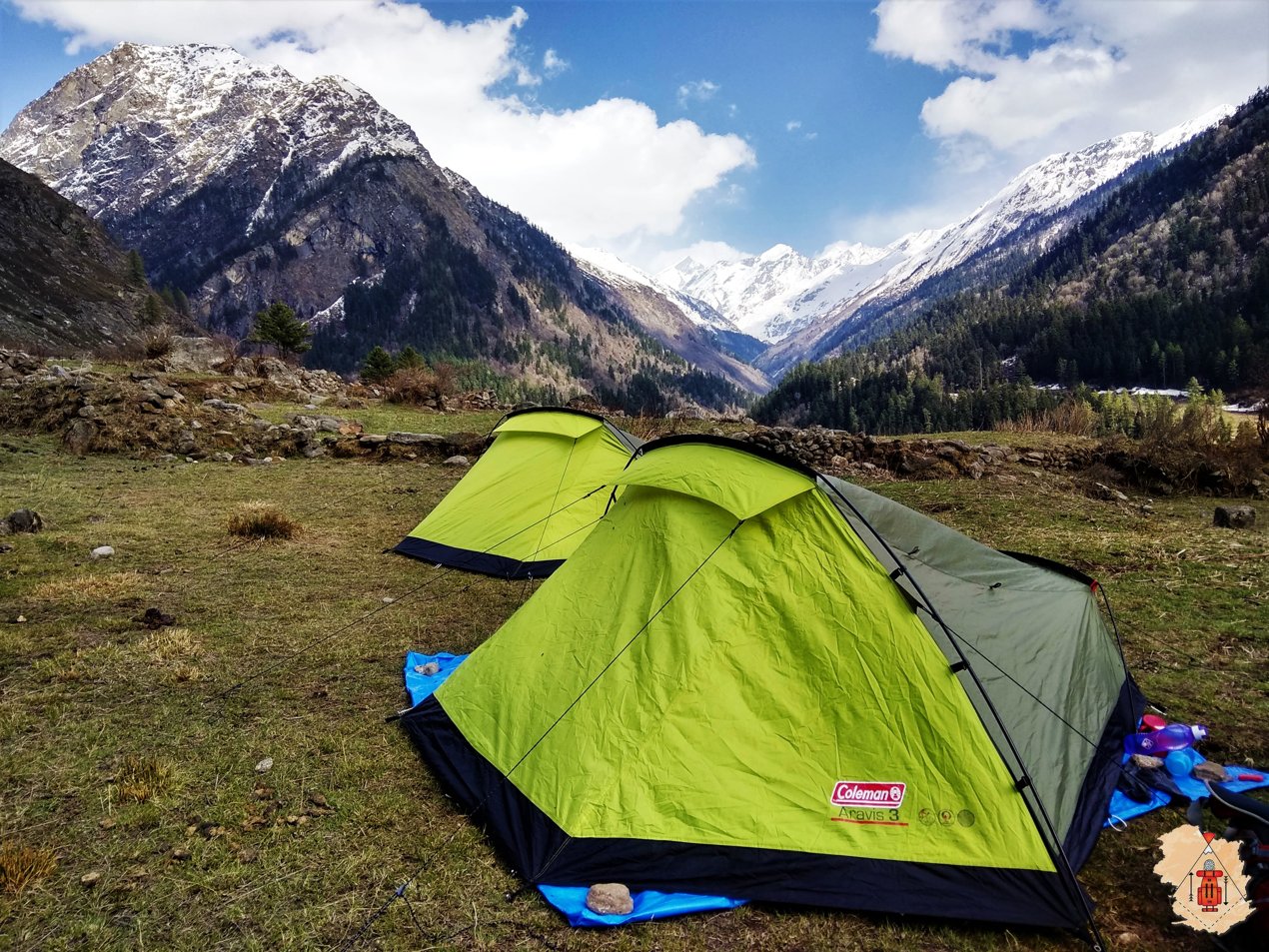
Har Ki Dun Trek
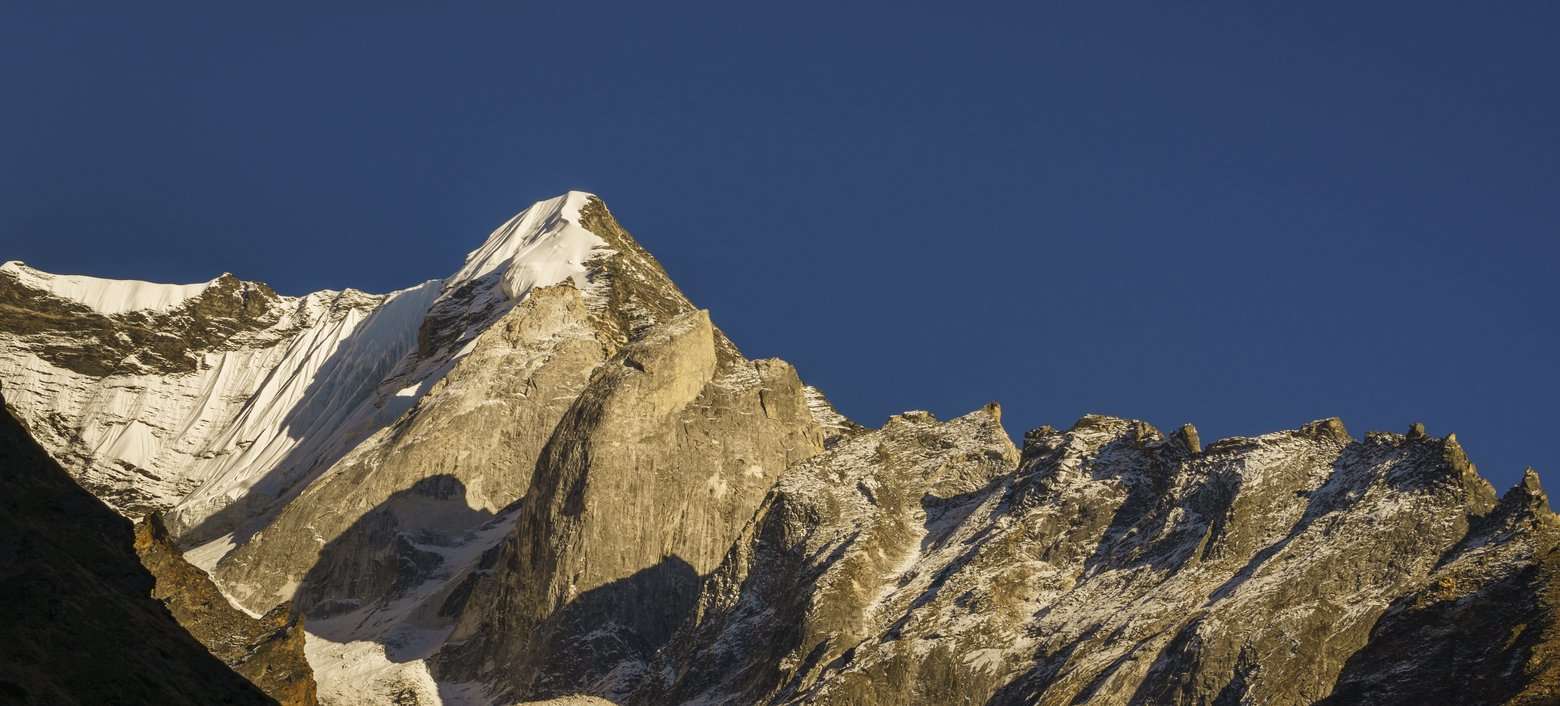
Kedartal Trek
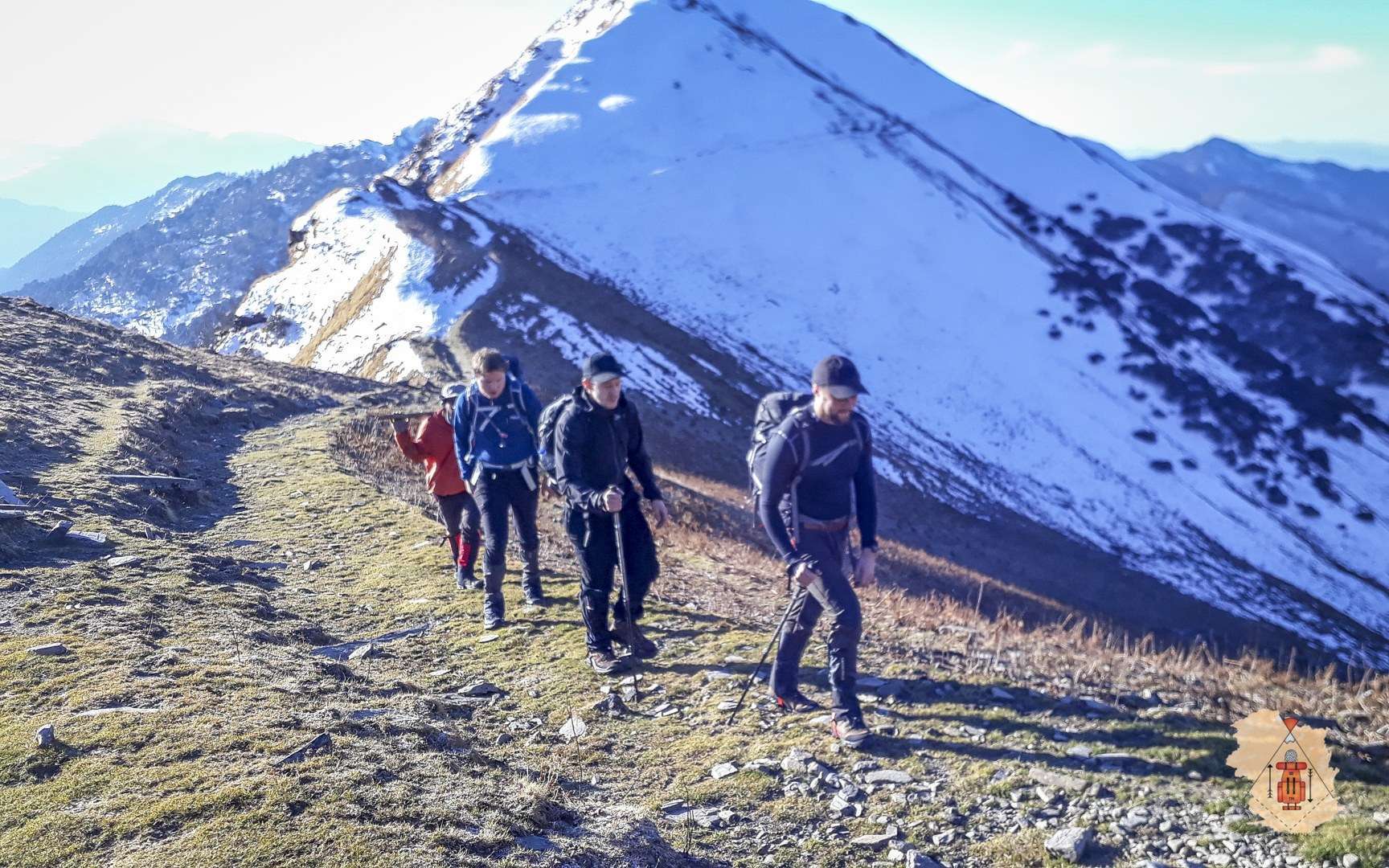
Kuari Pass Trek
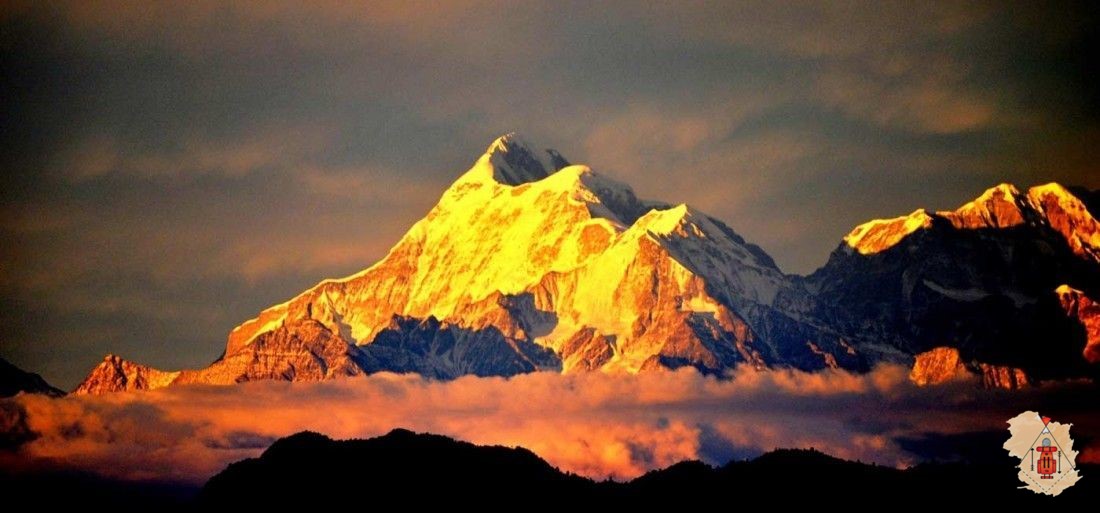
Nanda Devi Base Camp Trek
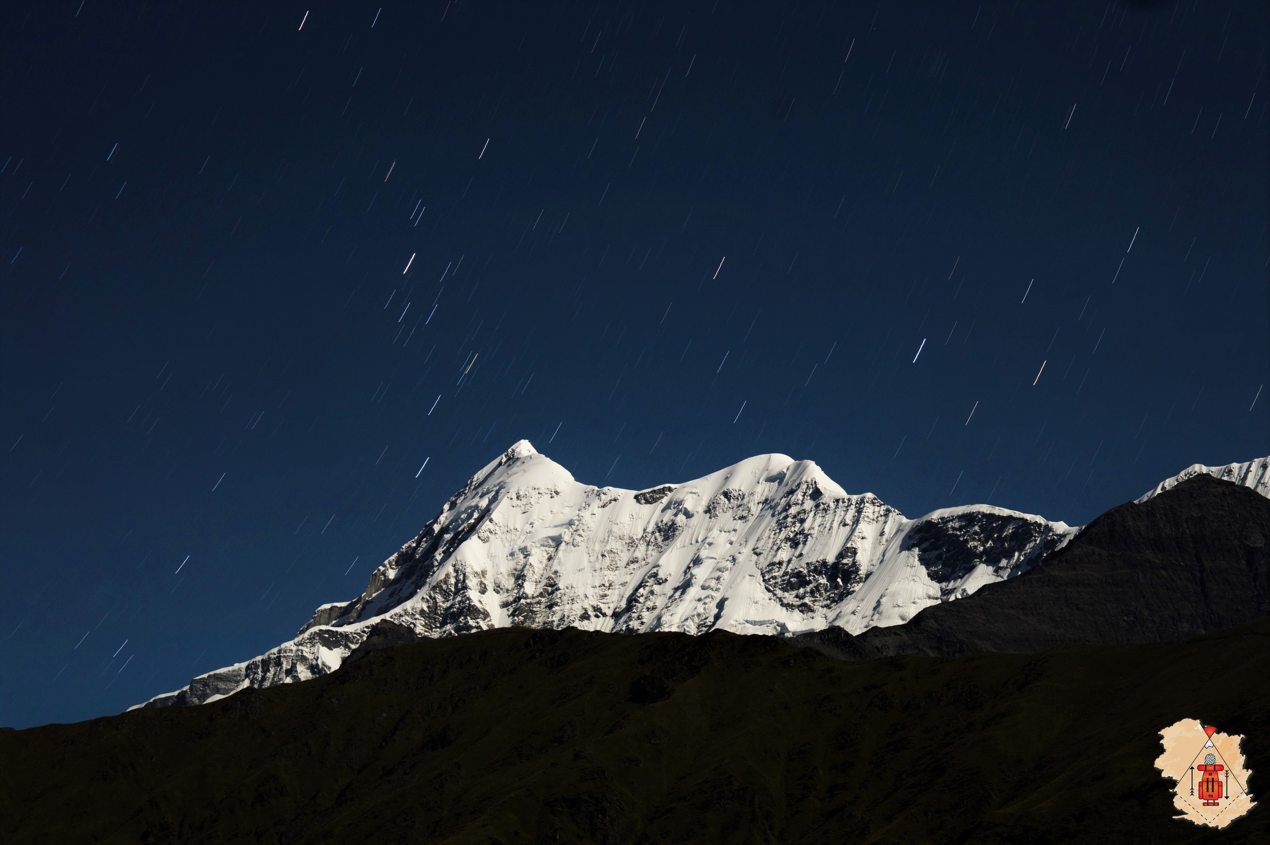
Roopkund Trek
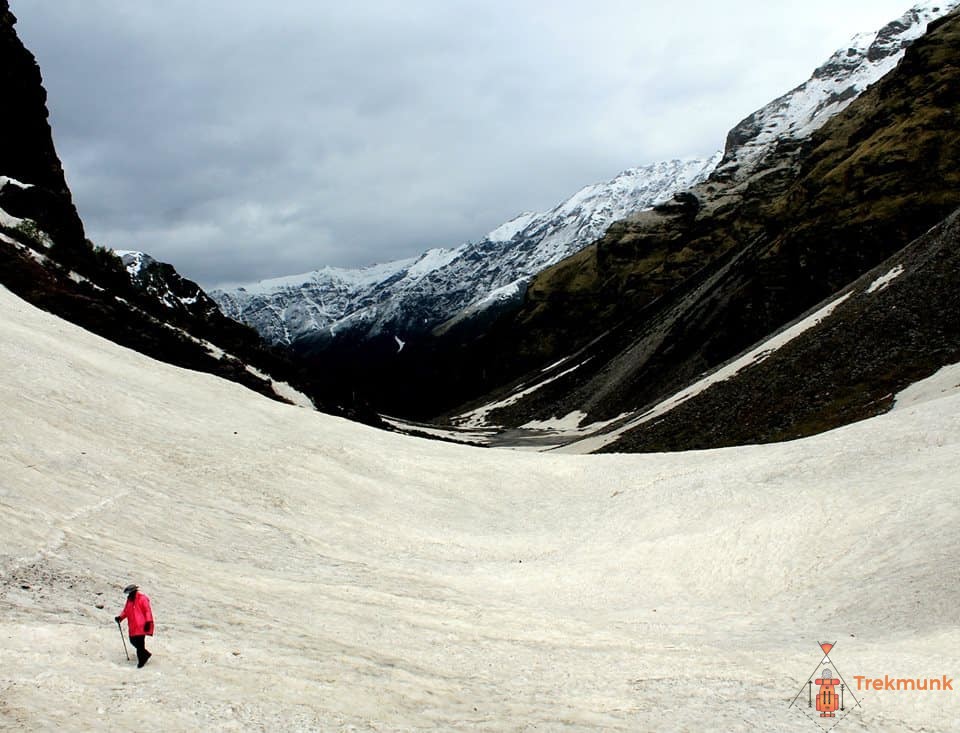
Rupin Pass Trek
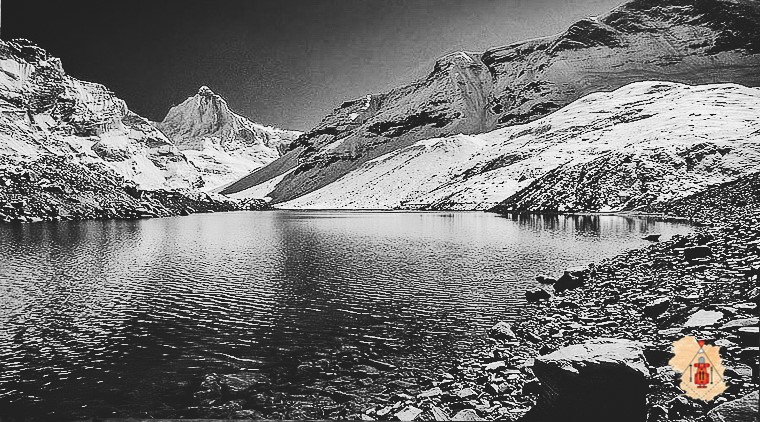
Satopanth Lake Trek
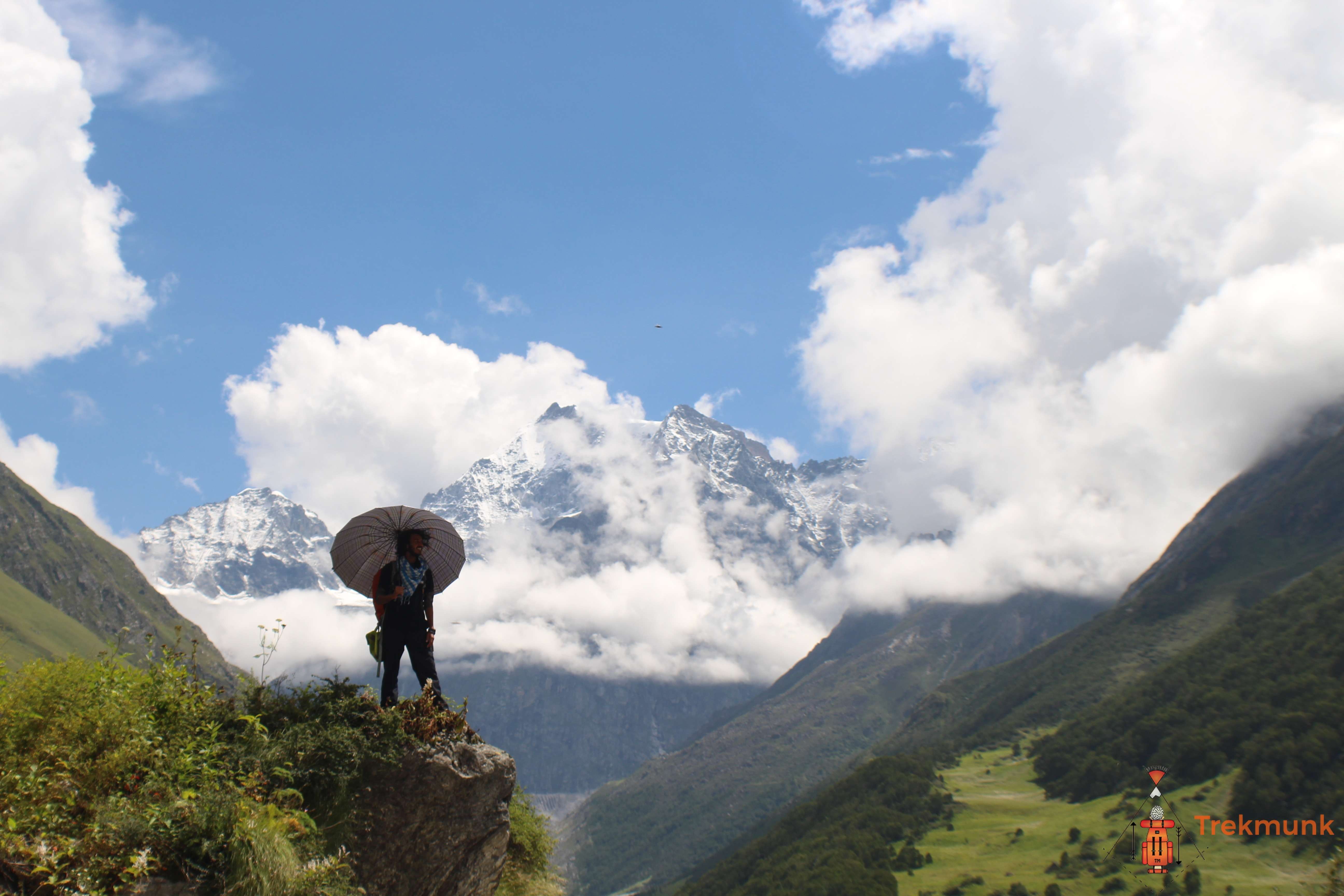
Valley of Flowers Trek

"Trekmunk is changing the indian trekking industry"
"10 Most Promising Adventure Sporting and Trekking Companies - 2020"

" Things you do for the Passion for Travel"
Hello there, How can we help you ?
Timing: 10 am to 6 pm IST (GMT +5:30)
Whats App Us
- Dates & Price

IMAGES
VIDEO
COMMENTS
Gaumukh Trek is a 46 km trek hiked over 6 days (8 days including the drive to and from the trek,) in the Greater Himalayas. It lies in the state of Uttarakhand and begins and ends at the pilgrim town of Gangotri.
Trek for around 6 to 7 hours covering 14 km to reach Gangotri. You will enter again in the Gangotri National Park, with the valley slowly closing behind you. Watch out for the rockfall section once again and you can catch upstreams and waterfalls to refill your water bottle.
The best time to trek Gaumukh would be from Mid April to June and then again from September to early November. Gangotri remains closed from late November to March so a visit in these months is not possible at all. The risk of rain would make the trek and journey tough to execute in July and August.
Mid-April to June and September to November is the best time to go for the Gangotri Glacier Trek. The weather is neither too cold nor too much of rainfall. Hence, not dangerous to trek. Summer months are the most suitable for the Gangotri Glacier Trek. Skies are clear, and sun shines the brightest.
Day 1: Drive from Rishikesh to Gangotri (~ 3100 m/10170 ft) – 260 kms – 10 to 11 hours drive Our journey begins at 6:30 AM. Then we drive to Gangotri along the river bank of river Ganga (Bhagirathi) and in the mid-way visit Hot spring and take a sulphur bath in Gangnani.
Itinerary. Day 1: Reach Gangotri from Dehradun. Drive Distance: 245 km. Drive Time: 9-10 hours. Altitude: 10,300 ft. The journey starts from Dehradun, where you can reach the spot via flight, bus, or train.
The trek from Gangotri to Chirbasa Camp typically takes around 4-6 hours, depending on your pace, trail conditions, and stops along the way. It’s advisable to start early in the morning to make the most of daylight hours and to reach Chirbasa Camp before nightfall.
Best time to visit Gangotri: When to visit Gangotri? It depends on what you want to do. If you want to see the temple and the rituals, go in summer (April-June) or autumn (September to November). But be ready for crowds and high prices. If you want to trek to the glacier and beyond, go in post-monsoon or pre-monsoon.
Itinerary. Trek Map. Cost Inclusions. Things To Carry. How To Reach. Photos. Trek Fitness. Reviews. Gaumukh Tapovan Trek. The Gaumukh Tapovan Trek stands out as a unique journey through the majestic Himalayas, celebrated for its spiritual significance and unparalleled natural beauty.
Overview. Bringing passion, spirituality, and adrenaline in one single trek is a menacing combination, and the mesmerizing Gaumukh Tapovan trek promises much more than that! The trek cuts through Gaumukh, the source of the river Ganga which can be seen cascading down the snout of the Gangotri glacier.